
Admin
-
Posts
7,449 -
Joined
-
Last visited
Content Type
Profiles
Forums
Events
Store
Gallery
Community Map
Posts posted by Admin
-
-
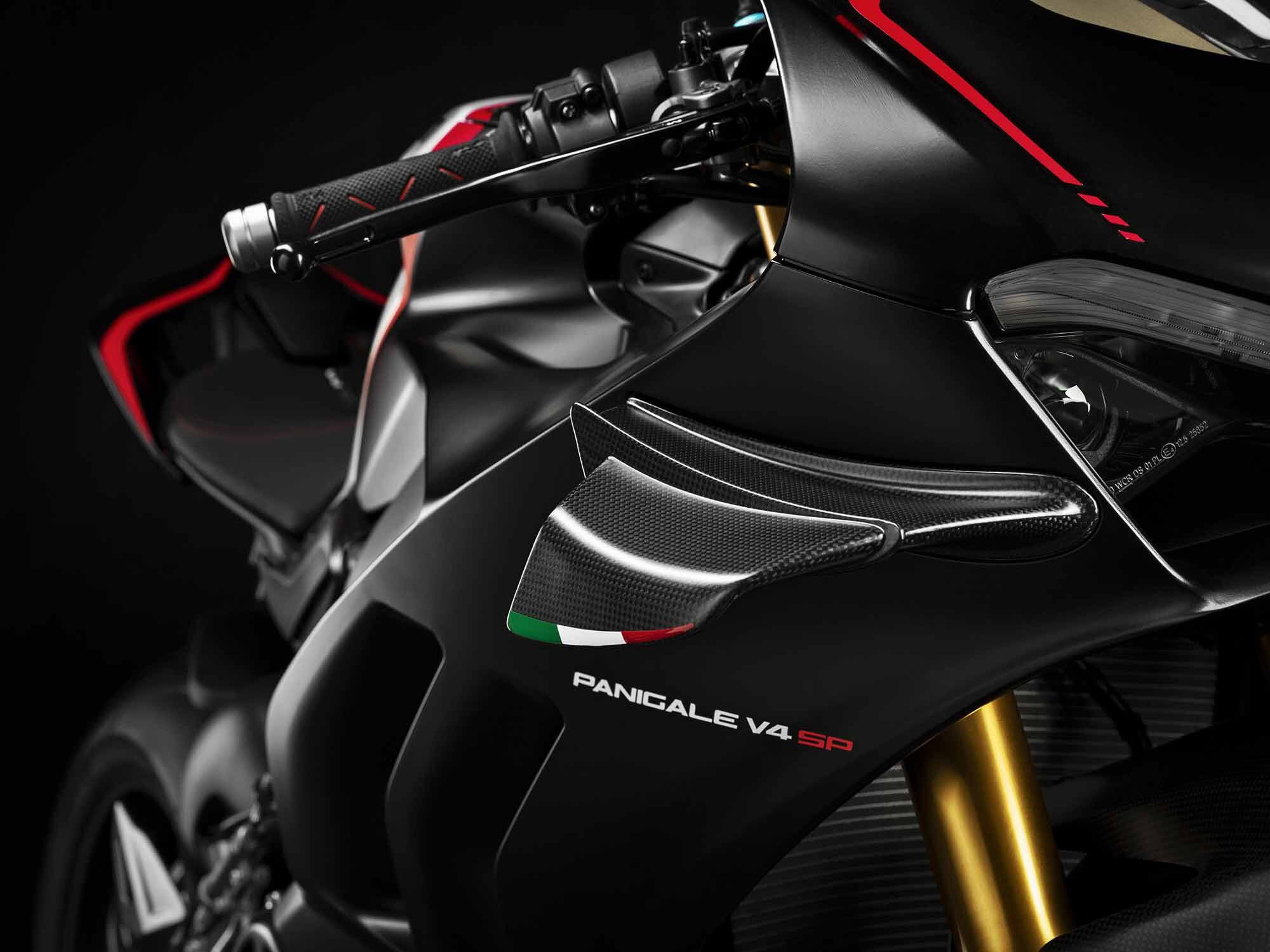
The 2021 Ducati Panigale V4 SP. (Ducati /) Before the “R”—first introduced on the 748R in 2000—came to designate homologation-spec superbikes from Borgo Panigale, Ducati used the SP (Sport Production) and then SPS letters for the job. Not since 2012 has a Ducati superbike carried those two letters, so rife with meaning for Ducatisti. Until now. Hail the 2021 Ducati Panigale V4 SP.
The SP does not replace the Panigale V4 R as the homologation-spec superbike, and is in fact $3,000 less expensive at $37,000. It’s basically a Panigale S (in respect to engine and chassis) with elements of the Panigale V4 R and the Superleggera thrown in. Each bike is individually numbered but not limited in quantity.
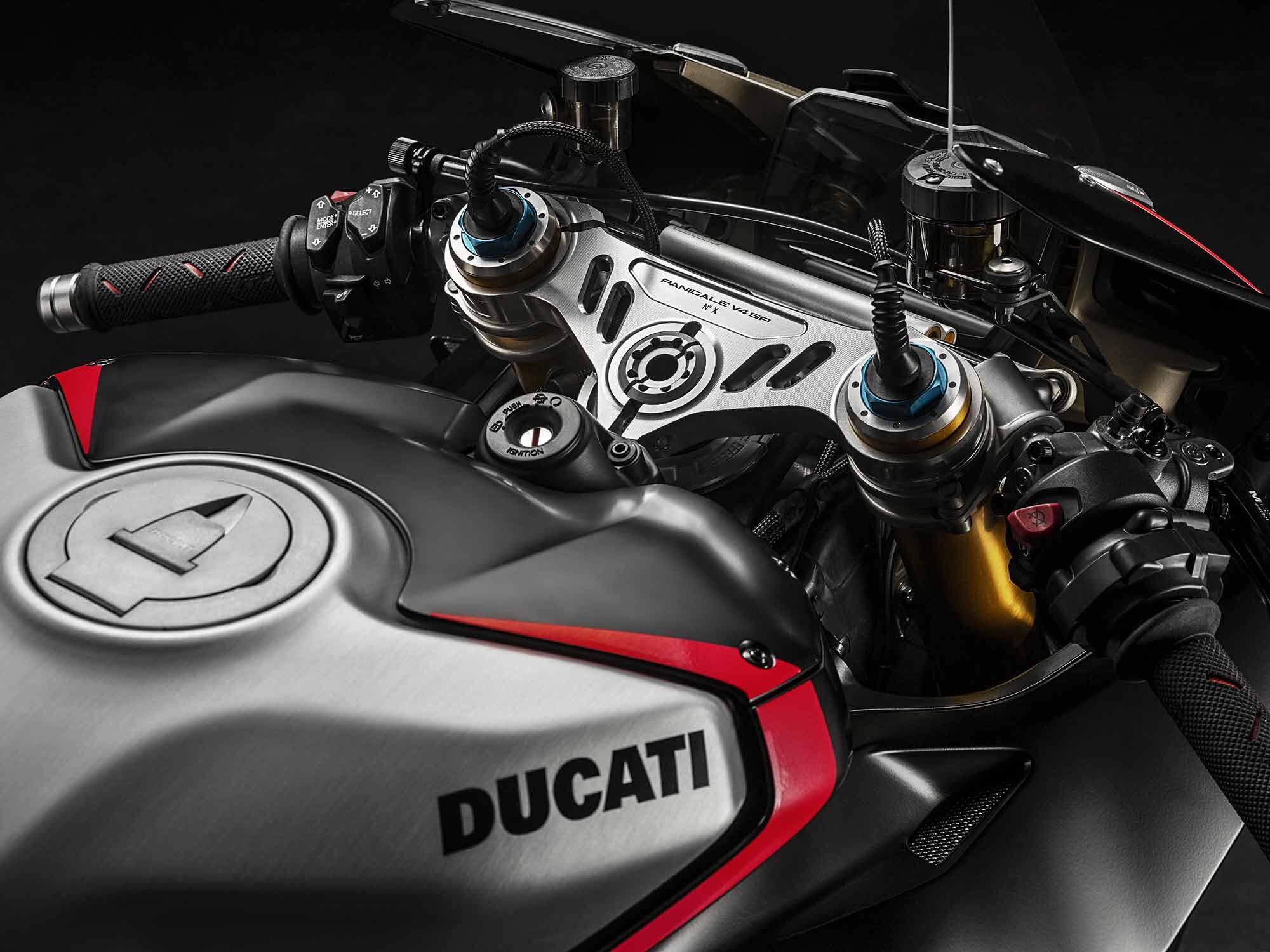
Billet triple clamp, individually numbered for your gratification. (Ducati /) The SP uses the same 1,103cc Desmosedici Stradale engine (now in Euro 5 guise) as the Panigale V4 base and S models, delivering a claimed 214 hp at 13,000 rpm and 91.5 pound-feet of torque at 9,500 rpm. However, like the V4 R and Superleggera, the SP has an STM EVO-SBK dry clutch. The rhapsodic rattle and ssssss of a dry clutch in the background of the Desmosedici Stradale soundtrack is so, so right. There are many of us who simply haven’t outgrown our infatuation with heavy-ish clutch feel and that signature sound, so intrinsic to the enduring legacy of Borgo Panigale superbikes. We all have our weaknesses. An open carbon fiber clutch cover is part of a pack of track goodies, which also includes mirror deletes.
The SP also inherits the V4 S’s Öhlins NIX 30 fork, TTX 36 rear shock, and electronic steering damper. The inclusion of semi-active suspension hints that the SP is not designed for pro-level riders. It’s great stuff for mere mortals, mind you, but track gods can typically cut faster laps with dialed-in suspension of the conventional variety. You and I will happily take the electronic stuff for the sake of ease of adjustability and usefulness.
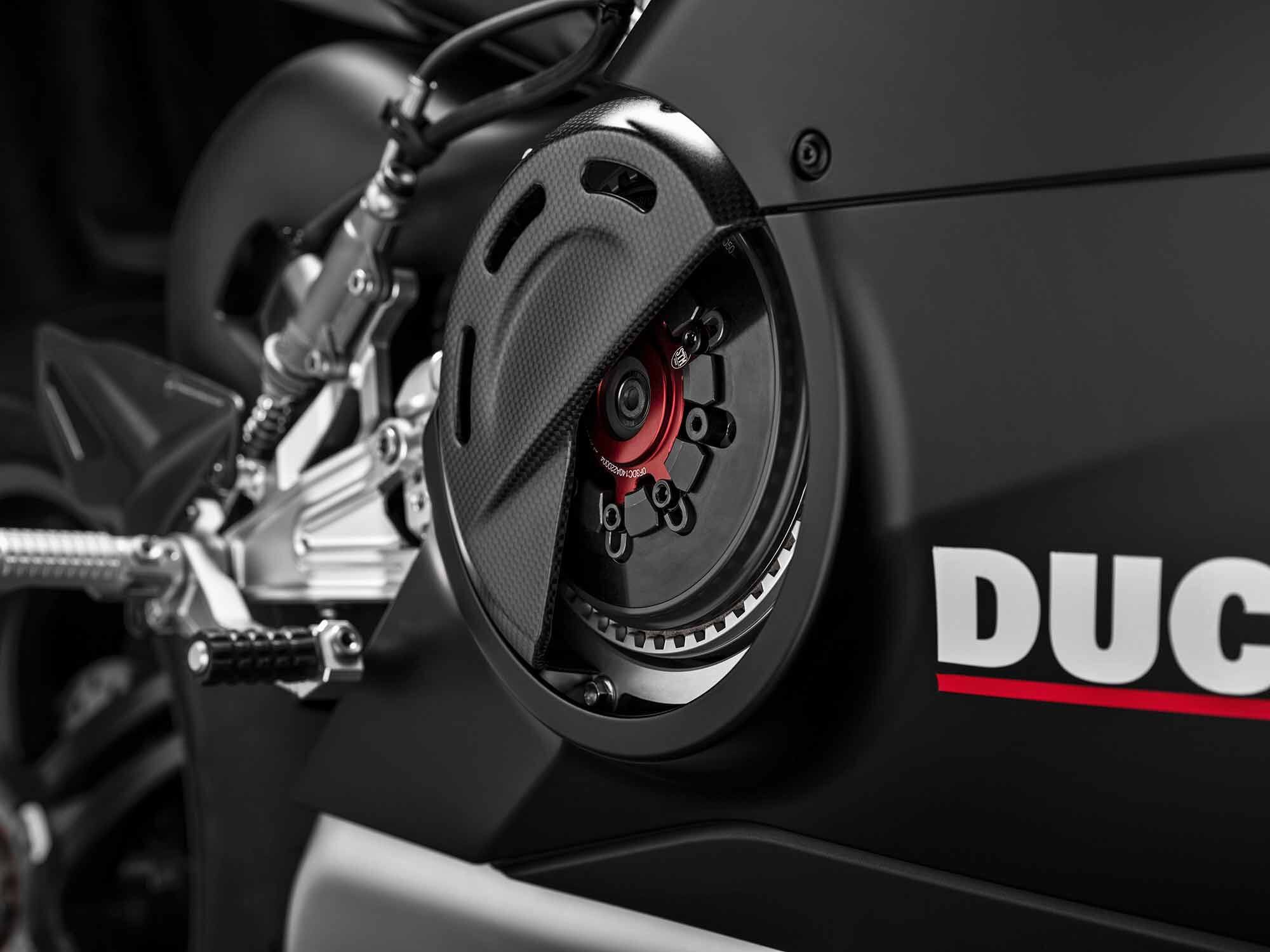
Dry clutch. Rubs hands together. Is it a bad time to cash out the old IRAs? (ANDREA SOTTANA/) Also from the Superleggera, the SP gets a smattering of carbon, most notably carbon fiber rims. The rims drop unsprung mass, decreasing the moment of inertia for quicker handling. Carbon fiber winglets and front mudguard are standard. It also inherits the Superleggera’s 330mm discs, Brembo Stylema R calipers, and remote adjusting device—that same little knob on the left grip one always see MotoGP riders fiddling with down the straights to adjust feel at the lever lost with the rise of hydraulic braking fluid temperature. Other trick goodies include an individually numbered billet top triple clamp, Rizoma billet footpegs with carbon fiber heel guards, and adjustable rear brake and gearshift levers.
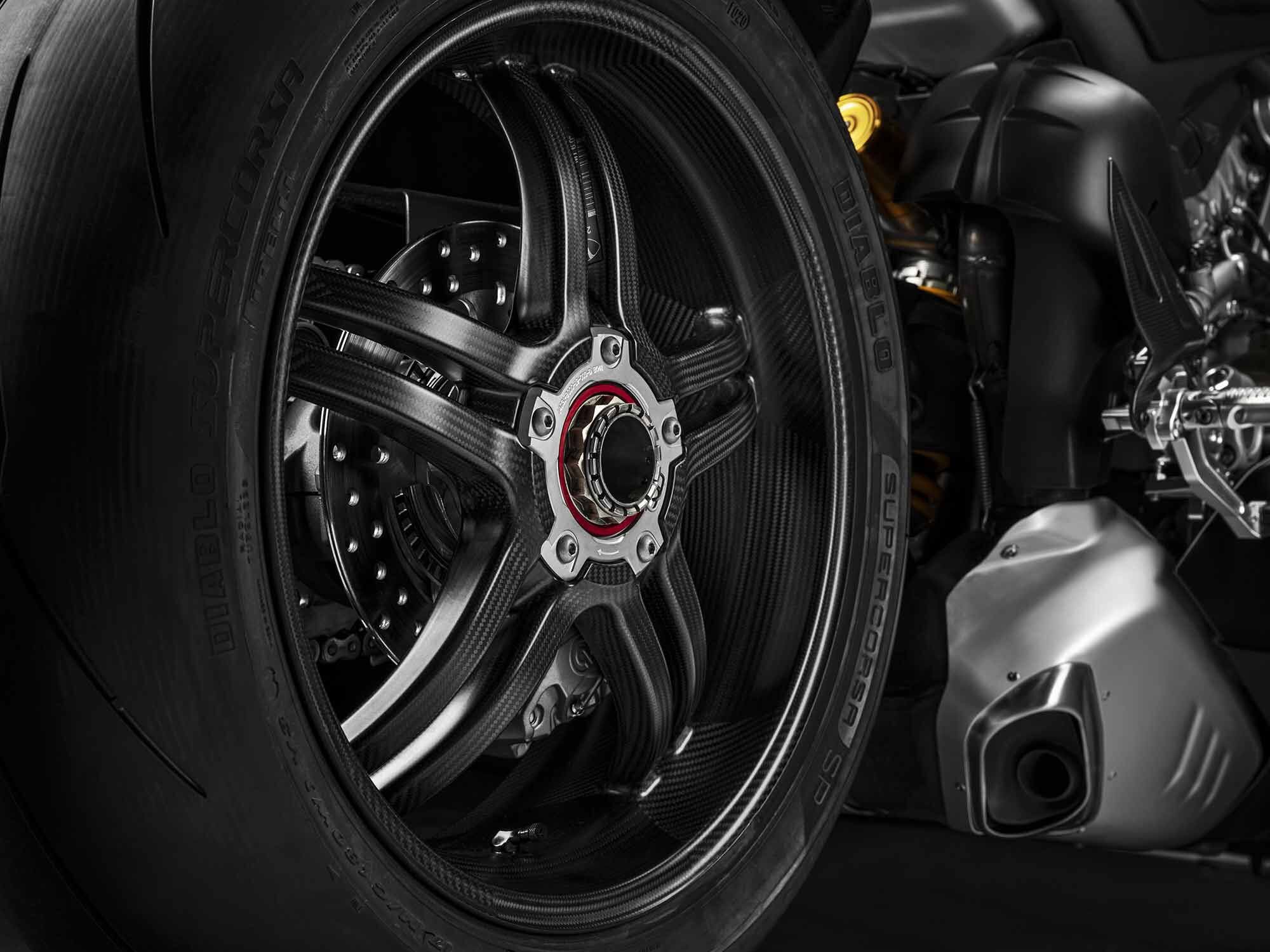
Carbon fiber rims from the Superleggera. (Ducati /) The styling package features a brushed aluminum tank and a murdered-out look inspired by Ducati Corse winter test livery.
Like the rest of the 2021 Panigale V4 lineup, the SP features some electronics updates, including Race A and Race B ride modes, the latter of which limits torque in the lower three gears to accommodate for low-grip conditions, or to help riders with less masterful throttle hands. The Panigale range also gets Ducati Traction Control Evoluzione 3 (DTC Evo 3), which further refines the traction control system. At corner exit, as the rider first touches the throttle, the system adjusts torque to compensate for the otherwise abrupt acceleration of the crankshaft that transfers an extreme amount of energy to the drive chain; when that force takes up the slack it can cause rear wheel slip. The new system makes the on-throttle transition smoother for the rider and can improve corner exit speed.
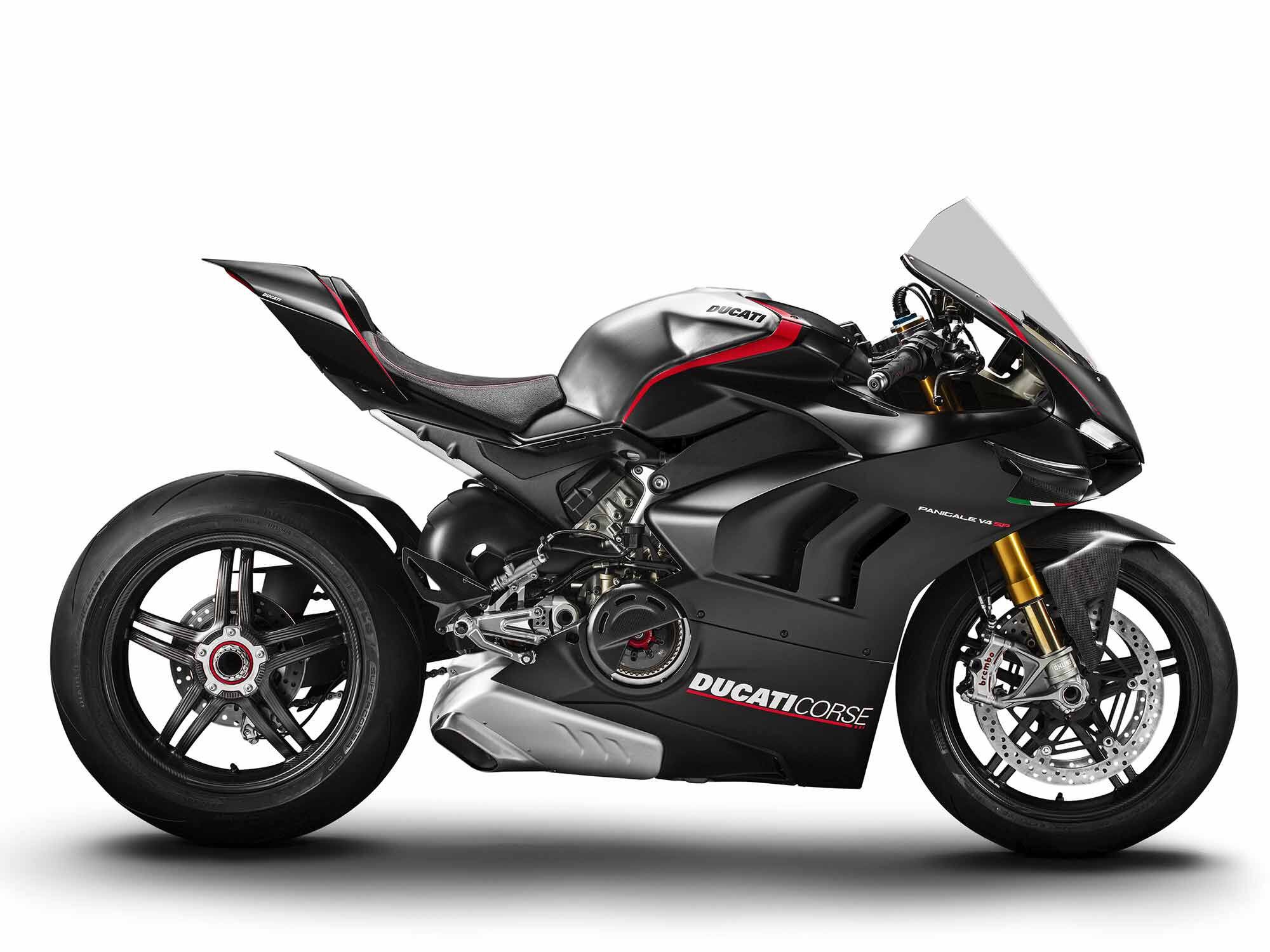
While purists will assert top-end Ducatis should be red (they’d be right), there is something very fetching about the SP’s color scheme. (Ducati /) In sum, the Panigale V4 SP is a V4 S with fancy paint; a dry clutch; carbon wheels and components; and super-trick, up-spec Brembo brakes. It will be available at your local Ducati dealer in March.
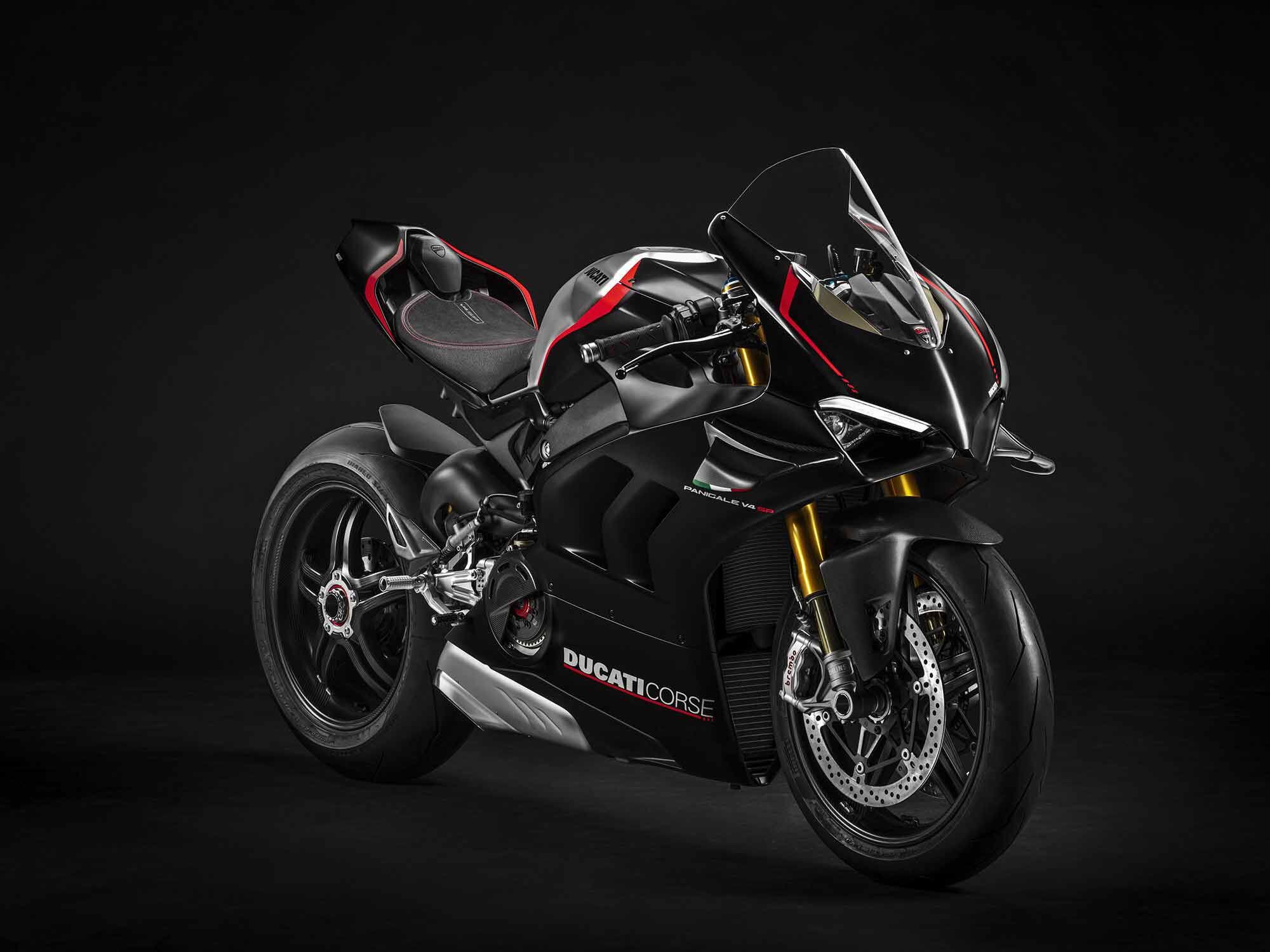
Take one last look before you click away. (Ducati /) Let’s face it, one way to make a bike feel special is to make it individually numbered. Throw in some carbon fiber, add some trick parts, grace it with historic letters, and everyone’s happy. Is the world a better place for having another ultra-expensive superbike? Probably not. But it doesn’t hurt. And if you’re a Ducatisti, it’s another reason to open a glass of montepulciano and reminisce about all those SP/SPS racebikes that defined decades of daydreams. May the sound of dry clutches haunt your dreams tonight.
-
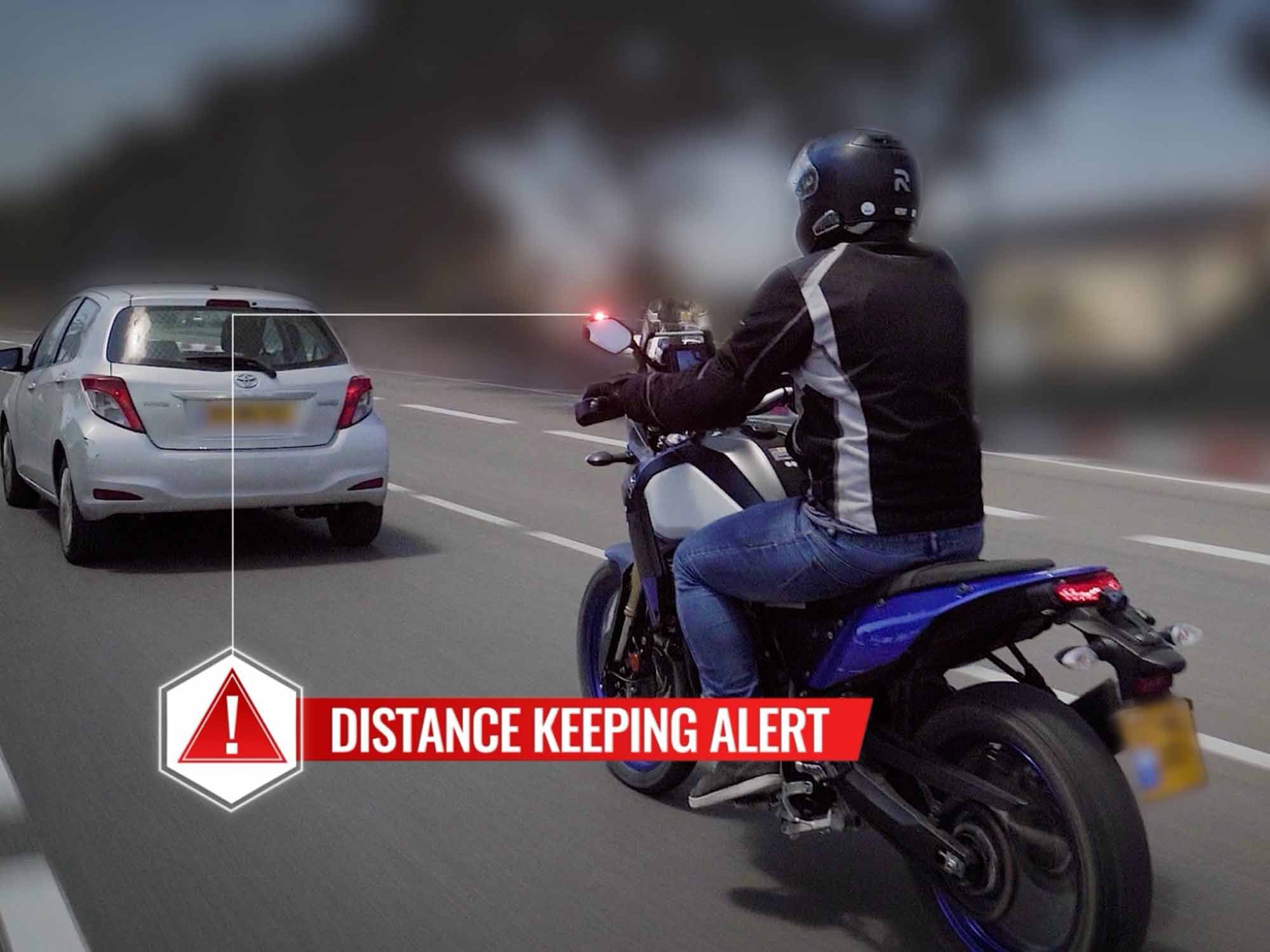
Ride Vision 1 is an AI-based system that can alert riders to impending dangers like nearby vehicles and even possible collisions. (Ride Vision/) A constant stream of technological innovation is par for the course in the automotive world, but in the motorcycling universe, we all know things have always moved a bit more slowly. Computerized, sensor-aided Advanced Driver Assistance Systems (ADAS) have been available on cars for years now, but the challenges of designing similar tech for motorcycles—accounting for the bike’s yaw (tilt), rider behavior, and faster closing speeds—have made recognizing danger on two wheels a massively more complicated task. But there has been progress of late with ARAS (Advanced Rider Assistance Systems) for motorcycles, from both smaller operators like Damon (which calls it Advanced Warning System for Motorcycles or AWSM) as well as major players like Bosch, who is collaborating with BMW, Ducati, and KTM (providing components for Ducati’s Multistrada, BMW’s Active Cruise Control, and possibly the KTM 1290 Super Adventure) to claim a stake of the bike safety space with radar/camera/sensor arrangements. But so far those big-name products are bike-specific and narrowly focused, so Ride Vision, a small Israel-based startup operation, is looking to get a foot in the door with a new system that’s simpler, less expensive, and more widely available. The company has just launched its AI-based motorcycle safety alert system internationally, though it veers from established name tags by calling it “collision-aversion technology (CAT).”
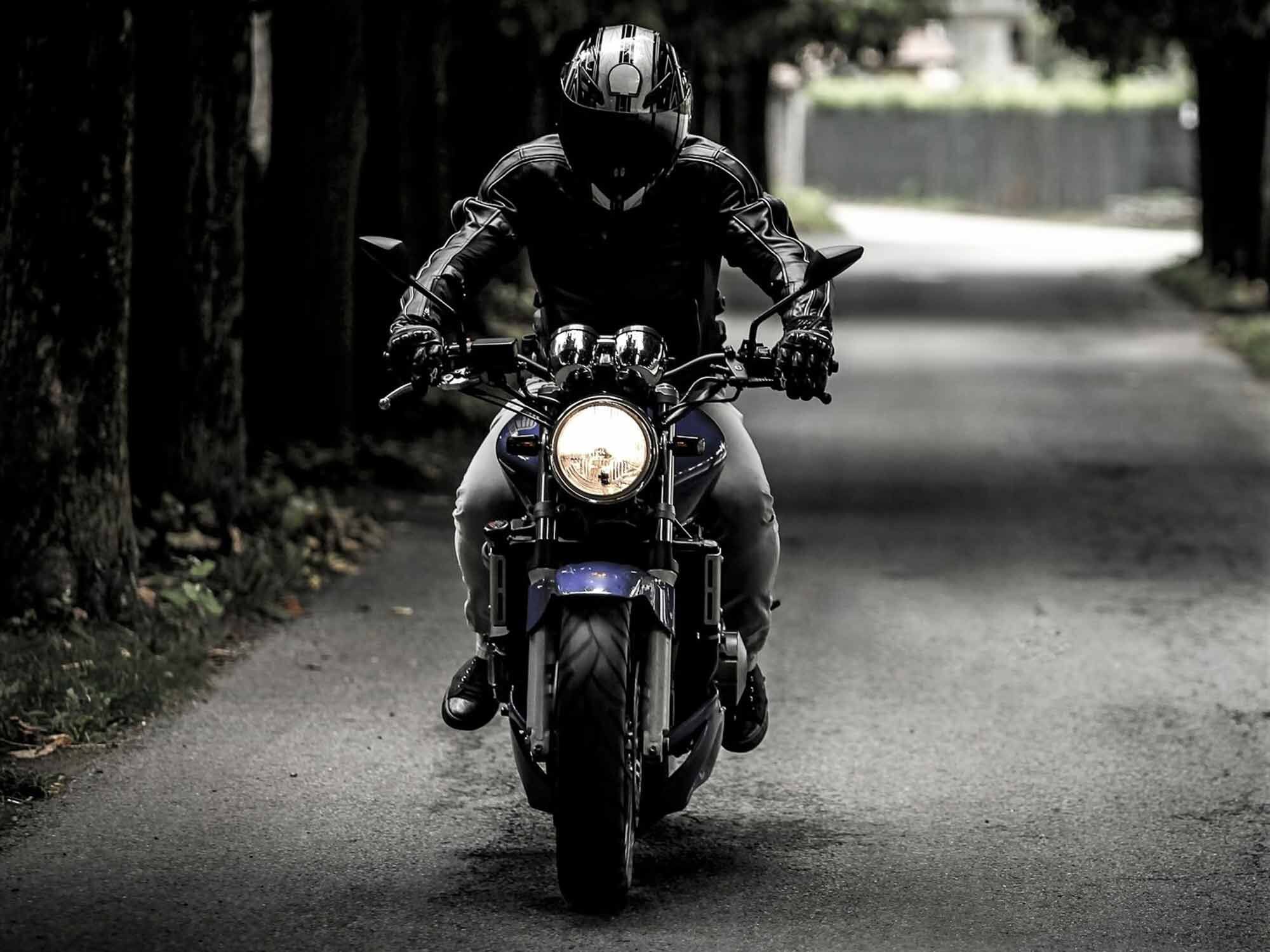
Ride Vision says its new system can be fitted to any motorcycle, new or used. (Splitshire from Pixabay/) So just how’s the new system, dubbed Ride Vision 1, different from similarly intended and designed systems from the likes of Bosch and Damon? In a few subtle ways, but from what we can tell, it’s mostly because the RV1 setup uses standard cameras enhanced by software rather than pricier high-tech equipment, making it accessible for all riders and bike brands. The Ride Vision 1 wide-angle cameras survey the environment around the bike and tap into a system employing predictive algorithms to help riders make critical decisions without being overly distracting. Ride Vision says it uses a combination of image-recognition and other AI-based algorithms to correct for a motorcycle’s positional changes and even rider behavior. And the system is unique for the fact that it can be installed on any kind of two-wheeled vehicle, regardless of the model or manufacturer, with a dedicated app that connects the system to the rider’s mobile device.
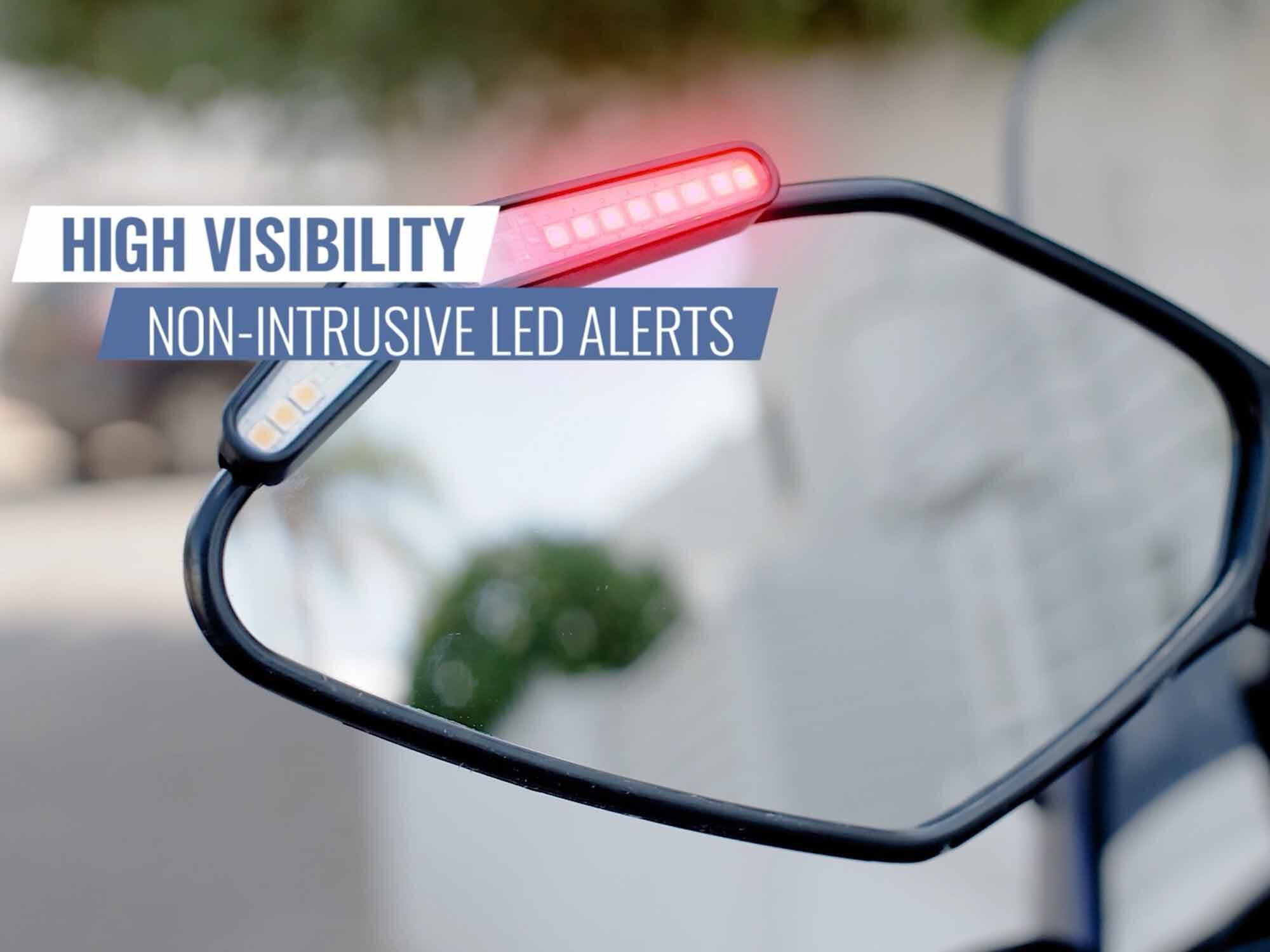
Mirror-mounted LEDs give you the heads-up if there’s untoward vehicle action nearby. (Ride Vision /) A typical Ride Vision setup will include two small cameras, one mounted on the front and one on the rear of the bike. Because the cameras are wide angle—current prototypes claim 175 degrees—the two devices provide nearly 360 degrees of vision when combined. For the rider alerts, plastic extensions mounted atop the motorcycle’s left and right mirrors have LED lights that’ll flash different colors and patterns depending on the detected threat, similar to auto ADAS currently in use. For instance, if a forward collision is detected, both mirror extensions will blink red, but if the collision is determined to be coming from the right, just the right mirror blinks. The alerts are customizable, and the Ride Vision system can also send audio cues to a rider wearing a Bluetooth-connected helmet.
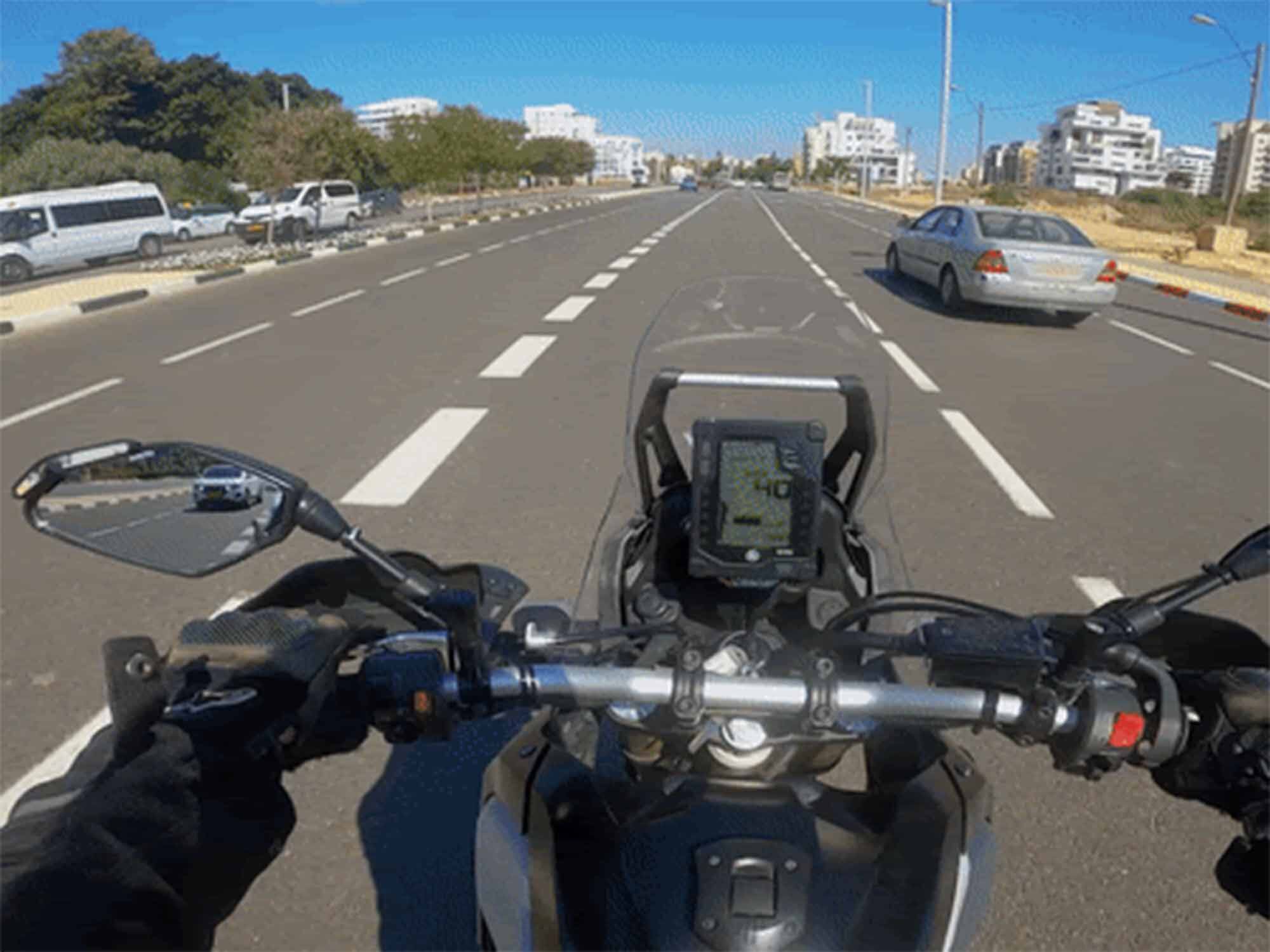
Blind spot detection/overtake alerts can be customized to the rider’s preference. (Ride Vision/) The weatherproof system can provide collision warnings by taking into account speed, conditions, and time to impact, monitor distance to the vehicle in front of you, and offer blind spot as well as overtake alerts via the mirror-mounted indicators. The system also offers data recording within the app, so users can access ride summaries containing distance, alerts, and speed data, all of which can be exported for personal use (Ride Vision says the data is stored only on the mobile device and not being shared). A main compact ECU that stores the patented algorithms also resides onboard, with power for the entire system coming from the motorcycle’s battery.
RELATED: Riding Damon’s Shape-Shifting Halo Motorcycle
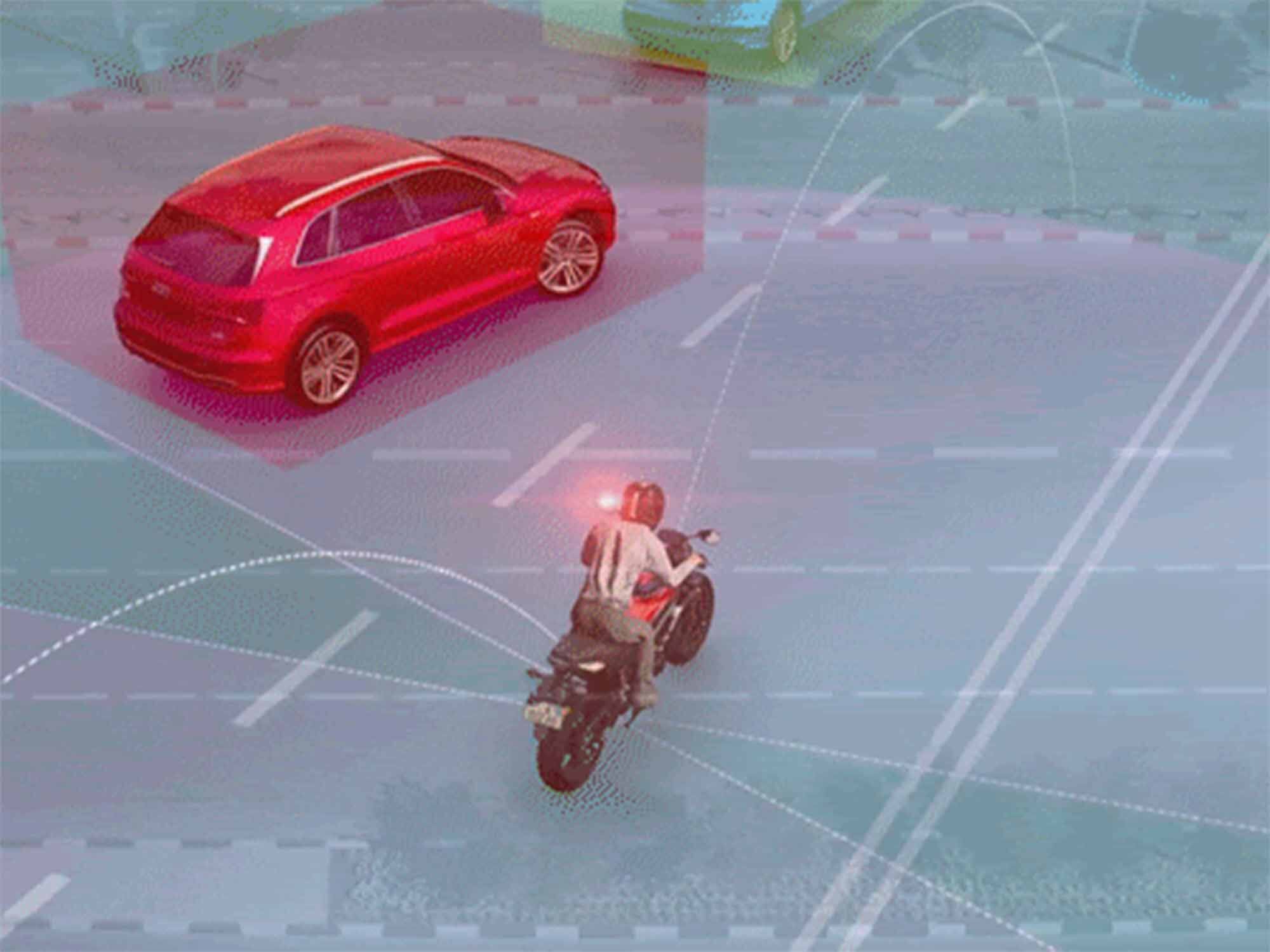
Predictive algorithms sense vehicle movement and proximity, as when clueless drivers drift into your lane. (Ride Vision/) Ride Vision says its system is the first of its kind, though there are some familiar elements at play here. As for KTM and Ducati, Ride Vision CEO Uri Lavi says, “…their systems…can identify a…vehicle getting too close, but can’t tell if that vehicle is moving in a way that may lead to a collision.” The tech is also limited to just the big brand’s own models, and Ride Vision unquestionably has a huge opportunity for the fact that its system can be installed on any new or used motorcycle. And since Ride Vision is a technology platform, periodical upgrades will come online, featuring new safety alerts and things like offering an Emergency Call option following an accident, Forward-Side Collision Alerts, Rear Collision Alerts, and even the ability to create videos using embedded riding data to share with friends.
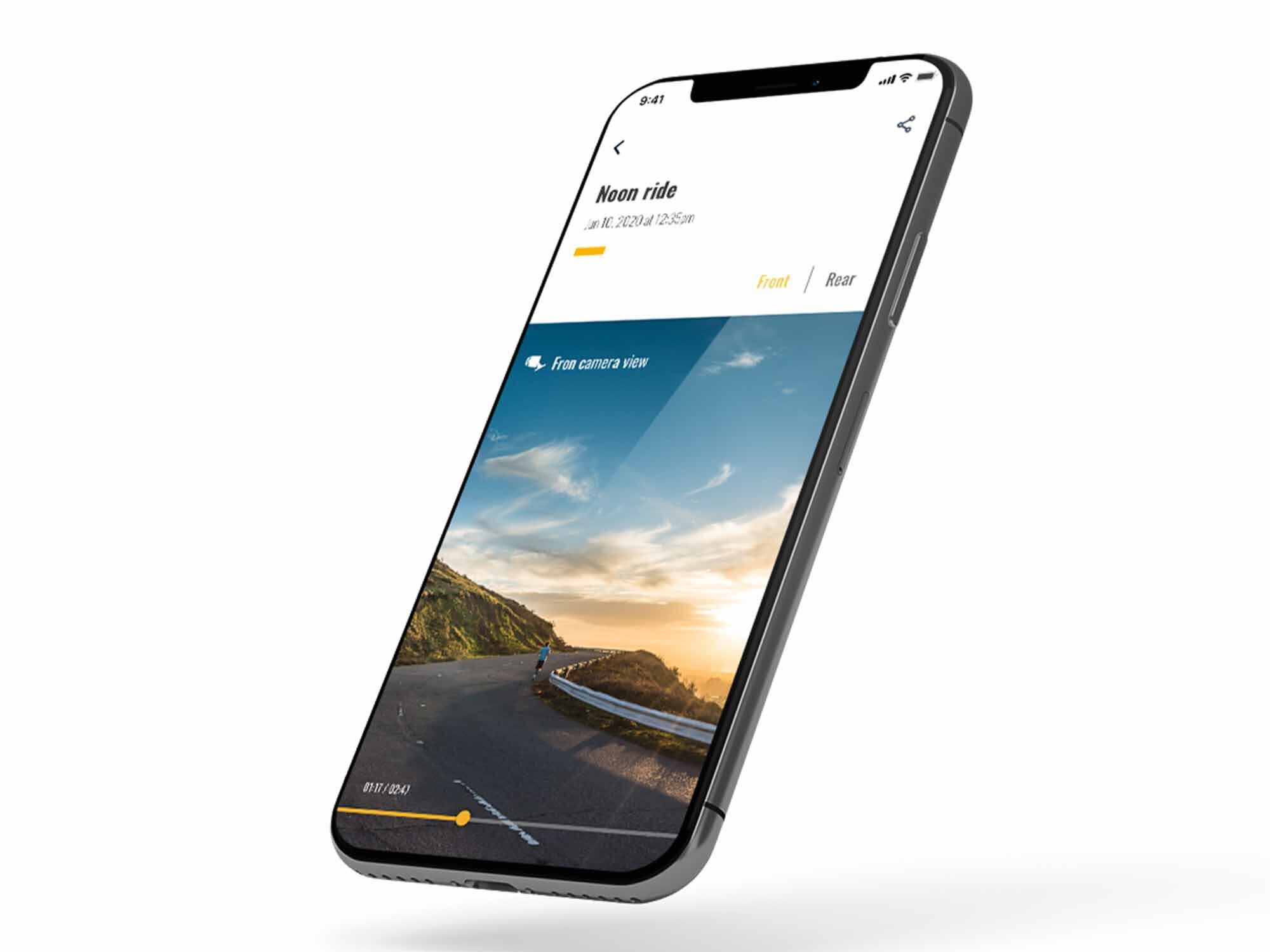
A companion app lets you access ride summaries and customize alerts. (Ride Vision/) Judging by the website, the Ride Vision 1 product is on sale now, though you’ll need to sign up before the company connects you with a retailer. Price isn’t mentioned, but we’ve heard numbers of approximately $350 for the hardware, with added monthly fees to use the smartphone app. The company’s products will be available in several European countries starting early 2021 with a similarly timed US launch date also in the works.
-
In addition to the updated Supersport 950 recently announced, Ducati has also unveiled a new member of the Panigale V4 family – the 2021 Panigale V4 SP. Essentially a Panigale V4 R but with the S model’s 1103cc engine, carbon fiber wheels, and electronic Öhlins suspension, the SP marks a return for the Sport Production initials after several years away.
Because of its 1103cc V4 engine, which isn’t legal for racing (at least not World Championship-level racing), Ducati is essentially calling this bike the ultimate track bike for those of us with no intentions of competing. Despite some tweaking to make it Euro5 compliant, the latest 1103cc, counter-rotating, V4 hasn’t lost any of its 214 horsepower or 91.1 lb-ft of torque, says Ducati, and all that power is now fed to the back tire via the latest edition of Ducati Traction Control – DTC3 – which the entire Panigale V4 range will receive.
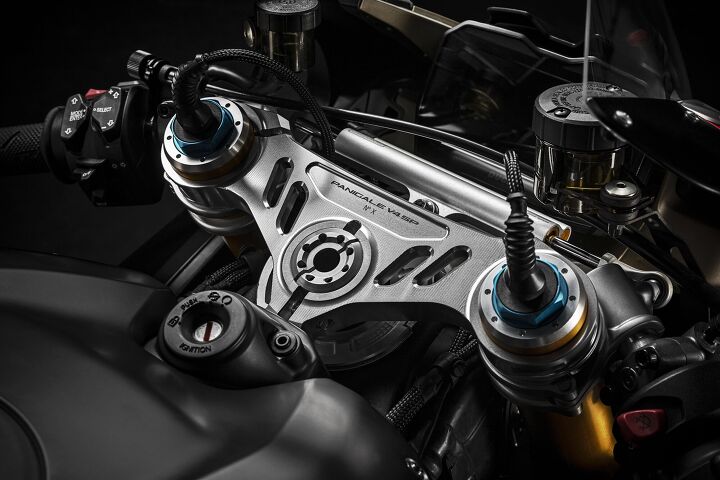
The Panigale V4 SP isn’t a limited edition model, but Ducati is still going to number each one on the bespoke top triple clamp.
The entire Panigale V4 lineup will also see a new Race Riding Mode, which is now split into two settings. Previously, on the 2020 Panigale V4, torque was reduced in the first three gears to make it easier to manage the throttle on corner exits. This mode still remains, but the new Race Riding Mode now gives you full power everywhere, meaning you’re in complete control once you twist the grip.
The SP carries over a lot of features from the Panigale V4 Superleggera, too, like the carbon fiber wheels (3.1 lbs lighter than the forged aluminum wheels on the S model), Brembo Stylema brake calipers (with drilled pistons for better cooling), RCS 19 master cylinder (with remote adjuster), dry clutch and the same 520-pitch chain for reduced parasitic drivetrain losses.
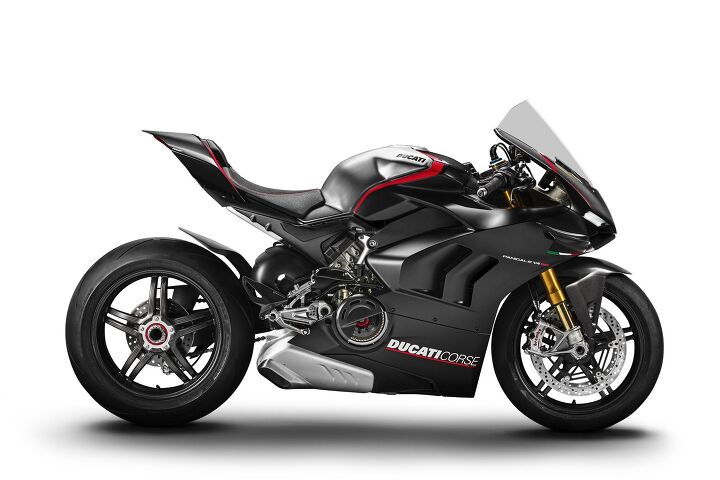
Carbon fiber wheels are a big standout for the SP model compared to the rest of the Panigale line (minus the Superleggera).
Along with the high-end components, it’s hard to ignore the sheer looks of the SP. The livery for the SP is inspired by the winter test schemes used by Ducati’s MotoGP and World Superbike teams, with some artistic flair by the Ducati Style Center. The fuel tank is in exposed aluminum, the fairings are matte black, and come with tasteful fluorescent red detailing. Carbon fiber components, such as the front mudguard and wings round out the package.
Like the Panigale V4 S, the SP version is also equipped with an Öhlins NIX-30 fork, Öhlins TTX36 rear shock absorber, and Öhlins steering damper controlled by the second generation Öhlins Smart EC 2.0 system. In our opinion, the analog version of this setup is better suited for track use, which this bike was created for, but the automatic adjustments from the electronic suspension will make street riding slightly less jarring.
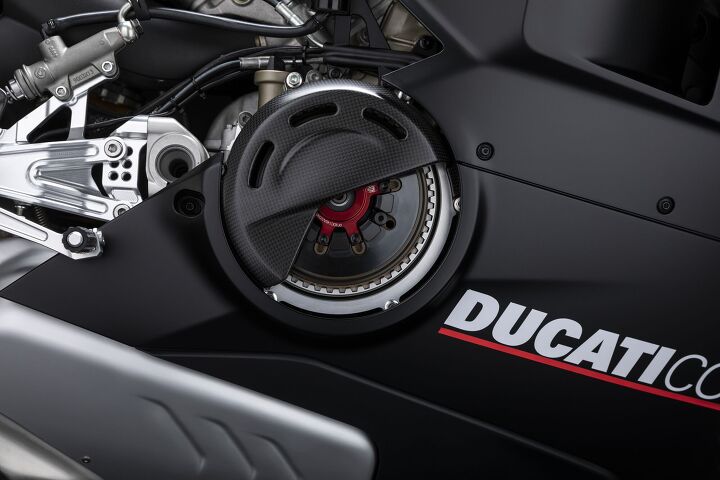
Is a Ducati superbike really a Ducati superbike if it doesn’t have a dry clutch? Note also the adjustable foot peg bracket.
The Panigale V4 SP is equipped with the Ducati Data Analyzer+ (DDA+) kit with GPS module. The Ducati Data Analyzer+ (DDA+) is a telemetry system, comparable to those used in racing competition, which consists of a device for data acquisition via CAN line, and analysis software for Windows and Mac PCs inspired by the professional applications.
The Panigale V4 and V4 S will be available in North American Ducati dealers starting in December, with the Panigale V4 SP estimated for March 2021. Pricing for the Panigale V4 SP in the United States will begin at an MSRP of $37,000. Pricing for the Panigale V4 in the United States will be at a starting MSRP of $22,295, with the “S” version at a starting MSRP of $28,695.
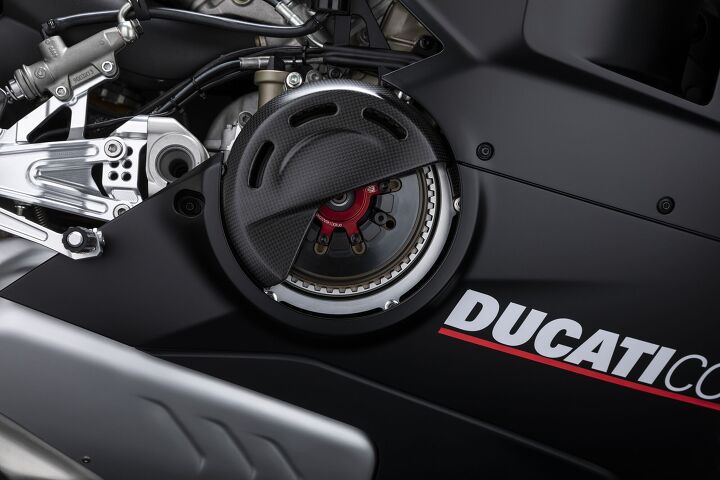
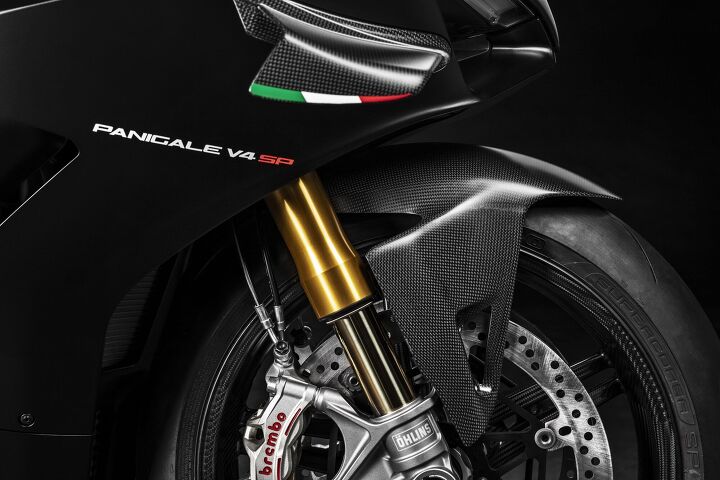
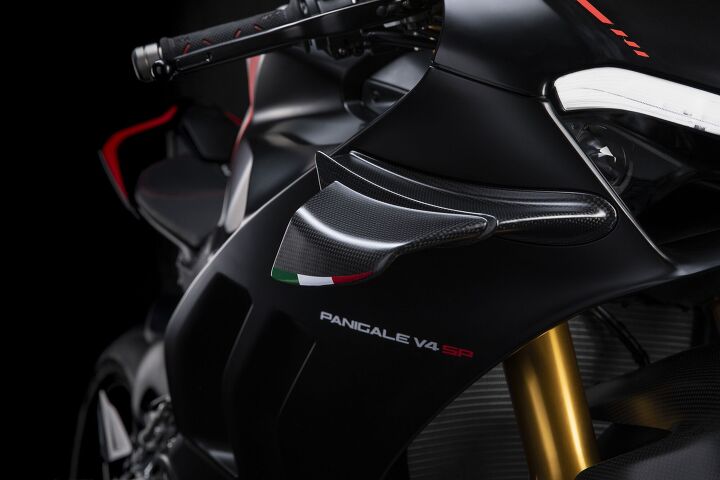
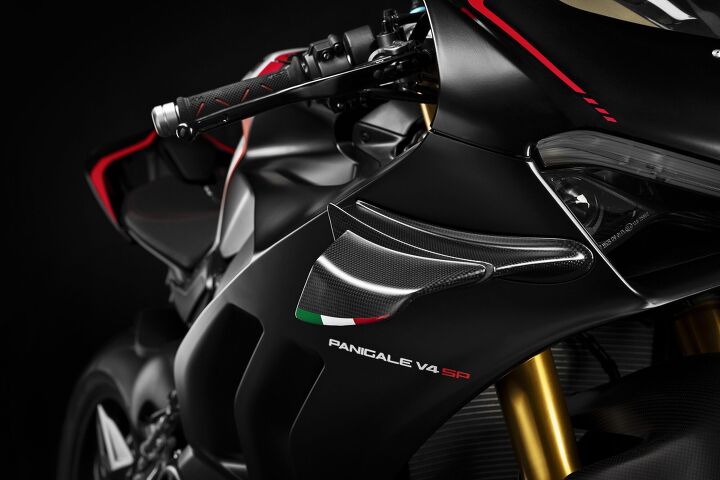
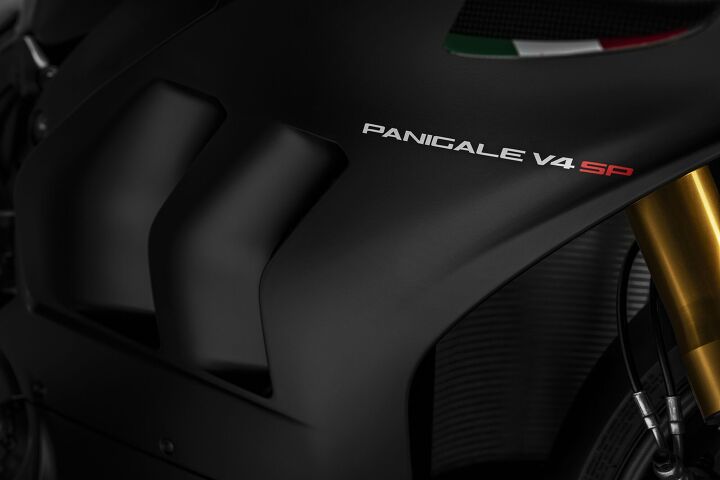
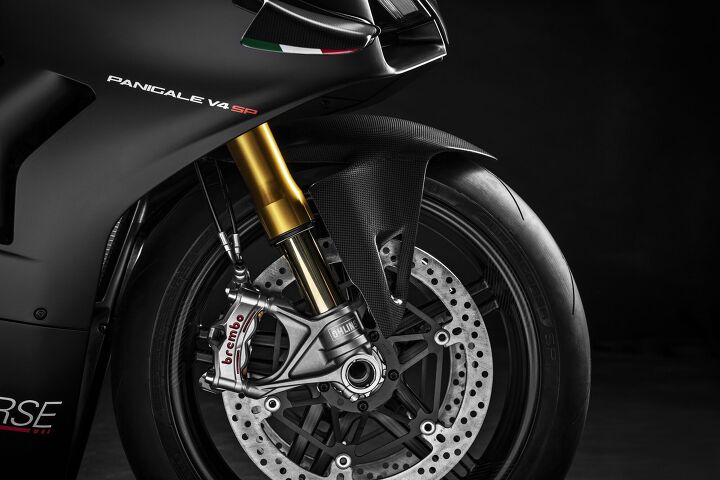
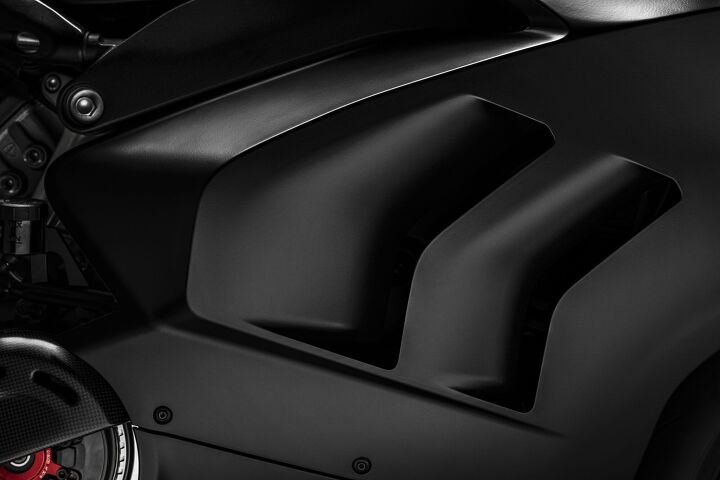
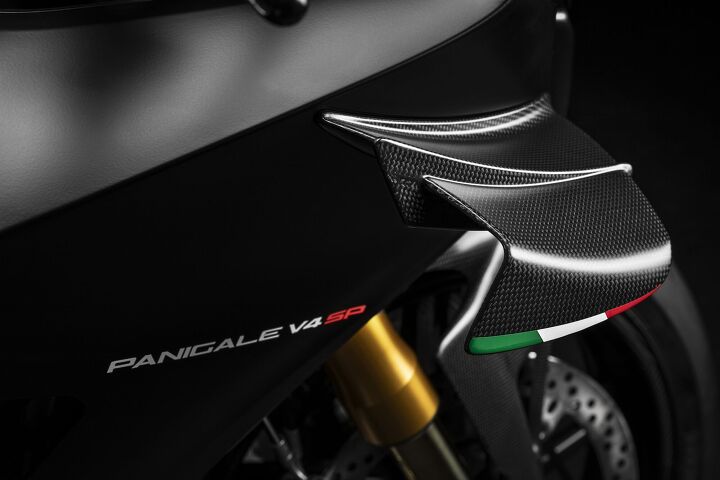
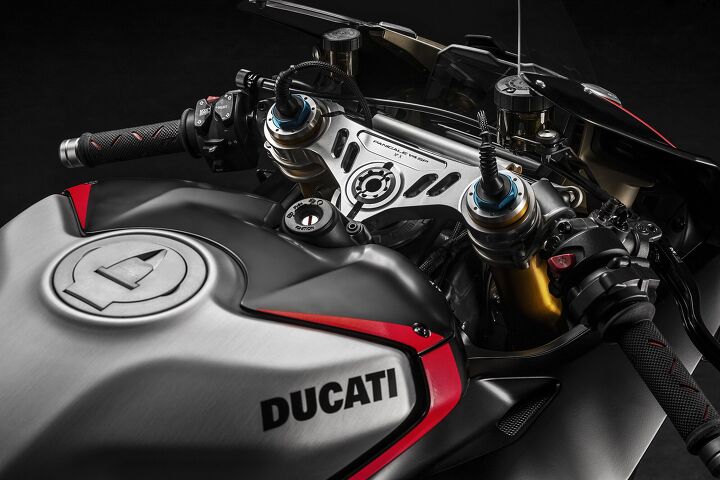
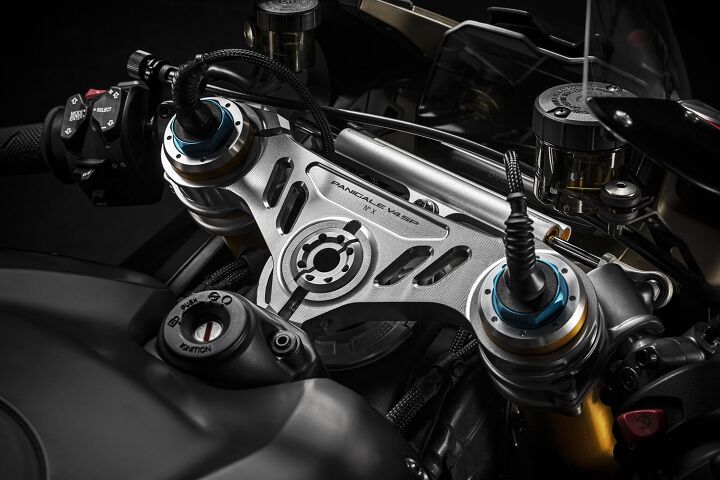
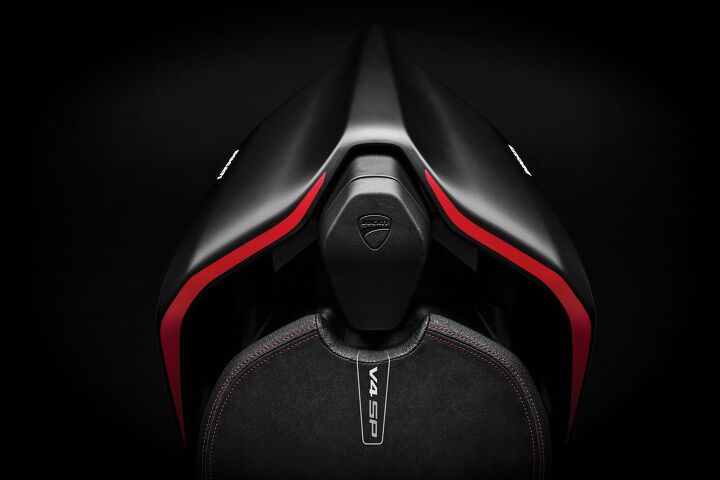
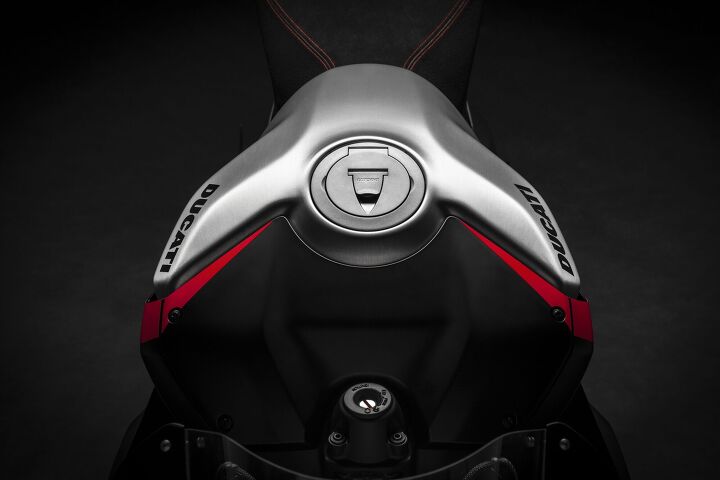
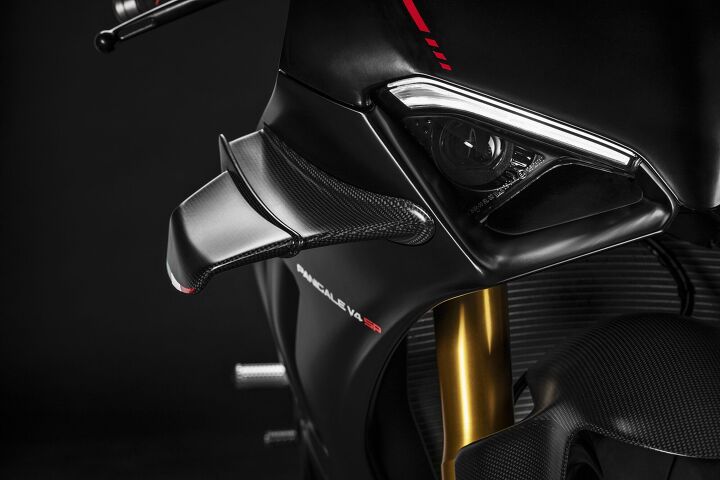
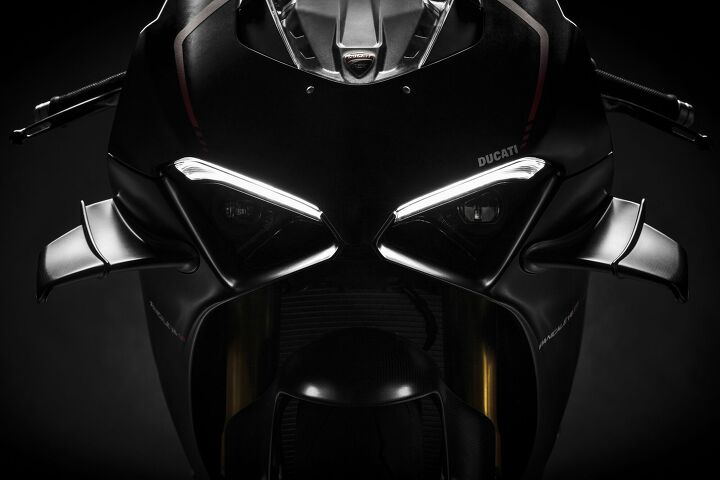
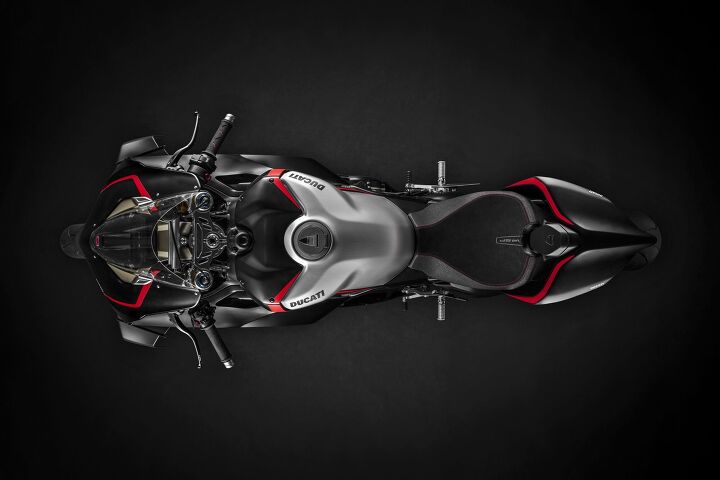
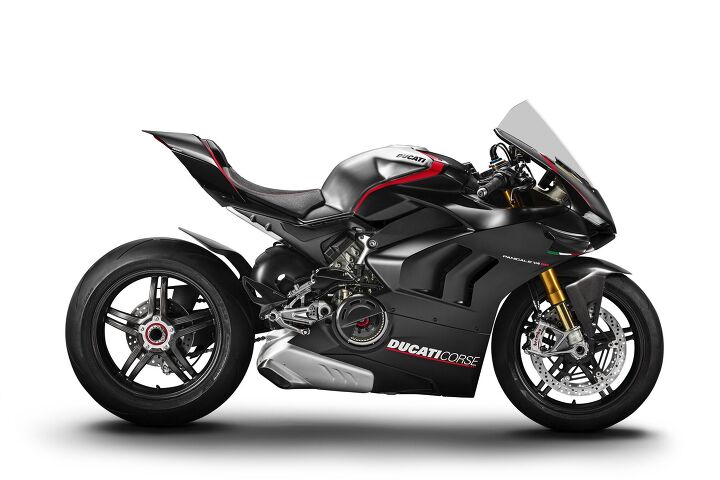
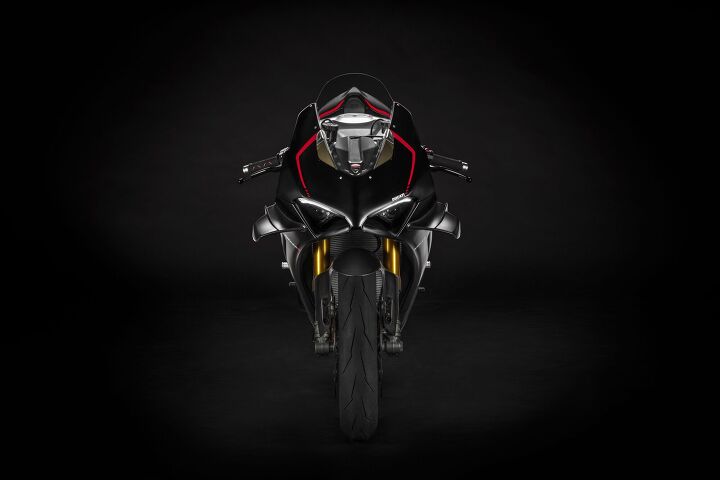
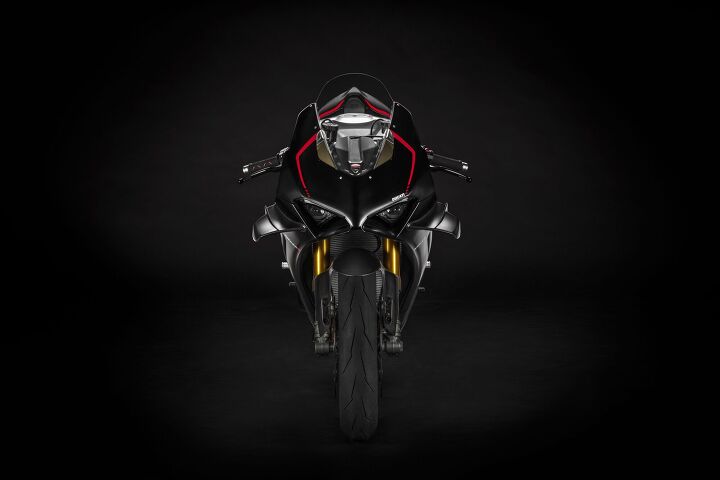
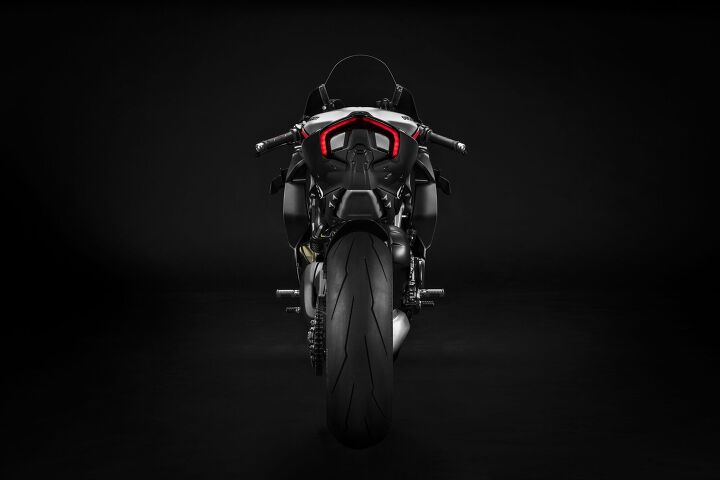
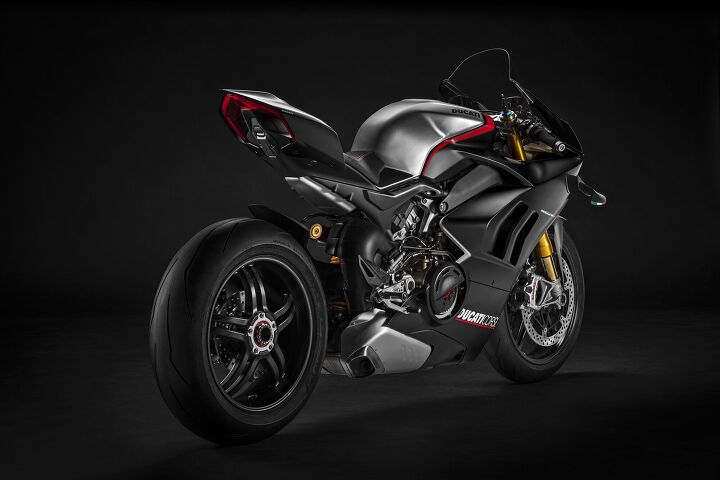
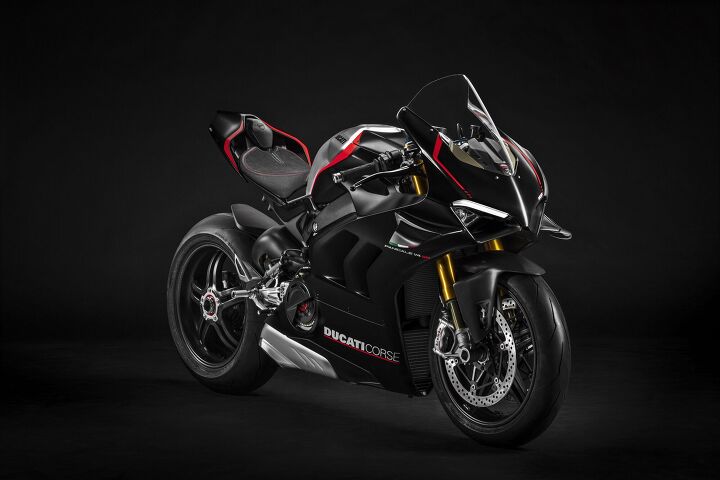
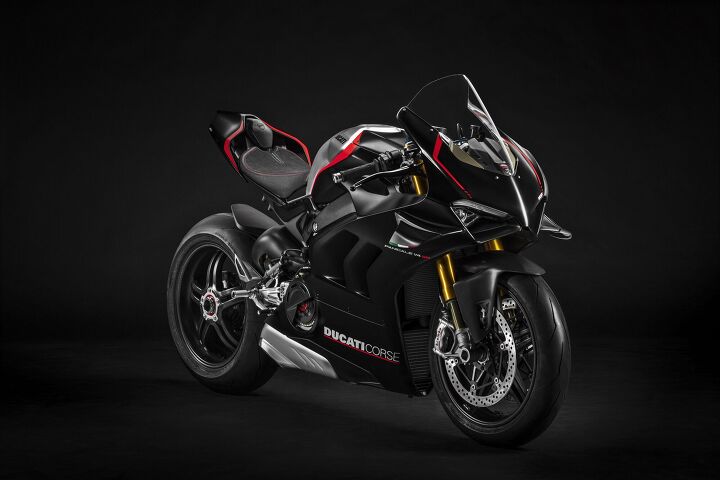
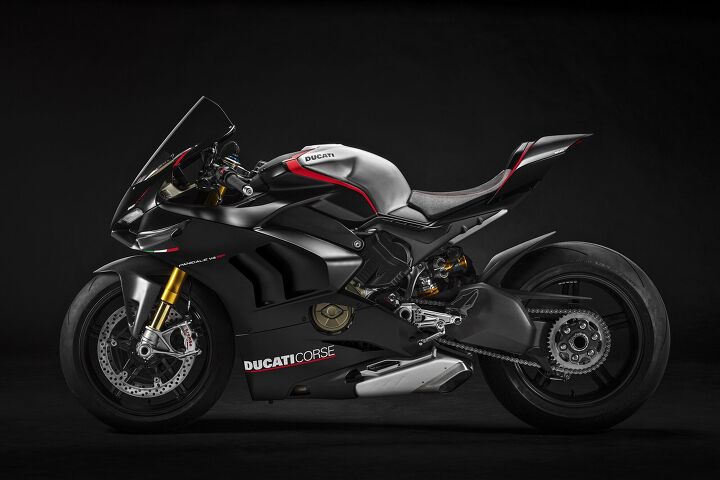
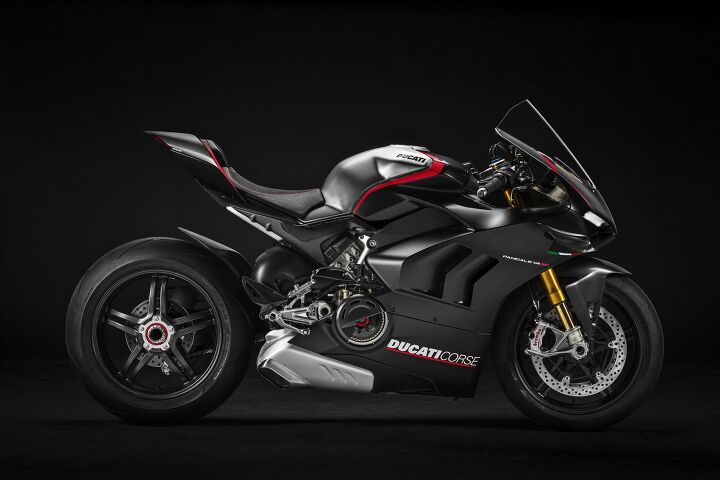
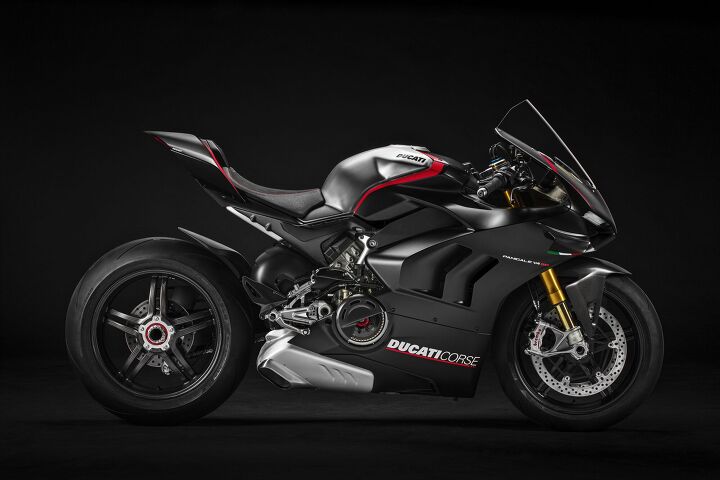
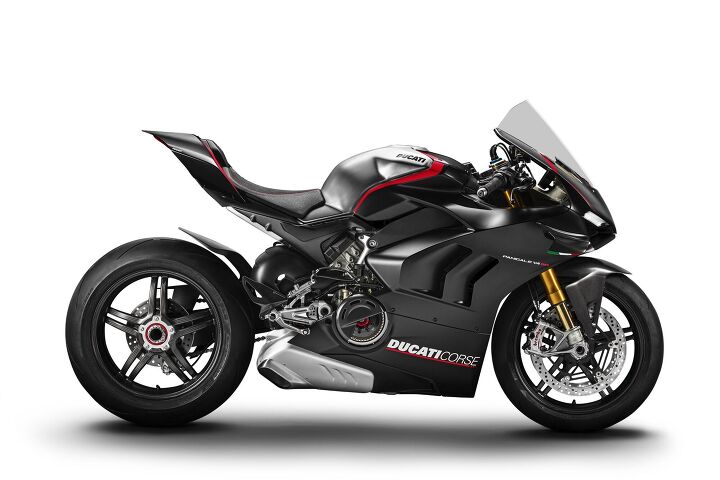
The post 2021 Ducati Panigale V4 SP – First Look appeared first on Motorcycle.com.
http://feeds.feedburner.com/~r/Motorcyclefeed/~4/2ReMEe0UA7A -
Hello anxjfarnorth,
Welcome to The Motorbike forum. Please feel free to browse around and get to know the others. If you have any questions please don't hesitate to ask.
-
Hello Travis,
Welcome to The Motorbike forum. Please feel free to browse around and get to know the others. If you have any questions please don't hesitate to ask.
-
Hello KAP,
Welcome to The Motorbike forum. Please feel free to browse around and get to know the others. If you have any questions please don't hesitate to ask.
-
 1
1
-
-
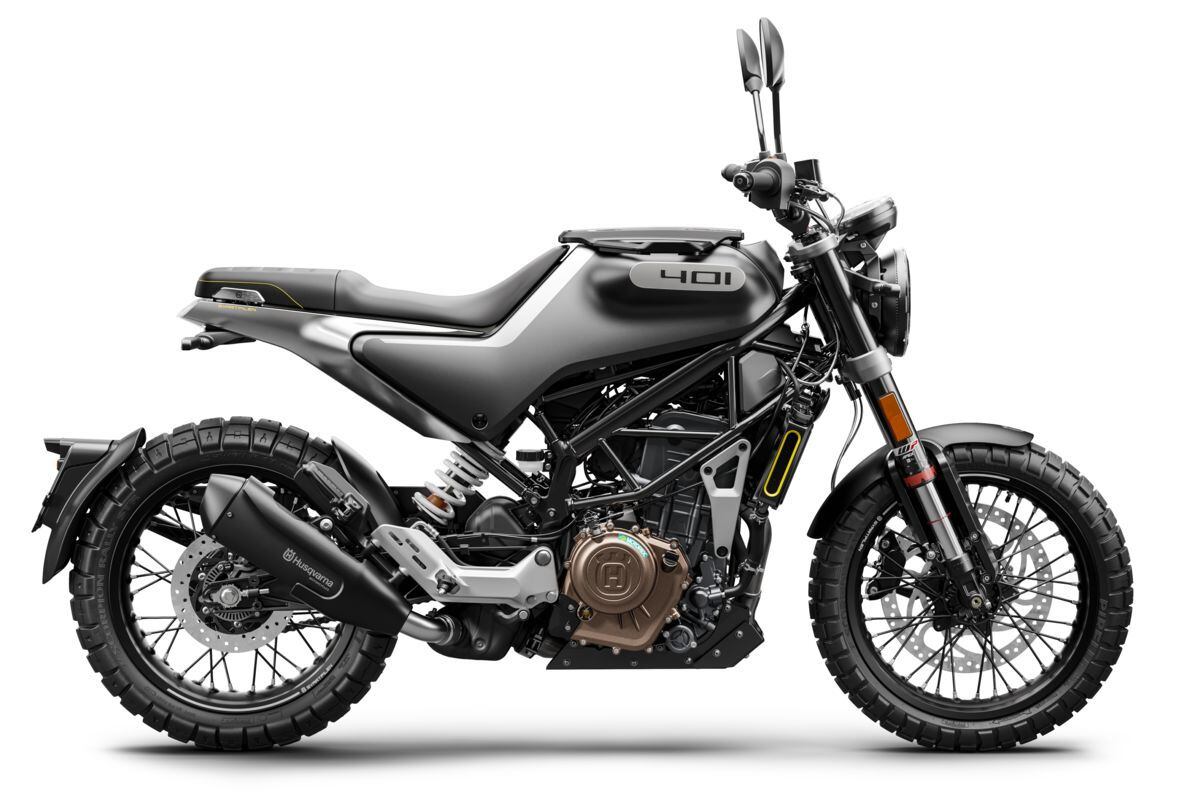
2020 Husqvarna Svartpilen 401 (Husqvarna/) Taking a more scrambler-like approach of Husqvarna’s smaller-displacement streetbikes is the Svartpilen 401. This standard bike’s spoked wheels wrapped in blocked rubber and upright ergonomics make it an urban machine with an explorative attitude, differentiating it from the café-styled Vitpilen 401. Like its sibling, this machine floats on WP Apex suspension, stops with ByBre brakes, and runs on a 373cc single-cylinder thumper. The urban roads and rough side streets look pretty inviting from the cockpit of this Husky.
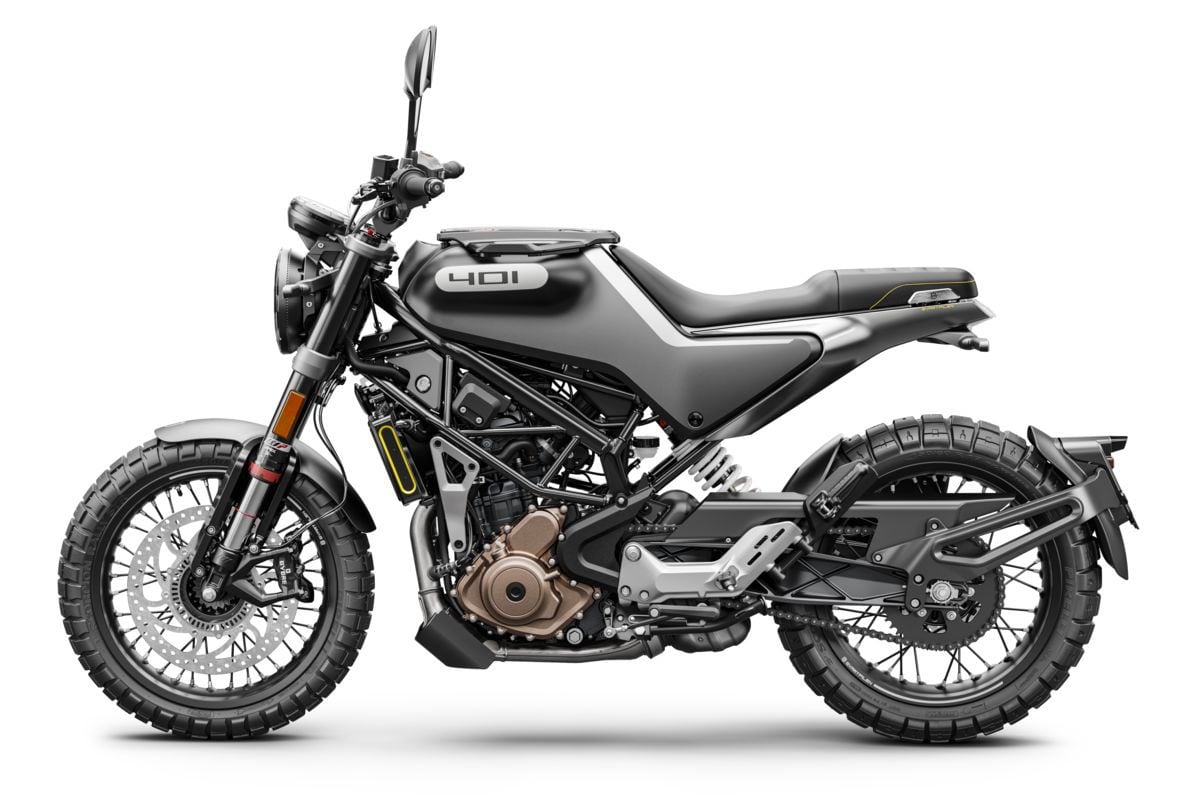
2020 Husqvarna Svartpilen 401 (Husqvarna/) 2020 Husqvarna Svartpilen 401 Reviews, Comparisons, And Competition
Running the 2018 Svartpilen 401 on our in-house dyno, we documented 40.27 hp at 8,650 rpm and 25.81 pound-feet of torque at 6,890 rpm.
Compare this model to the likes of the Ducati Scrambler Sixty2, Honda CB300R, Yamaha MT-03, or even its relatives like the Vitpilen 401 and KTM 390 Duke.
Husqvarna Svartpilen 401 Updates For 2020
The 2020 Svartpilen 401 sees the same changes as the Vitpilen 401, which include an extended subframe for what Husky claims improves passenger comfort and new colors that accentuate the model’s design.
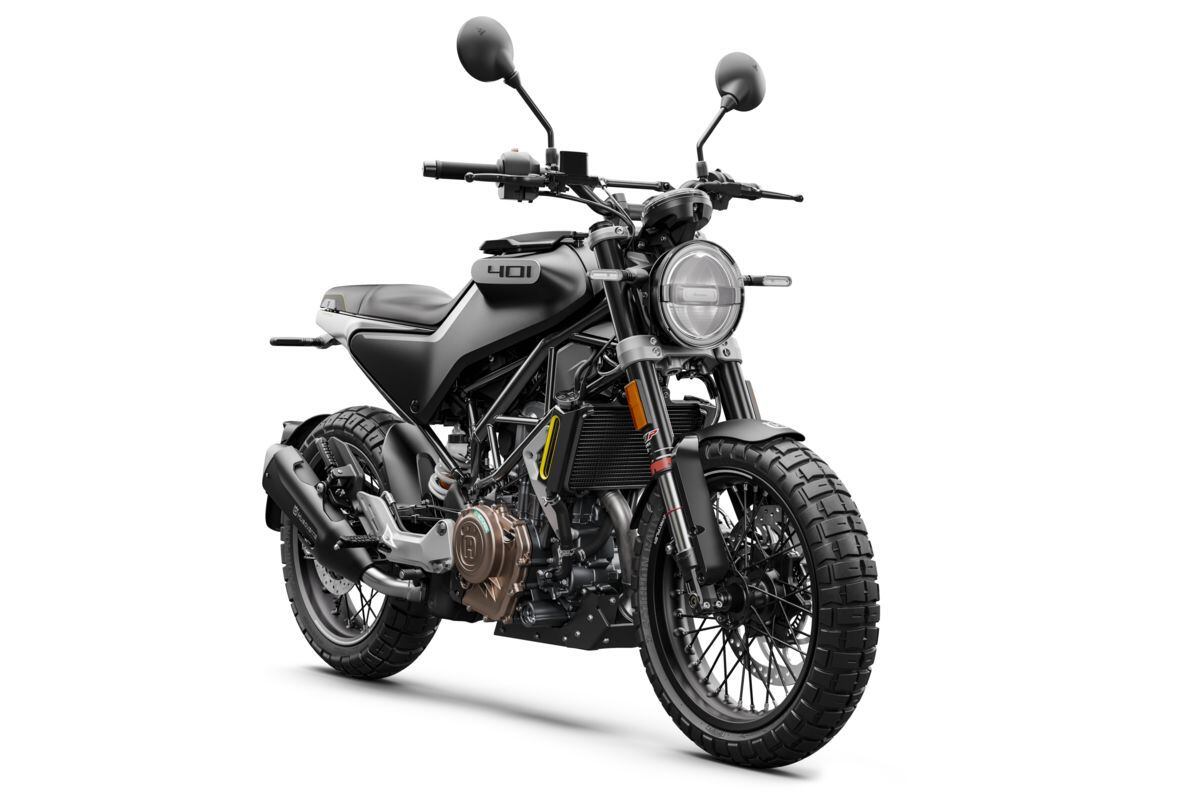
2020 Husqvarna Svartpilen 401 (Husqvarna/) 2020 Husqvarna Svartpilen 401 Claimed Specifications
Price: $4,999 Engine: Liquid-cooled DOHC single-cylinder Displacement: 373cc Bore x Stroke: 89.0 x 60.0mm Horsepower: 44.0 hp @ 9,000 rpm Torque: 27.3 lb.-ft. @ 7,000 rpm Transmission: 6-speed Final Drive: Chain Seat Height: 32.9 in. Rake: 25.0° Trail: 3.7 in. Front Suspension: 43mm inverted fork, fully adjustable; 5.6-in. travel Rear Suspension: Fully adjustable; 5.9-in. travel Front Tire: 110/70R-17 Rear Tire: 150/60R-17 Wheelbase: 54.1 in. Fuel Capacity: 2.5 gal. (0.4 gal. in reserve) Dry Weight: 335 lb. -
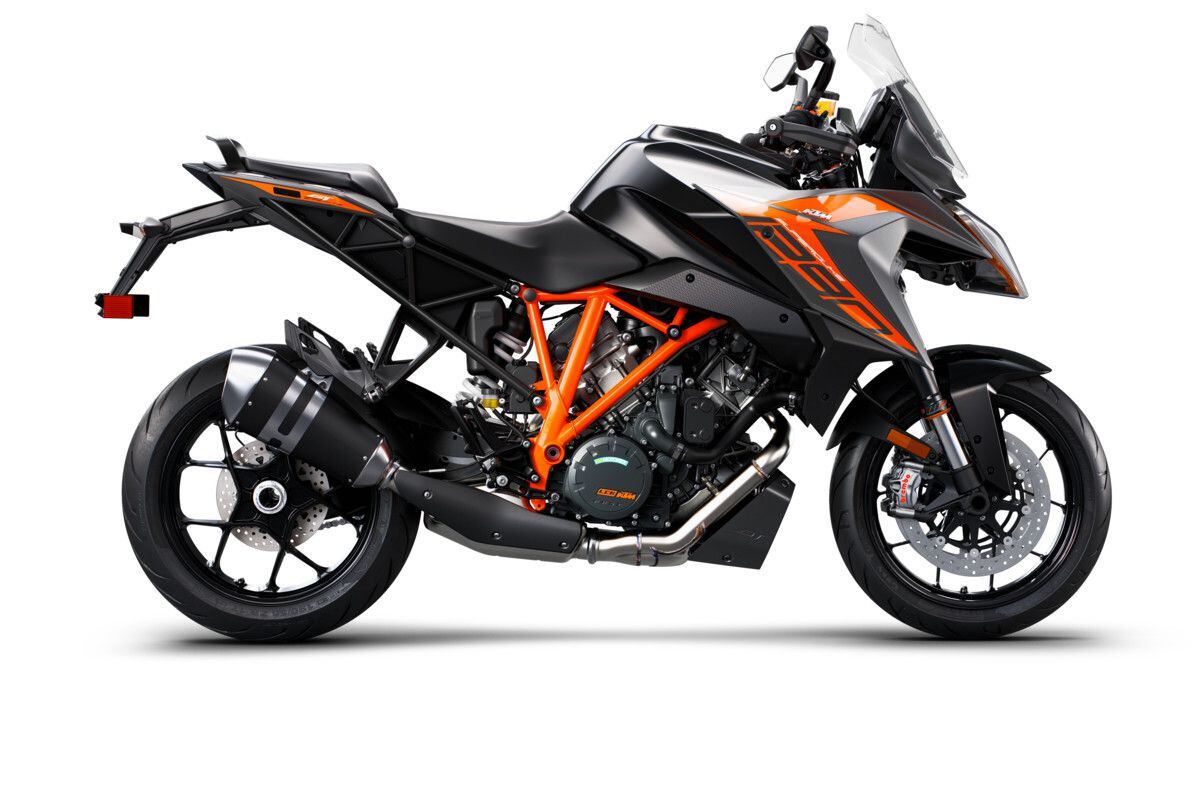
2020 KTM 1290 Super Duke GT (KTM/) Craving the comforts of a capable touring motorcycle combined with an aggressive engine pumping a claimed 175 hp for sport? Enter the KTM 1290 Super Duke GT—one of the most entertaining sport-touring motorcycles on the market.
Derived from the rowdy KTM 1290 Super Duke, the GT packs a punch of performance in the form of its 1,301cc V-twin powerplant and agile handling, but blends in touring amenities like cruise control, adjustable windshield, and heated grips for long-haul comfort. As KTM puts it, this is “a true premium machine for riders who demand simply the best,” and Orange isn’t too far off the mark there as this machine won Cycle World’s Best Touring Bike of 2016—the heated grips aren’t the only thing hot about this sport-tourer.
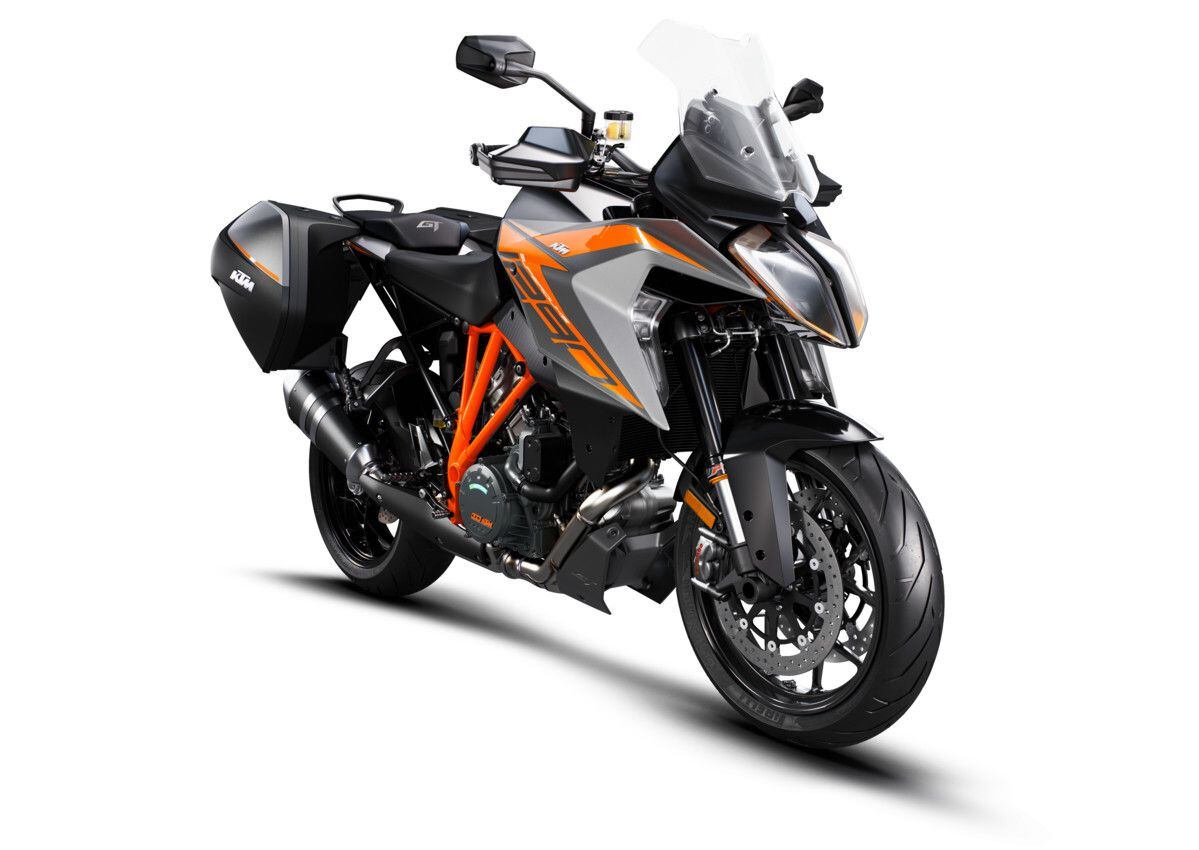
2020 KTM 1290 Super Duke GT (KTM/) 2020 KTM 1290 Super Duke GT Reviews, Comparisons, And Competition
In our dyno run last year, the 1290 Super Duke GT recorded 150.8 hp at 10,060 rpm and 91.5 pound-feet of torque at 7,180 rpm.
The 2016 1290 Super Duke GT beat out the competition for Cycle World’s Best Touring Bike of 2016 because it is not only based on the “hugely entertaining KTM Super Duke that won us over one wheelie at a time” but “combines a torquey V-twin engine and stable chassis with all the accoutrements needed for the long haul.”
The competition in the sport-touring class includes the Yamaha FJR1300ES, Kawasaki Ninja 1000, Kawasaki H2 SX SE, BMW R 1250 RS, Suzuki GSX-S1000F, and Ducati Multistrada 1260.
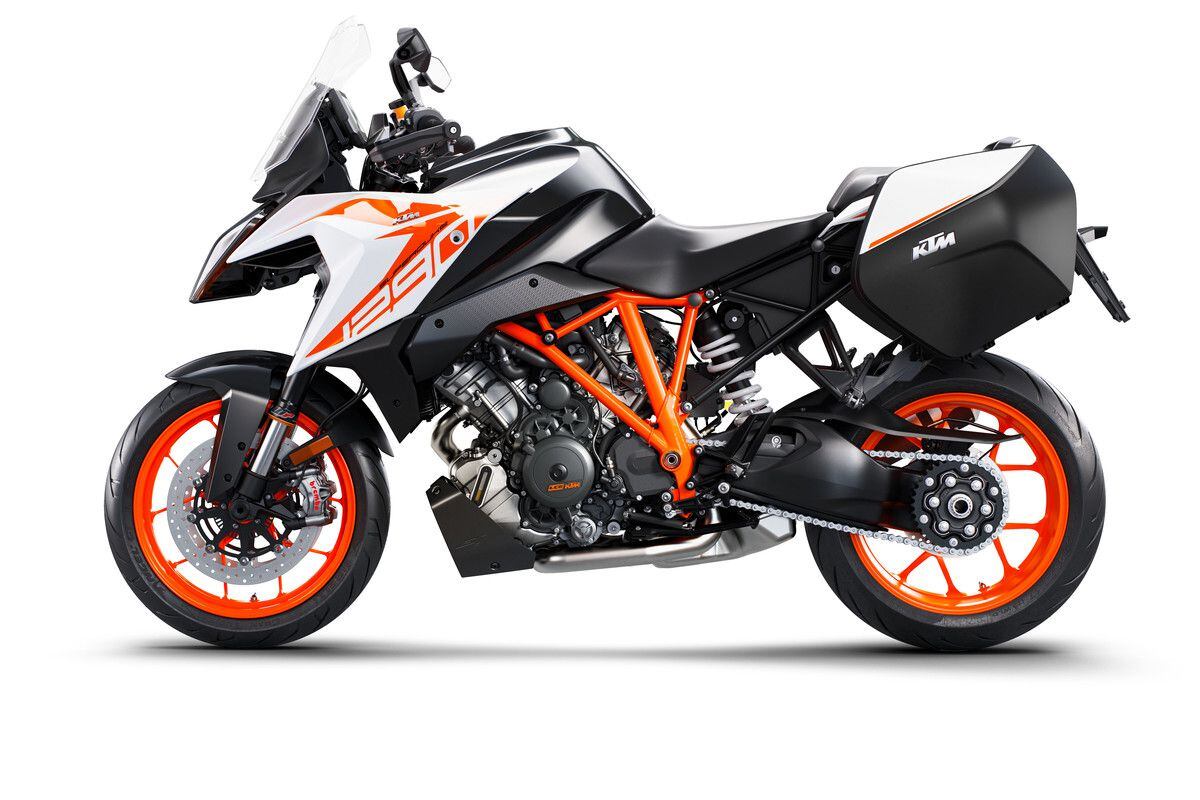
2020 KTM 1290 Super Duke GT (KTM/) KTM 1290 Super Duke GT Updates For 2020
The 1290 Super Duke was just revised last year, so no major announcements were made by the manufacturer. It is available at a starting MSRP of $20,599.
2020 KTM 1290 Super Duke GT Claimed Specifications
Price: $20,599 Engine: Liquid-cooled two-cylinder Displacement: 1,301cc Bore x Stroke: 108.0 x 71.0mm Horsepower: 175.0 hp @ 9,750 rpm Torque: 103.9 lb.-ft. @ 7,000 rpm Transmission: 6-speed Final Drive: Chain Seat Height: 32.9 in. Rake: 24.9° Trail: 4.2 in. Front Suspension: 48mm inverted fork, electronically adjustable; 4.9-in. travel Rear Suspension: Electronically adjustable; 6.1-in. travel Front Tire: 120/70ZR-17 Rear Tire: 190/55ZR-17 Wheelbase: 58.3 in. Fuel Capacity: 6.1 gal. w/ 0.9 gal. in reserve Dry Weight: 461 lb. -
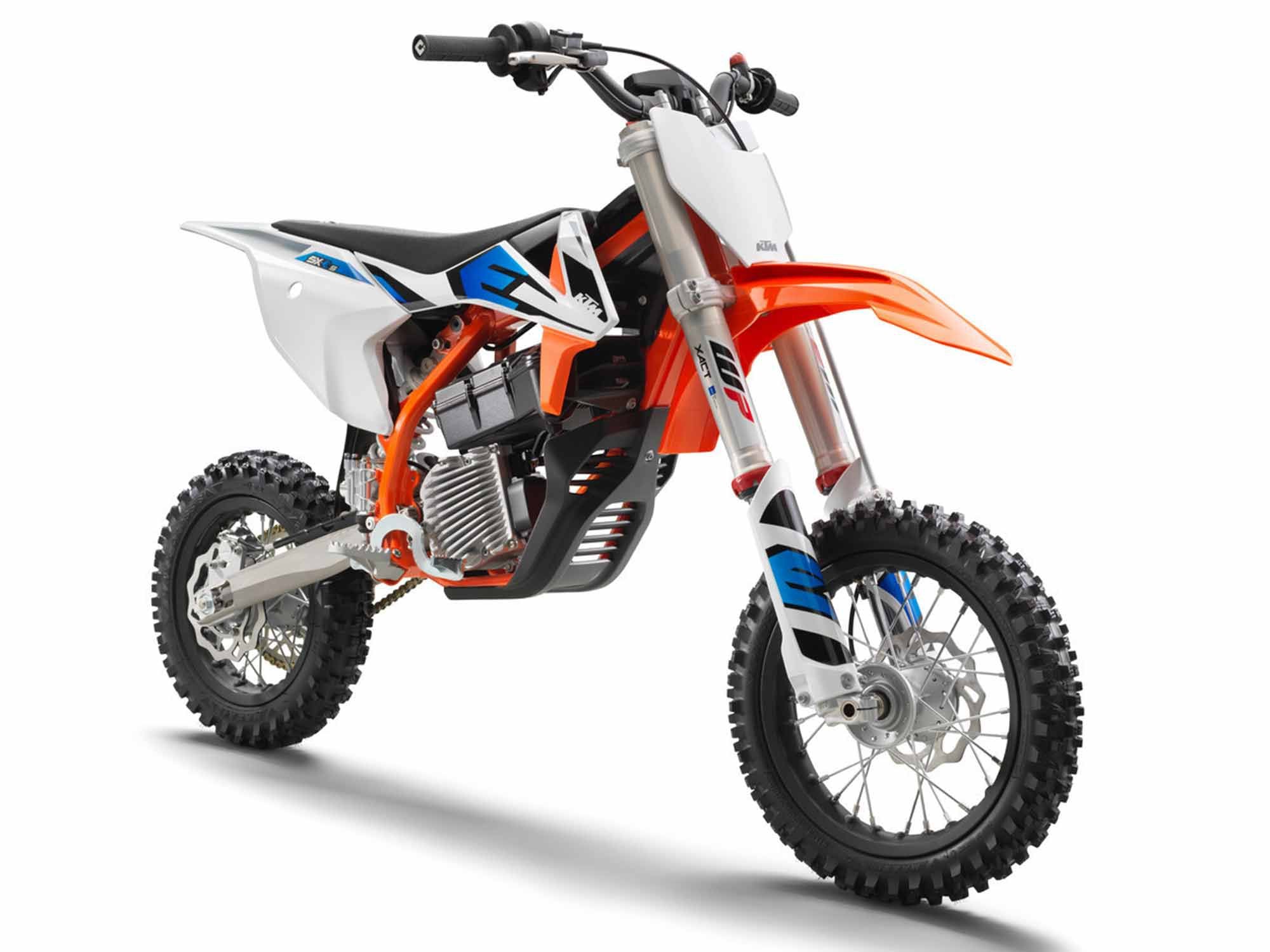
2020 KTM SX-E 5 (KTM /) The 2020 KTM SX-E 5 is a mini electric dirt bike that is based around the smaller chassis of its internal-combustion two-stroke brother, the 50 SX, but is powered by a 48-volt electric motor. With the lack of a gearbox, shifting is not required, which makes it approachable for new riders, while six power modes offer tailored power delivery. At a slower beginner pace, ride time with the KTM PowerPack lithium-ion battery can last up to a claimed two hours while the older, faster youth will have a claimed 25 minutes. An adjustable seat height also makes it appropriate for the growing beginner rider or competitive junior rider. This model is also fitted with a 35mm upside-down WP Xact fork and WP Xact monoshock and 160mm disc brakes front and rear.
2020 KTM SX-E 5 Reviews, Comparisons, And Competition
As covered on Dirt Rider, with this model “KTM is banking on the projection that the 2020 SX-E 5 will attract those with kids just starting out, and who wish to have a bike that’ll grow with them.”
Mini electric competition includes sister brand Husqvarna’s EE 5 or the Oset MX-10. The trials-oriented Oset 12.5 Racing is another electric with a different competition-like intent.
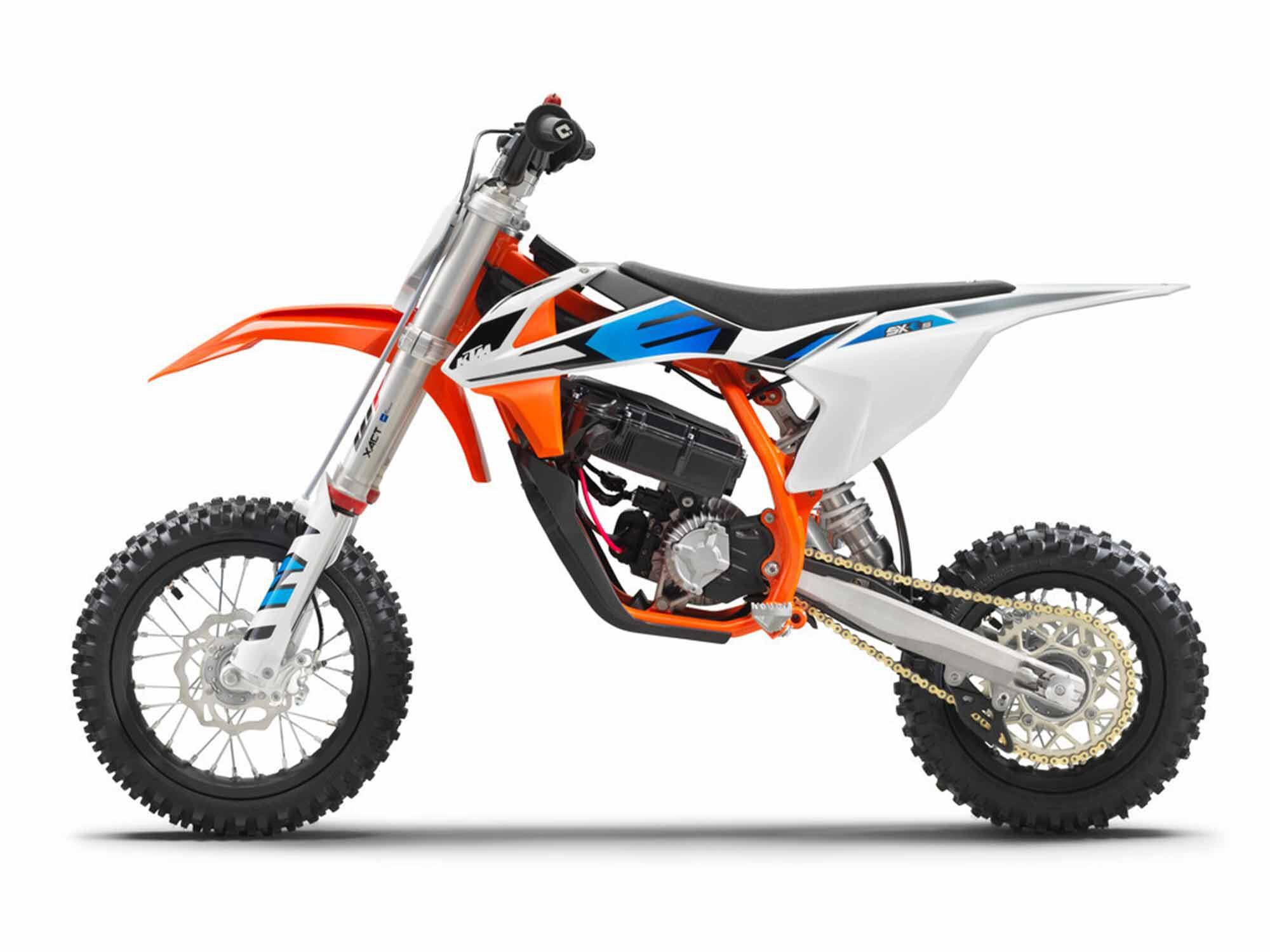
2020 KTM SX-E 5 (KTM /) KTM SX-E 5 Updates For 2020
No major updates here since the KTM SX-E 5 was just unveiled for 2020. Pricing starts at $5,049.
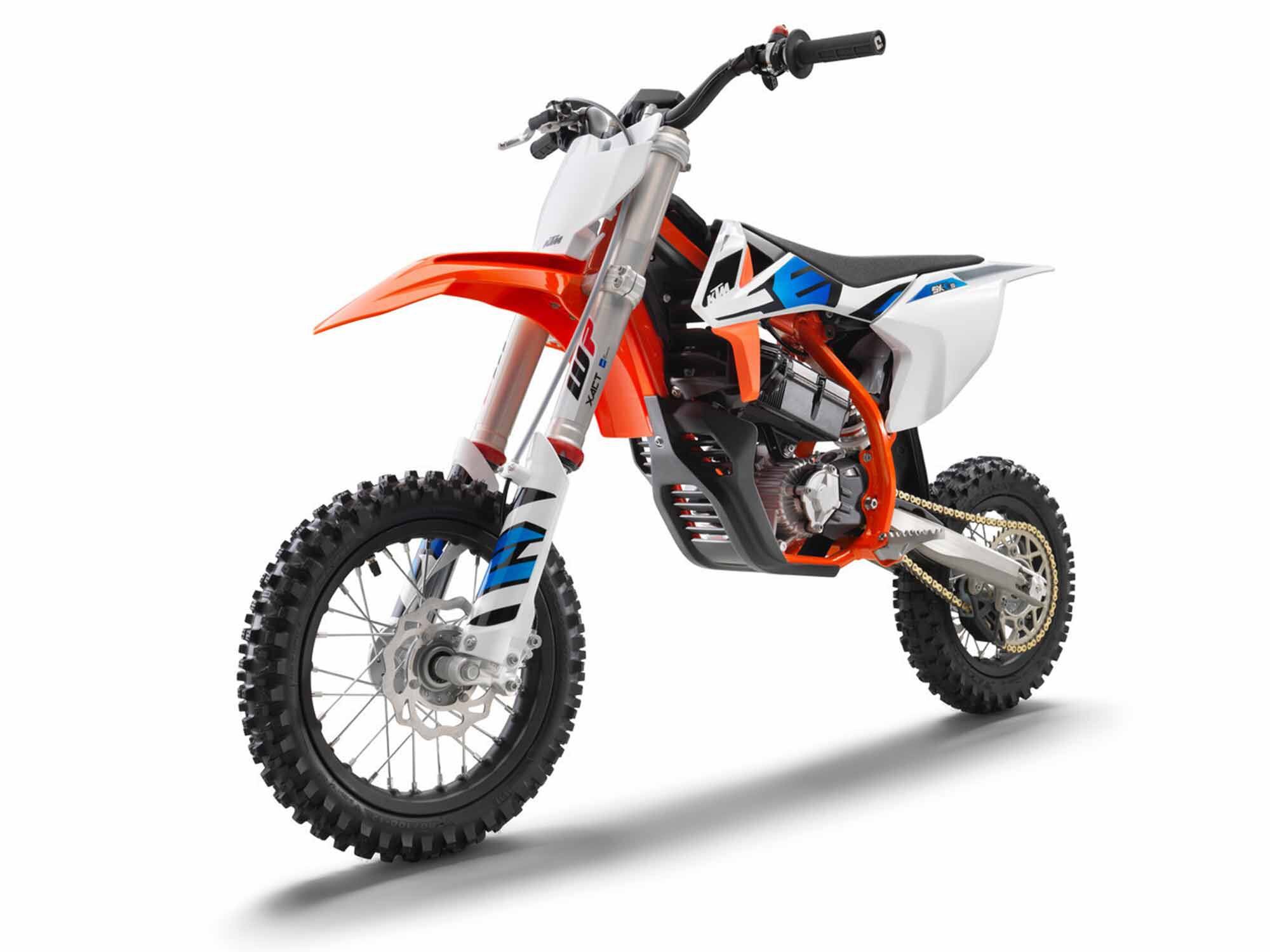
2020 KTM SX-E 5 (KTM /) 2020 KTM SX-E 5 Claimed Specifications
Price: $5,049 Motor: Air-cooled 48-volt BLDC motor w/ outer rotor Power: 5kW / 3,750 rpm Torque: 10.2 lb.-ft. Transmission: 1-speed Final Drive: Chain Seat Height: 26.9 in. Rake: 24.0° Trail: N/A Front Suspension: 35mm inverted fork, adjustable; 8.1-in. travel Rear Suspension: Fully adjustable; 7.3-in. travel Front Tire: 60/100-12 Rear Tire: 2.75 x 10 Wheelbase: 40.6 in. Capacity: 907 Wh Weight: 89 lb. -
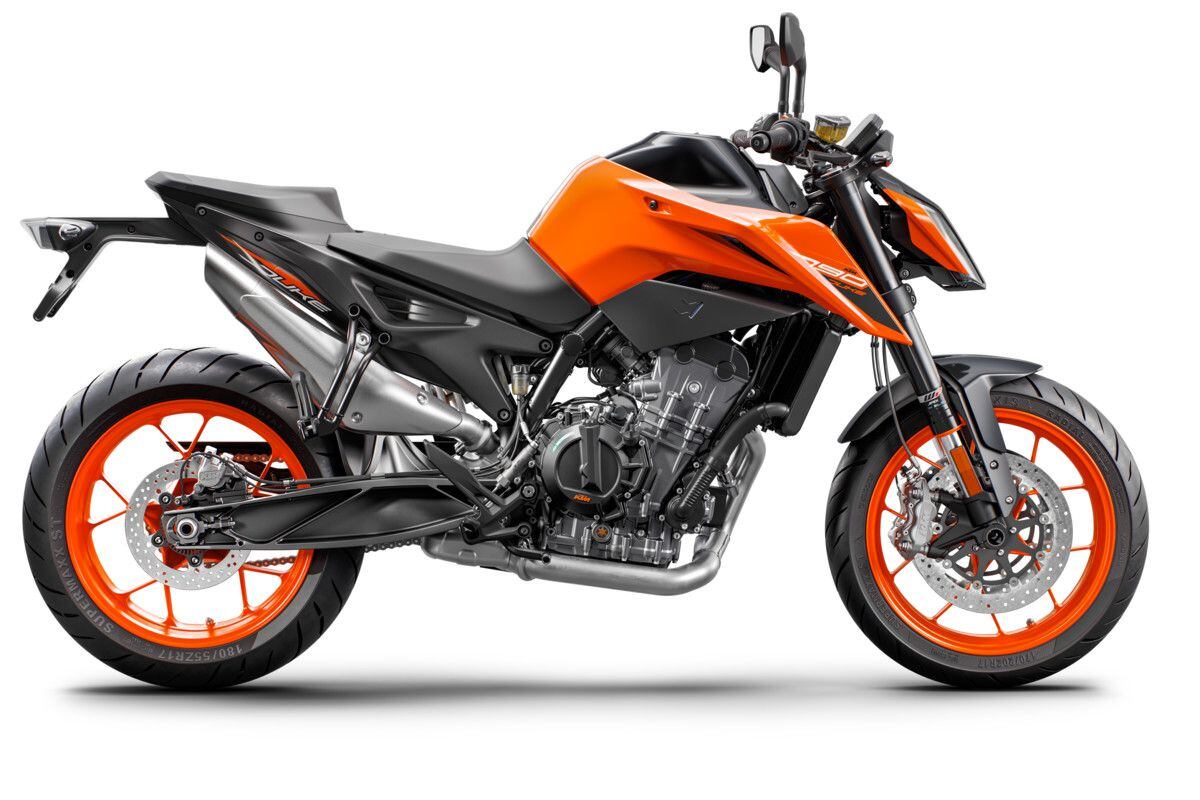
2020 KTM 790 Duke (KTM /) The 2020 KTM 790 Duke is a naked motorcycle that merges “know-how gained in the development of milestones like the 690 Duke and 1290 Super Duke R,” as stated by the manufacturer. This “Scalpel” of the Duke line is powered by a 799cc parallel-twin engine. Its road-slicing features include its lightweight chrome-molybdenum steel frame with aluminum rear subframe, WP suspension, and a clutchless up and down quickshifter. If you are looking for an everyday canyon carver, straightaway slasher, or trackday thrasher, the Scalpel makes quick work of it all.
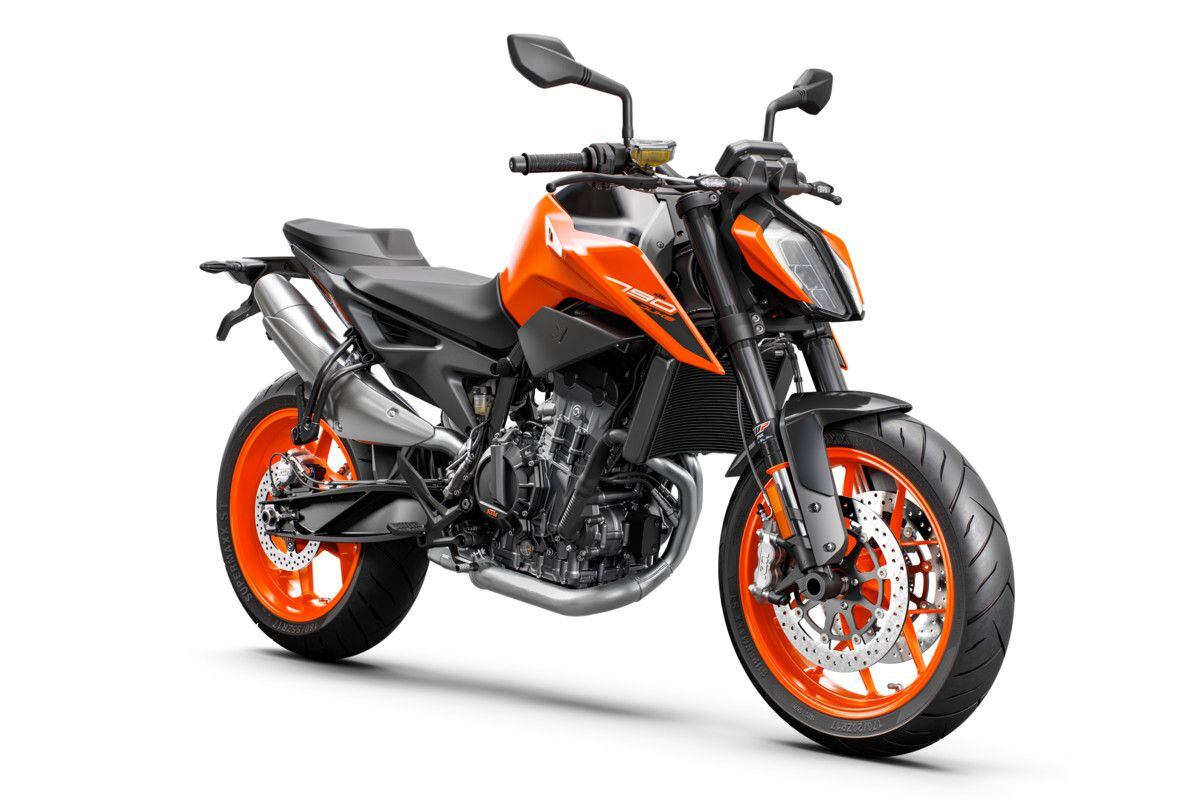
2020 KTM 790 Duke (KTM /) 2020 KTM 790 Duke Reviews, Comparisons, And Competition
In our 2019 first ride, Road Test Editor Michael Gilbert stated that the 790 Duke “is a seriously potent motorcycle. The Orange Brigade suggests the middleweight Duke is a steppingstone between the 390 Duke and 1290 Super Duke R, but I’d argue it holds the potential to be a final destination for a KTM buyer.”
Upon running last year’s model on the dyno, the KTM 790 Duke produced 95.1 hp at 9,200 rpm and 58.2 pound-feet of torque at 7,800 rpm.
Competition in the middleweight naked category includes: Kawasaki Z900, Suzuki GSX-S750, Yamaha MT-07, and Husqvarna Svartpilen/Vitpilen 701.
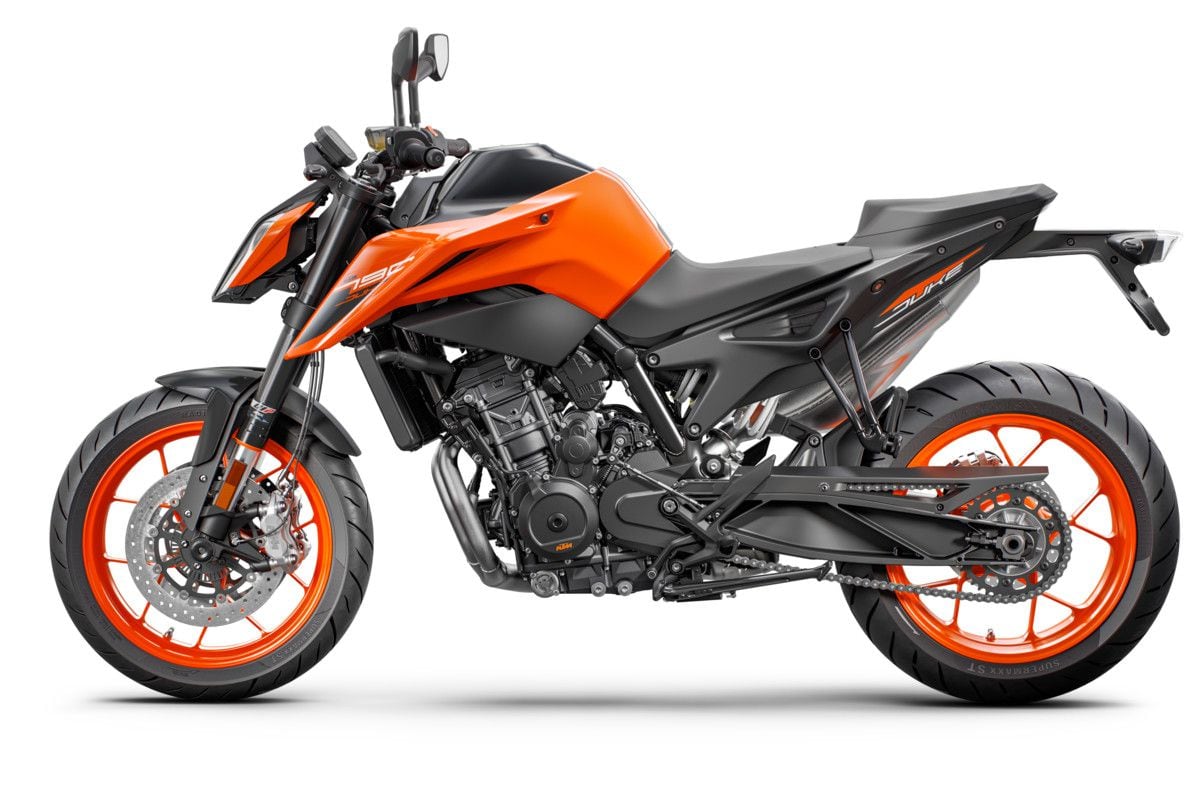
2020 KTM 790 Duke (KTM /) KTM 790 Duke Updates For 2020
The only update for 2020 is that it has new color, trim, and graphics. It is available in black or orange for a starting MSRP of $10,699.
2020 KTM 790 Duke Claimed Specifications
Price: $10,699 Engine: Liquid-cooled DOHC parallel twin Displacement: 799cc Bore x Stroke: 88.0 x 65.7mm Horsepower: 105.0 hp @ 9,000 rpm Torque: 64.2 lb.-ft. @ 8,000 rpm Transmission: 6-speed Final Drive: Chain Seat Height: 32.5 in. Rake: 24.0° Trail: 3.9 in. Front Suspension: 43mm inverted fork; 5.5-in. travel Rear Suspension: Spring and preload adjustable; 5.9-in. travel Front Tire: 120/70ZR-17 Rear Tire: 180/55ZR-17 Wheelbase: 58.1 in. Fuel Capacity: 3.7 gal. w/ 0.9 gal. in reserve Dry Weight: 373 lb. -
Ducati has updated its SuperSport for 2021, giving it Panigale V4-inspired styling and a six-axis inertial measurement unit while bringing it in line with Euro 5 standards. Ducati also officially added “950” to the model’s name, which is interesting in that it suggests other displacements might be in the works, but at this point, the 2021 line-up will consist of the SuperSport 950 and the SuperSport 950 S.
The SuperSport 950 receives a new fairing design with the gill-shaped openings on either side that help vent air while also showing a peek at the red trellis frame. The bottom of the fairing now extends to cover the exhaust up until the silencer.
Up front, the LED daytime running light returns, but the redesigned headlights now follow its V-shaped curve, making it look a bit less like a “unibrow” than the previous design. The headlights are bracketed by new air intakes that funnel air through into fairing where it vents out on the rider’s legs for improved heat management.
The fairing now extends up under the windscreen and the new 4.3-inch TFT display to the front of the triple clamp, adding a bit more color to the rider’s point-of-view.
The engine remains a 937cc Ducati Testastretta 11° V-Twin. In regions where Euro 5 or equivalent standards apply, the engine claims 110 hp at 9000 rpm and 69 lb-ft. at 6500 rpm. Ducati hasn’t confirmed U.S. figures, but they’ll likely remain at the 2020 model’s claimed 113 hp and 71.3 lb-ft. For 2021, Ducati gave the slipper wet clutch a new hydraulic control including a self-bleeding radial pump.
Now equipped with a six-axis IMU, the 2021 SuperSport’s electronic package includes Bosch’s cornering ABS and gains the upgraded EVO versions of Ducati’s traction control, wheelie control and quick shift. The SuperSport conitnues to offer three ride modes, Sport, Touring and Urban.
The chassis remains similar to last year’s model, with a single-sided swingarm, trellis frame and the engine acting as a load-bearing element. The suspension is also unchanged, with the base model SuperSport 950 using a fully-adjustable 43 mm Marzocchi inverted fork and a preload and rebound damping adjustable Sachs rear shock. The S model gets a more premium package of a 48 mm inverted fork and rear shock from Öhlins, both offering full adjustability.
The dual Brembo M4-32 radially-mounted monoblock four-piston calipers with 320mm discs return as standard equipment for both SuperSport models, as do the 245 mm disc and two-piston caliper on the rear. In addition to the cornering ABS, the 2021 SuperSport models, the brake system also gets a self-bleeding radial pump, matching the clutch lever’s hydraulics.
Ergonomically, the SuperSport offers a sporty riding position, though the hand and foot positions are not quite as aggressive as you would find on the Panigale models. The seat height remains at the same 31.9 inches as the previous model, but Ducati revised the saddle’s padding to improve rider comfort.
The 2021 Ducati SuperSport 950 is available in Ducati Red with a matching trellis frame and glossy black wheels for $13,495. The SuperSport 950 S comes in a choice of Arctic White Silk or Ducati Red, and is priced at $16,195.
2021 Ducati SuperSport 950 Specifications Specifications SuperSport 950 SuperSport 950 S Engine Type Testastretta 11°, L-Twin cylinder, 4 valve per cylinder, Desmodromic, liquid cooled Testastretta 11°, L-Twin cylinder, 4 valve per cylinder, Desmodromic, liquid cooled Displacement 937 cc 937 cc Bore x Stroke 94 x 67.5 mm 94 x 67.5 mm Compression Ratio 12,6± 0.5 :1 12,6± 0.5 :1 Power 110 hp at 9.000 rpm (claimed) 110 hp at 9.000 rpm (claimed) Torque 69 lb-ft. at 6.500 rpm (claimed) 69 lb-ft. at 6.500 rpm (claimed) Fuel Injection Electronic fuel injection system, 53 mm throttle bodies with full Ride-by-Wire Electronic fuel injection system, 53 mm throttle bodies with full Ride-by-Wire Exhaust Lightweight 2-1-2 system with catalytic converter and two lambda probes. Twin aluminum mufflers Lightweight 2-1-2 system with catalytic converter and two lambda probes. Twin aluminum mufflers Gearbox 6 speed with Ducati Quick Shift (DQS) up/down EVO 6 speed with Ducati Quick Shift (DQS) up/down EVO Primary Drive Straight cut gears; Ratio 1.84:1 Straight cut gears; Ratio 1.84:1 Ratio 1=37/15 2=30/17 3=28/20 4=26/22 5=24/23 6=23/24 1=37/15 2=30/17 3=28/20 4=26/22 5=24/23 6=23/24 Final Drive Chain; Front sprocket 15; Rear sprocket 43 Chain; Front sprocket 15; Rear sprocket 43 Clutch Slipper and self-servo wet multiplate clutch with hydraulic control. Self bleeding master cylinder. Slipper and self-servo wet multiplate clutch with hydraulic control. Self bleeding master cylinder. Frame Tubular steel Trellis frame attached to the cylinder heads Tubular steel Trellis frame attached to the cylinder heads Front Suspension Fully adjustable Æ 43 mm usd Marzocchi fork Fully adjustable Æ 48 mm usd Öhlins fork with TiN treatment Rear Suspension Progressive linkage with adjustable Sachs monoshock. Aluminum single-sided swingarm Progressive linkage with fully adjustable Öhlins monoshock. Aluminum single-sided swingarm Wheel Travel (Front/Rear) 130 mm (5.1 in)/144 mm (5.7 in) 130 mm (5.1 in)/144 mm (5.7 in) Front Wheel Y shaped, 3-spoke in light alloy 3.50″ x 17″ Y shaped, 3-spoke in light alloy 3.50″ x 17″ Front Tire Pirelli Diablo Rosso III 120/70 ZR17 Pirelli Diablo Rosso III 120/70 ZR17 Rear Wheel Y shaped, 3-spoke in light alloy 5.50″ x 17″ Y shaped, 3-spoke in light alloy 5.50″ x 17″ Rear Tire Pirelli Diablo Rosso III 180/55 ZR17 Pirelli Diablo Rosso III 180/55 ZR17 Front Brake 2 x 320 mm semi-floating discs, radially mounted Monobloc Brembo M4-32 callipers, 4-piston, radial pump with Bosch Cornering ABS. Self bleeding master cylinder 3 x 320 mm semi-floating discs, radially mounted Monobloc Brembo M4-32 callipers, 4-piston, radial pump with Bosch Cornering ABS. Self bleeding master cylinder Rear Brake 245 mm disc, 2-piston caliper, Bosch Cornering ABS 245 mm disc, 2-piston caliper, BoschCornering ABS Instrumentation Full-TFT color display Full-TFT color display Dry Weight 184 kg (405 lb), claimed 184 kg (405 lb), claimed Curb Weight 210 kg (463 lb), claimed 210 kg (463 lb), claimed Seat Height 810 mm (31.9 in) 810 mm (31.9 in) Wheelbase 1.478 mm (58.3 in) 1.478 mm (58.3 in) Rake 24° 24° Trail 91 mm (3.6 in) 91 mm (3.6 in) Fuel Tank Capacity 4.2 gallons 4.2 gallons Number Of Seats 2 2 Safety Equipment Riding Modes, Bosch Cornering ABS , Ducati Traction Control (DTC) EVO, Ducati Wheelie Control (DWC) EVO. Riding Modes, Bosch Cornering ABS , Ducati Traction Control (DTC) EVO, Ducati Wheelie Control (DWC) EVO. Standard Equipment Power Modes, Day Time Running Light (DRL)**, Full-TFT color display, Adjustable windscreen, Ducati Quick Shift (DQS) up/down EVO, Power Modes, Day Time Running Light (DRL)**, Full-TFT color display, Adjustable windscreen, Öhlins suspension, Ducati Quick Shift (DQS) up/down EVO, Passenger seat cowl Ready For Anti-theft system, Heated grips, Ducati Multimedia System (DMS) Anti-theft system, Heated grips, Ducati Multimedia System (DMS) Warranty 24 months unlimited mileage 24 months unlimited mileage Maintenance Service Intervals 15.000 km – 9.000 mi/12 months 15.000 km – 9.000 mi/12 months Desmoservice 30.000 km – 18.000 mi 30.000km – 18.000 mi 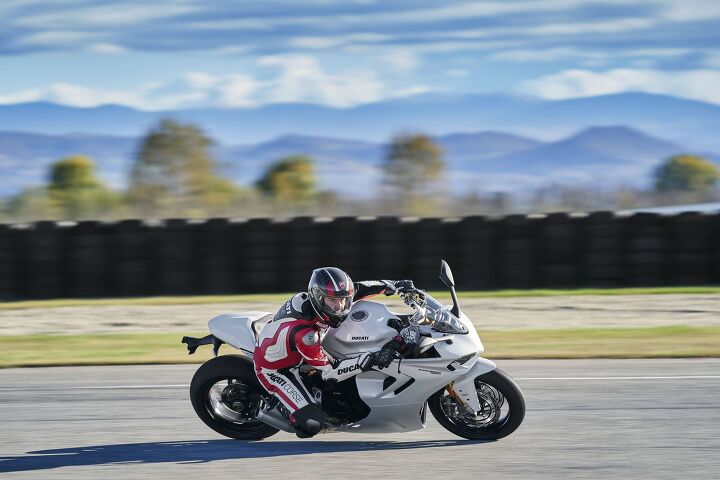
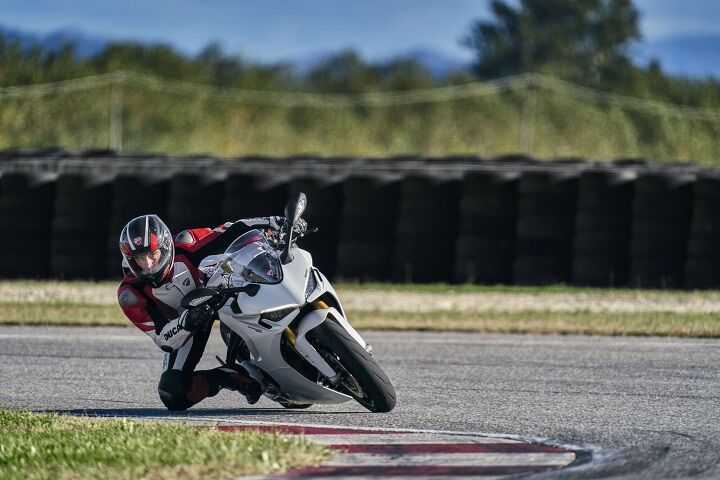
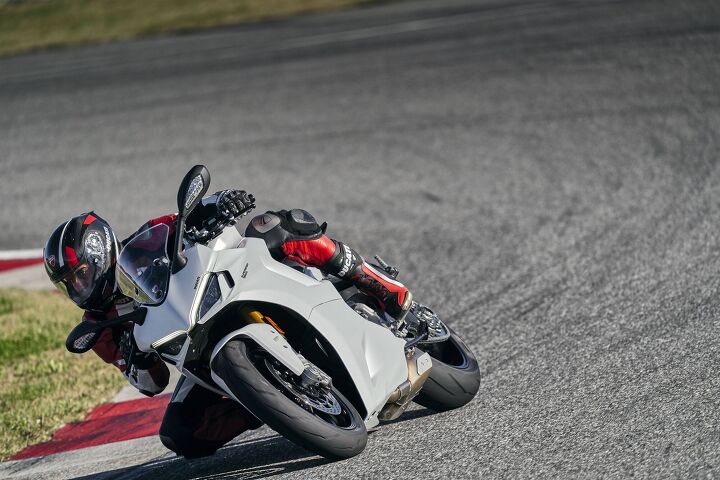
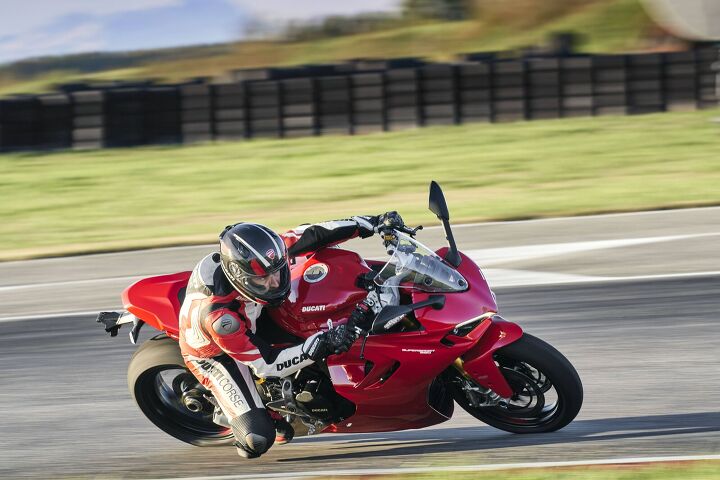
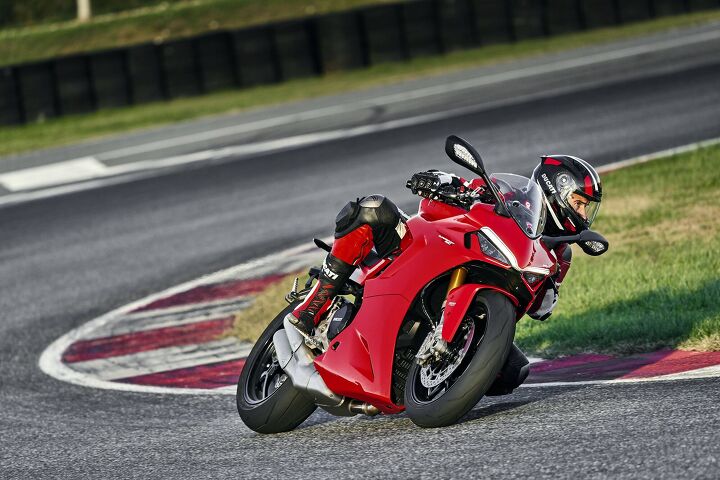
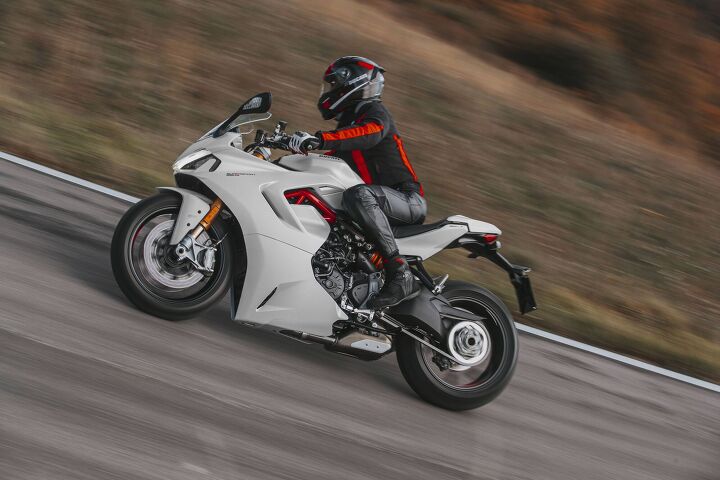
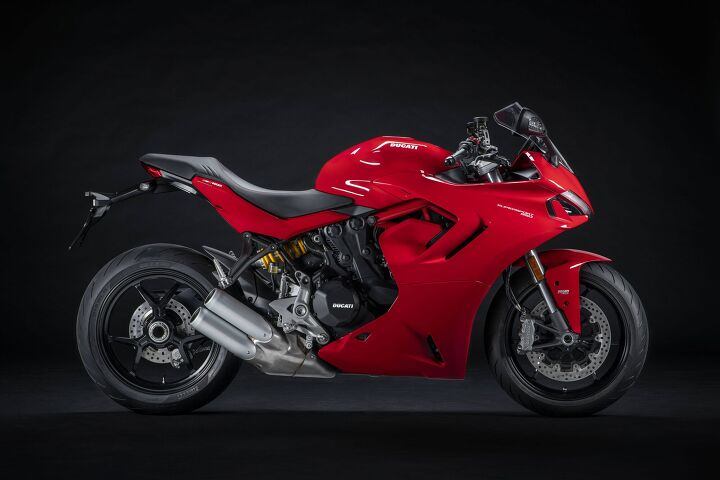
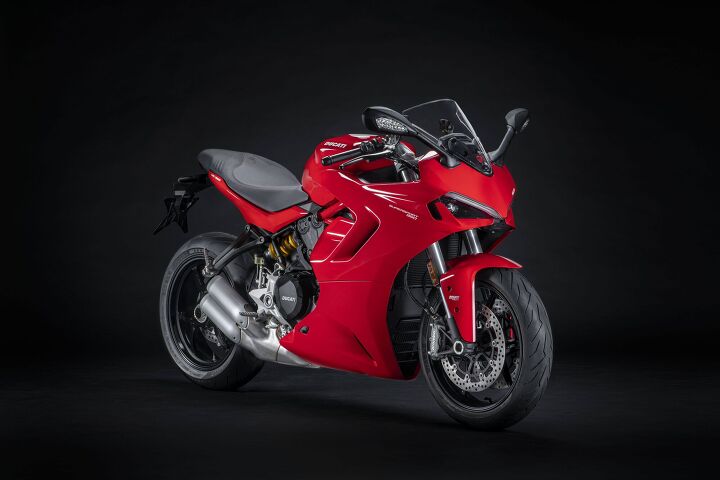
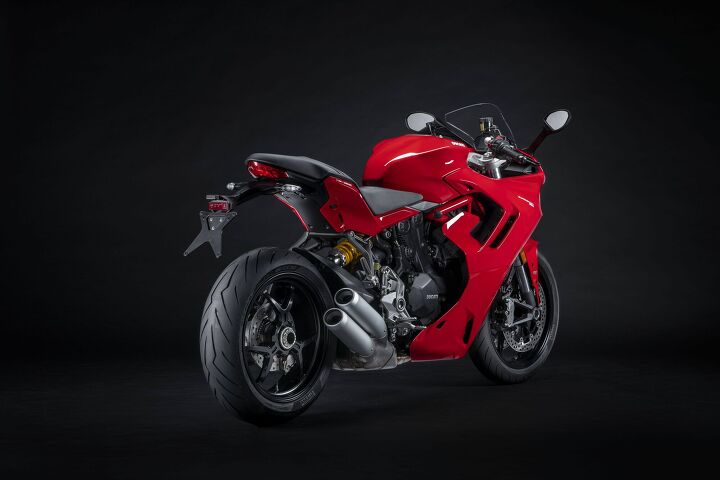
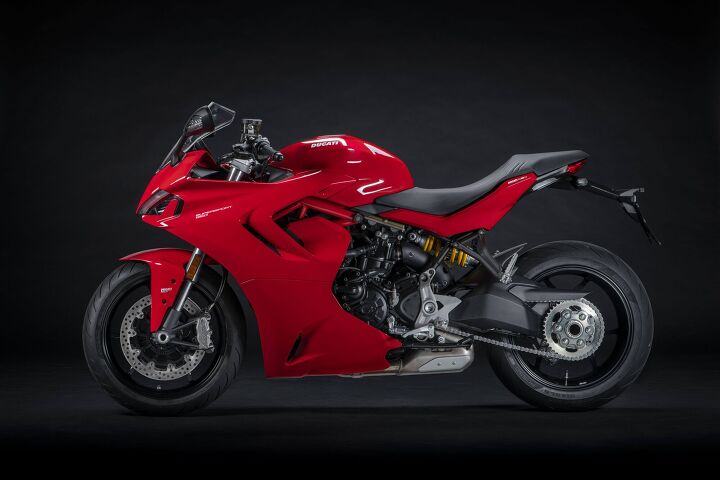
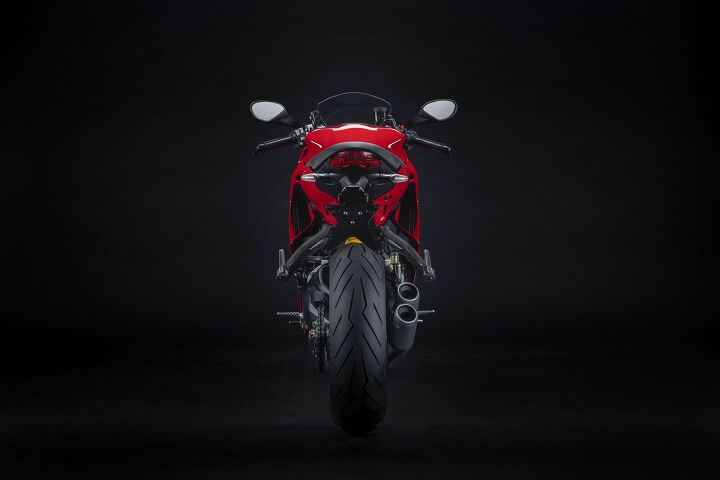
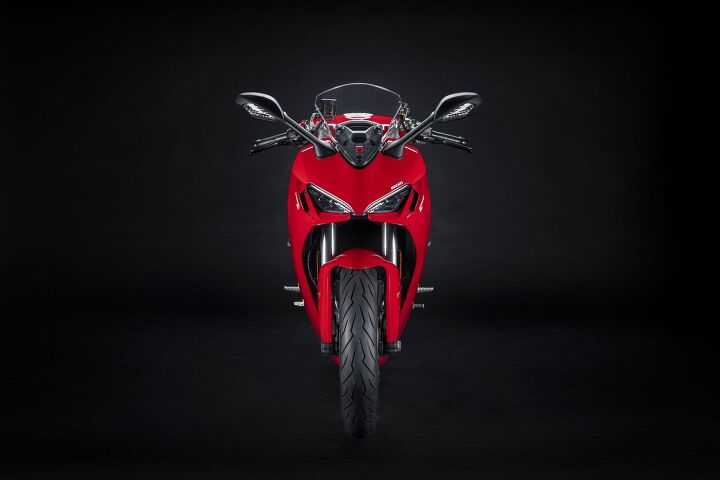
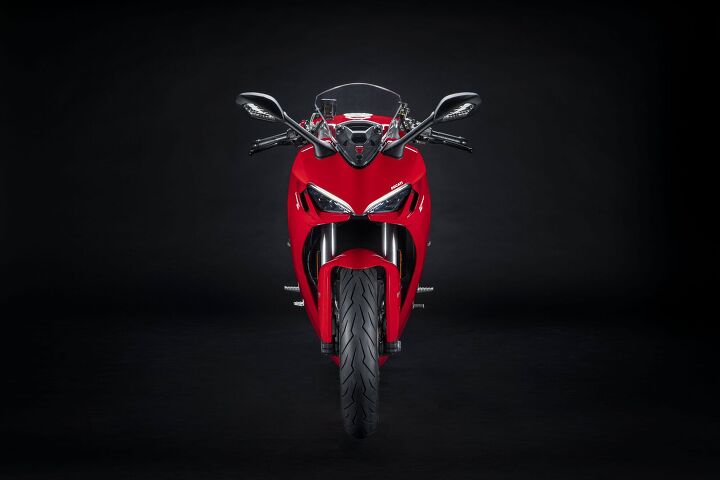
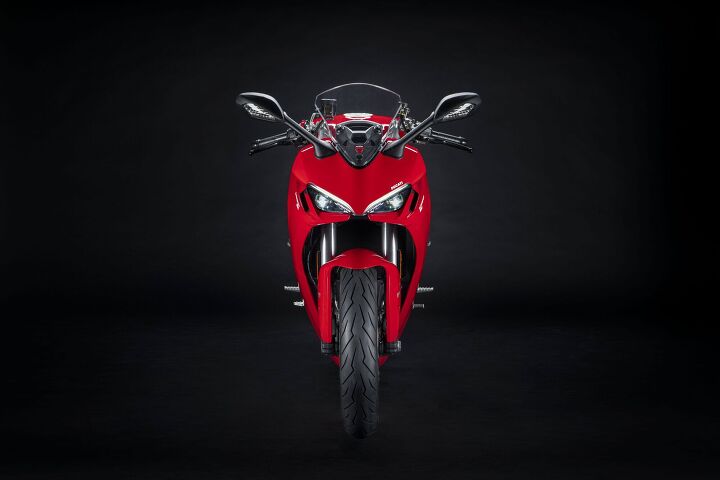
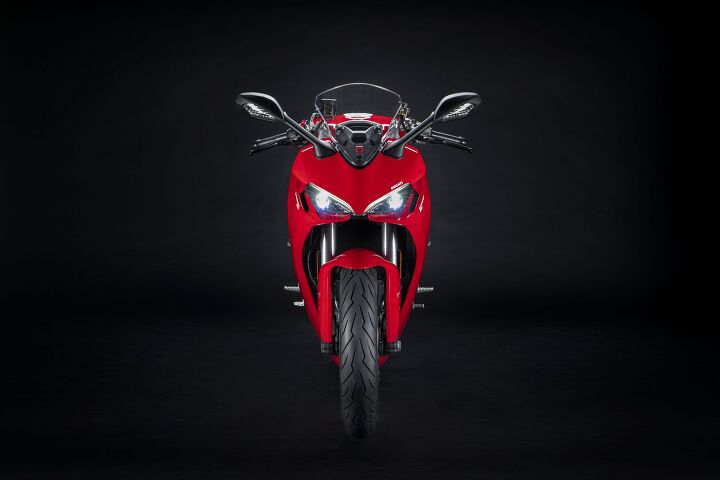
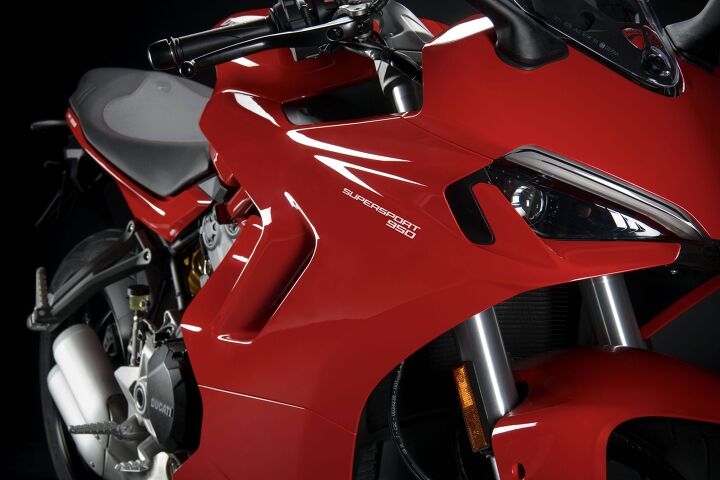
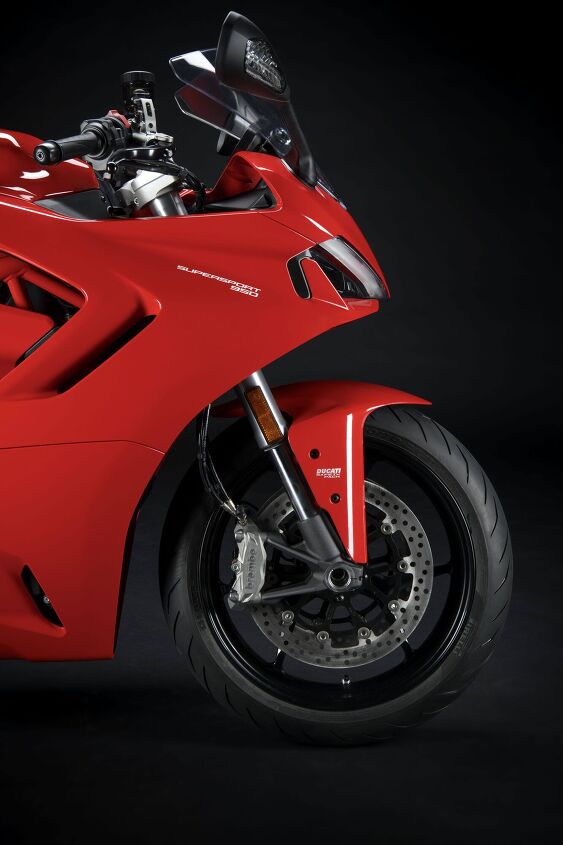
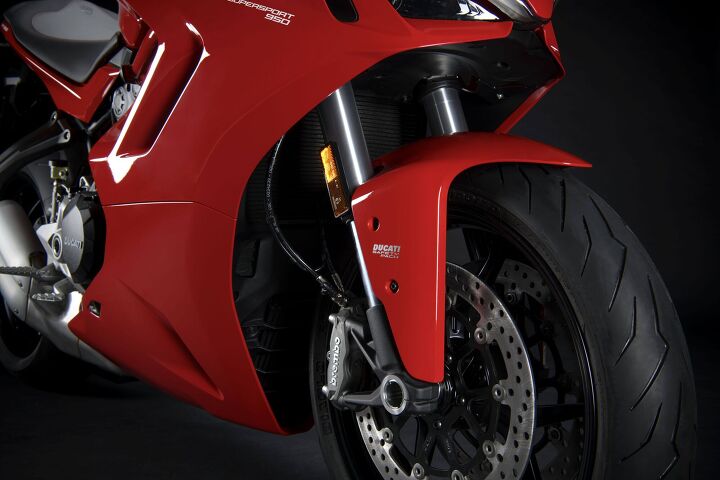
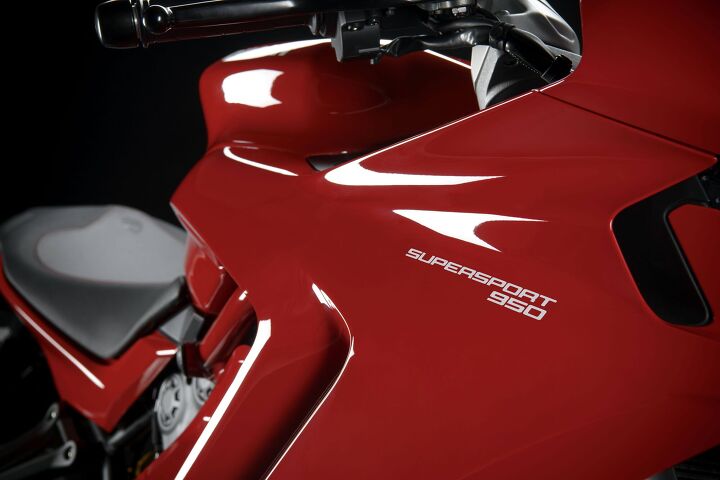
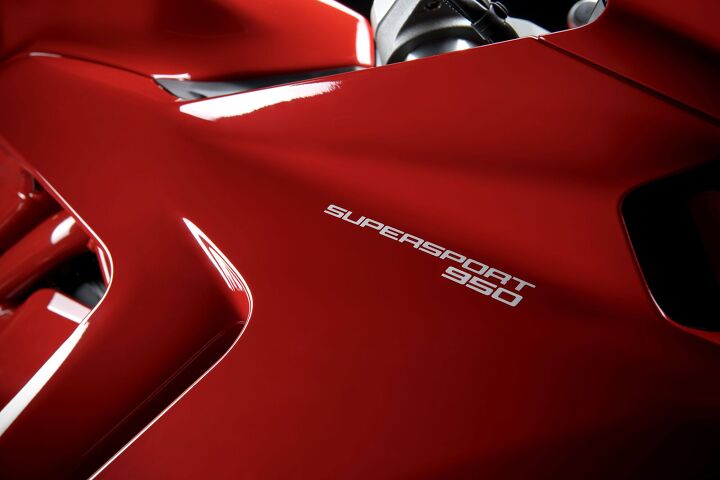
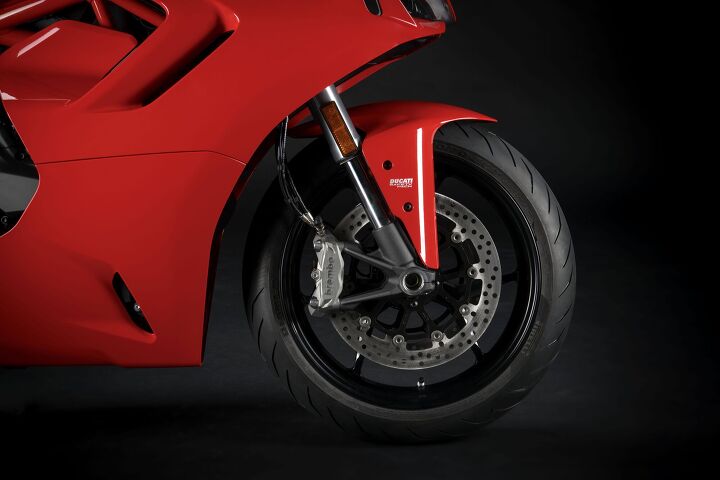
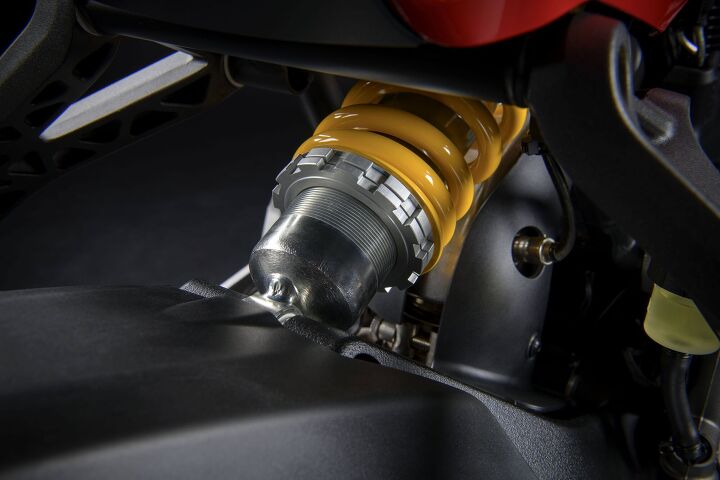
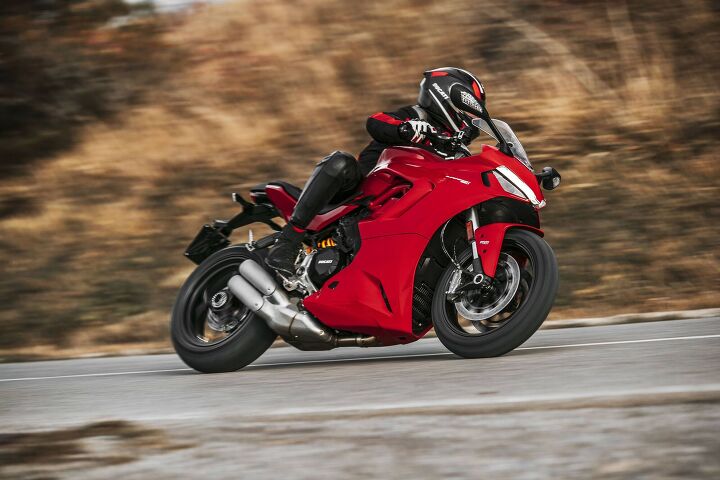
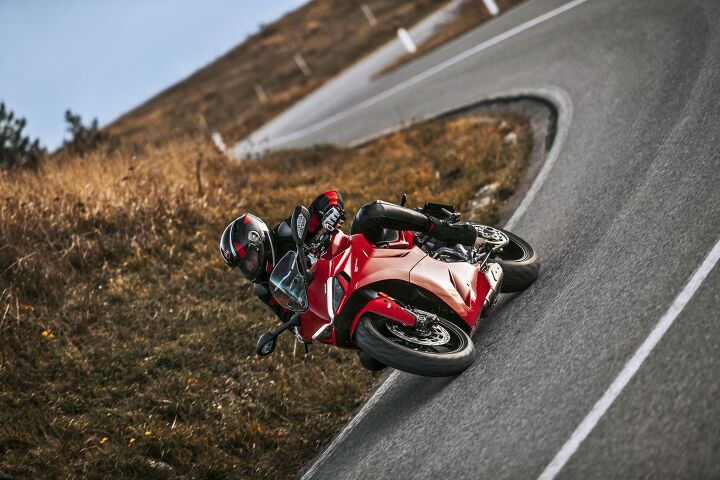
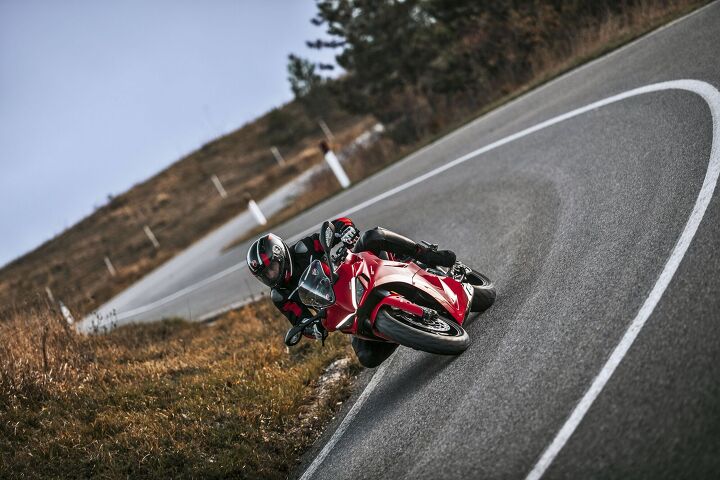
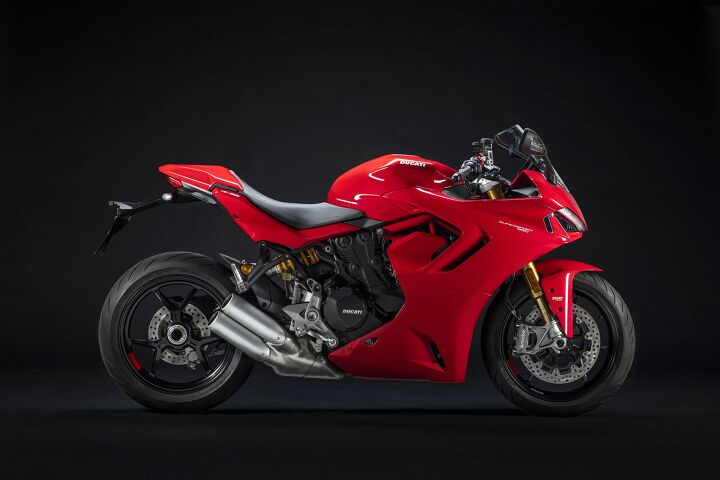
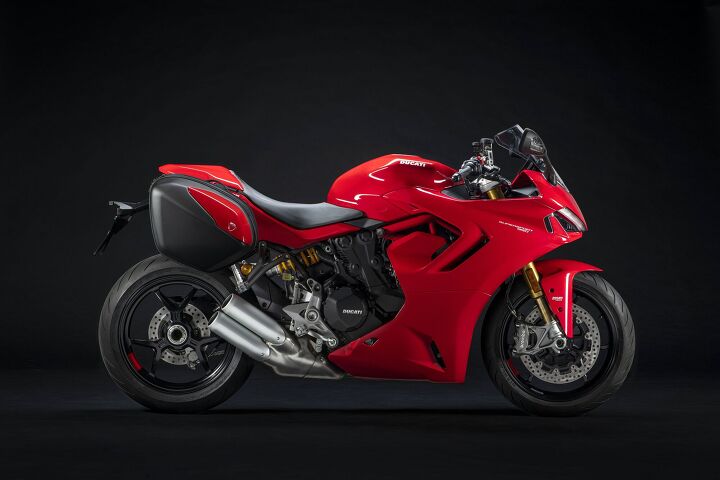
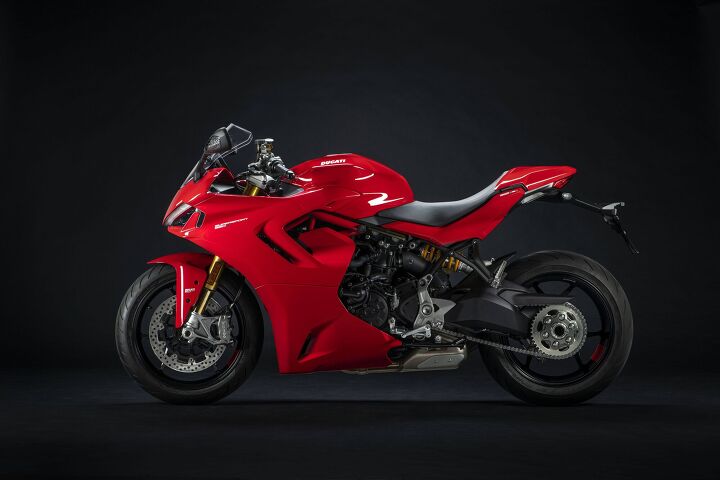
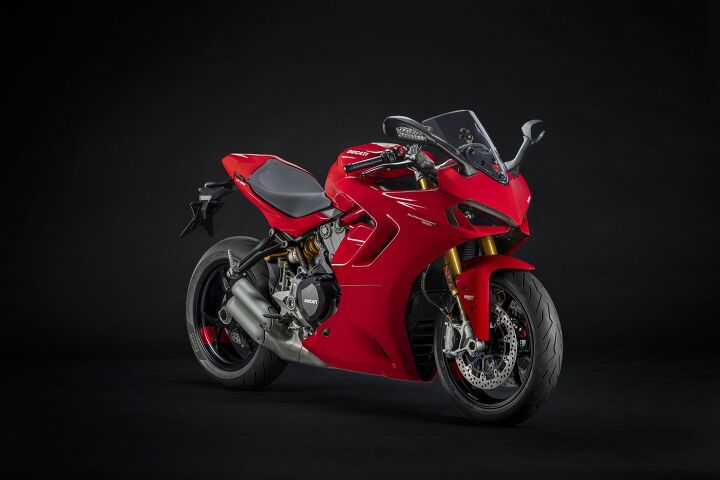
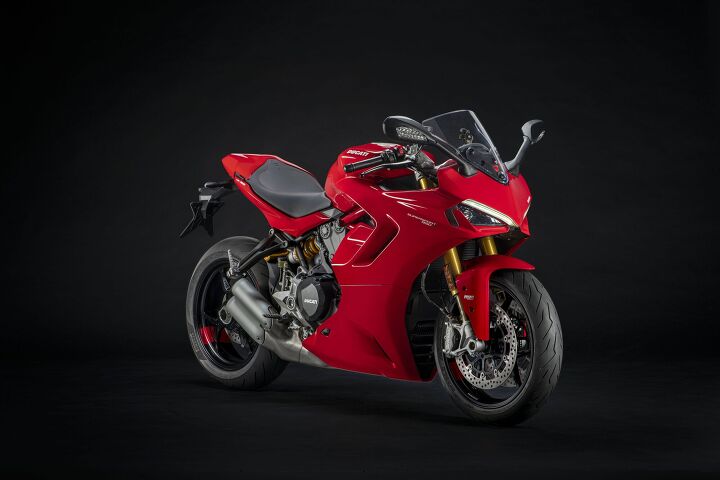
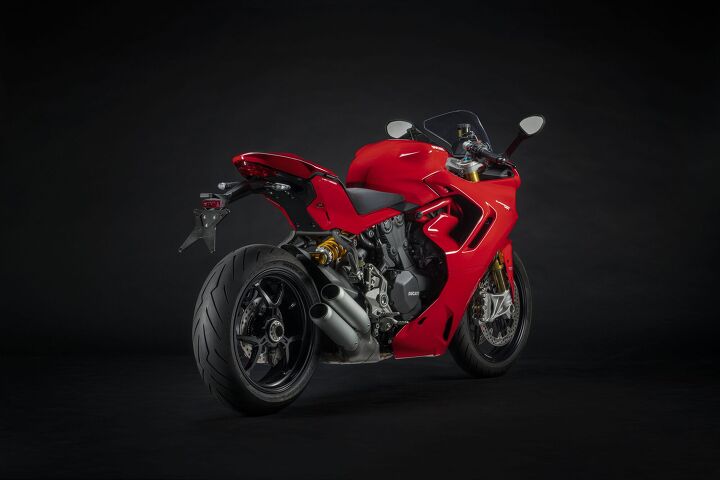
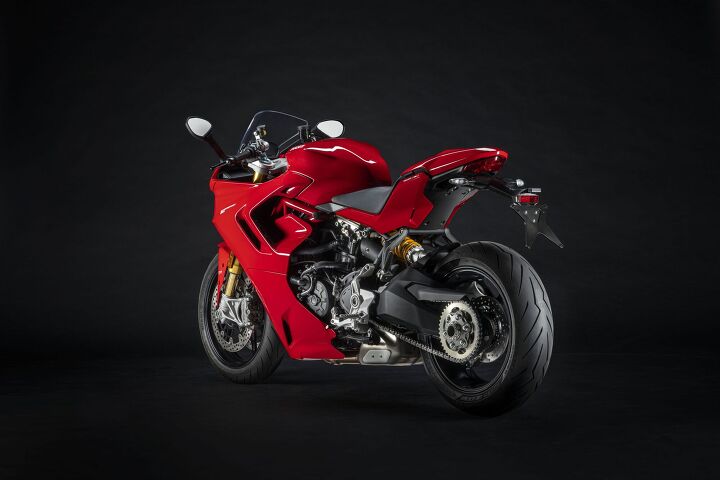
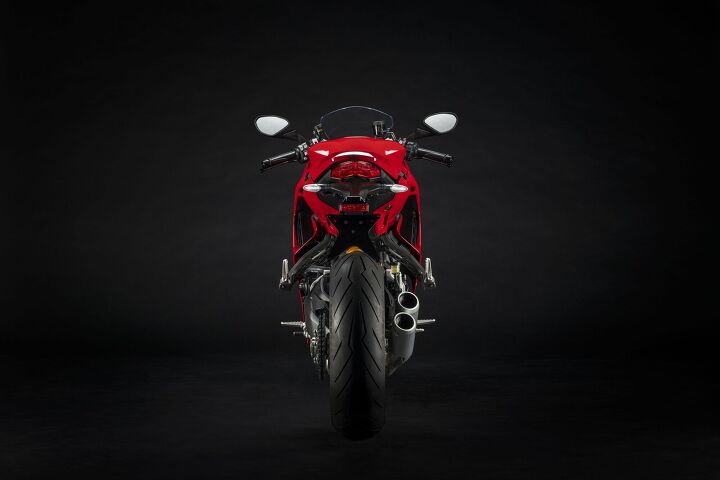
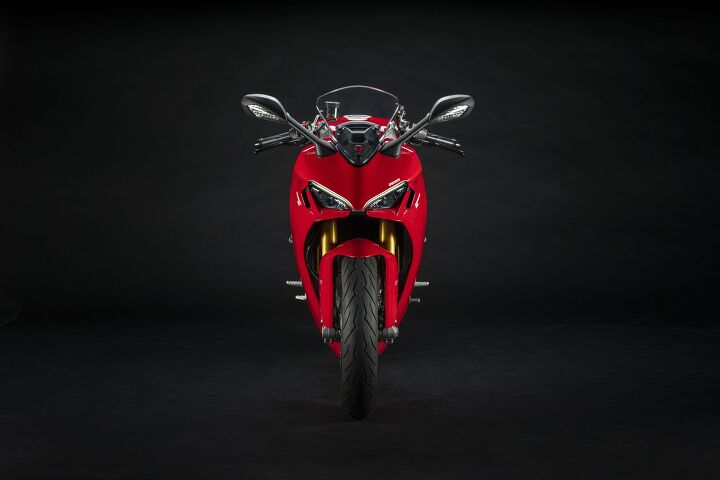
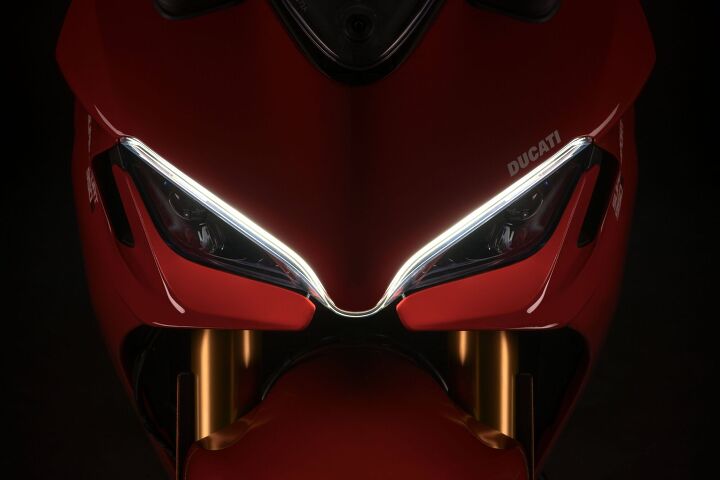
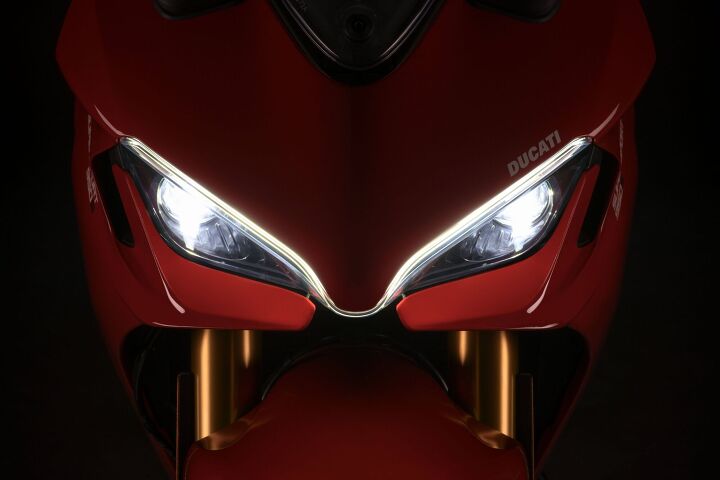
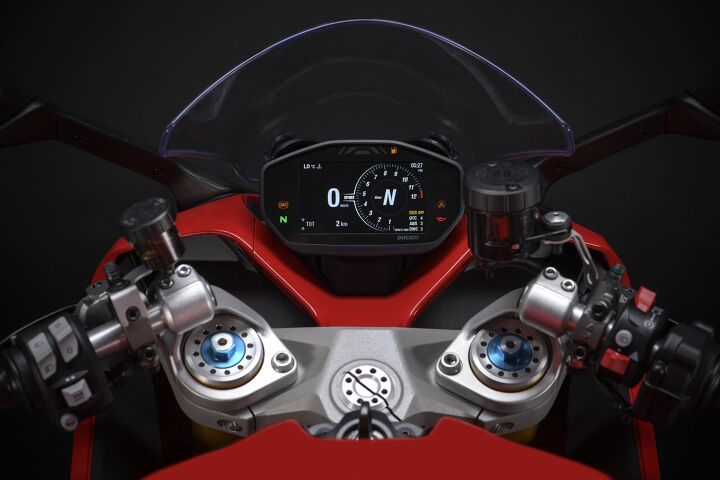
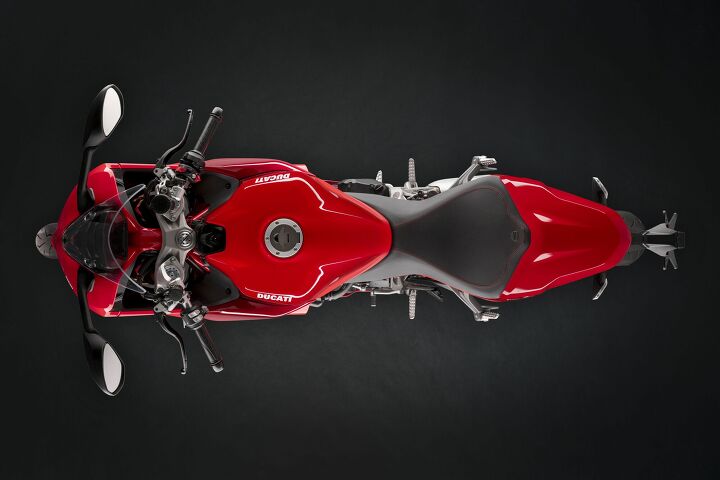
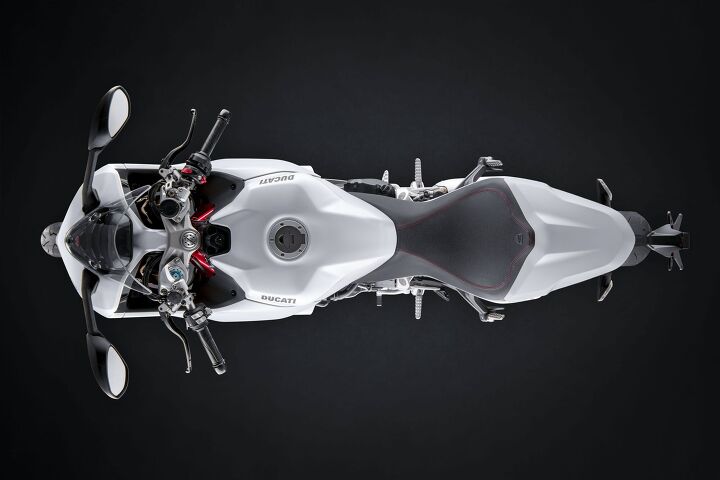
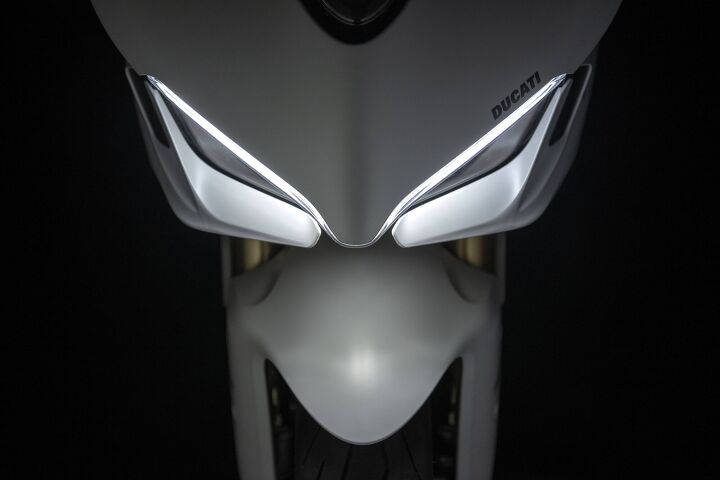
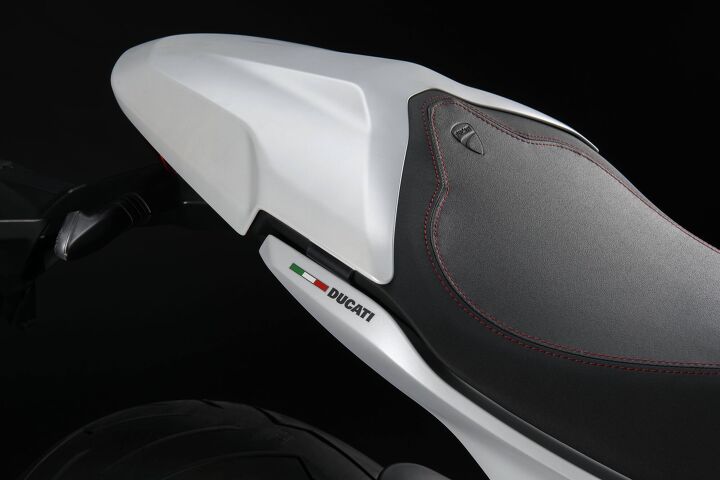
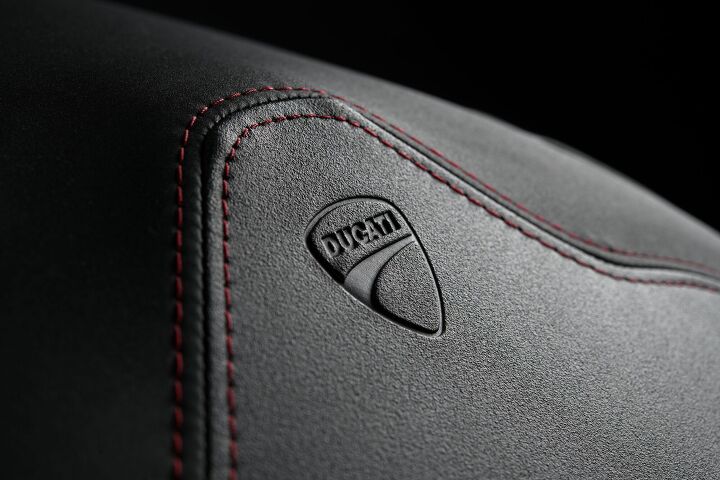
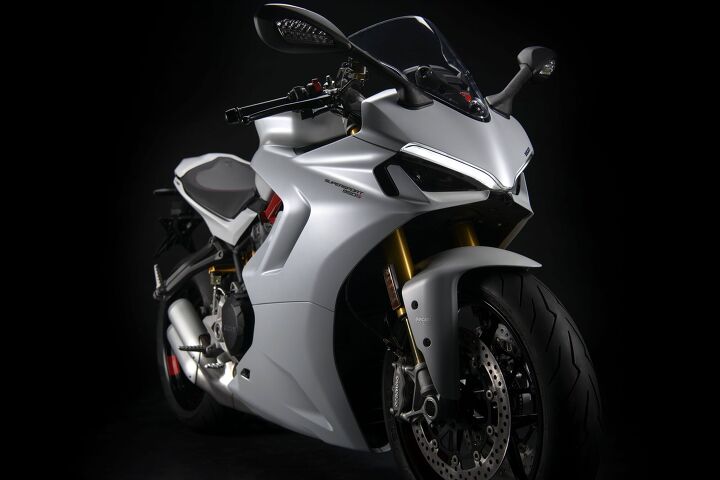
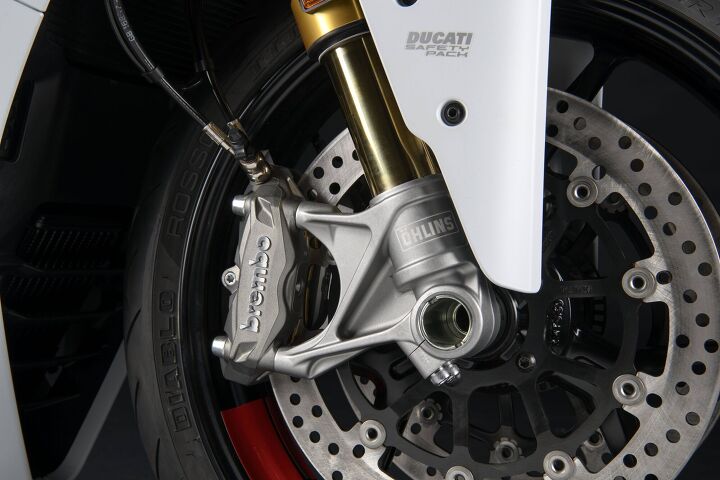
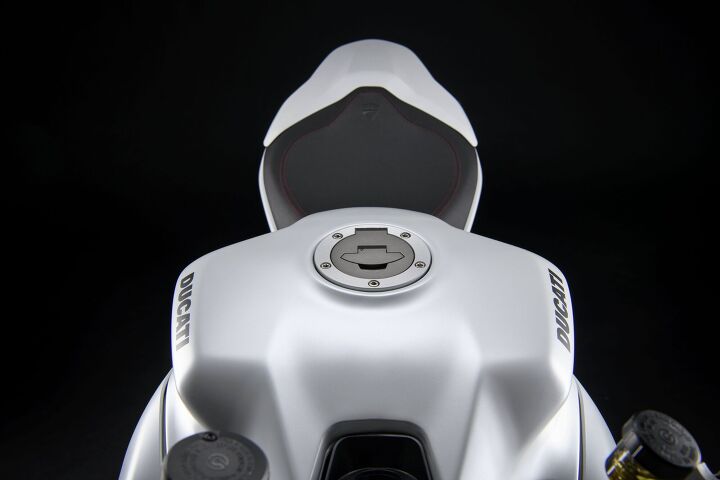
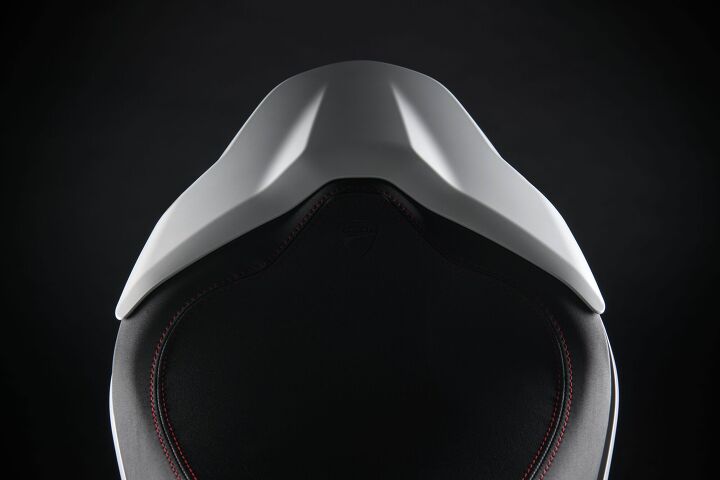
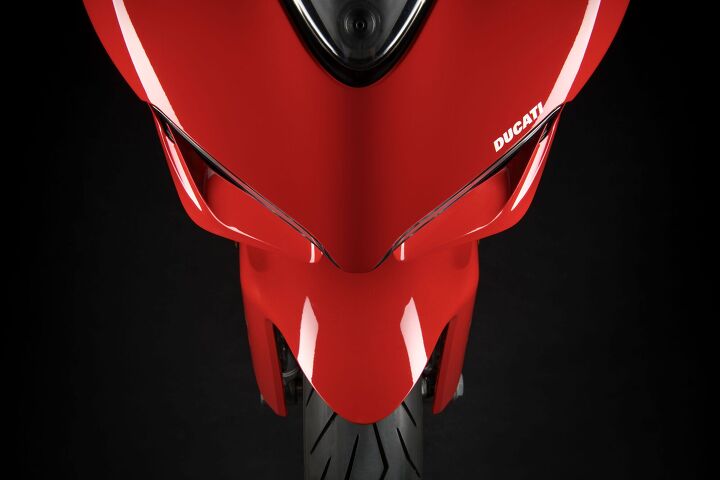
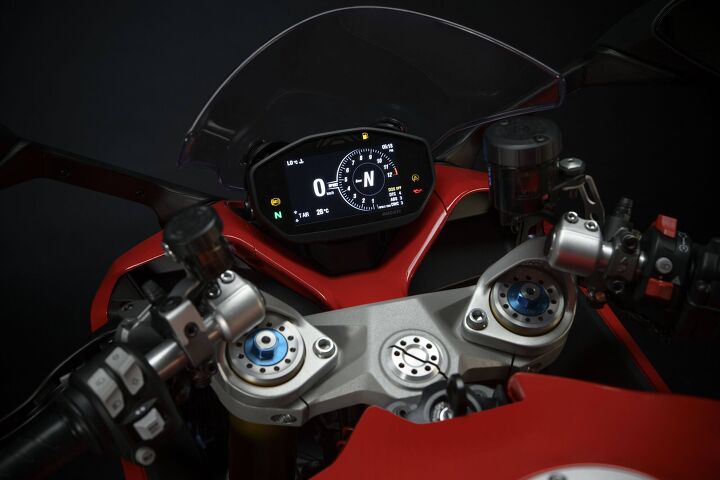
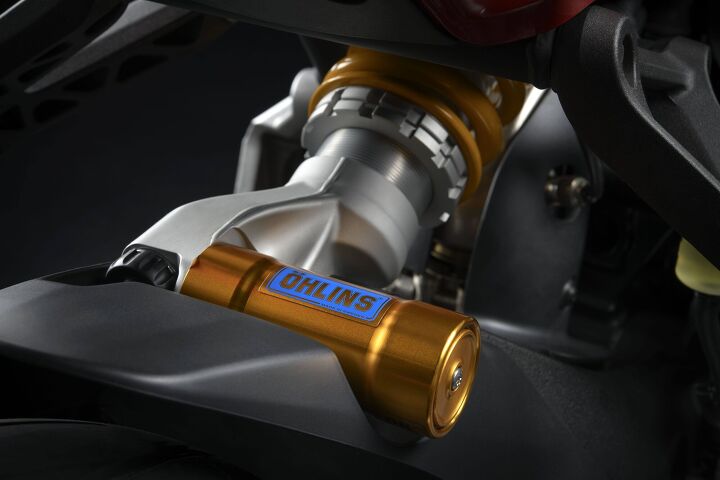
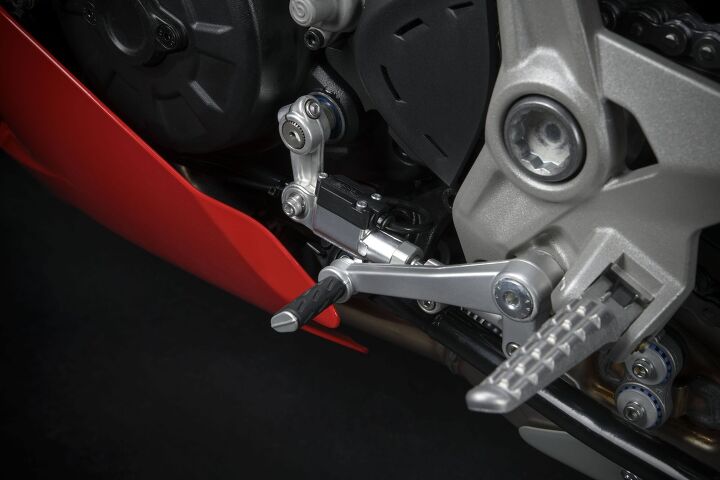
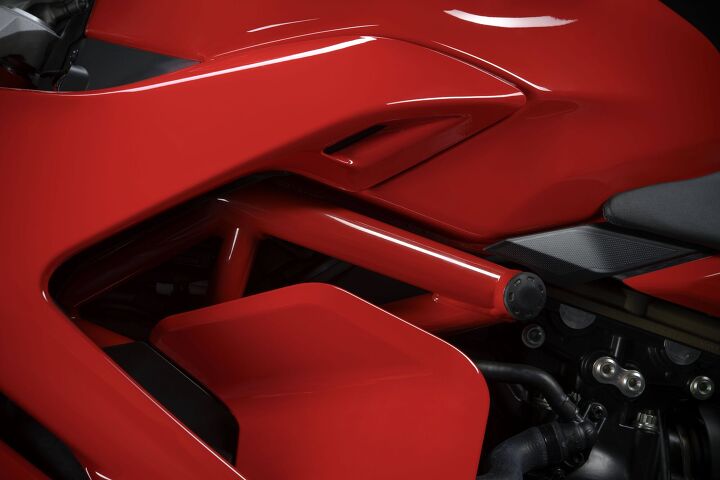
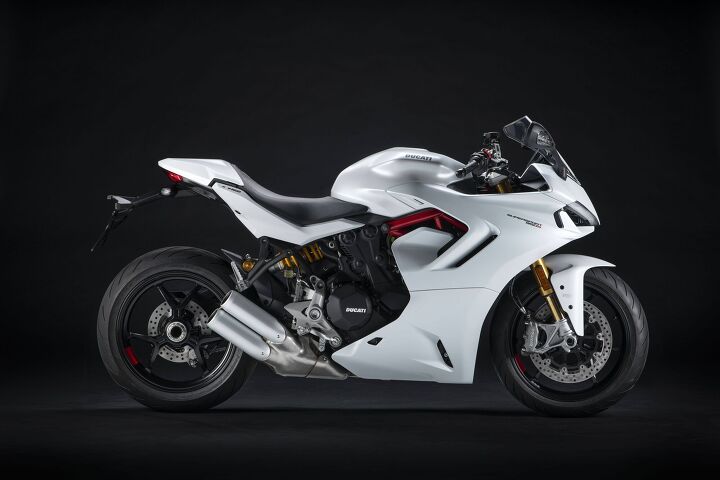
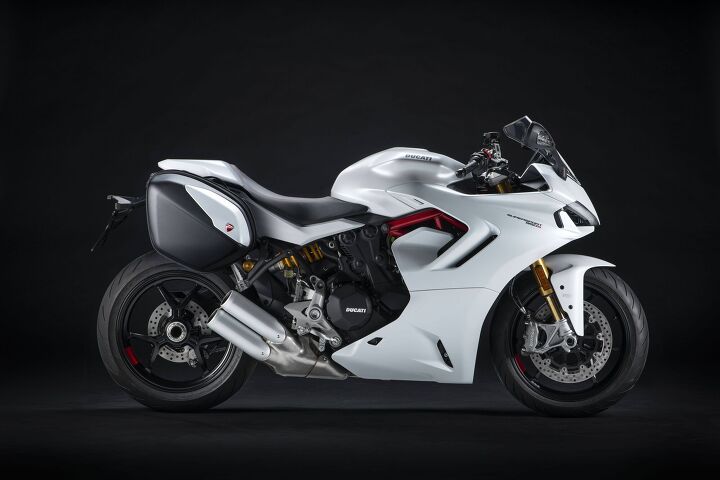
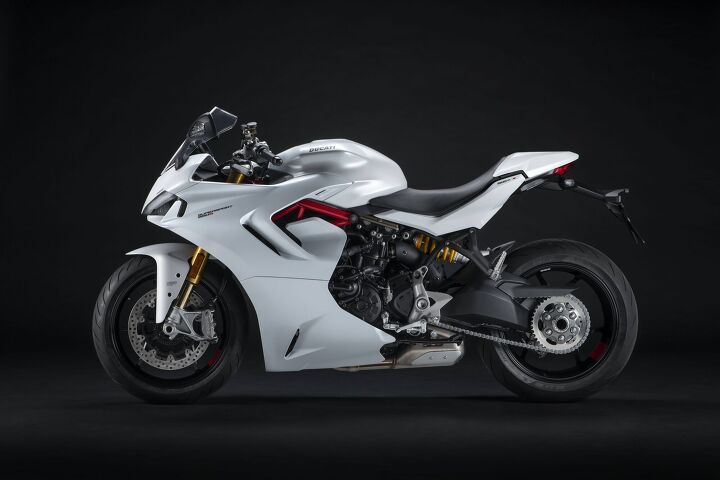
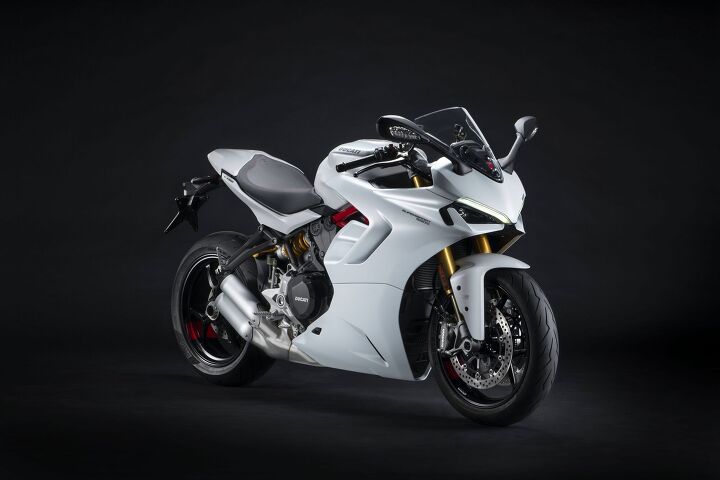
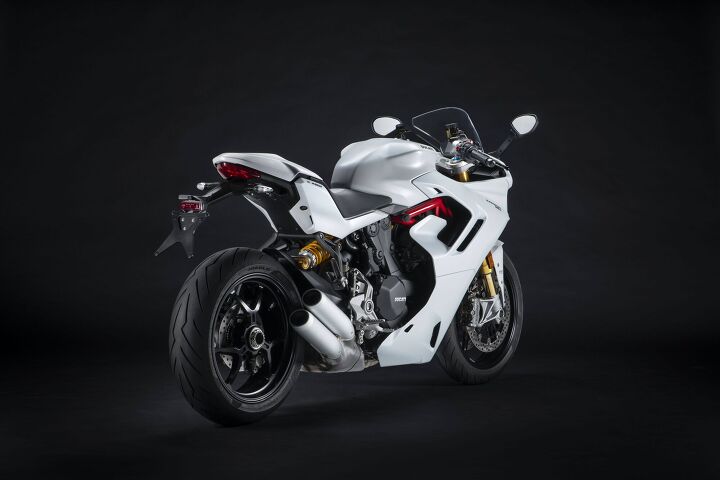
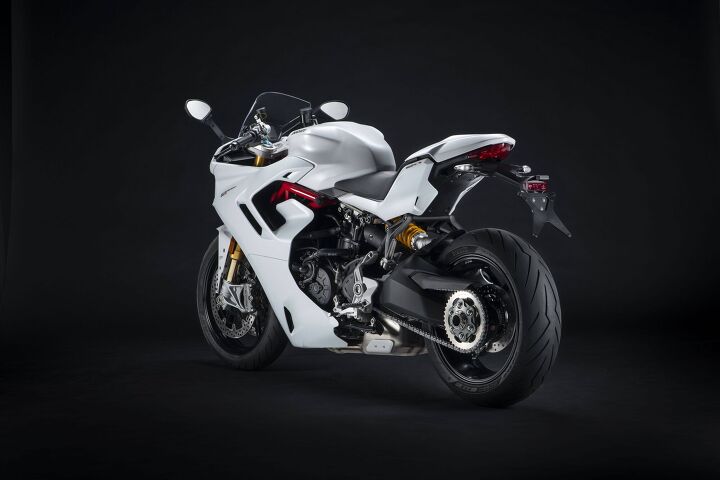
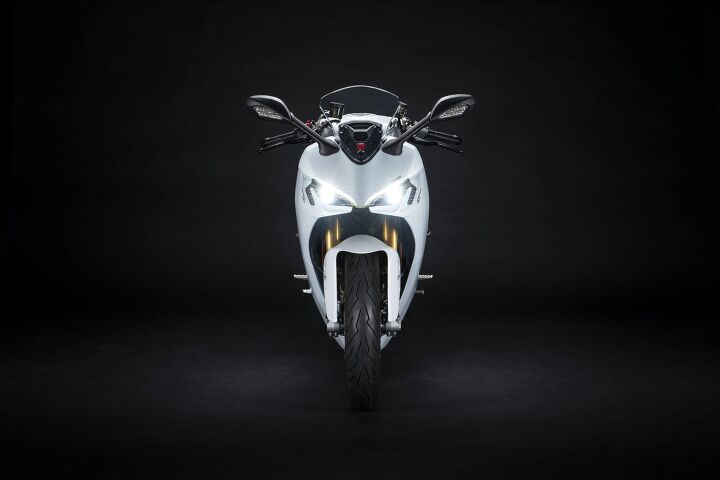
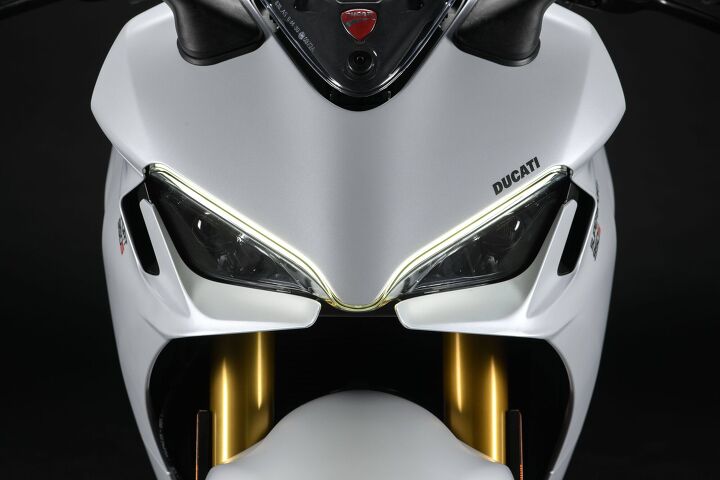
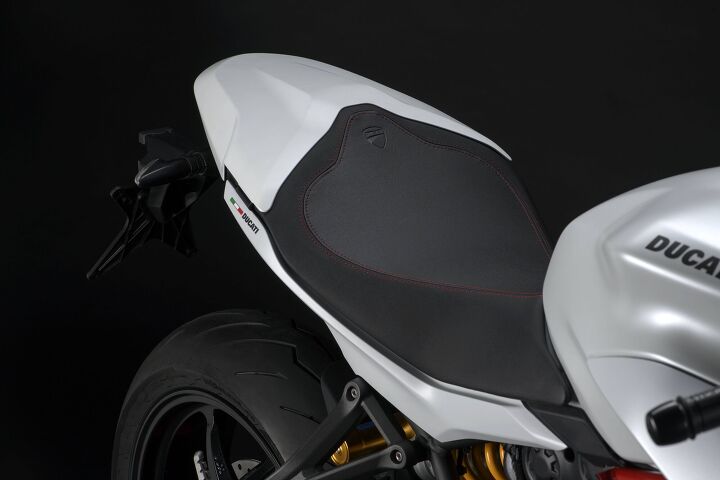
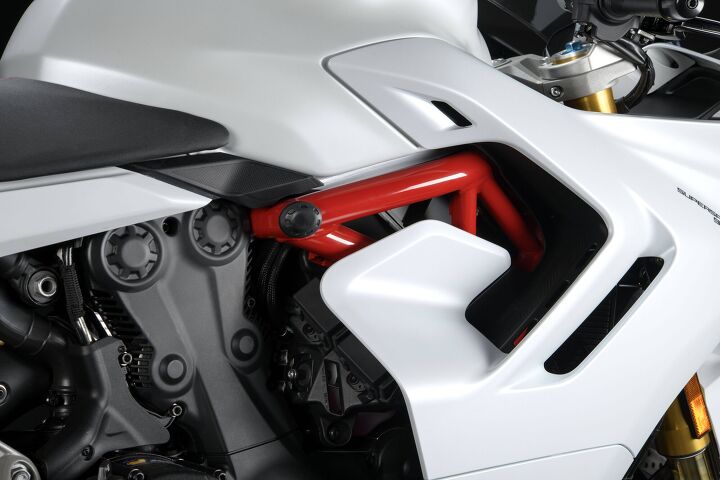
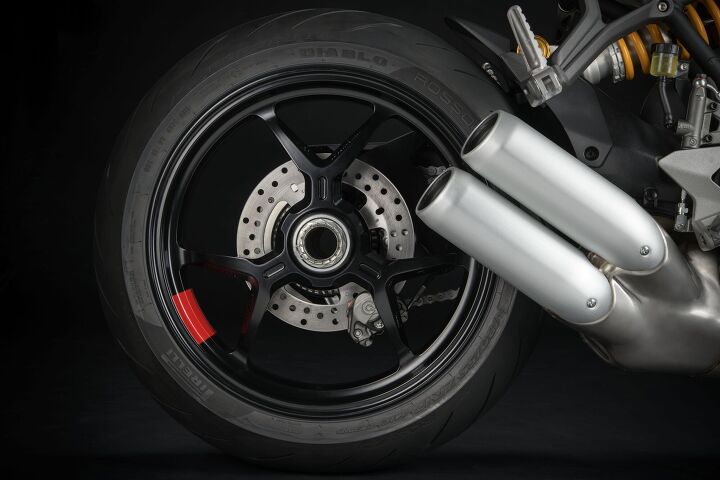
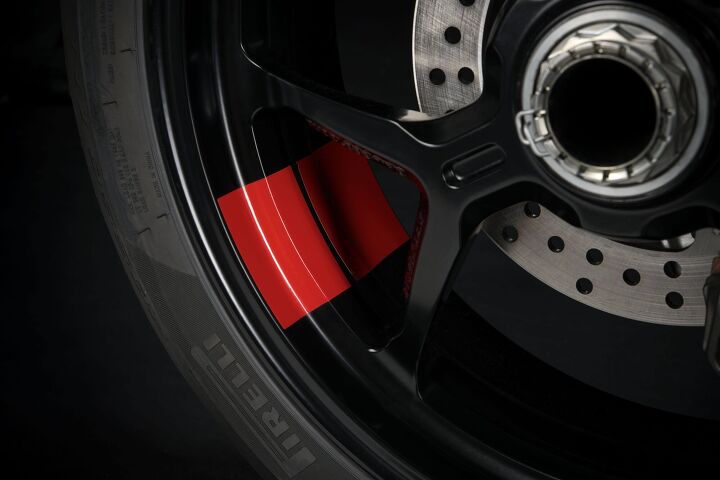
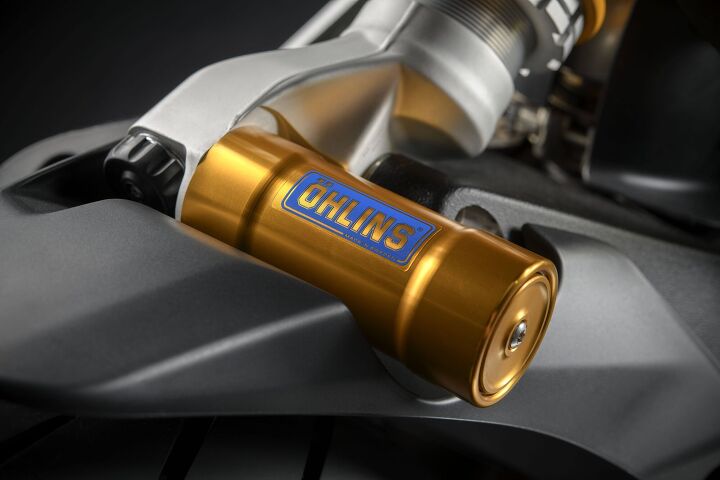
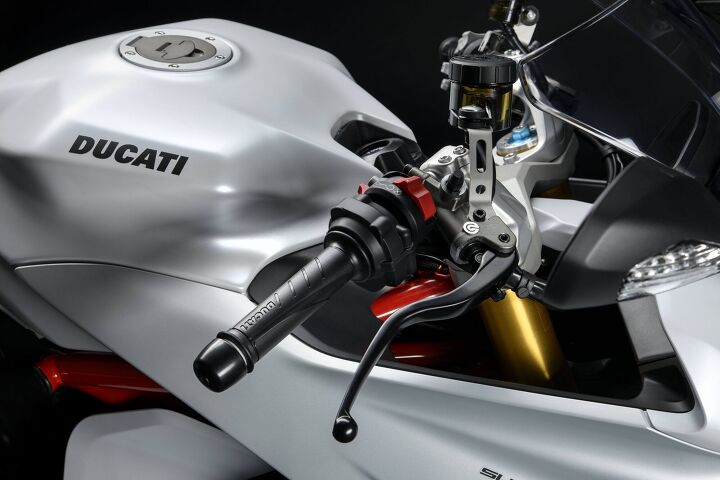
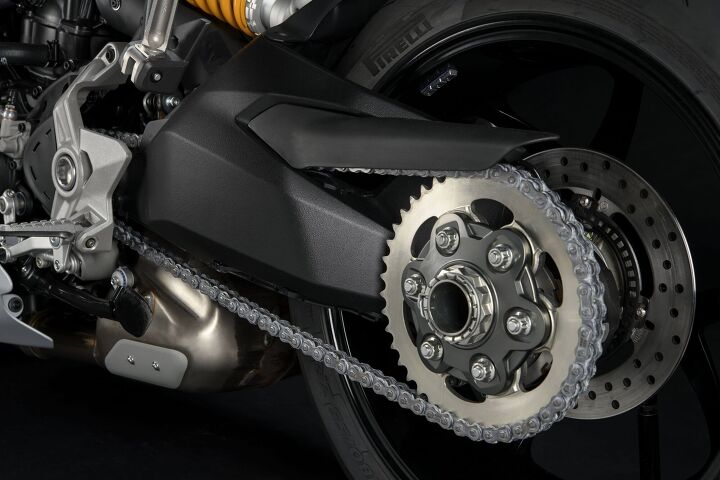
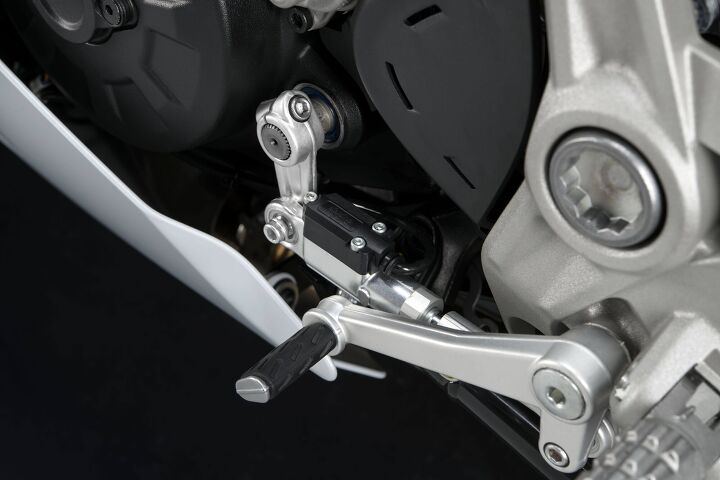
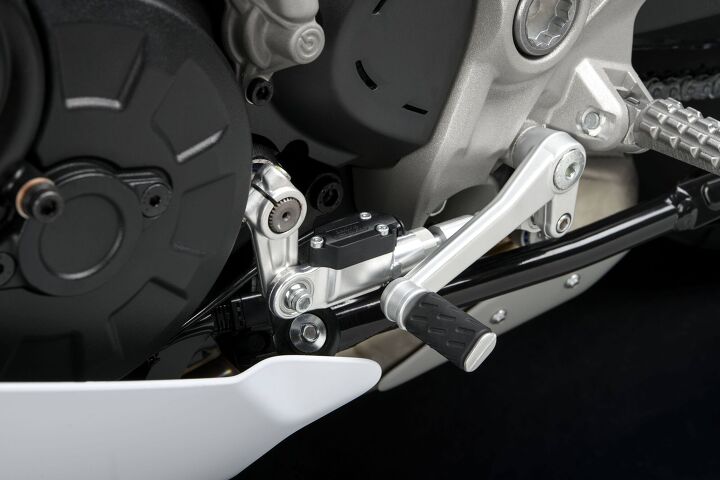
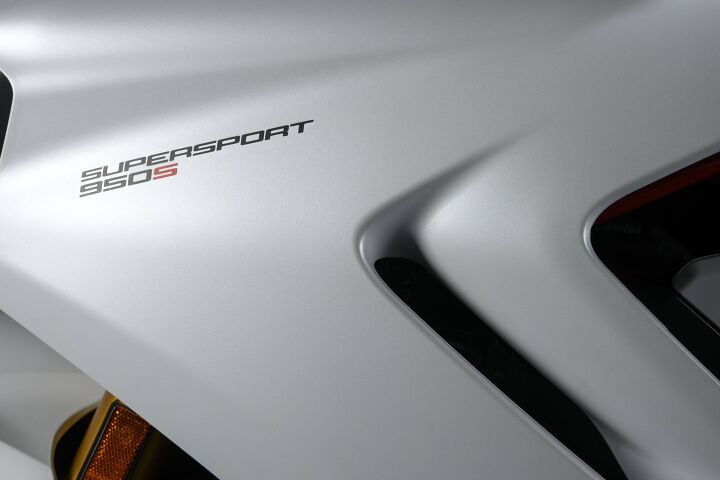
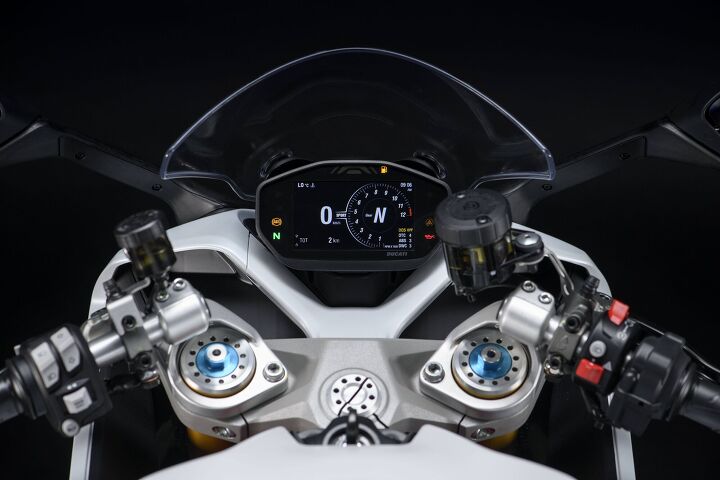
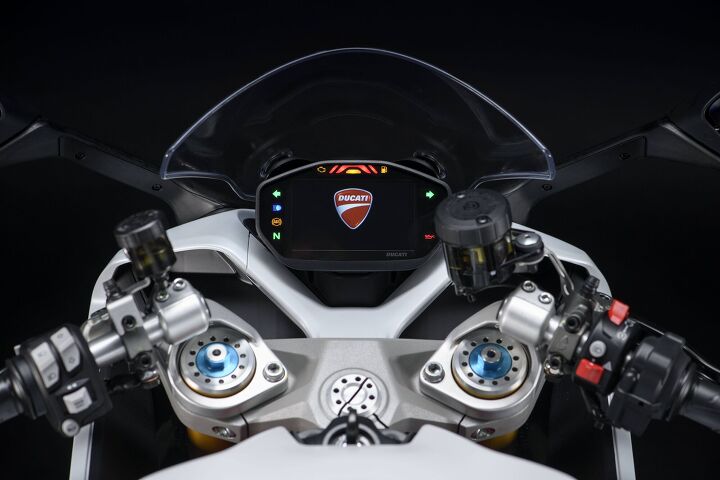
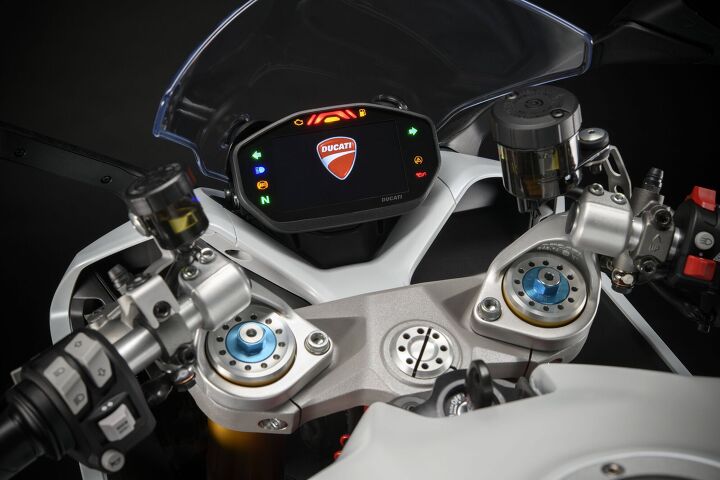
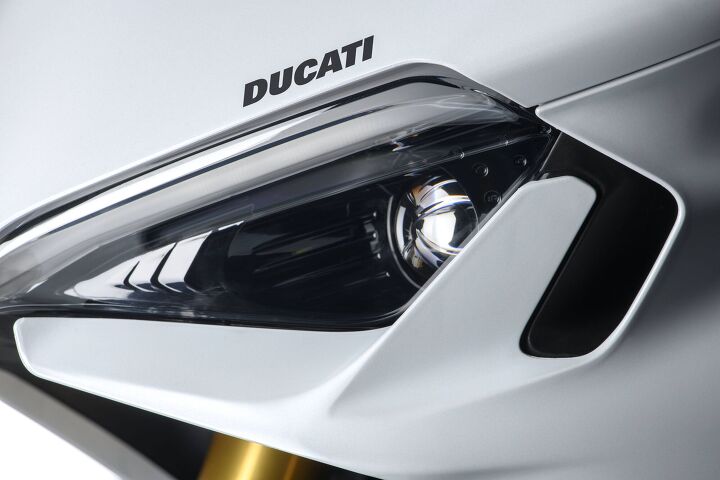
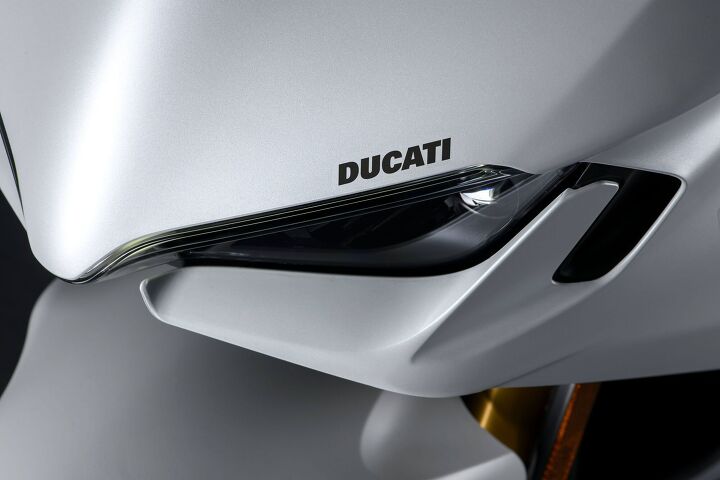
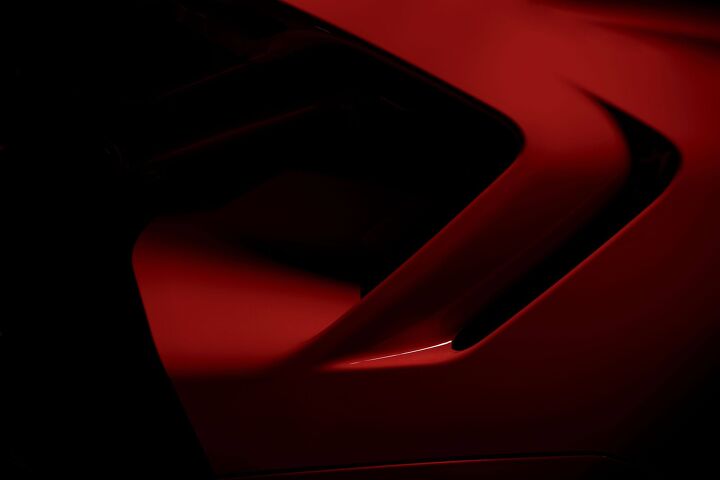
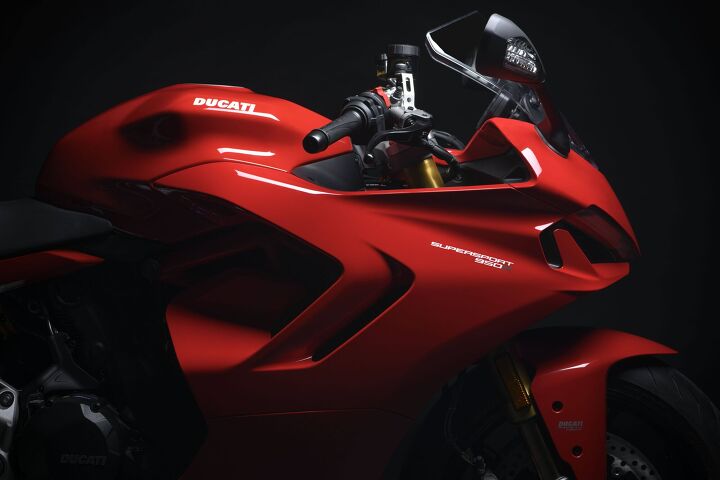
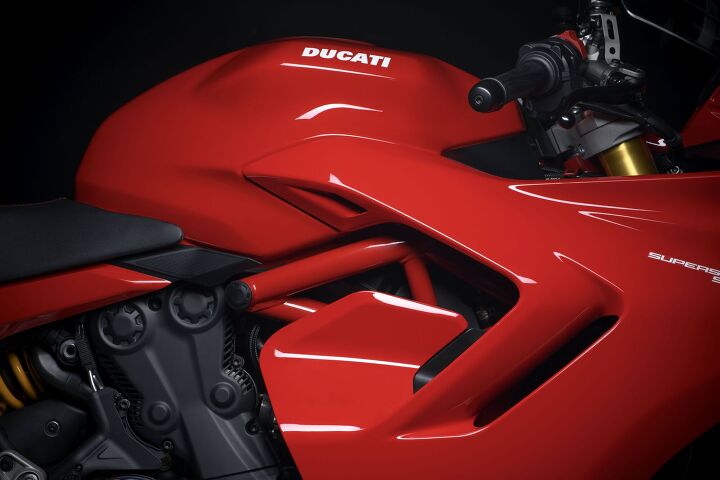
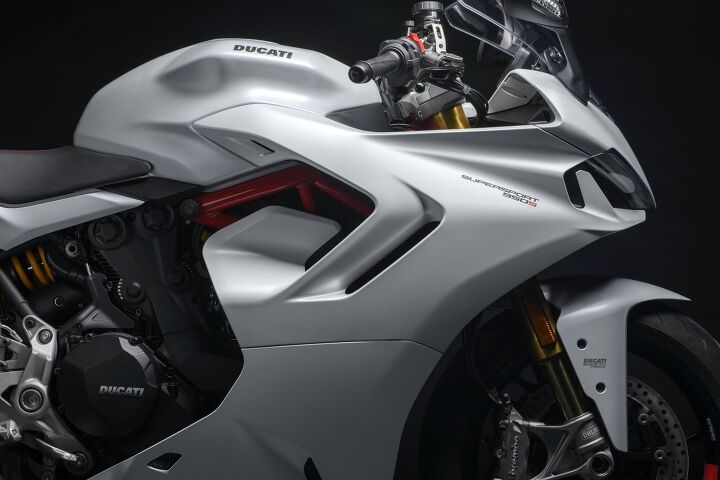
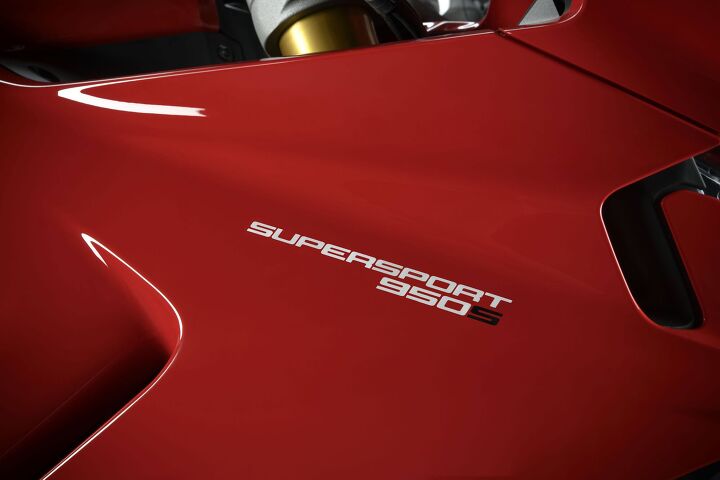
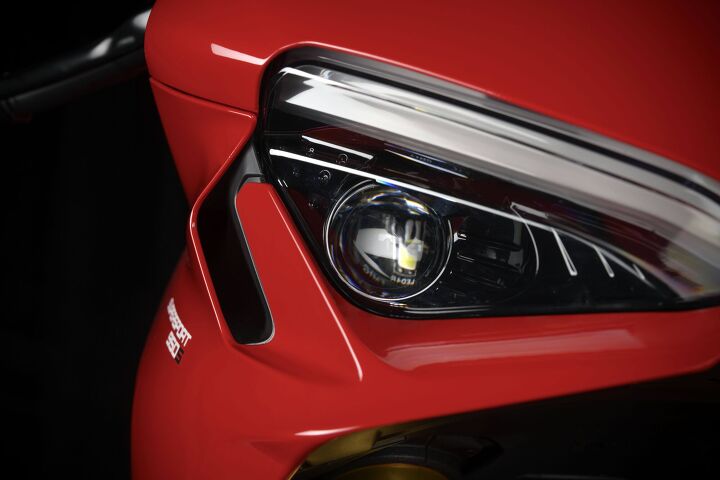
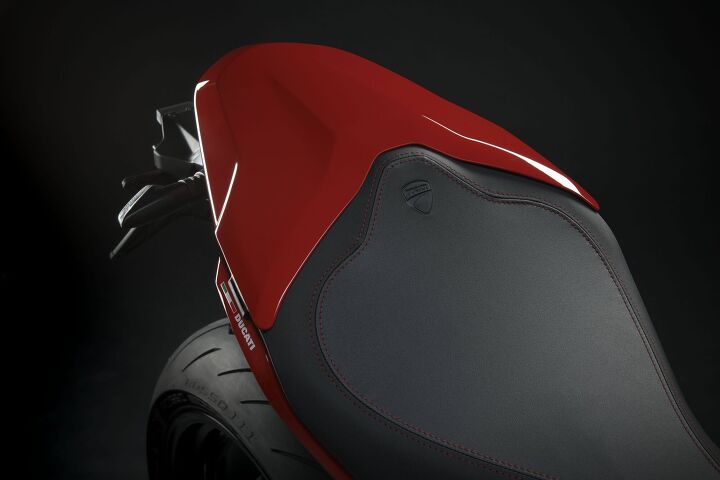
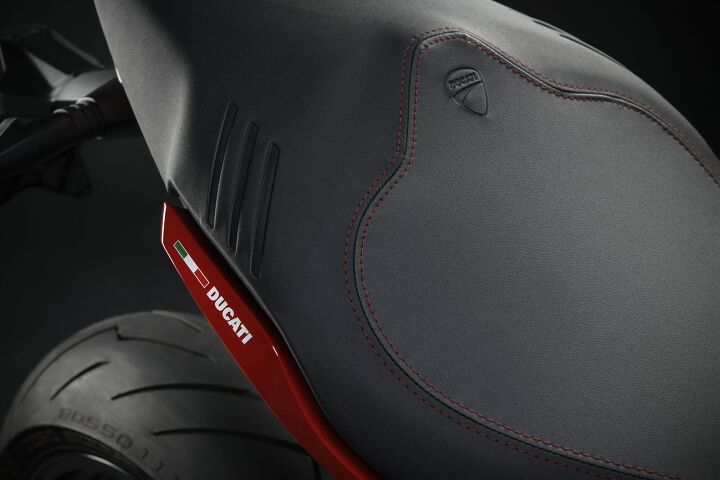
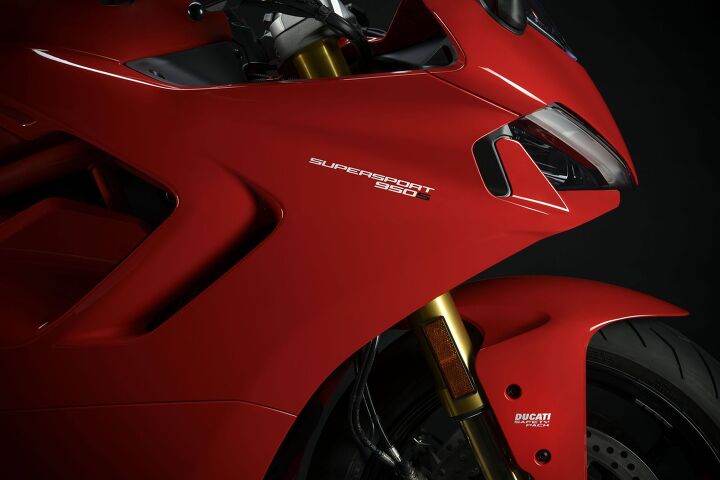
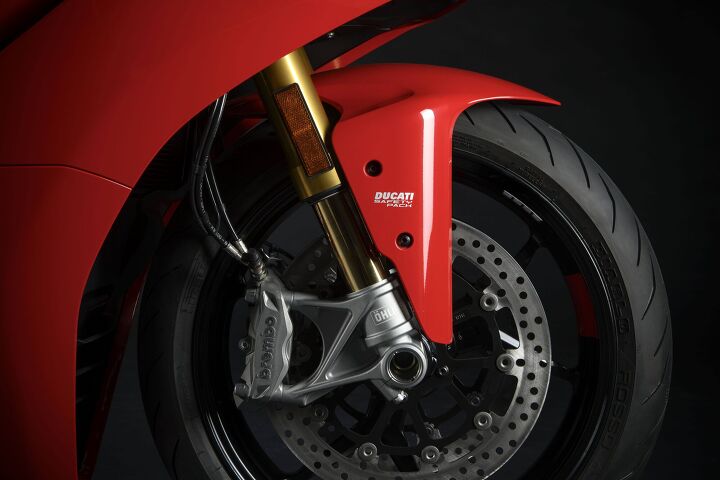
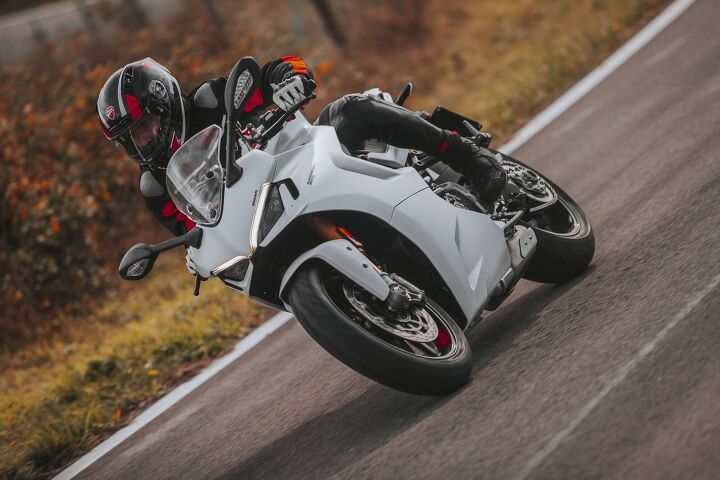
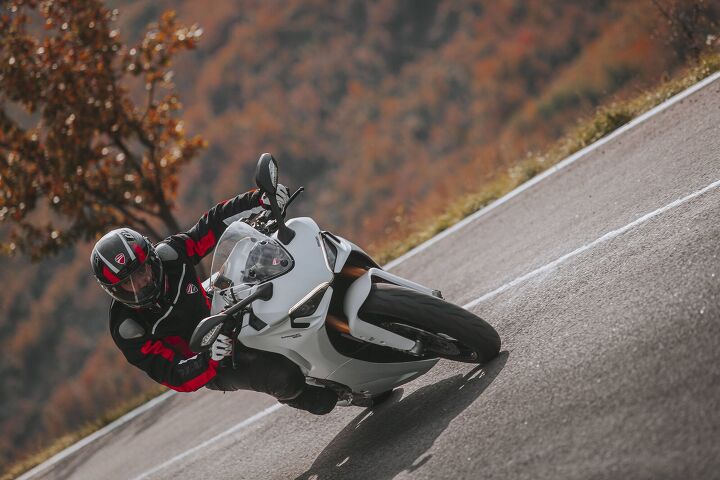
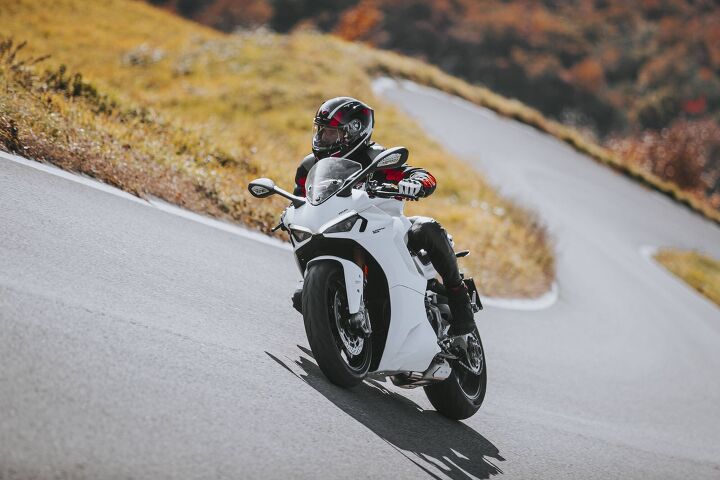
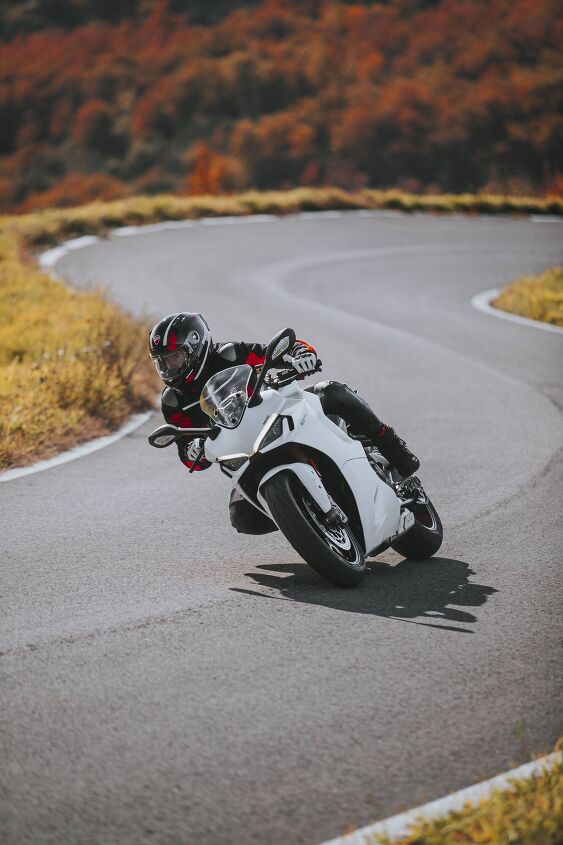
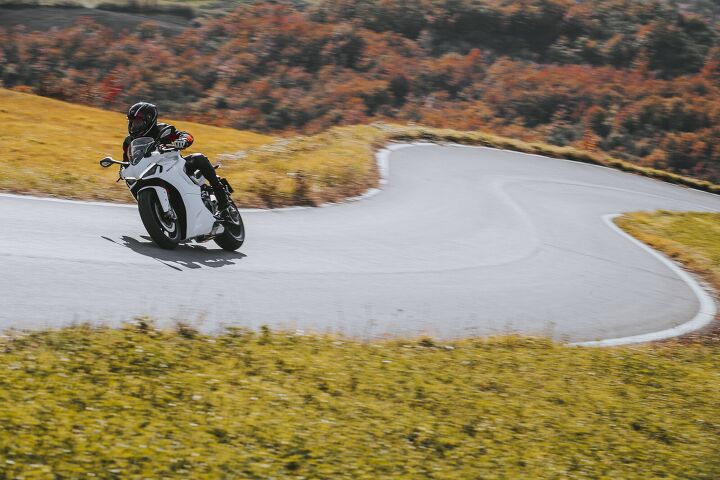
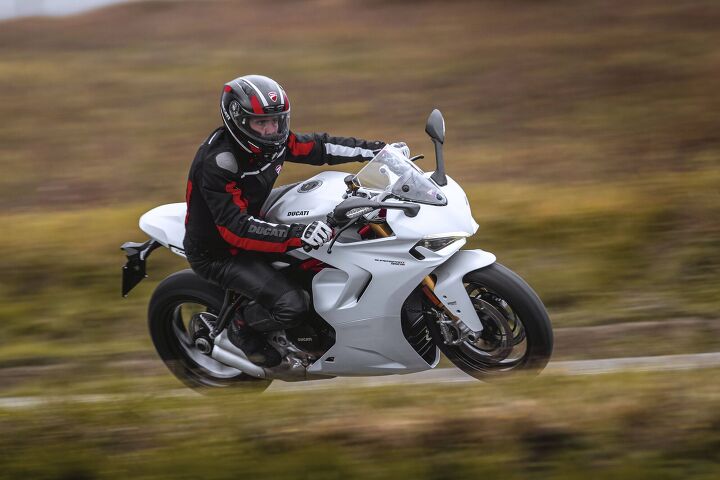
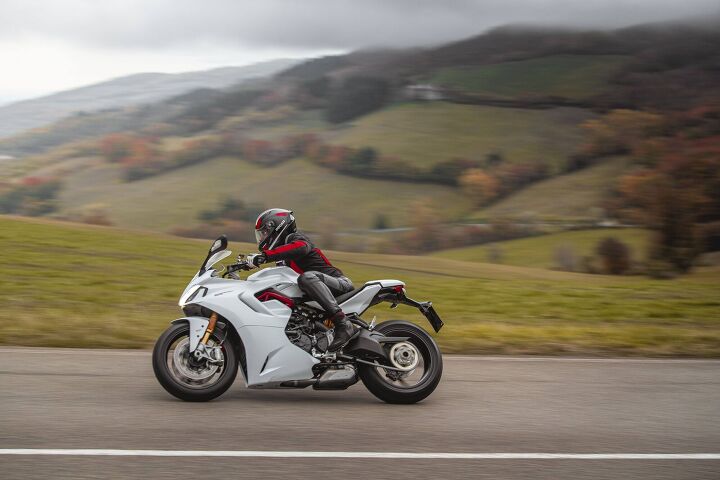
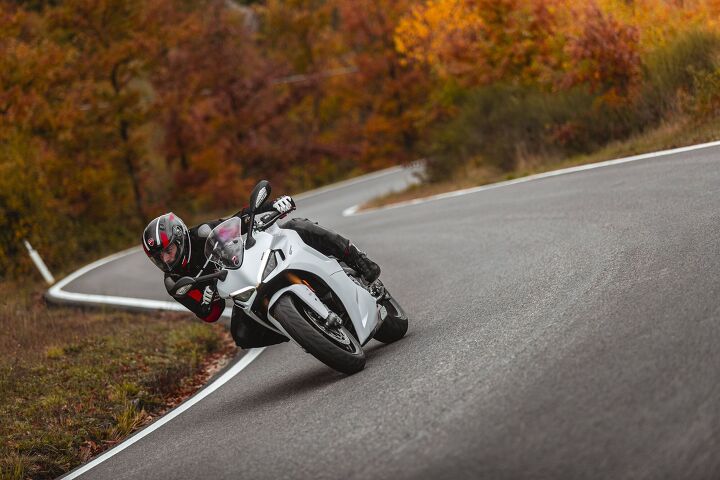
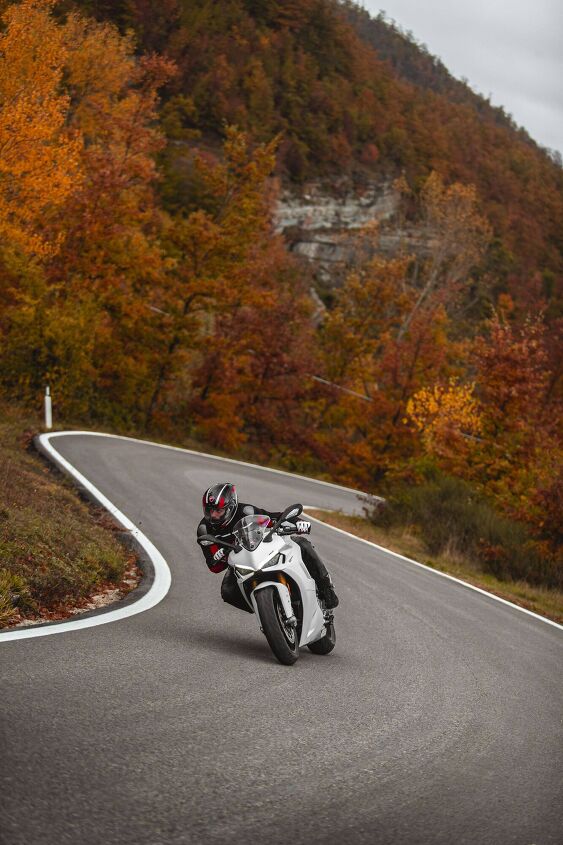
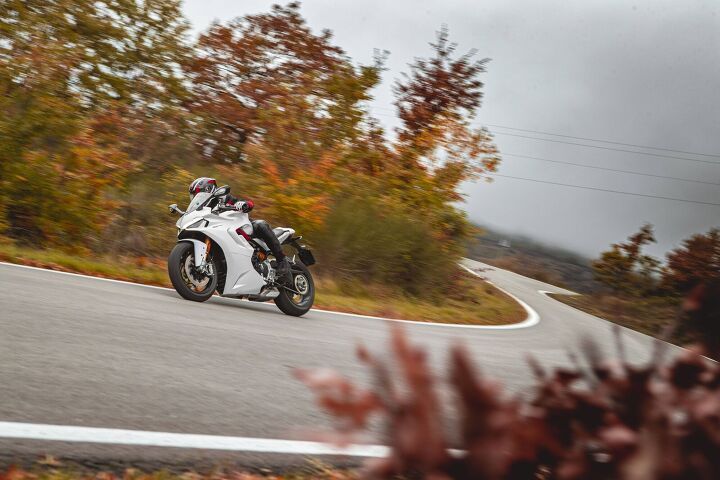
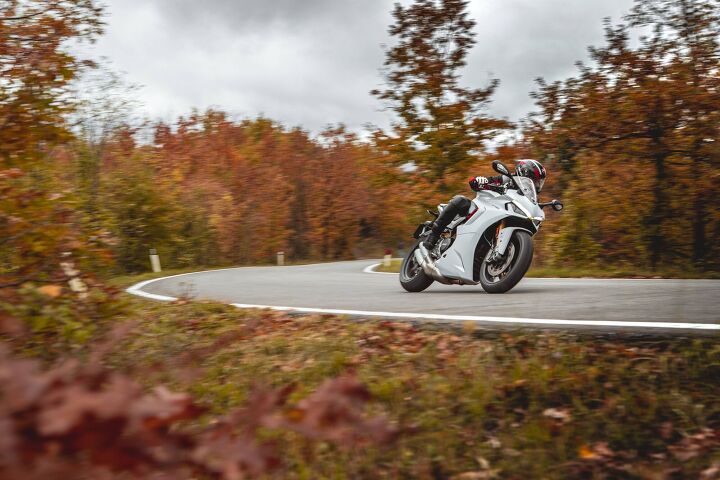
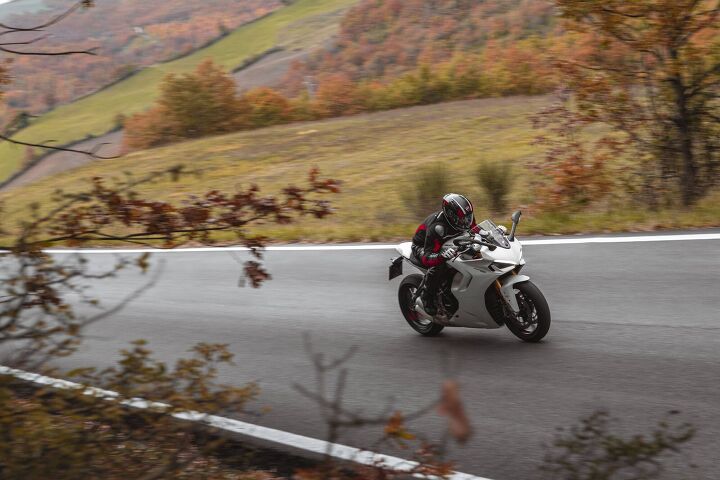
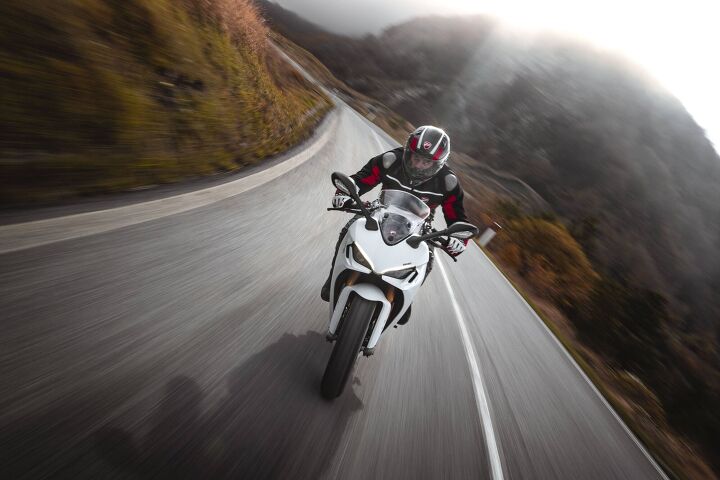
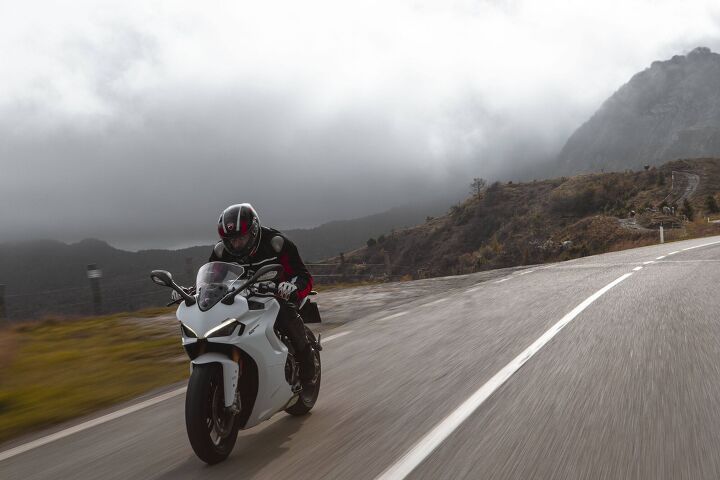
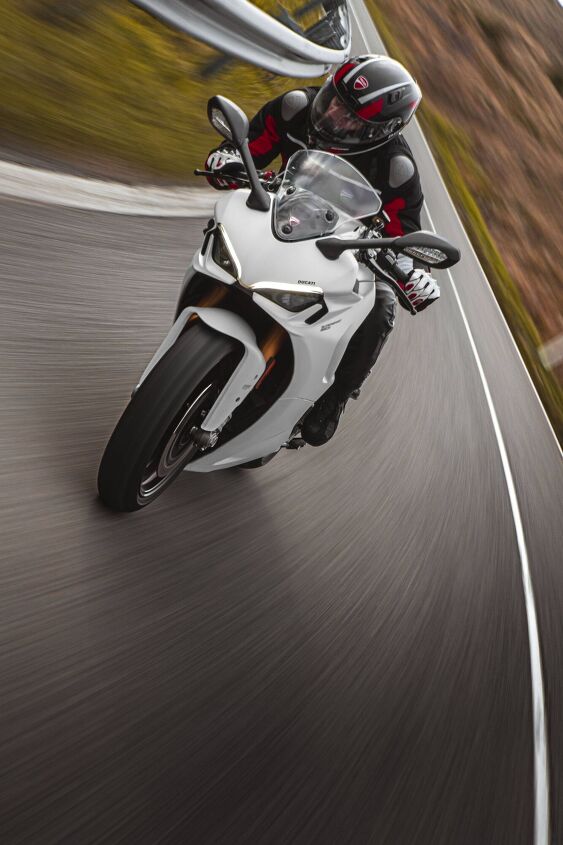
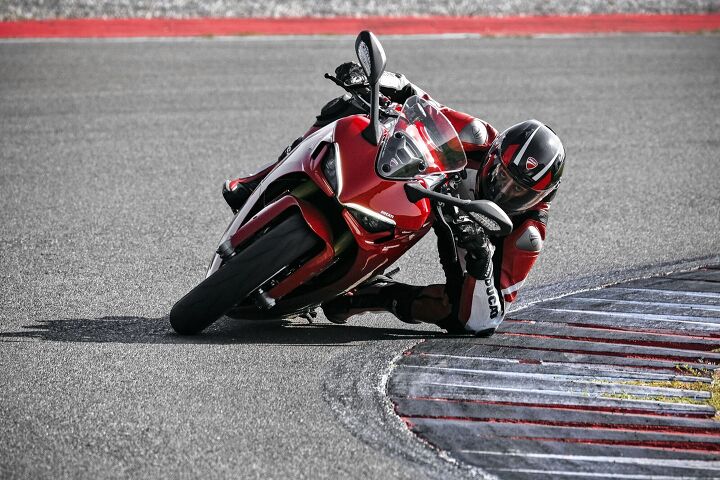
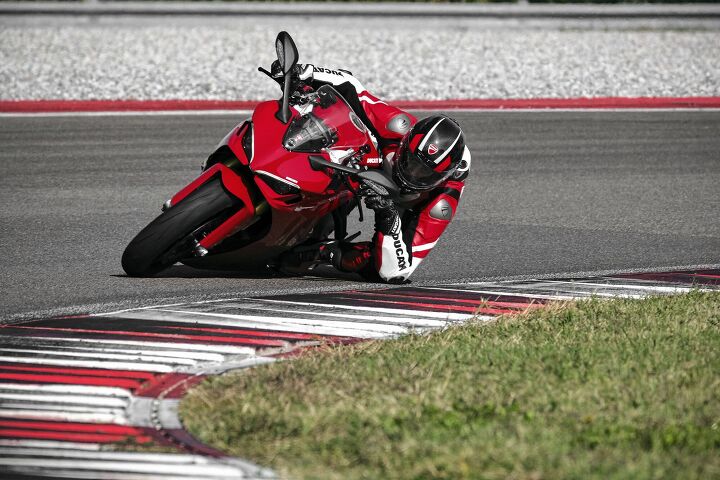
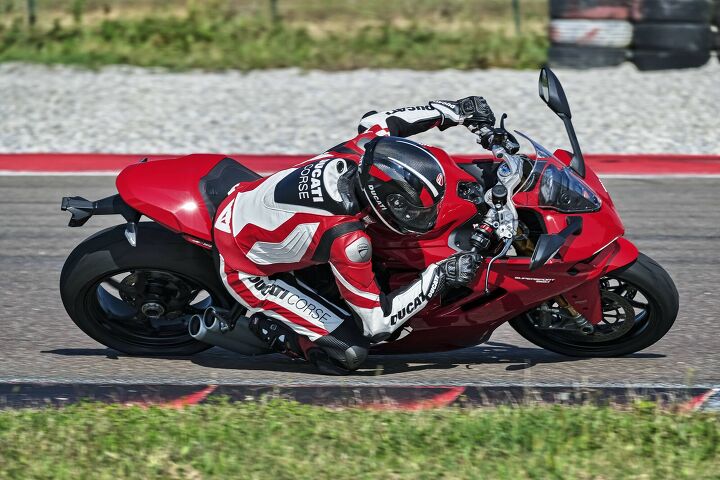
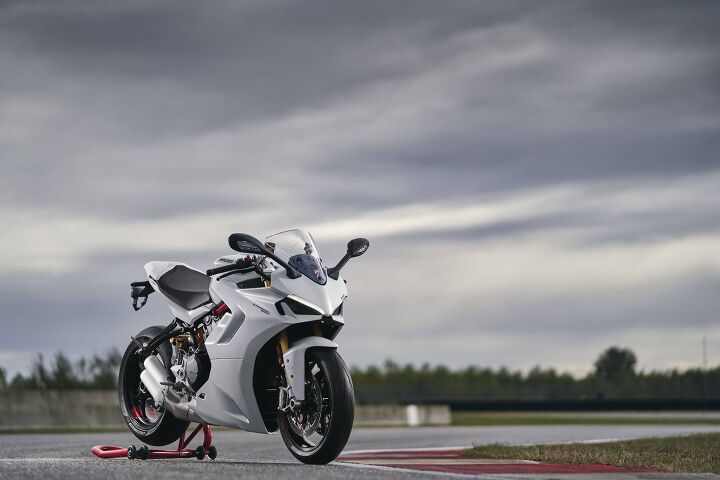
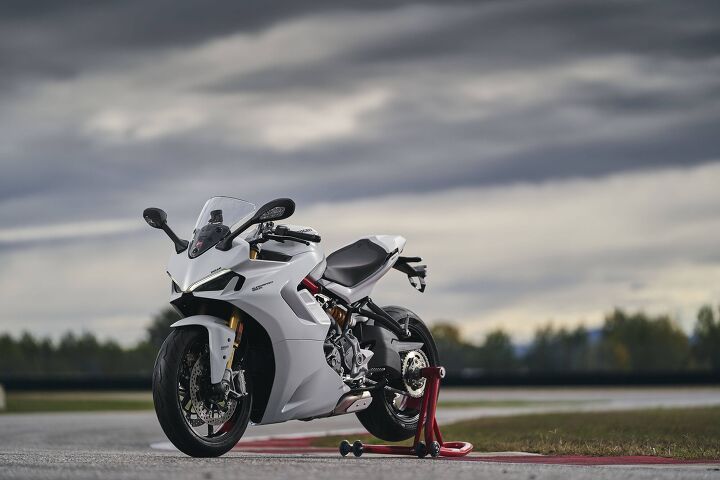
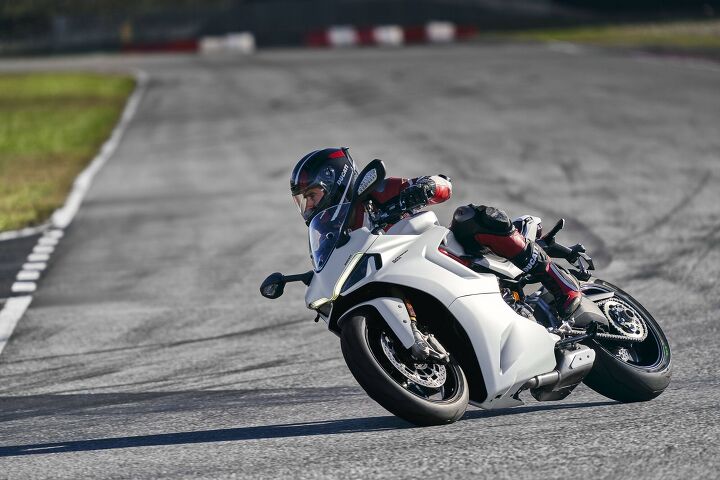
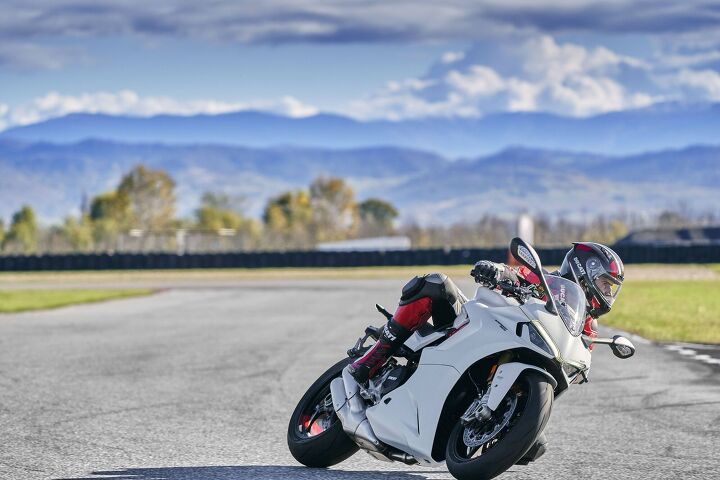
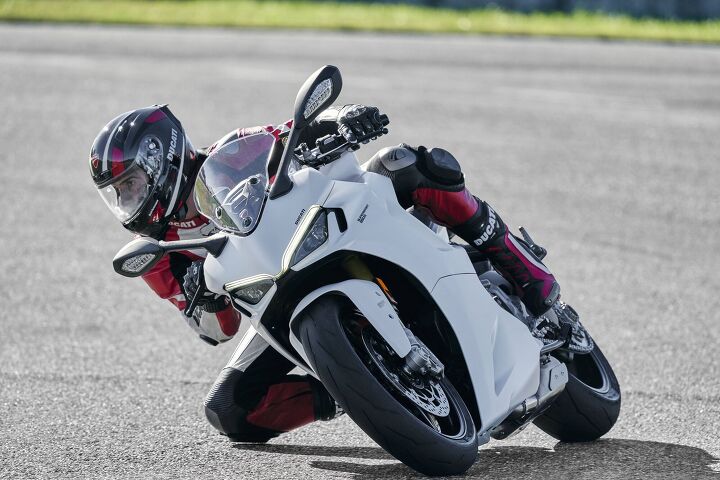
Become a Motorcycle.com insider. Get the latest motorcycle news first by subscribing to our newsletter here.
The post 2021 Ducati SuperSport 950 First Look appeared first on Motorcycle.com.
http://feeds.feedburner.com/~r/Motorcyclefeed/~4/lvprw1mfCfw -
The 2019 Honda CB1000R is a modern-retro machine that blends rider-friendly civility with an exciting punch. Big Red reintroduced the standard CB to the United States in 2018 after a short hiatus, with notable improvements all around.
Powering the CB is a 998cc DOHC inline-four derived from Honda’s previous-generation CBR1000RR, but tuned for everyday rideability with a punch of top-end power. Notable engine upgrades include an improved airbox flow to significantly larger (plus 8mm) throttle bodies, larger intake ports, and increased valve lift on both intake and exhaust. The CB also sees a ride-by-wire electronics package with selectable ride modes and traction control settings.
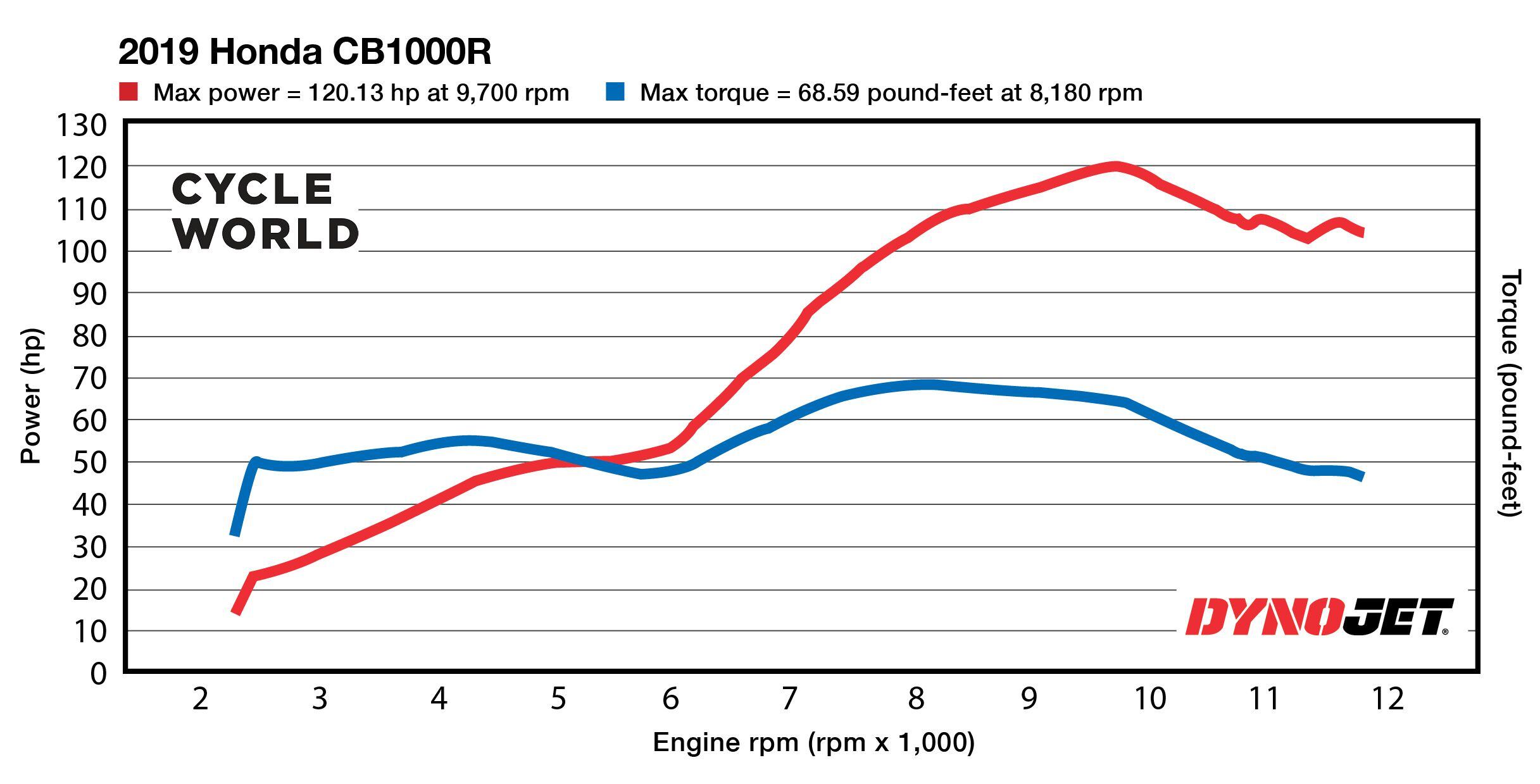
2019 Honda CB1000R dyno (Robert Martin /) Prior to an upcoming comparison with similar retro-modern machines, we rolled the Honda CB1000R on our in-house Dynojet 250i dyno, recording horsepower and torque figures. The Honda registered a peak 120.13 hp at 9,700 rpm and 68.59 pound-feet of torque at 8,180 rpm.
Note that a 2019 model year CB1000R was used for testing as Honda chose to skip a model year in 2020.
-
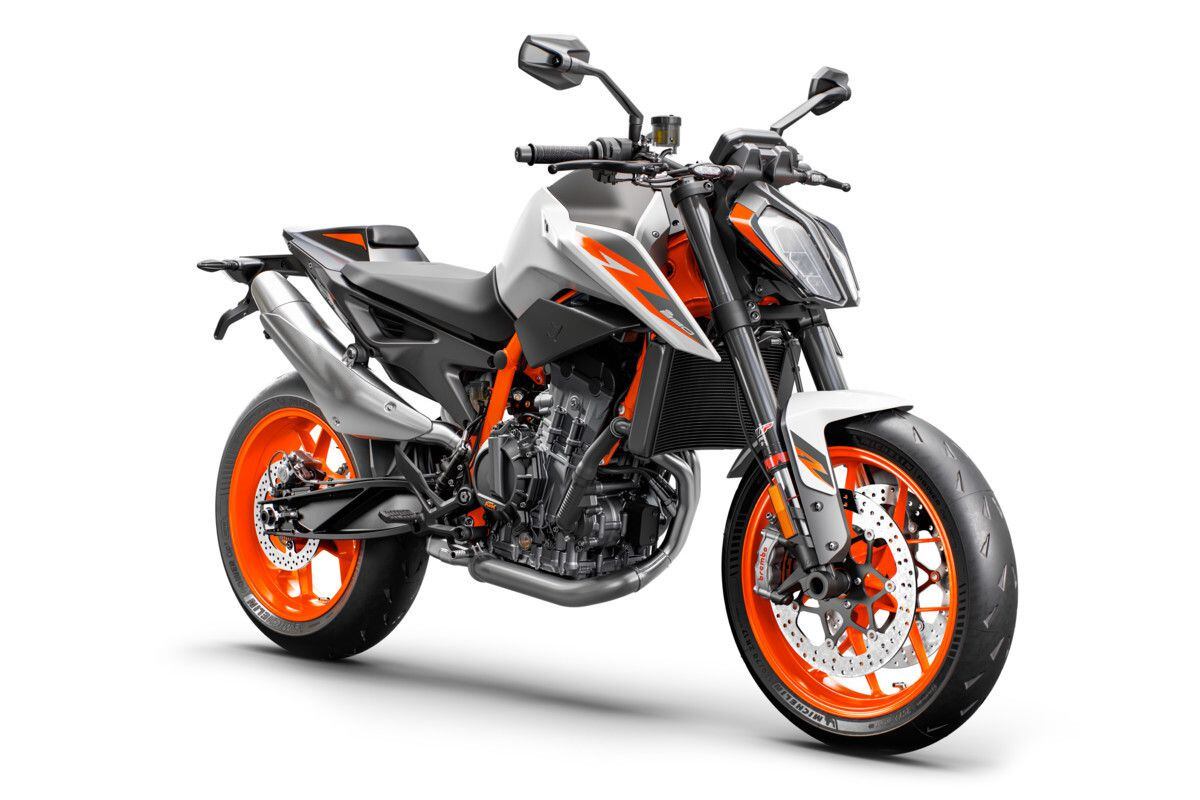
2020 KTM 890 Duke R (KTM/) The newest of KTM’s Duke lineup, the 2020 KTM 890 Duke R, is aptly nicknamed “the Super Scalpel.” It is a sharp naked bike that is a highly capable road or track model stemmed from the 790 Duke, but with more power, increased stopping performance, more adjustability, and less weight. Its aggressive riding position is matched by the aggressive 890cc parallel-twin engine that produced an addicting 106.2 hp and 60.4 pound-feet of torque on the Cycle World dyno. Pair that with the measured 406-pound wet weight and it can tear around any corner thrown its way.
2020 KTM 890 Duke R Reviews, Comparisons, And Competition
“It’s the best motorcycle in the world,” exclaimed Road Test Editor Michael Gilbert in passing. In his review, Gilbert related that it rightly earned the Super Scalpel badge by shredding the corners with absolute confidence.
This naked middleweight sees competition with the Triumph Street Triple RS, Kawasaki Z900, Aprilia Tuono, Suzuki GSX-S1000, and Yamaha MT-09.
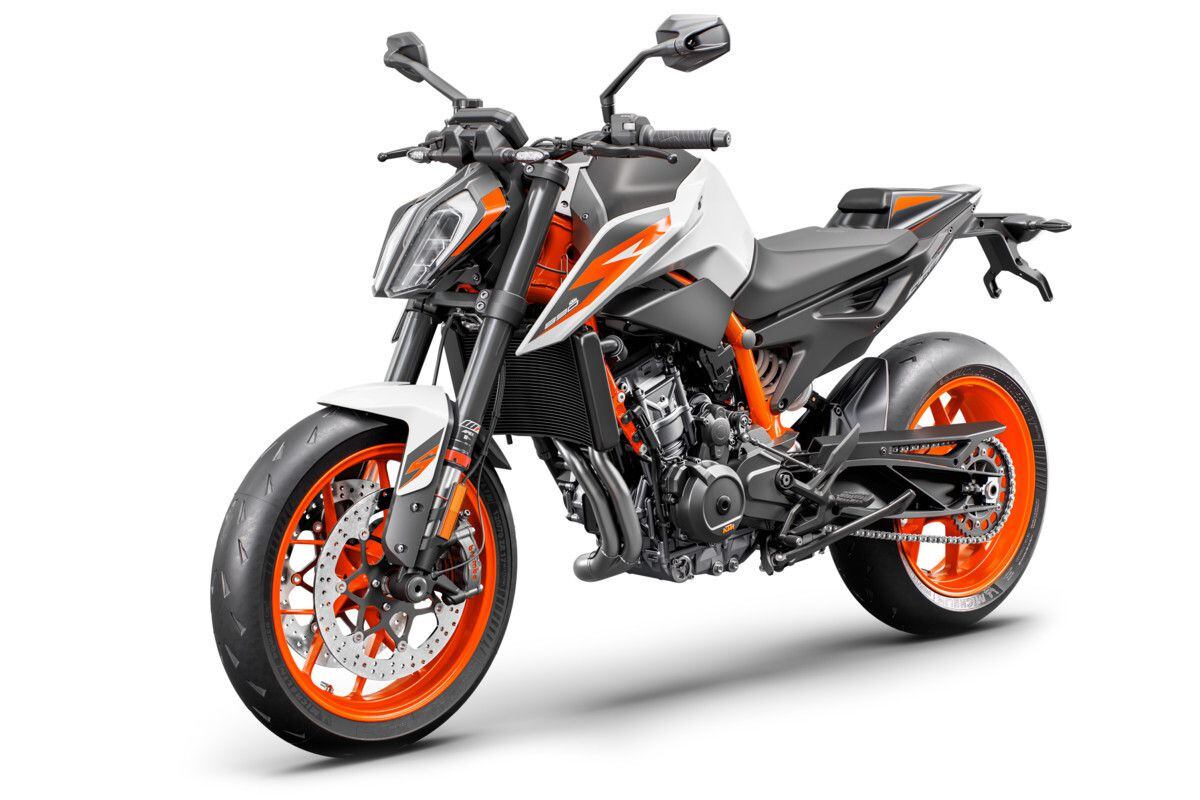
2020 KTM 890 Duke R (KTM/) KTM 890 Duke R Updates For 2020
This model is all-new for 2020. It starts at an MSRP of $11,699.
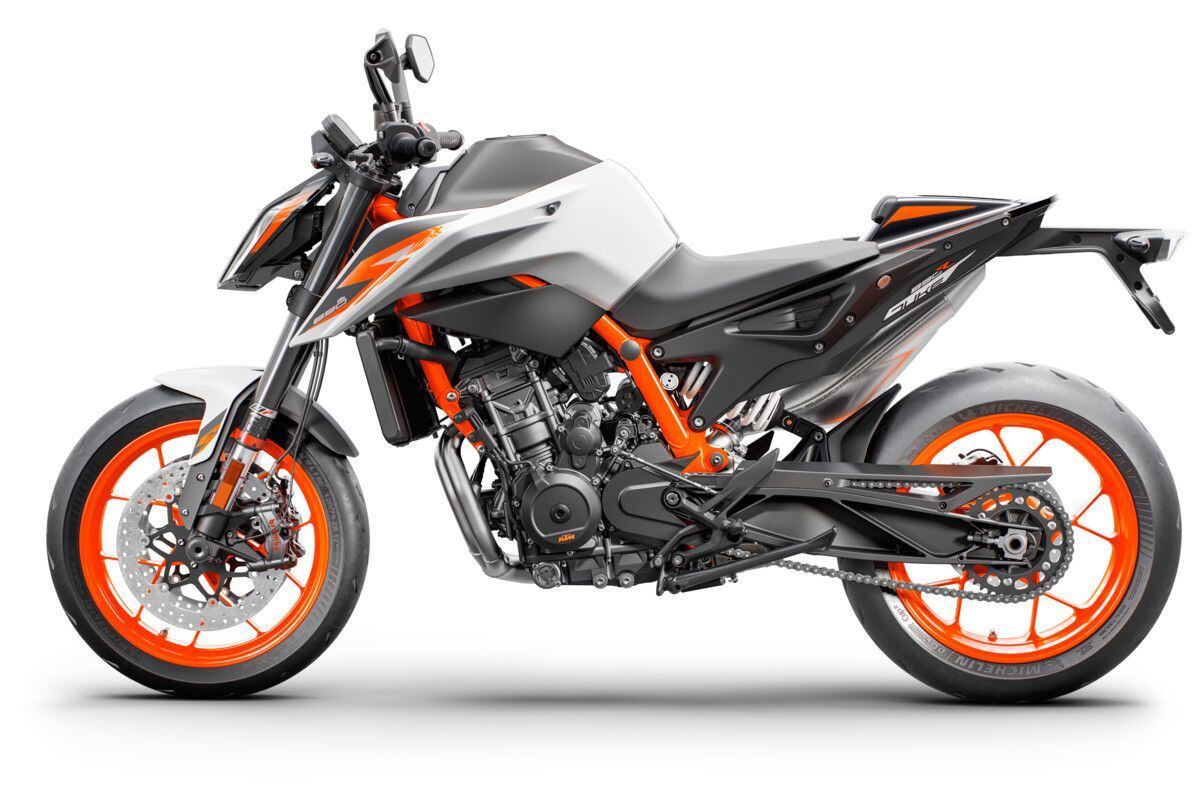
2020 KTM 890 Duke R (KTM/) 2020 KTM 890 Duke R Claimed Specifications
Price: $11,699 Engine: Liquid-cooled DOHC parallel twin Displacement: 890cc Bore x Stroke: 90.7 x 68.8mm Horsepower: 121.0 hp @ 9,250 rpm Torque: 73.0 lb.-ft. @ 7,750 rpm Transmission: 6-speed Final Drive: Chain Seat Height: 32.8 in. Rake: 24.3° Trail: 3.9 in. Front Suspension: 43mm fork, compression and rebound adjustable; 5.5 in. travel Rear Suspension: High-speed compression, low-speed compression, rebound, and spring preload adjustable; 5.9-in. travel Front Tire: 120/70-17 Rear Tire: 180/55-17 Wheelbase: 58.3 in. Fuel Capacity: 3.7 gal. Wet Weight: 366 lb. Cycle World Tested Specifications
Seat Height: 33.1 in. Wet Weight: 406 lb. Rear-Wheel Horsepower: 106.2 hp @ 9,900 rpm Rear-Wheel Torque: 60.4 lb.-ft. @ 8,700 rpm -
I thought I was picking up a new Z H2 naked at Kawasaki, but there was some miscommunication. I got this H2 Carbon instead, the full-zoot sport version barely removed from the track-only H2R instead of the slightly tamer naked I was expecting. Damn the luck! I’d really prefer to be sat a bit more upright. When I climbed on and reached for the clip-ons, the H2 Carbon hurt my lumbar and impinged upon my liver compartment. Then it cracked my knees when I picked my feet up onto the pegs. And the way the thing revved and the supercharger chirped in the parking lot frankly was a bit frightening. It seemed angry. This is ridiculous. Nobody needs a motorcycle like this outside of the Bonneville salt flats.
Eight minutes down the road, I realized again what an ass I am. I was so busy aiming and zotting along, whatever complaints my back and knees had were drowned out in the wind and adrenaline. Like being dead after a long disease and disconnected from all pain, suddenly I was nothing but a pair of veiny Von Dutch eyeballs attached to a primordial brainstem blasting through space. While trying to not get a really expensive ticket.
The tachometer goes to 14,000, but I don’t think the needle ever went past about 8000 and maybe half throttle, which was more than enough. With the supercharger positively shoving perfect mixture into every cylinder-full, the H2’s not even trying. You barely need to rotate your wrist to get to 100 mph instantly (luckily there’s a back way between me and Kawasaki), and you barely need to move your left foot to shift through the auto-blipping dog-ring gearbox.
Nobody needs a motorcycle like this, but everybody should definitely get the chance to ride one at least once, even if only like Ray Charles driving the car in that Peugeot commercial on a dry lake if you’re worried your skills aren’t up to 206 horsepower. Don’t be. It’s fine.
If in the springtime a young man’s thoughts turn to love, in the fall, an old guy’s thoughts turn to great memories and things you’d like to have a second crack at. When we watched the dynamometer at Chris Redpath’s shop register 206 rear-wheel horsepower, we got to reminiscing about other Kawasaki moonshots, and admiring the two GPz750 Turbos in Red’s shop – the last time Kawi built an artificially aspirated production bike.
In the early ’80s, all the big four Japanese built turbos, the Kawasaki being the last and, by most accounts, the best of them. Instead of the convoluted plumbing of some of the others, the GPz attached its turbocharger just downstream of the exhaust ports right in front of the engine, thereby minimizing lag. Kawasaki rated it at 112 crankshaft horsepower at 9000 rpm, and 73 ft-lb of torque at 6500 rpm. Pretty, pretty steamy at the time – and all of it from an inline-Four displacing just 738 cc – since the goal for all the manufacturers was to extract big-bike power from a mid-size engine. In 1984, desperately in need of some direction in life and a new motorcycle, the thing on the cover of all the magazines knocked my eyeballs right out.
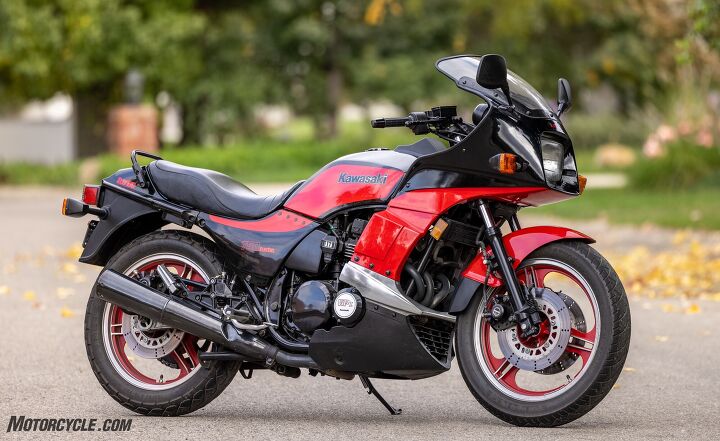
There’s no radiator, but there is a turbocharger tucked right beneath where those four exhaust headers converge.
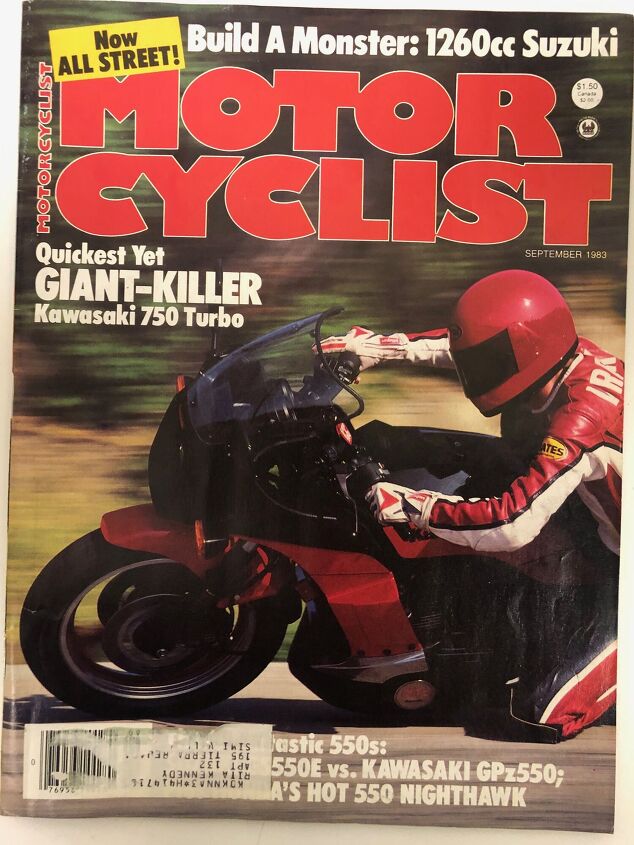
In 1984 I was desperately trying to scrape up the $2600 or so for a plain-Jane KZ550 and failing; the $4800 turbo was firmly in the realm of exotica.
It was Redpath’s idea for us to borrow one of his GPz Turbos for a retro comparison, but in the actual event, he was tough to pin down and then too busy to get one prepped for us. Hmmmm, who else has a 1984 Kawasaki I can borrow… my thoughts turned to other gimpy old friends who needed to dip themselves into a fountain of youth. Ken Vreeke leapt immediately to mind. Ken was already old when I was just getting started in the magazine business circa 1989. A quick email led to an almost instant reply including a pic of him on the cover of the big magazine in 1984, on what else – the 1984 GPz750 Turbo. How serendipitous. I remember reading it in my cradle.
The Vreekster, now head of his own media empire Vreeke & Associates, has connections. Within the hour, he’d located and arranged to borrow a pristine-ish ’84 GPz750 Turbo from a local collector friend. Also, Vreeke had just come off rehabilitating from a nasty ankle injury inflicted by his KTM 1290 Adventure and a rushing mountain stream. He was itching to ride again – especially my new H2 Carbon – and made sure to seal the deal by offering me a nice compliment on my singular steadfast ability to never have wavered from my original goal of being a motorcycle magazine guy after all these years. My admirable professional stasis. I could see how it was going to be.
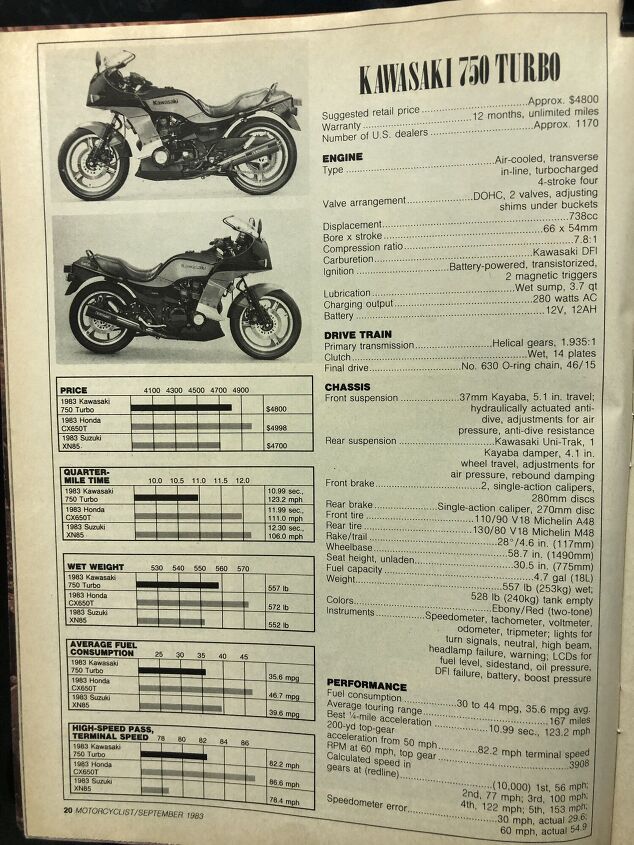
Daniel Schoenewald’s (inventor of the pocket calculator when he worked at Texas Instruments) 36-year old 13,000-mile GPz fired right up, smoking quite a bit from her dual exhausts but clearing out eventually and idling nicely along on Kawi’s DFI – Digital Fuel Injection – which was as advanced as Ms Pac-Man at the time. There’s a nice rumble coming out of those pipes, too, but not perceptibly louder than the new 80-decibel H2.
I don’t think the Big Four were even doing “sportbikes” yet in 1984, not ones with sportbike ergonomics as we know them today anyway. The old GPz sits you basically upright upon a thickish seat whose foam has held up remarkably well, with your feet right below your fundament and only a slight lean forward to grab grips located in what Harley today would call “semi-apehanger” position.
Riding along on some fast surface roads, a quick blast down Highway 101, and onto some deserted farm roads, you’d think the turbocharged four-cylinder displaces more than 738 cc at any rpm, but the real fun is watching the boost gauge build after you watch the orange tachometer needle pass 6000 rpm. From there to the 9000 rpm redline, the old girl really does skedaddle. Matter of fact, it was the fastest bike Motorcyclist ran down the quarter-mile in 1983, turning a 10.99 at 123.2 mph with Jeff Karr at the controls. Quite a big deal in an era when the ¼-mile belonged to burly big-cc bikes like Suzuki GS1100Es and V Maxes.
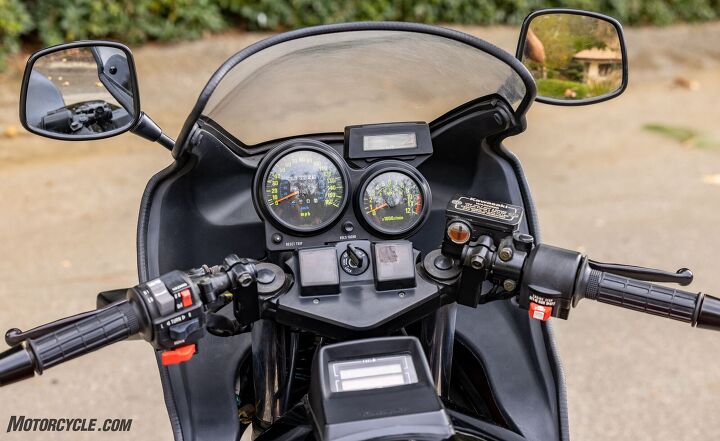
1984’s ripper is today’s sport-tourer. Plastic was new and exciting, and all fasteners could be replaced at your hardware store. There’s no steering damper, so they just attached instruments and as much other stuff as they could to the top triple clamp to act as ballast.
Googling over to a 2017 Cycle World comparison by our old chum Don Canet, I see the new Kawi Z900 that year did the deed in 10.95 seconds at 125.06 mph. And that bike made 111.8 hp @ 9670 rpm. Maybe Kawi’s claim of 112 for the old GPz was spot on. Wait, it must’ve been pretty conservative, given that the new Z900 weighs 469 pounds wet on MO’s scales to the old GPz’s 557 lbs. I didn’t realize until I sat down to do the spec chart for this thing, that the GPz motor is also air-cooled and two valves-per-cylinder. Stone age. Even so, the old girl runs with hardly any vibration and excellent throttle response right into 9000 rpm – and feels completely modern in its rising-rate power delivery.
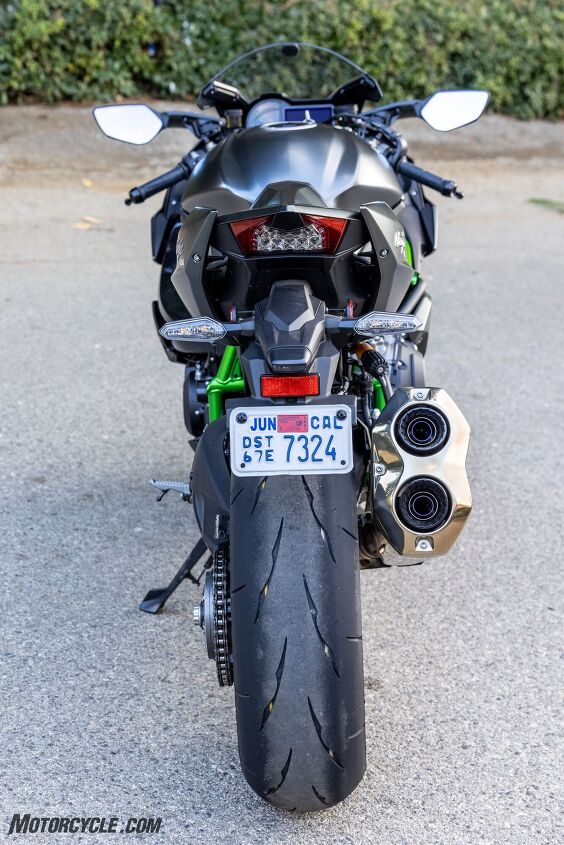
Meanwhile, you’ll be glad you’re hunkered down when the H2 gets rolling, trust us. The stainless exhaust can is a thing of beauty, with exhaust nozzles reminiscent of Saturn 5 boosters.
With Kawasaki, it’s always been about the engine, and we’ll let the rest of the bike catch up later. The rest of the GPz was pretty standard fare, including your basic double-downtube steel frame. But the new “Uni-Trak” rear suspension had been introduced two years earlier on the GPz550 and GPz750 (way earlier on the KX dirtbikes), and that’s what the Turbo got too, along with 4.1 inches of sweetly progressive wheel travel contributing to the cush ride.
On smooth pavement, it’s hard to think of the GPz as being the gnarliest sportbike on the road in its day, but then in its day, the first GSX-R was still two years in the future. Those high handlebars and big windscreen make the GPz feel almost like a sports-tourer.
The fork’s relatively plush also and not bad unless you’re braking semi-hard over bumps, and then it’s not bad either since the pair of 280mm discs and their single-piston slide-type calipers are incapable of braking any kind of hard in the current sense of the word. Which is probably just as well, since the hydraulic anti-dive system seems to have seized up – but Ken says that’s how it always worked, so….
But hey, what do you want for 36 years old? Dan Schoenewald has a bunch of old bikes to maintain (most of them Nortons). So, you can only imagine how the old GPz might do with new brake pads and fork oil and whatever. At least nothing was leaking, and Ken swears the GPz had great brakes when it was new. It’s a shame we can’t travel back in time to test that dubious assertion and buy real estate.
Dan the owner also advised caution since he didn’t really know how old the Metzeler ME880 tires on the bike were, which I totally took to heart in the curvy parts of our ride, happy to tiptoe through the Potrero Canyon corners and watch Vreeke blast off in the distance immediately on the H2. As I knew he would be, Ken was blown away, quite literally, by the supercharged H2. Though 206 horsepower is impressive, it’s really the instantaneous boost the blower provides in the midrange, in any gear, that makes the thing so amazing, and that the 9-position KTRC traction control lets you confidently use all of it. Downshifts are mostly optional.
Ken says: When the 1984 Kawasaki 750 Turbo was new, turn signals lenses were wider than most rear tires. You were reminded of this frequently on the Turbo as the boost crammed power like never before into an overwhelmed rear tire. Back then, you didn’t just go around power sliding out of corners, but the Turbo did. Those of us fortunate to test it back then were awed. Hopping from the old Turbo to the 200-horsepower H2 is not like stepping out of a time machine. The H2 is the time machine. One second you’re here. The next you’re there. Most of the middle part is just blur.
They don’t make roads long enough for this motorcycle. The H2 accelerates with an effortless brutality I have never experienced before. Try as I might, there is nothing I could find to dislike about this 200 horsepower motorcycle. It stops as hard as it goes, handles great, and the Supercharger creates a symphony of cool chirping sounds that remind you something special lives inside that green trellis frame.
John Burns makes a lot of chirping noises too, though I’ve heard most of them before. I admire John’s ability to not evolve like other humans, flip evolution the bird and remain as spud-like as when I first met him. He’s still in his happy place, which turns out to be 1984.
Just like me, though Ken whined about the low clip-on bars when he first climbed on, he was glad to have been strapped in tight by the time he climbed back off the H2. He also complained about the stiff ride, which reminded me you can totally back off the preload and damping in that TTX36 rear shock with nothing but your fingers. And one Allen wrench softens the fork, too. Riding a couple hours home later, the H2 was transformed into the world’s fastest pillow.
Since Kenneth blasting off ahead of me has always defined the hierarchy of our riding relationship, I should’ve known there was no way he was going to allow the tables to turn when it was my turn on the modern bike. He knows better, but like a dog having chewed through its leash at a meat counter, he can’t help salivating, then going into a feeding frenzy on the GPz.
Again, the old Turbo impressed with its speed on the straights, as I needed to roll the H2 throttle open more than halfway driving onto some of them to close back up on the crazed, GPz-mounted Vreeke. In all the H2’s acronyms, I’m not sure if there’s a wheelie control or not (there is a launch one), but I trusted some electronic aid or other in there would keep us from all harm; there was a remaining crumb or two of honor at stake in not letting the Vreekster leave us for dead on a 36-year old bike on vintage touring tires. Mulholland Highway’s corners are pretty fast ones (and dustyish on this day), but Vreeke was not touring at all as he flung the GPz repeatedly onto its side into them. From behind, it looked more like following a jet-propelled bicycle on that skinny rear tire. And though I was riding the H2 at about my personal street maximum, Ken and the GPz still had a little corner speed on us.
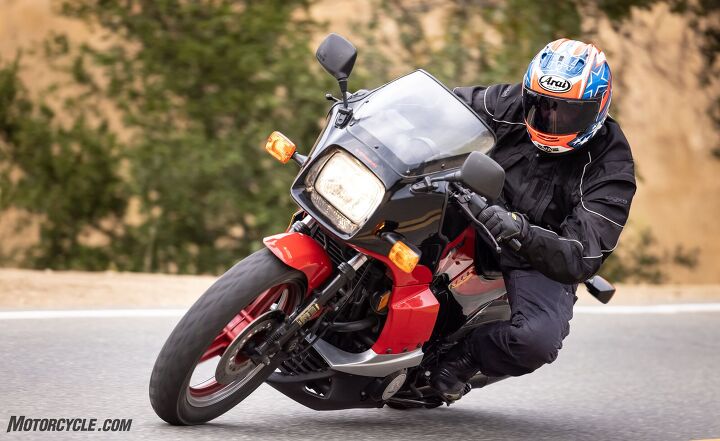
It’s all about the stability of those big old 18-inch tires and long wheelbase, says Ken. Strangely enough, my faceshield never filled with sparks behind Vreeke like it always used to.
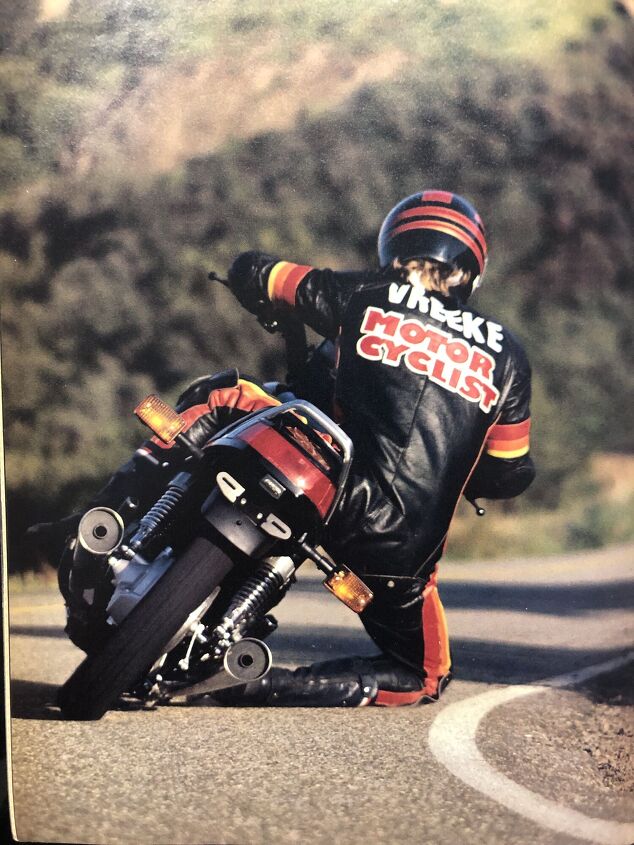
Thin and now: Vreeke on the GPz750 Turbo and, hey wait, the bottom pic’s not a GPz at all. Seca 4000? (photo courtesy Rich Cox, Slide Action)
Another big advance in 36 years is the weight the manufacturers have been able to extract from their machines: Though the H2 makes nearly twice the power and has twice the everything of the old GPz, it weighs about 30 pounds less. Vreeke reports that he dropped 45 lbs getting himself back into shape after his recent rehab. So, there’s my excuse: He had a 15-lb weight advantage.
Anyway, like I said, it was easy enough to reel in that midcorner gap using the H2’s massive power and traction control on the straights, even though that’s generally frowned upon in friendly street riding. Sometimes larger things are at stake, and I wasn’t about to let chivalry cheat me out of the first time I can recall keeping up with the Vreekster, in hammer and tongs mode, on the roads he’s been riding since the 1940s. Back in the day, he’d keep half cigarettes in the pack to be smoking when you pulled up to give the impression that’s how far behind you’d been, but nobody smokes anymore. When we stopped, I wished I’d picked up a pack for this special occasion.
The Metzelers, we decided, really were great touring tires, since they seemed to have just as much traction now as they did at whatever point in history the previous owner had put them on the GPz, and plenty of tread too. Probably good for another 36 years.
What did we learn, boys and girls?
We learned that you can go home again, but that things are going to be smaller and less impressive than you remember. The old GPz is still a powerful motorcycle, but today, its performance would have it in about the same percentile as the aforementioned Z900 or equivalent – a fast bike for sure, but one you’re not afraid to hold the throttle all the way open on. And though its performance was without peer and its styling undoubtedly swoopy from a distance, the old girl’s overall appearance and plasticness remind us of a time when Japanese bikes were affordable, expendable, and highly modifiable – which is why unmolested examples like Daniel Schonenewald’s are hard to come by. (Thanks again, Dan.)
On the other hand, it’s nice to remember a time when you could have the rippingest streetbike available for today’s equivalent of $12,000, which is what the Consumer Price Index tells us $4800 is worth today. Five years later, when I emigrated from Kansas City in 1989, it was easy to get a sweet 1BR apartment close to the beach in Ventura on the $25k my new Cycle magazine job paid, and plenty left over for beer, tacos, etcetera….
Thirty-six years later, my 1989 earnings wouldn’t get me an H2 Carbon (though it would get me a new Z H2 for $17,500!). For most people, $33k is just too much to pay for a motorcycle. But fortune favors the rich, and for those lucky few, the H2 is to the GPz as an iPhone 12 is to a princess phone, a C8 Corvette to a Pontiac Fiero, a night discussing sex with Dr. Ruth as opposed to, never mind. The H2 is the first motorcycle Kawasaki’s stuck its rivermark badge on in like 50 or 60 years. It’s a rolling expression of corporate pride from a corporation that has a lot to be proud about. The thing exudes quality and exclusivity from every fastener and component, and that’s before you even get to the 206 horsepower.
Why did they do it? No one knows. In 1984, Kawasaki was following the turbo herd. In 2015 (when the first H2 got here), they did it because they could. Meanwhile, in America, we were busy working on finding a way to screw up the Boeing 737. Don’t get me started.
What does Ken think? The 1984 Kawasaki 750 Turbo was John’s first lust. I couldn’t wait to hear about how it felt after he waited all this time. Now 36 years later, he finally gets a chance to ride the legendary Turbo and what does he do? Cry like a teething baby about the brakes, the suspension, the tires… which were all cutting edge in the day.
John, his heart now flinty and jaded from decades of tearing around the globe on the fastest motorcycles made, can only see an aging hag in his once-beloved Turbo. But not me. I was fortunate enough to test hundreds of bikes in my career, and the Kawasaki 750 Turbo was a standout. It’s still a blast to ride. The H2 is on the nuclear level by comparison, but when you think about it, that means Kawasaki hasn’t really changed much. They still make a motorcycle nobody needs, until you ride it and realize you really do need 200 horsepower. 206.
Sorry, John, that the 750 Turbo was not the unicorn of your dreams, but don’t take that as a sign you have evolved beyond it. Some of us know better.
Riding the old GPz is a perfectly nice, even surprisingly comfortable experience if you’re an old guy like Ken, and I could totally see having one in the collection if I had a collection. On the new H2, though, it’s as if the self-healing paint on the tank seeps through to restoreth the soul. I’d forgotten how riding real sportbikes actually unkinks the back after the initial bend is made (especially after we backed off all the damping in that creamy-smooth suspension), like high-speed yoga. You can go as slow as you want on it, but you won’t – the faster you go the better the H2 likes it, and the sharper it hones your aging brain. If God had intended man to fly, or even evolve lately, he would’ve given all of us an H2.
You can’t go home again, but if you’ve got $33k, you can buy into a way nicer neighborhood where you’ll be happier in every way. I think this H2 Carbon is the sweetest motorcycle I’ve ridden since 1989. Okay, ever. Highly recommended. But the Z H2 naked is in the garage now, and Dan Schoenewalde has a few original 2-stroke H2s as well. The work goes on apace…
1984 Kawasaki GPz750 Turbo vs. 2020 Kawasaki H2 Carbon Specifications GPz 750 Turbo H2 Carbon MSRP $4,800.00 $33,000.00 Engine Type 738cc air-cooled turbocharged inline-Four 998cc liquid-cooled supercharged inline Four Bore and Stroke 66mm x 54mm 76mm x 55mm Fuel System DFI Keihin 36mm throttle bodies DFI, 50mm throttle bodies Compression Ratio 7.8:1 8.5:1 Valve Train DOHC, two valves-per-cylinder DOHC, four valves-per-cylinder Horsepower 112 hp @ 9000 rpm (claimed) 206 hp @ 11,600 rpm (measured, rear wheel dyno) Torque (Rear Wheel) 73 ft-lb @ 6500 rpm (claimed) 95 ft-lb @ 10,000 rpm (measured, rear wheel) Electronics Ignition, Direct Fuel Injection! Kawasaki Cornering Management Function (KCMF), Kawasaki Traction Control (KTRC), Kawasaki Launch Control Mode (KLCM), Kawasaki Intelligent anti-lock Brake System (KIBS), Kawasaki Engine Brake Control, Kawasaki Quick Shifter (KQS) (upshift & downshift), Öhlins Electronic Steering Damper Transmission 5-speed, Wet, multi-plate clutch 6-speed, Wet, multi-plate slipper clutch, dogring transmission, quickshifter Final Drive Sealed chain Sealed chain Frame Double-downtube steel cradle Steel trellis Front Suspension 37mm Kayaba fork, hydraulic anti-dive; adjustable anti-dive and air pressure, 5.1-in travel 43mm inverted Showa AOS fork; adjustable spring preload, rebound and compression damping, 4.7-in travel Rear Suspension Uni-Trak single shock; adjustable rebound damping and air pressure, 4.1-in travel Uni-Trak, Öhlins TTX36 shock; adjustable spring preload, compression and rebound damping, 5.3-in travel Front Brake Dual 280mm discs, single-piston calipers Dual 330mm discs, 4-piston Brembo Stylema calipers, KIBS ABS Rear Brake 270mm disc, single-piston caliper 250mm disc, 2-piston caliper, KIBS ABS Front Tire 110/90 V 18 120/70 ZR17 Rear Tire 130/80 V 18 200/55 ZR17 Rake/Trail 28º / 4.6 in. (117mm) 24.5º / 4.1 in. (104mm) Wheelbase 58.7 in. (1490mm) 57.3 in. (1455mm) Seat Height 30.5 in. 32.5 in. Curb Weight 557 lbs (wet) 525 lbs. (wet, MO scales) Fuel Capacity 4.7 gal. 4.5 gal. Ground Clearance 12.9 in. 12.7 in. Other Available Colors Fuel Consumption (observed) 36 mpg 32 mpg 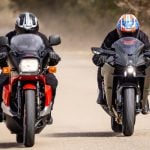
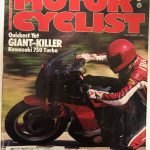
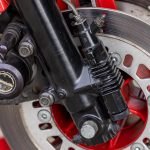
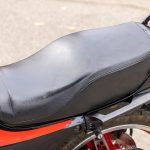
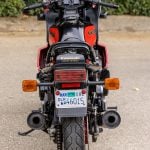
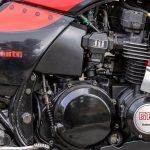
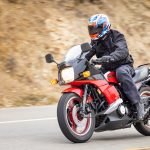
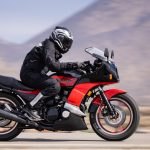
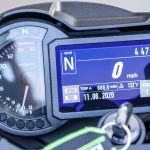
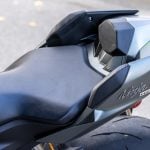
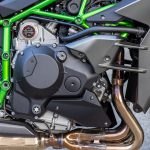
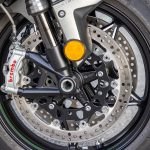
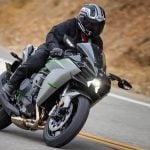
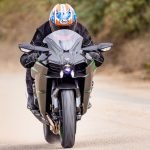
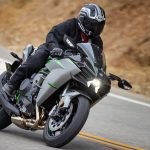
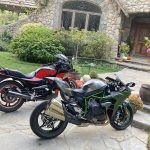
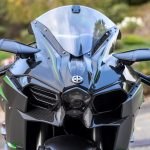
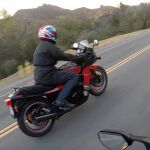
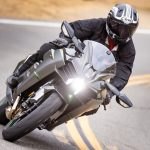
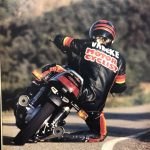
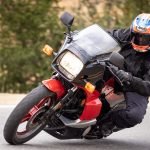
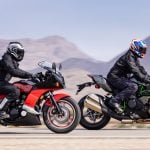
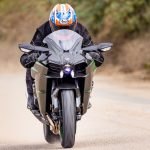
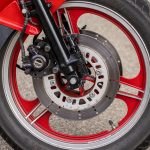
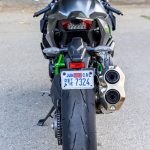
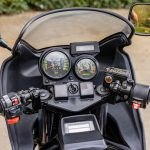

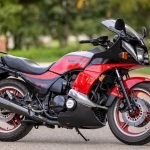
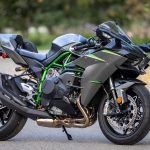
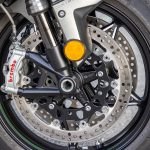
Become a Motorcycle.com insider. Get the latest motorcycle news first by subscribing to our newsletter here.
The post BLOWHARDS! 1984 Kawasaki GPz750 Turbo vs. 2020 Kawasaki H2 Carbon vs. Ken Vreeke and JB appeared first on Motorcycle.com.
http://feeds.feedburner.com/~r/Motorcyclefeed/~4/mKHTq2r5dPU -
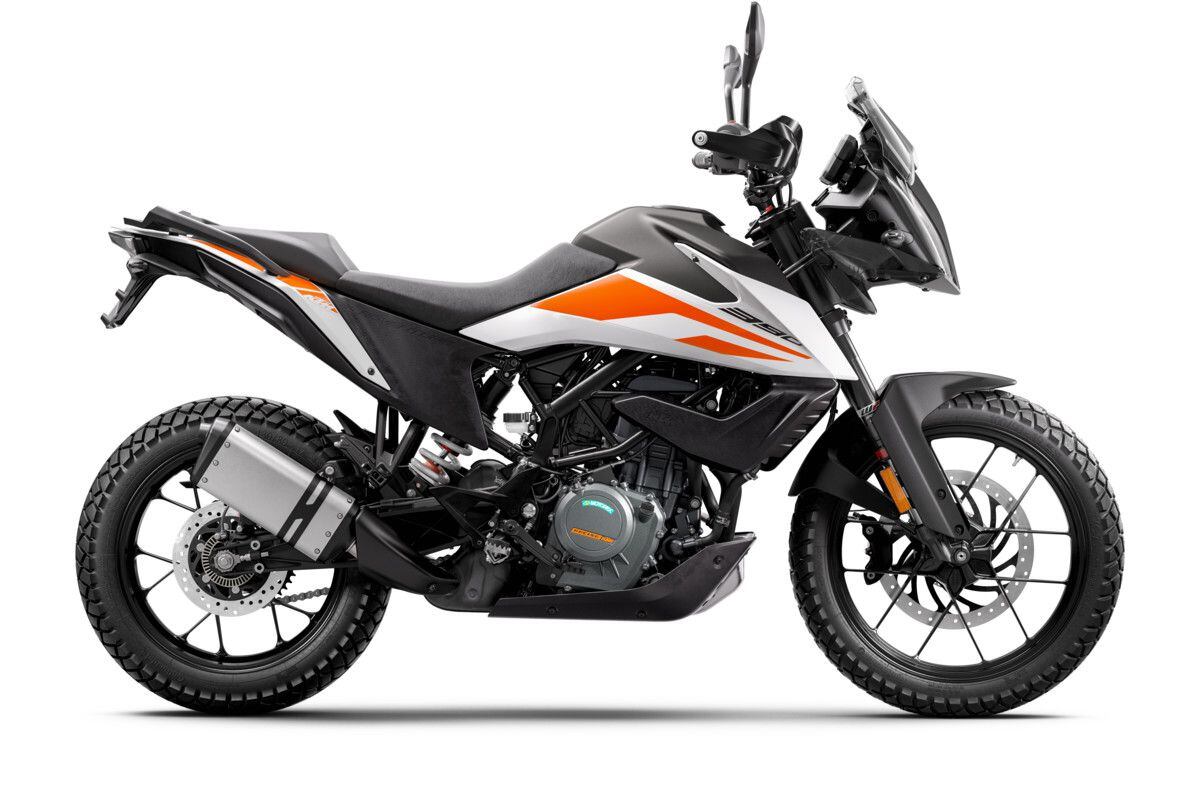
2020 KTM 390 Adventure (KTM/) New for 2020, the KTM 390 Adventure is the first beginner adventure motorcycle from the Austrian manufacturer. It is powered by the familiar and approachable 373cc single-cylinder motor seen in the 390 Duke, with styling cues that match the larger ADV bikes in KTM’s lineup. Unlike the street-focused brother, this model is destined for the dirt with its long-travel WP Apex suspension (6.7-inch front, 7.0-inch rear), knobbed 19- and 17-inch front and rear Continental TKC 70 tires, and an ABS off-road mode that disengages ABS to the rear wheel. This beginner-friendly ADV doesn’t skimp out on tech either with cornering ABS, traction control, ride-by-wire throttle, and a slipper clutch to name a few. Beginners now have a small ADV machine from KTM for slogging around in the dirt and down rough roads.
2020 KTM 390 Adventure Reviews, Comparisons, And Competition
Upon our First Ride, resident KTM expert Justin Dawes claimed, “It’s a capable, comfortable, and entertaining adventure motorcycle, displacement be damned. Its street civility and off-road chops will allow it to hang with larger and much more expensive adventure motorcycles. KTM listened to the fans and gave them what they have asked for: a small-displacement motorcycle worthy of the KTM Adventure name.”
Rolling it into the in-house dyno, the KTM 390 Adventure produced 37.5 hp at 8,970 rpm and 23.2 pound-feet of torque at 6,990 rpm at the rear wheel.
While this may be the first small ADV from Austria, the Bavarians and Japanese have already introduced their own mini ADVs with the BMW G 310 GS, Honda CB500X, and Kawasaki Versys 300-X.
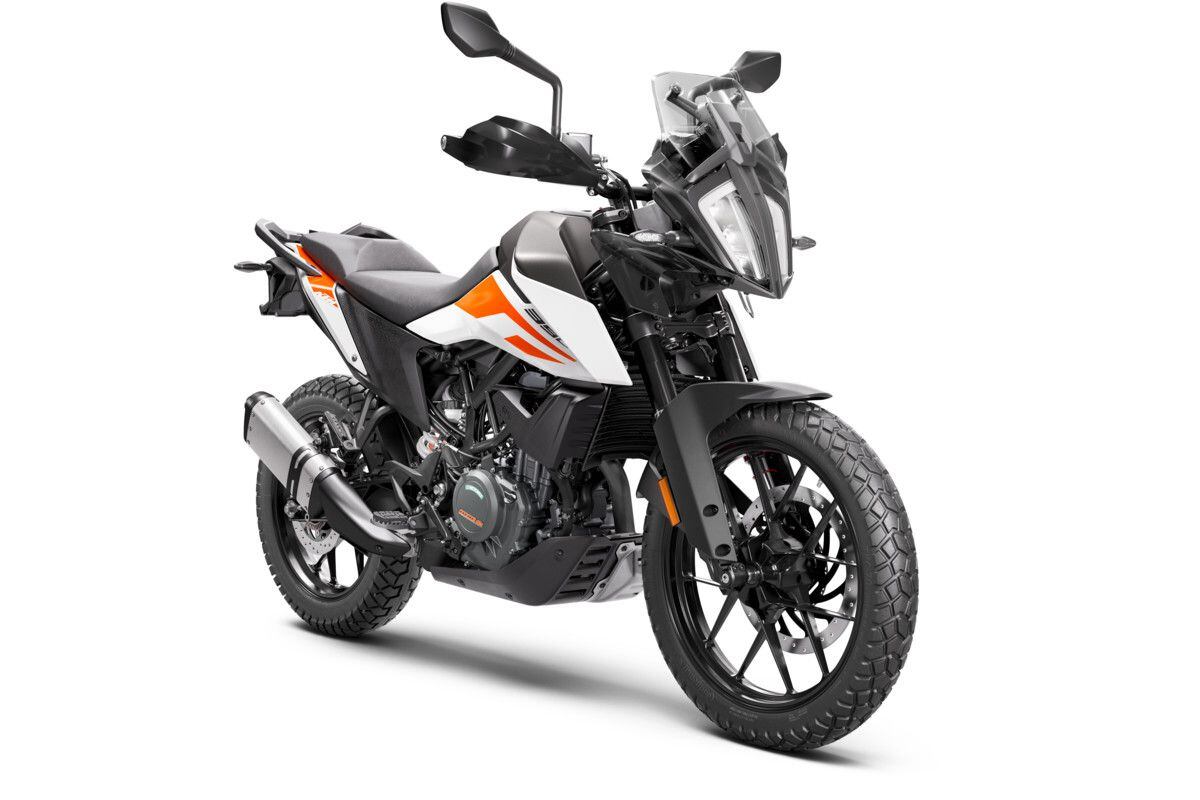
2020 KTM 390 Adventure (KTM/) KTM 390 Adventure Updates For 2020
The KTM 390 Adventure is a new model for 2020 and comes in white or orange colorways, and $6,199 is starting MSRP.
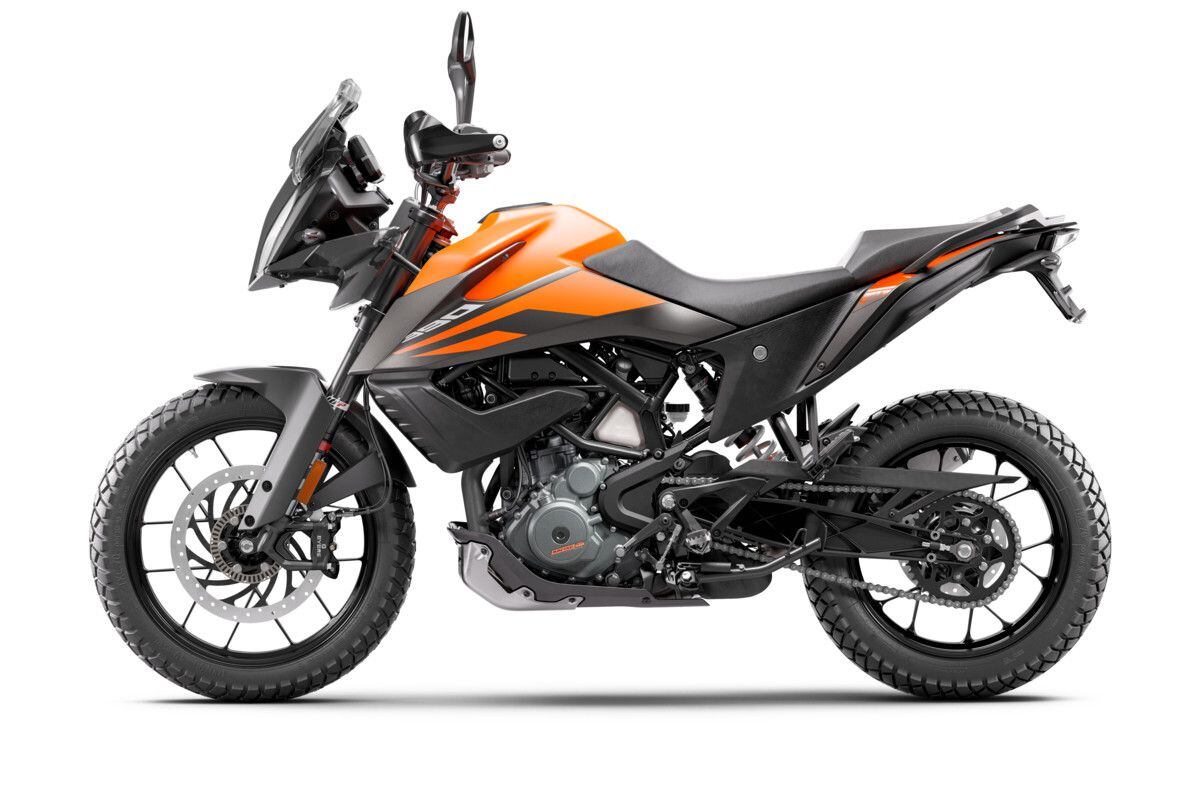
2020 KTM 390 Adventure (KTM/) 2020 KTM 390 Adventure Claimed Specifications
2020 KTM 390 Adventure Claimed Specifications $18,699 Price: $6,199 Engine: Liquid-cooled DOHC single-cylinder Displacement: 373cc Bore x Stroke: 89.0 x 60.0mm Horsepower: 44.0 hp @ 9,000 rpm Torque: 27.3 lb.-ft. @ 7,000 rpm Transmission: 6-speed Final Drive: Chain Seat Height: 33.7 in. Rake: 26.5° Trail: 3.9 in. Front Suspension: 43mm fork, compression and rebound adjustable; 6.7-in. travel Rear Suspension: Rebound and preload adjustable; 7.0-in. travel Front Tire: 100/90-19 Rear Tire: 130/80-17 Wheelbase: 56.3 in. Fuel Capacity: 3.8 gal. w/ 0.9 in reserve Dry Weight: 348 lb. Cycle World Tested Specifications
Seat Height: 33.7 in. Wet Weight: 387 lb. Rear-Wheel Horsepower: 37.5 hp @ 8,970 rpm Rear-Wheel Torque: 23.2 lb.-ft. @ 6,990 rpm -
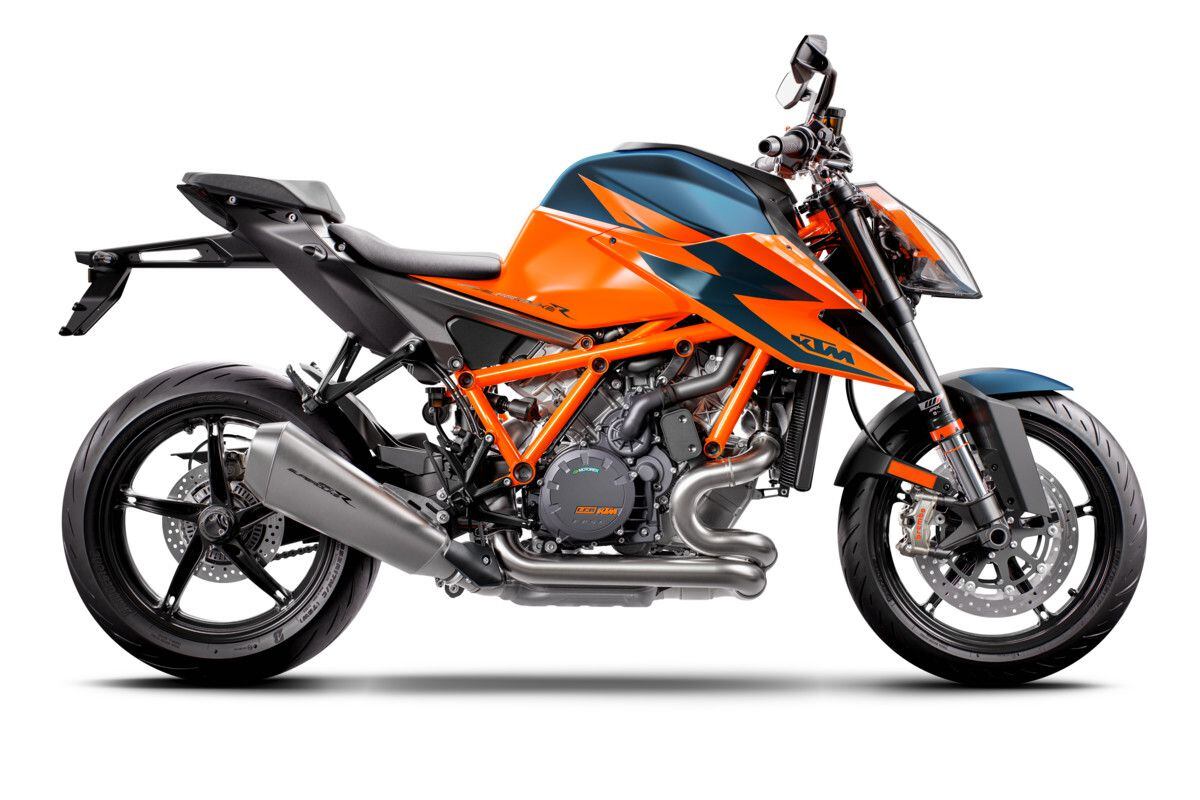
2020 KTM 1290 Super Duke R (KTM/) Lightweight and exceptional handling: two focus points for a track-inspired naked bike that is built for the street. One like the 2020 KTM 1290 Super Duke R—also aptly dubbed the “Beast 3.0.” For 2020, KTM improves the 1290 Super Duke R’s handling with a new chassis and frame that utilizes the refined LC8 engine as a stressed member to optimize torsional stiffness. And everyone wants to unleash this beast’s 1,301cc V-twin—a powerplant that we claimed was “the most powerful LC8 twin KTM has offered to date, all while meeting the challenge of tighter Euro 4/5 emissions regulations.”
2020 KTM 1290 Super Duke R Reviews, Comparisons, And Competition
Tech aficionado Kevin Cameron dissected the 2020 KTM 1290 Super Duke R’s revised LC8 engine and its history stating, “KTM’s LC8 V-twin has evolved through its 20-year history with increased compression tied to greater sophistication of engine fuel and ignition management.”
Don Canet attended the Beast’s press launch to test the highly updated machine and found, “The LC8 smooth meaty low-end torque delivery allows a choice in gear selection pulling out of most corners with very linear delivery from basement revs to its 10,500-rpm rev limit. The twin’s inherent tractability combined with a responsive predictable nature that instilled rider confidence in the slick conditions.”
Shootout-worthy adversaries include the Aprilia Tuono V4 1100, Yamaha MT-10, Suzuki GSX-S1000, Ducati Streetfighter V4.
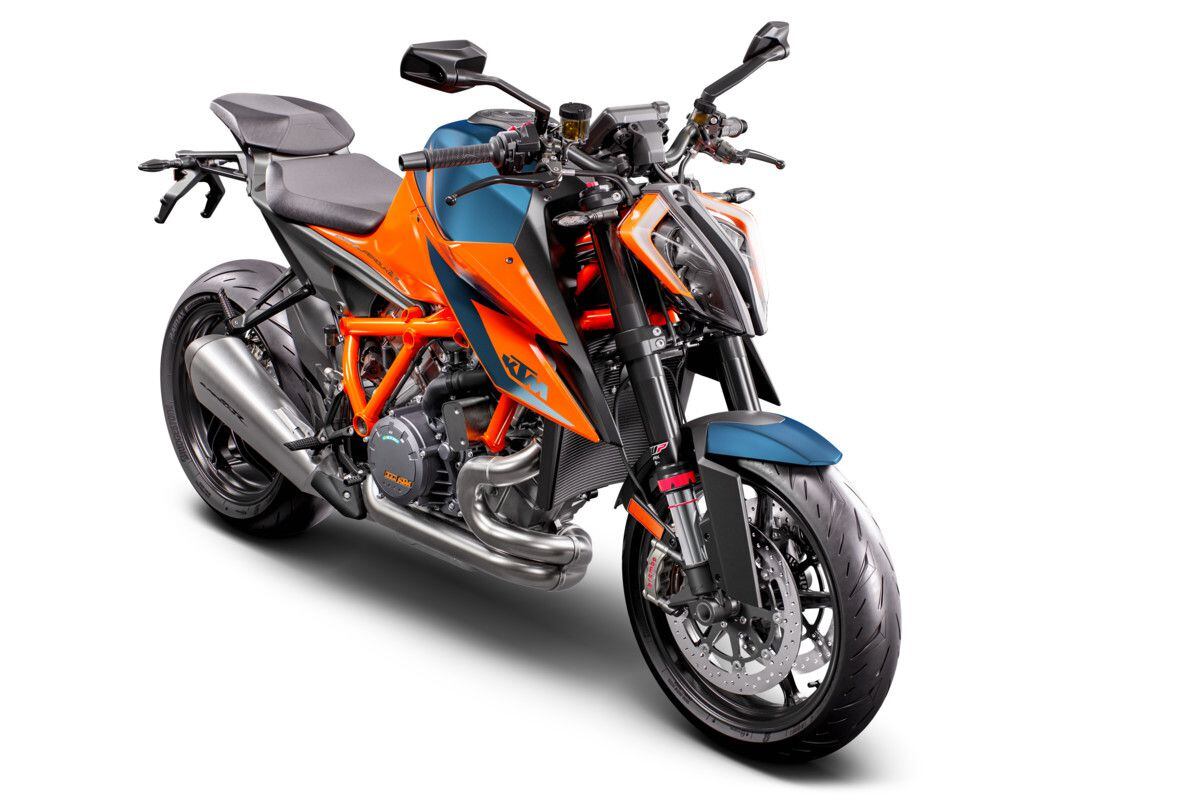
2020 KTM 1290 Super Duke R (KTM/) KTM 1290 Super Duke R Updates For 2020
The KTM 1290 Super Duke R sees updates to the chassis, engine, and electronics. The chrome-molybdenum steel trellis frame has larger sectional diameters and thinner walls to enhance rigidity. The aluminum/carbon composite rear subframe is new as well, as is the single-sided swingarm with linkage system and new WP Apex rear shock absorber with an external reservoir. The engine is fitted with lighter engine cases with linkage mounting, titanium valves, 56mm throttle bodies with additional top-feeder injectors, more powerful engine coils for improved combustion, optimized crank cases, and a smoother-shifting Pankl gearbox. Changes to the electronics include latest-gen lean-angle-sensitive traction control with six-axis IMU and updated functions in all ride modes. Premium stopping power is had with the new Brembo Stylema four-piston Monoblock calipers and two 320mm brake discs.
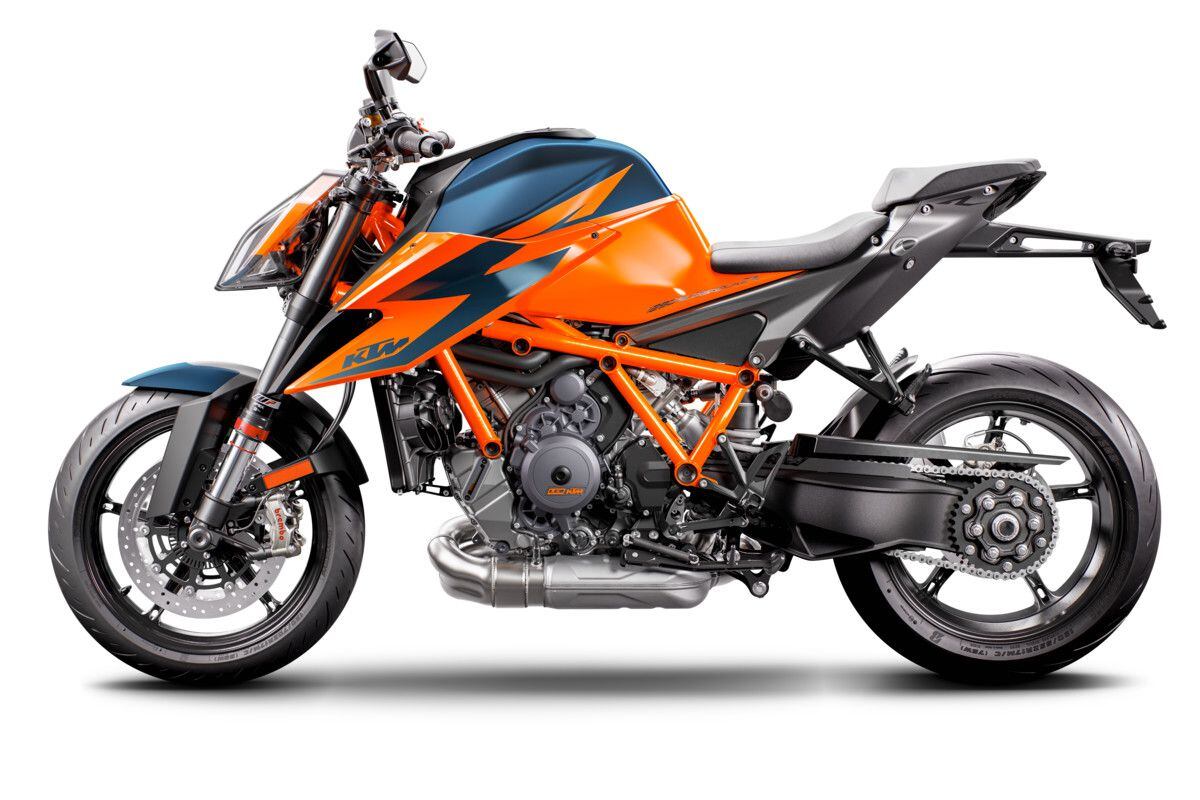
2020 KTM 1290 Super Duke R (KTM/) 2020 KTM 1290 Super Duke R Claimed Specifications
Price: $18,699 Engine: Liquid-cooled LC8 V-twin Displacement: 1,301cc Bore x Stroke: 108.0 x 71.0mm Horsepower: 180.0 hp @ 9,500 rpm Torque: 103.3 lb.-ft. @ 8,000 rpm Transmission: 6-speed Final Drive: Chain Seat Height: 32.9 in. Rake: 25.2° Trail: 4.2 in. Front Suspension: 48mm fork, fully adjustable; 4.9-in. travel Rear Suspension: Fully adjustable; 5.5-in. travel Front Tire: 120/70ZR-17 Rear Tire: 200/55ZR-17 Wheelbase: 58.9 in. Fuel Capacity: 4.2 gal. Dry Weight: 417 lb. -
Kawasaki‘s World Superbike racing team has begun testing of the 2021 Ninja ZX-10RR, revealing the superbike’s new look. As KRT riders Jonathan Rea and Alex Lowes take the new Ninja out on the Jerez circuit, Kawasaki confirmed the production model ZX-10RR, and presumably the Ninja ZX-10R as well, will be revealed on Nov. 23. (Updated with high resolution photos).
We’ll have to wait until then for full technical details, but we already have a good idea of what the updated 2021 ZX-10R and ZX-10RR look like. Photos and video from Kawasaki’s racing team provide show how the ZX-10RR looks in the team’s KRT Winter Testing livery, confirming the new look we uncovered in Australian certification filings.
KRT Ninja ZX-10RR 2021 in Jerez Winter Test
Discover more next Monday (23-11-20) at YouTube Kawasaki Motors pic.twitter.com/3bKes2esEh
— KRT WorldSBK (@KRT_WorldSBK) November 18, 2020
Warming up @jonathanrea ’s 2020 & 2021 bikes for Jerez Winter Test day 2 pic.twitter.com/bB5mfUZ0bf
— KRT WorldSBK (@KRT_WorldSBK) November 18, 2020
Kawasaki also shared onboard video of Rea taking a lap of Jerez, letting us hear how the ZX-10RR sounds:
KRT Ninja ZX-10RR 2021 on board lap to Jerez Circuit.@MotoplasticPuig https://t.co/Dedz8fi7nJ pic.twitter.com/TSz9emBCNI
— KRT WorldSBK (@KRT_WorldSBK) November 18, 2020
When we first published the photos from the Australian certification documents, the initial reaction to the new look was… less than positive. The ZX-10RR’s new face draws a lot from the Kawasaki H2, and in the Winter Test livery there’s a bit of a Darth Vader look to it as well.
What is a bit surprising is a lack of winglets that the ZX-10RR’s competitors all seem to be adopting. The Ducati Panigale V4 R, for example, has winglets protruding from either side of the headlights while the Honda CBR1000RR-R has its aerodynamic elements between the layers of its fairing. The bodywork jutting out from the headlight may be Kawasaki’s solution for adding more downforce without interfering too much with the shape of the side panels.
We’ll know more on Nov. 23, when Kawasaki reveals more information on the 2021 Ninja ZX-10RR and ZX-10R.
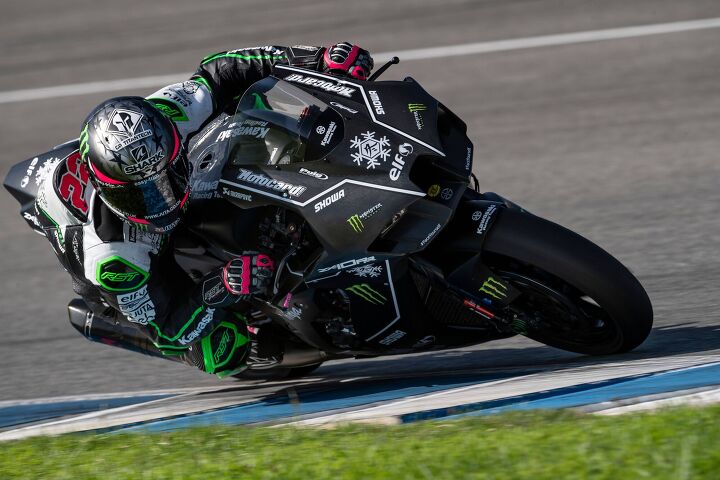
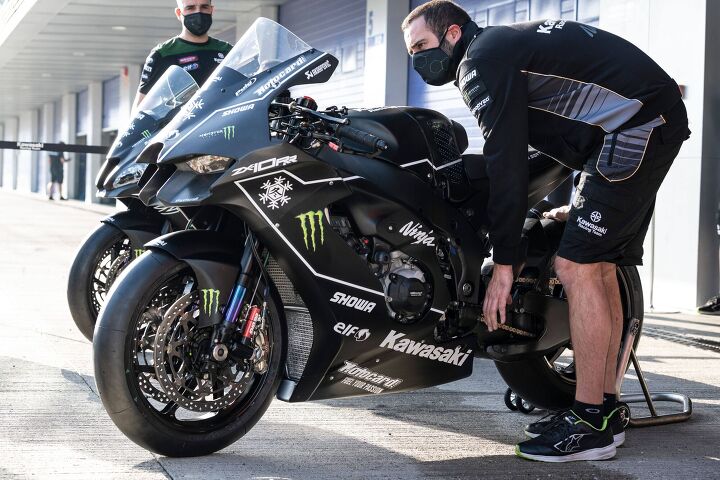
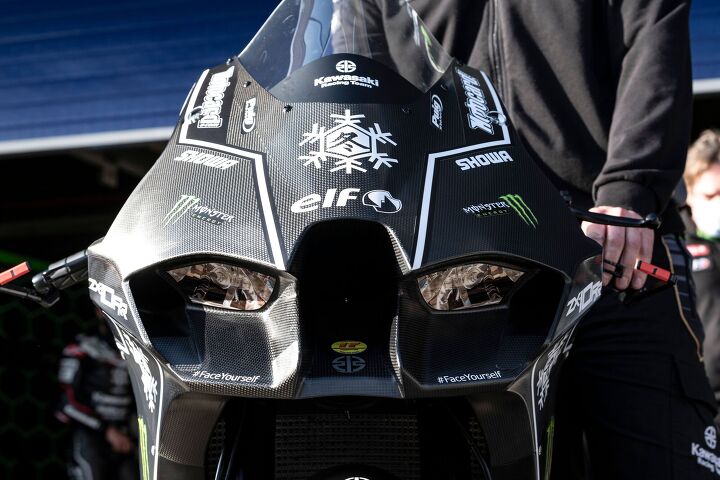
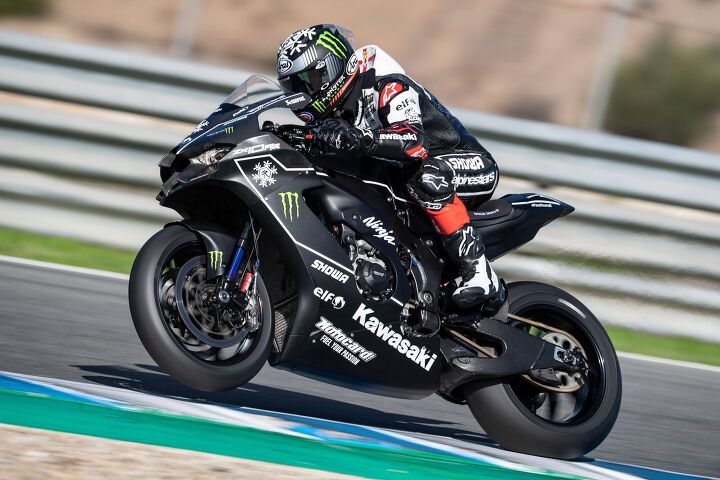

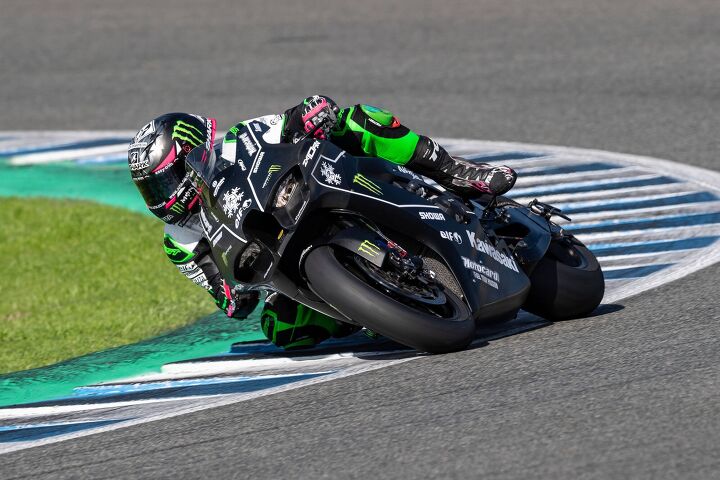
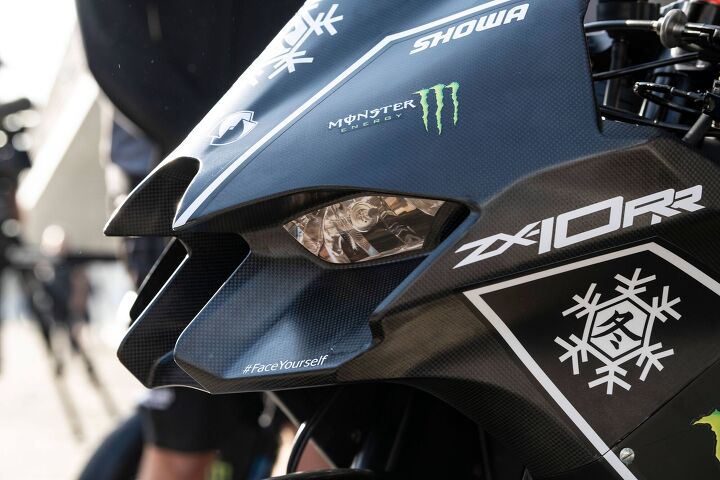
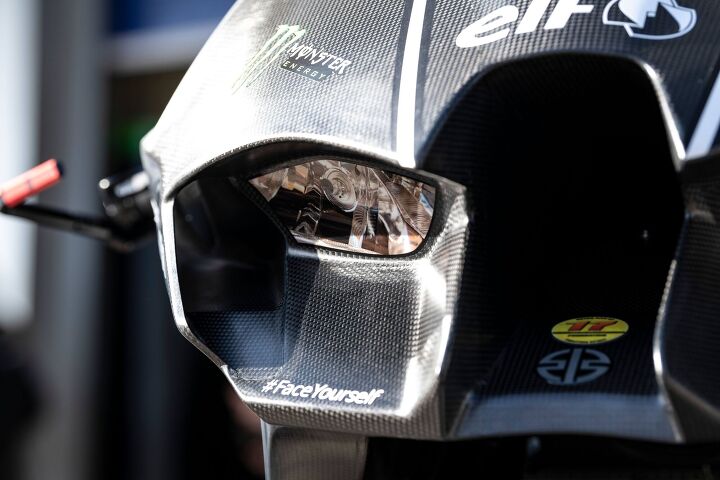
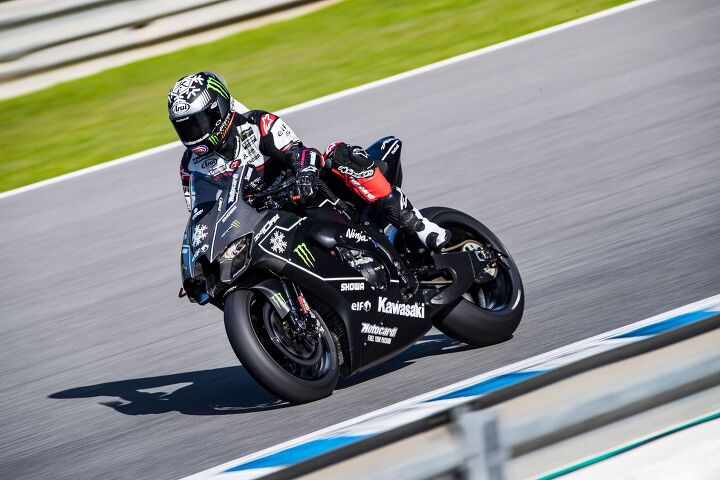
The post Kawasaki WSBK Team Tests New 2021 Ninja ZX-10RR Superbike appeared first on Motorcycle.com.
http://feeds.feedburner.com/~r/Motorcyclefeed/~4/yscu9SXMJV4 -
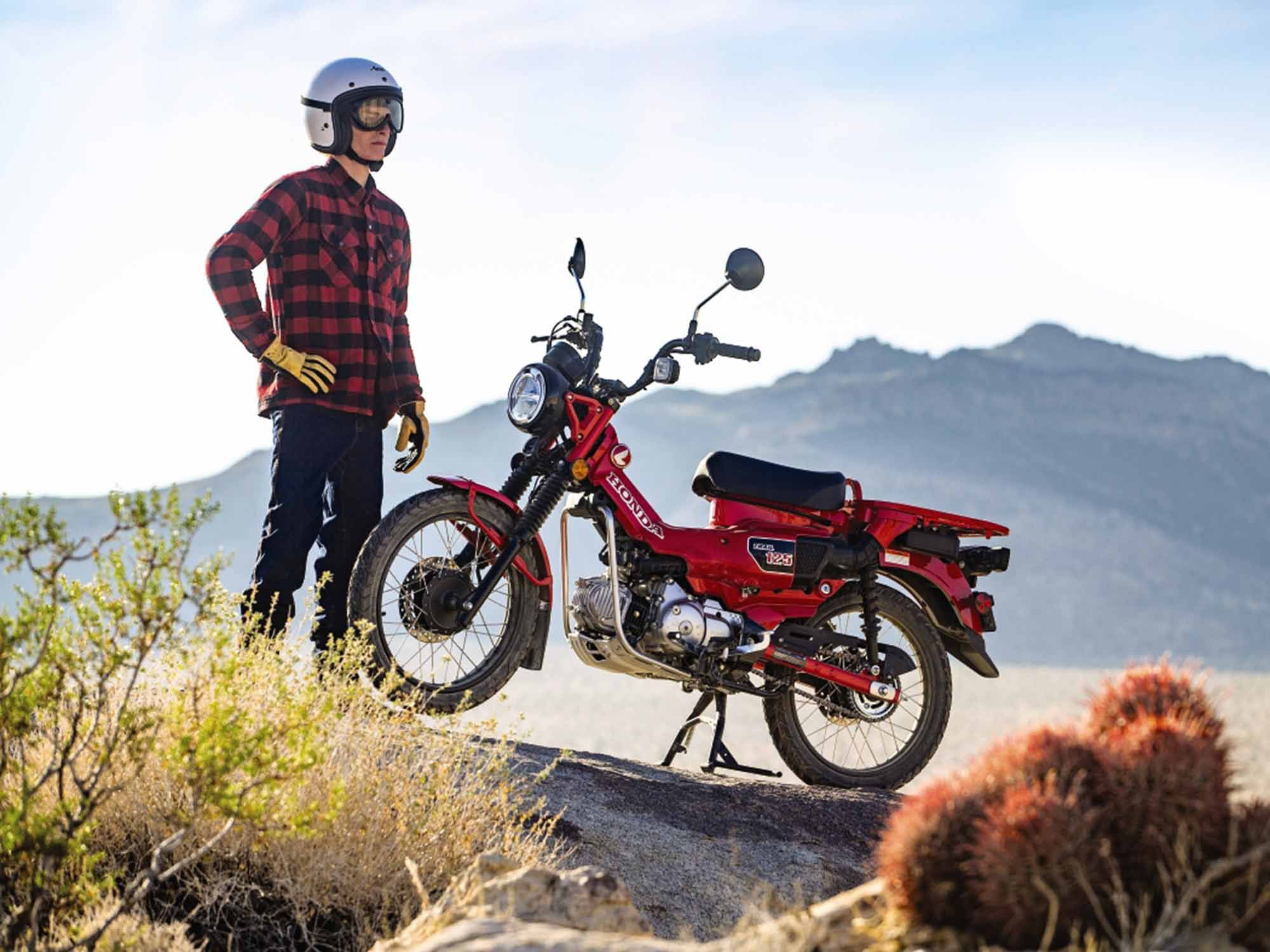
The Honda Trail 125 faces Captain Overkill and comes out humbly victorious. (Jeff Allen /) The phenomenon of riding the 2021 Honda Trail 125 ABS off-road is that everyone you see looks like Captain Overkill.
Even that rider I saw on a Yamaha WR250R. “NICE BARGE, BRO! SEE YOU AT STARBUCKS.”
I didn’t actually get quite that wound up. It’s simply that the Trail 125 brings the off-road chill, like, “Why do you need a 5,000-pound lifted Silverado with 37-inch tires and 4 billion LED lumens of light bars?”
You just don’t.
I’m not knocking giant trucks (OK, maybe a little), or remarkable dual-sports (I own and enjoy a 2013 WR250R), or adventure bikes. But the simple, light fun of a motorcycle like the Trail 125 makes you feel good in a pure way not matched by many vehicles. It’s the combination of its handy, agile chassis, automatic clutch, and a demeanor that says, “Relax and enjoy the scenery.”
Which is exactly what I did with our early-access testbike. Sure, I rode around town—to and from the office, on errands, etc. It’s fun for that, and a little more rough and ready than the Super Cub (see page 54). But the Trail 125 is the kind of bike you want to wake up to on a Saturday morning, walk out to your yard in a heavy riding flannel, hiking boots, and an open-face helmet, wipe the dew off the seat, fire up the bike, and go exploring.
I am fortunate to live near motor-legal national forest trails that wind their way around and over mountains more than a mile high. It’s mostly bumpy fire road with a few short technical single-tracks here and there. Perfect for wandering around, and just technical enough to see what this Trail 125 was up for.
Despite my excitement for climbing mountains, I felt obliged to ride at about 45 to 50 mph on the meandering two-lane that takes me there, and really didn’t get much past 55 despite my best efforts. Versus the Super Cub, the Trail has a three-tooth-larger, 39-tooth rear sprocket, plus longer intake and tuned exhaust to boost low-end and midrange power. So, it gets busy if you try to go “fast” on the road. My smile was biggest if I kept it around 40 on tarmac.
That different engine tuning was plain to see on our dyno. The Super Cub laid down 8.1 hp at 7,100 rpm and 7.1 pound-feet at 5,100, while the Trail 125 did 7.9 hp at 5,710 and 7.4 at 4,650. It’s always grand to see engineering at work to achieve specific goals and meaningful differences, even in this small-displacement, fun-bike category.
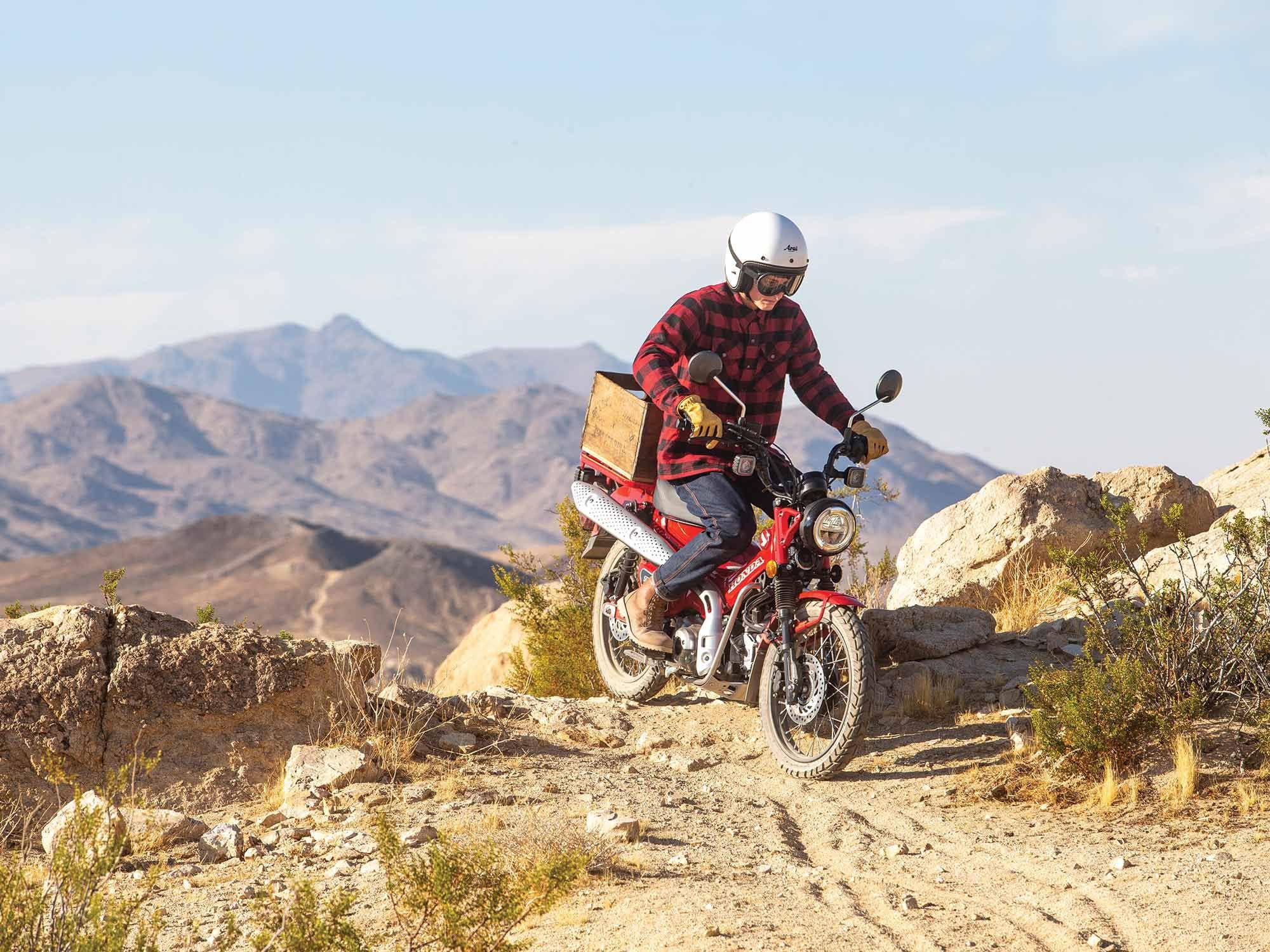
Workboots, a flannel, an open-face helmet, an apple crate, and some time: This is everything you need on the Trail 125. (Jeff Allen /) All the better for my first long fire-road climb, taken mostly in first and second gear of the four available. A steady 17 mph in first was just about right for the bumpy, occasionally rocky road. When it smoothed out, a quick click to second and 25 mph or a bit more dusted off the miles a little quicker. The pace matched the suspension damping just fine, and I had a ride free of bottom-out clanks.
The fork has 0.4 inch more travel than the Super Cub, a slightly longer wheelbase, and a taller seat that’s narrower at the front to help feet reach the ground despite an 0.8-inch increase to 31.6 inches total. The ergonomics for my 6-foot-2 frame were just spacious enough, though I had to repeatedly remind myself to scoot forward on the solo saddle lest my tailbone hit the luggage rack. Standing on the pegs as a periodic and brief relief from big bumps was workable, but there was no “rally stance” for me on this little bike. Our photo model, at 5-foot-8 and 120 pounds, had a lot more options for moving around.
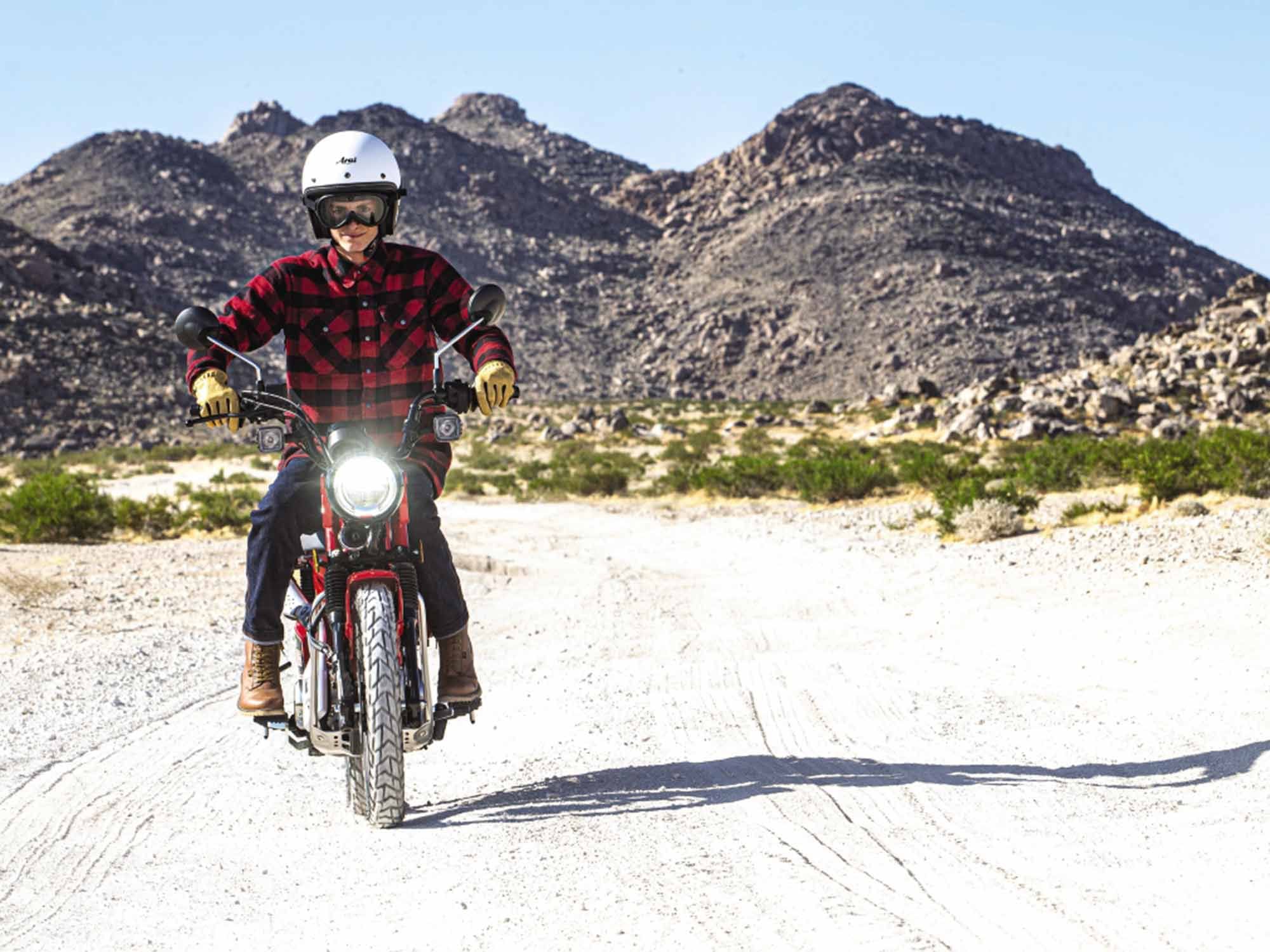
Adventure is out there, and the Trail 125 is a willing companion. (Jeff Allen /) These are the same roads I took on my old yellow 1969 Trail 90. You can think of the 125 as the “Dakar” bumper bike in comparison to the 51-year-old model, though I have to give credit to the 90 for having the dual-range transmission. The first time I really got into dirt on my ’69, I rode the first 10 miles of trail in the High range, but after struggling to get up a sandy hill, I switched to Low by shifting the lever on the gearbox. Holy moly, did it make a difference. Aside from that, the new 125, not surprisingly, worked better.
That said, the 125′s gearing was good for most of what I was riding, though a few steep uphills taxed the automatic clutch because first gear was a bit tall. The bike benefited from me adding some extra torque of the “pound-feet” variety. I have to admit I am a 225-pound pizza-loving primate; your results may vary. The automatic clutch was consistent and, after some miles of practice for coordinating shifts, provided a smooth and easy experience when clicking up or down through the gears. There was just no worry at all about stalling the bike.
It was a nice feature on one not-quite-nasty uphill single-track trail, a rock-strewn tunnel through scrub. The benefit here was not needing to duck due to the bike’s compact dimensions. I was so proud of my successful time in this single-track, I stopped to take some selfies. What is an adventure without proof? Anyway, as I clicked off a few shots and enjoyed mountain air redolent of sage and manzanita, a fellow on a KTM 500 came ripping up the trail and stopped behind me, as there was no place to pass.
“Hey, sorry I’m blocking the trail,” I said.
“No problem, man,” he said. “Wait, did you ride that here?”
I just smiled, hit the starter button, and putt-putted up the last part of the narrow trail, my way back onto the rocky fire road that would take me to the 5,500-foot peak I was looking to conquer.
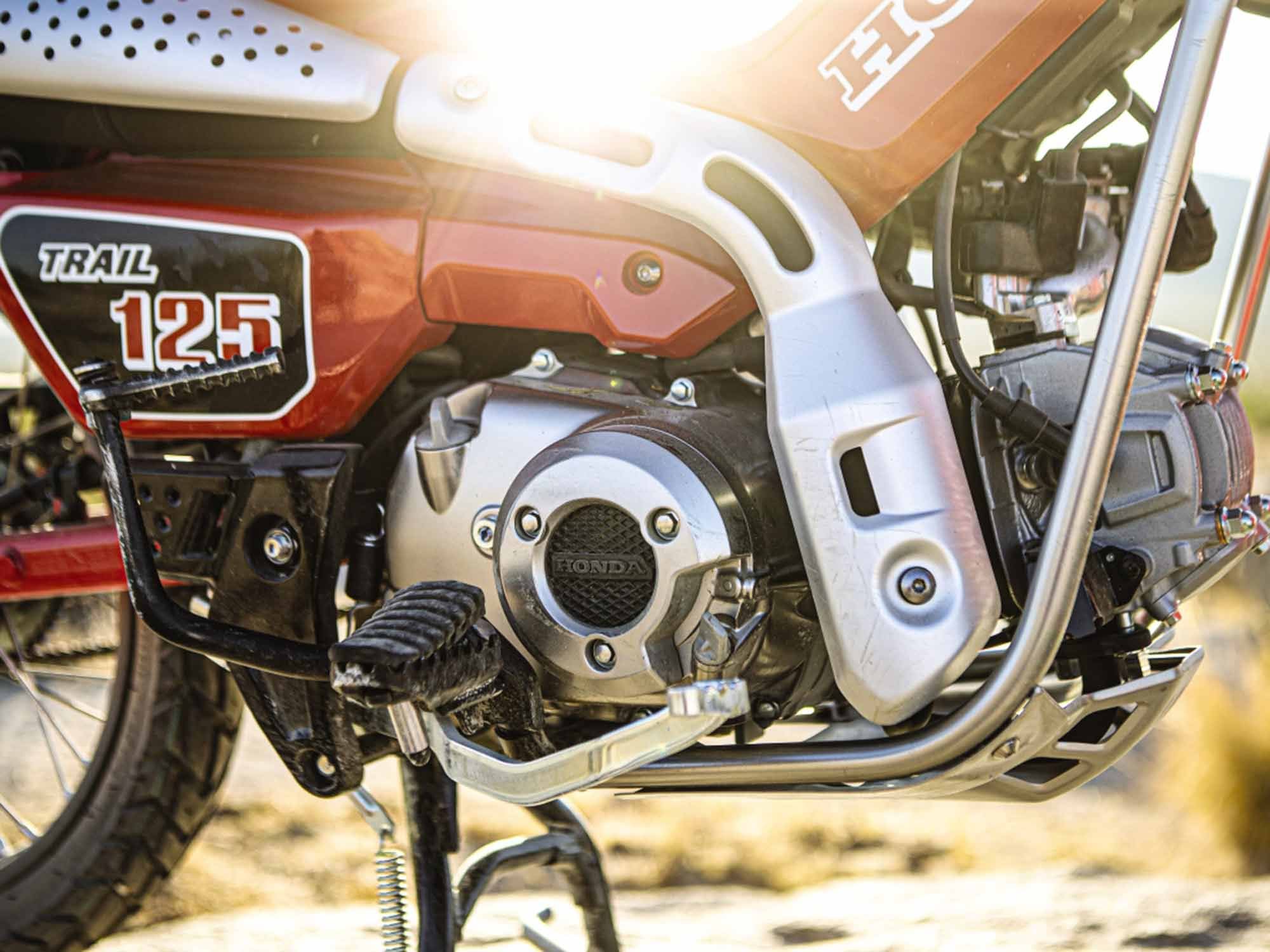
One-eighth of a liter returns a 112 mpg fuel economy. (Jeff Allen /) His question was certainly valid, even if it should have been obvious that I didn’t carry the 125 there. But in our current moto-world context of 600-plus-pound adventure bikes and race-ready dual-sports with shockingly short major-service intervals, it’s not a crazy question. We often think we need these bikes to really go anywhere exciting. The 259-pound Trail 125 makes a compelling argument to the contrary.
After parking at my conquered peak and gazing east to the desert, and west to the ocean and Catalina Island, it came time to revel in the speed-enhancing effects of gravity as we shed more than 4,000 feet in something like 20 miles.
I decided to play the rugged individualist role here and kickstart the Trail 125, since the option was available and the bike was poised on its centerstand. It was almost too easy; you barely had to breathe on the lever and away the two-valve OHC single went. I’m just kidding about it being “too easy.” Cripes, I wish I could get a Velocette to start this easily. Or to start at all. But then again, no Velo I’ve owned has had EFI or a 190-watt alternator. Or a 190-watt anything, in fact.
The 17-inch wheels (with stainless spokes) rolled over most obstacles just fine, and the chunky sort-of street ADV tread never “broke” “traction,” unless asked to. As on the Super Cub, the single front disc brake (220mm, two-piston caliper) has ABS, while the rear (190mm, single piston) does not. The front ABS would at first offer a hard lever on initial application as I bounced my way down, but would settle into normal-feeling operation.
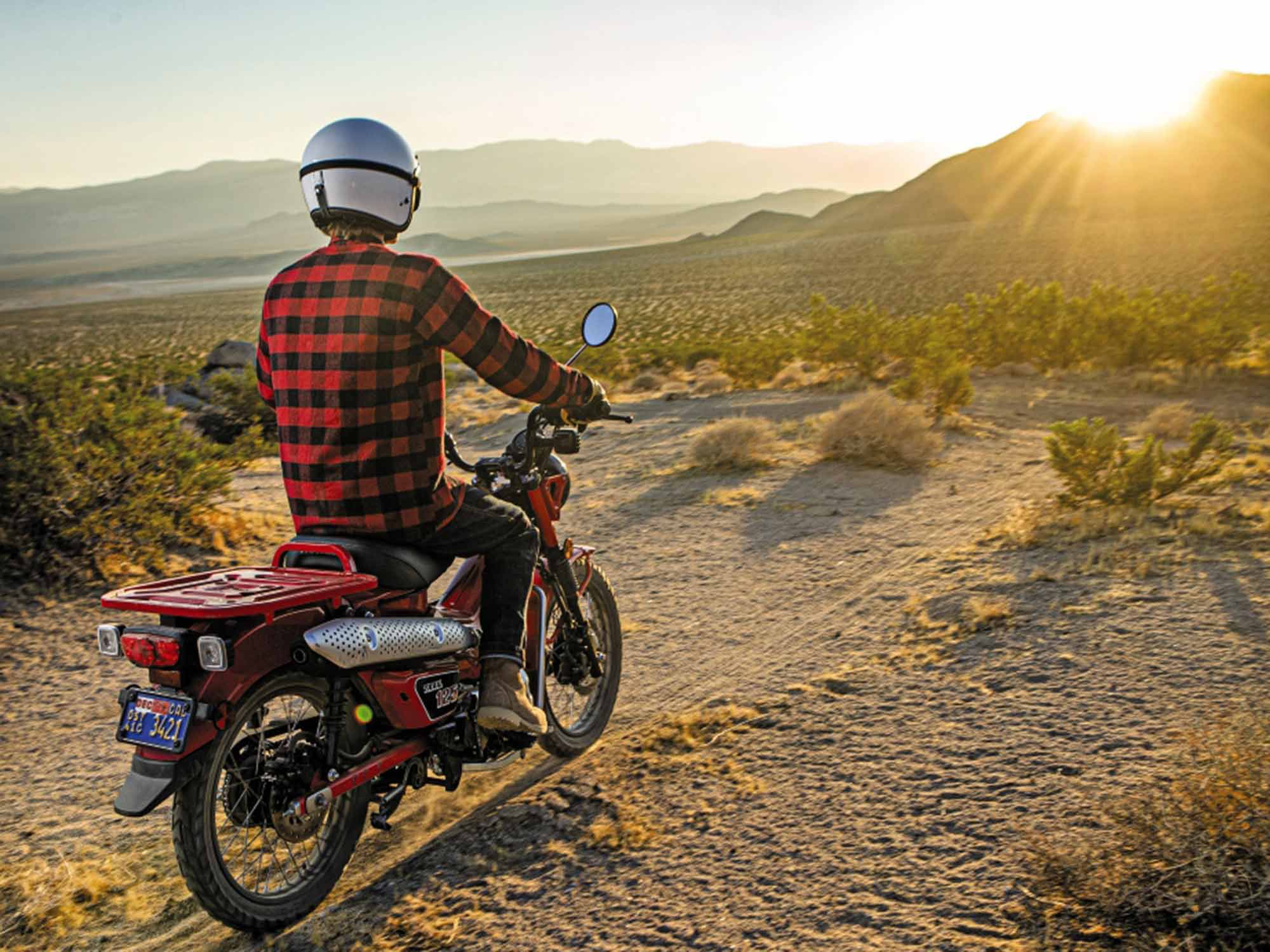
The Trail 125’s easy operation and capable off-road manners will keep you chasing the sun over that next hill. (Jeff Allen /) This particular road-to-mountain adventure clocked up 60.5 miles, during which the Trail 125 burned all of 0.541 gallon of gas. Yes, a few molecules over a half-gallon. With its 1.4-gallon tank and 112 mpg, range to empty is 159 miles, or about three hours and 25 minutes at a constant 45 mph. What’s worth remarking on here is the six-segment fuel gauge on the round LCD speedo/info screen. The BMW R 18, just $18,366 more (as tested) than the $3,899 Trail 125, doesn’t have a fuel gauge, and it only gets 35 mpg. In any case, with the Trail 125′s range and easygoing personality, I’ve been having visions of strapping a tent and hiking stove to its large cargo rack, along with a couple of extra bottles of fuel, and getting lost in Death Valley and Panamint for days on end. The weather is just cooling off…
Like the original Trail models dating back to 1961, the 125 is one of those bikes that everyone seems to have room for. It costs about as much as a midgrade mountain bike and hardly takes up more room in the garage. Speeds are moderate and handling docile, and yet it has the ability to ride over just about anything resembling a road. No wonder, then, that during the 30-year run of the original Trail series, from the 50cc CA100T to the final Trail 110 of the 1980s, Honda sold more than 725,000 units.
The essential charm of the old CT90 and 110 remain, but re-envisioned for the EFI era.
The Trail 125 will never replace your adventure bike or enduro-ready dual-sport. It simply asks you to come as you are, gives you the simplest tool for riding where you want to go, and makes you smile the entire way.
Honda Trail 125 Specifications
Price:
$3,899
Displacement:
125CC
Seat Height:
31.6 IN.
Fuel Capacity:
1.4 GAL.
Wet Weight:
259 LB. -
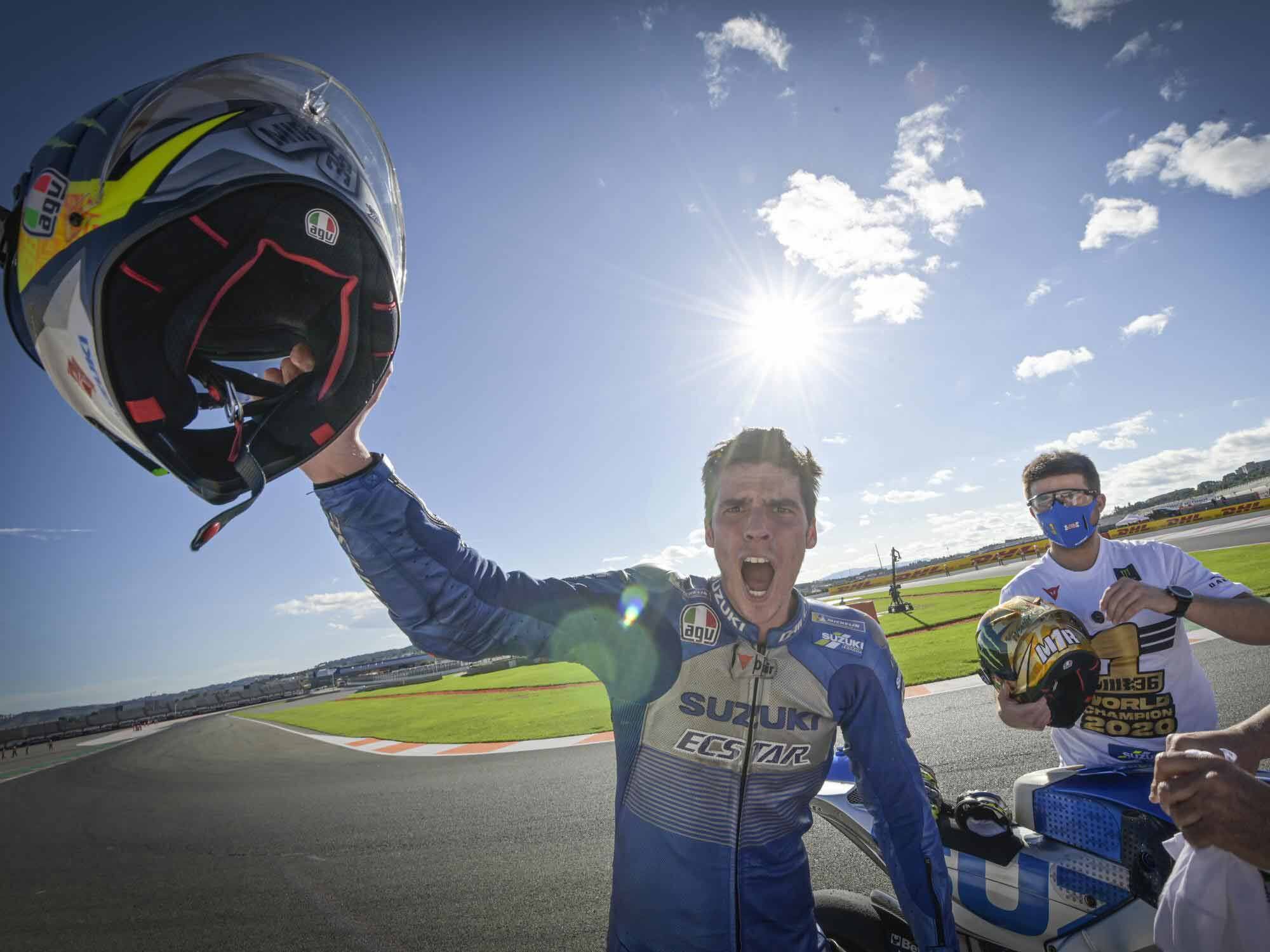
Joan Mir is the first Suzuki rider to win a MotoGP world title since 2000. (MotoGP/) Listening: If there is a No. 1 rule in Joan Mir’s handbook to becoming world champion, this is it. Combining his natural talent with listening, studying, and observing has been the key to the newly crowned champion’s success. What impresses more is Mir’s maturity and his down-to-earth persona.
One comment among all those offered this weekend is enough to explain Mir’s masterpiece this season: “Joan Mir is an incredible talent, and to me he is more mature and experienced, considering that this is only his fifth season in the GPs, the second in MotoGP, with only one year in Moto2,” says nine-time world champion Valentino Rossi. “No one would have bet on him at the beginning of the season, but we have to admit that in 2019 he has improved a lot in the last races, and he showed a strong pace in the winter test. He deserves the 2020 title, as he has been the most consistent, which is very important. It’s true that so far he has won only one race, but already in Austria he was fighting for the victory when the race was red-flagged. So yes, Joan Mir is the surprise, but he deserves to be the 2020 MotoGP World Champion 100 percent.”
But who is Joan Mir, the new kid on the block who, with only one victory, is the champion of the premier class with the fewest victories in history? He now holds the record for the least wins by a champion ahead of Leslie Graham (1949), Umberto Masetti (1950 and 1952), and Nicky Hayden (2006), all of whom achieved their championships with two wins. Who is this 23-year-old Spanish boy from Mallorca, called upon to continue the legacy of Kevin Schwantz (1993) and Kenny Roberts Jr. (2000), the last two world title winners with Suzuki?
Inside the helmet of the 2020 MotoGP World Champion is a strong mind and a big heart. Mir is the rider next door with his feet on the ground and the eyes staring at the target.
Who does Joan Mir see in the mirror?
I see a calm and sincere person who just wants to be himself. I consider myself a normal person, enjoying life. Of course, in a way, racing is not a normal job. Everything around MotoGP, like the traveling, the media, the pressure, is not normal. But at home I see myself as a person who goes to work and returns after having done his job. A lucky person who does what he likes most.
You are always reserved at the track. What are you like at home?
I like to spend my time with my girlfriend Alejandra and my three dogs. I was born in Mallorca. Over there we only have two things: the air and the sea. I love the sea, but living in Andorra, I started appreciating the mountains also, where I cycle. I don’t like to go out too much to discos or restaurants. I prefer to stay at home and watch TV with Alejandra. I have a close circle of friends, and for me, family comes first.
Are you maniacal about the details like most racers?
In a way. I like the order. I’m a hard worker and quite a perfectionist, starting with myself. But don’t get me wrong—I don’t consider myself perfect at all. I’m still young, on track as off track, but I think that I face life correctly. I consider myself a fairly humble person, who likes to listen to people, especially people who know more than me. I listen a lot; it is the basis of the success that seems to be coming.
Mallorca is the isle of champions like five-time world champion Jorge Lorenzo and the tennis player Rafa Nadal. How did you start?
I was born in Palma to a normal family. My father Juan had a skateboard and surfboard shop in town, while my mother Ana was an interior designer. I spent my childhood more like a surfer, enjoying the sun, the sea, and the boards. My dad was passionate about motorcycles, while my uncle Joan (Perelló) was a rider in the Spanish championship CEV. I inherited from him the passion for speed. One day my dad brought me to Chicho Lorenzo’s school. Jorge Lorenzo’s father was the reference on the island.
Chicho Lorenzo was impressed by your natural talent, but he said you didn’t like the discipline.
It’s not like this. I think Chicho cannot judge a 9-year-old boy, who just wanted to enjoy riding without taking it too seriously. So after a couple of years I left the school and asked my father to hire a personal trainer to follow my path. This is how I started in the Spanish national cups and then championship. My father Juan could pay for my training but not my seat in a team. He couldn’t afford to pay 200,000 euro to make me compete. I remember well; that was an astronomic pressure. This was the time when I learned to adapt quickly to a new bike, each year a different one, because I knew that if I was not going to win, it was over. I never rode the same bike two seasons in a row. The only exception is these two years in Suzuki MotoGP.
This capacity to adapt was a key to this year’s success?
In the junior classes, adaptation was a necessity, not a choice. I made it with my method: listening to those who have more experience, observing the rivals, and studying all the races. This year’s success is the result of the base we put last year with my team. I have learned a lot. 2019 was my rookie year in MotoGP and my style was very aggressive. It had happened the same when I joined Moto3 in 2016. As I had no experience, nor speed, I tended to overdo. I was pushing too much and of course I was making mistakes. Now that I have things more in control, I can be faster. We are on the right path, and this is only the start.
What was the turning point also in adapting your riding style?
One day Kevin Schwantz told me, “I like your aggressive riding style, but you should be smoother.” I listened to his advice, and I thought about it. I have always been a hard braker, it’s a mark of my style, but throughout my rookie season last year I saw that this was not paying off with the Suzuki. I had to be smoother. I made it because in the end it’s easier to become smoother when you are aggressive, rather than vice versa. So I studied, and I learned to ride the Suzuki aggressively but with a flow, as my team manager Davide Brivio says, like playing a violin—with strength, precision, and the search for that particular rhythm, that flow.
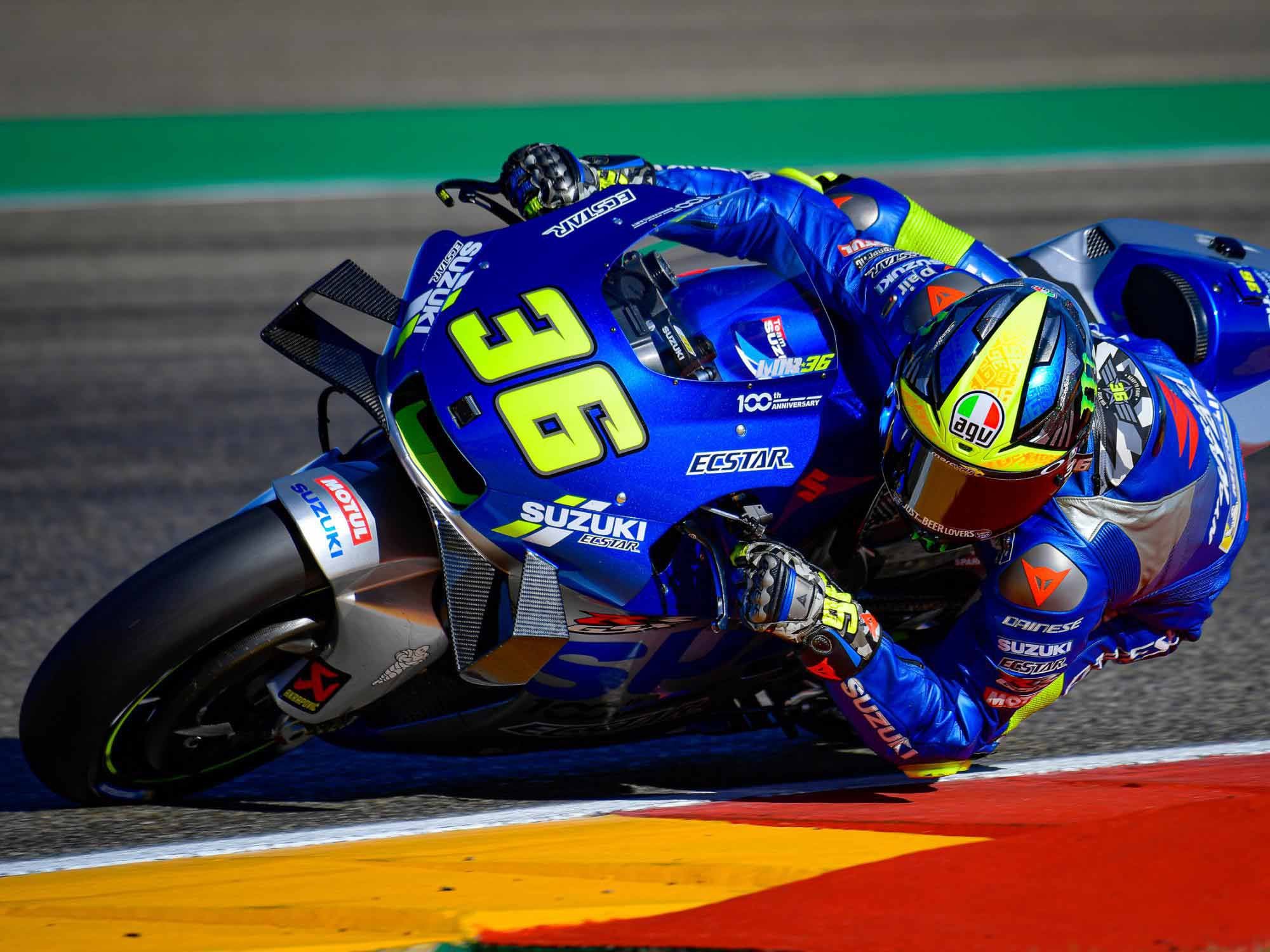
Mir had to learn to be smoother on the Suzuki GSX-RR. (MotoGP/) Two world titles in only five GP seasons. If you look back at Phillip Island 2017, when you clinched the Moto3 title, who is the boy that you see on that podium?
I see a young boy, but it is always me. I had less experience, but the same dreams, the same values.
Three years later you have achieved the ultimate dream.
Winning the MotoGP title is different. On the finish line I couldn’t understand anything. It was crying and laughing at the same time. One by one, I saw the frames of my and my family’s life—years of sacrifices, my father coming back come super tired after a day of hard work, my dread to return home if I was not winning in the junior classes.
How did you prepare in the week between Valencia 1 and Valencia 2 that would crown you a world champion?
I spent it in Andorra with my girlfriend, my trainer, and my three dogs, going out only for training. I knew that if we continued to do everything as I had done so far, I didn’t have to worry. Yes the pressure was there, this is constant for a racer, but I was also aware that winning would have been fantastic, but even if I didn’t succeed, it would have been a fantastic season anyway. This is good pressure.
When did you start believing in the title?
The turning podium was the podium in Austria. After last year’s terrible incident during the Brno test where I injured myself and the difficult start to this year [two DNFs and a fifth place], in Styria I felt for the first time in MotoGP really competitive to fight for victory. But it’s only after Misano and Barcelona that I realized that we had the chance to win the title. I was continuing to progress and be consistent.
Franco Morbidelli told us that when he was a kid his mom hung a poster of Ayrton Senna over his bed and that he still brings this poster with him everywhere he goes as a source of inspiration. Who was your idol?
I don’t have something similar, but I have to admit that I still have, at my dad’s house, a collection of all Valentino Rossi’s bikes. Valentino is my model: I profoundly admire him, for everything he does on and off track because everything he does, he does it well. Though I have my personality and he has his.
What do you think will change after this success for you and the Suzuki’s factory?
I still haven’t realized what it means to be world champion, but I can say what happened after the long-awaited first victory in MotoGP at Valencia 1. I was super happy, but in the end I continue to be myself, I haven’t changed.
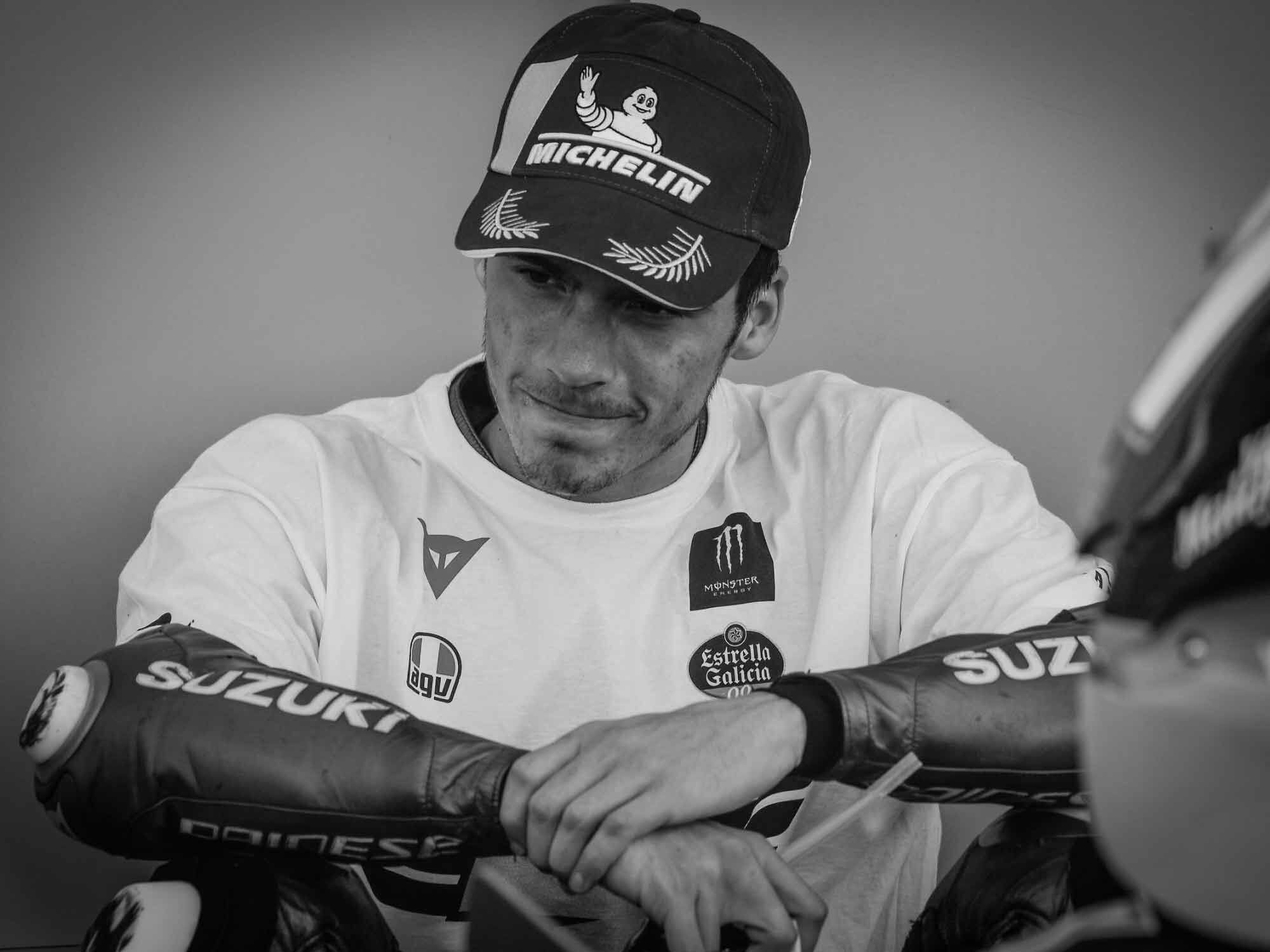
Reflection after the finish line and a championship won. (MotoGP/) Bringing the title to Suzuki 20 years after Kenny Roberts Jr., and 27 after Kevin Schwantz, was quite an achievement.
In Suzuki I found a family and a group of motivated people who wanted the best for me and for the factory. I believed in the project. I was brave enough to refuse Honda HRC’s offer to compete alongside reigning world champion in favor of Suzuki. I wanted to grow and evolve with the bike. The target was to become world champion together, but I didn’t expect to succeed in my second year. Everything has been perfect and special—also winning in Suzuki’s 100th anniversary year. As for Kenny’s and Kevin’s titles, it’s an eternity. I feel closer to Kevin even though I was not even born when he won. Next time we meet, I’d like to invite him out for dinner and ask him how it was riding the 500cc Suzuki bike. He offered to let me ride his 500cc; it would be amazing to swap the bikes.
What do you say to those who think that winning in a year without Marc Márquez has less value?
If anyone says so, it is because they know nothing about roadracing. Marc was not kidnapped and disappeared; what should we say then about those who in the past were the favorite and then got injured? These things are part of sport. I don’t think I have less merit just because he isn’t there. Marc has raised the bar, but I don’t know if he will find the same situation when he returns. After such a long stop, it will take time to get back in shape.
Do you already know how you will celebrate? Do you have a special dedication?
I’d like to dedicate this victory to those who have lost a family member or a friend because of the pandemic. My thoughts go out to those parents who struggle to bring home a decent salary in this particularly difficult economic situation affected by the pandemic, to those who are in the hospital. COVID-19 has been my No. 1 rival this year, an invisible opponent. On track I had six rivals and the pressure was that a mistake could put you out of the top five. But that is good pressure.
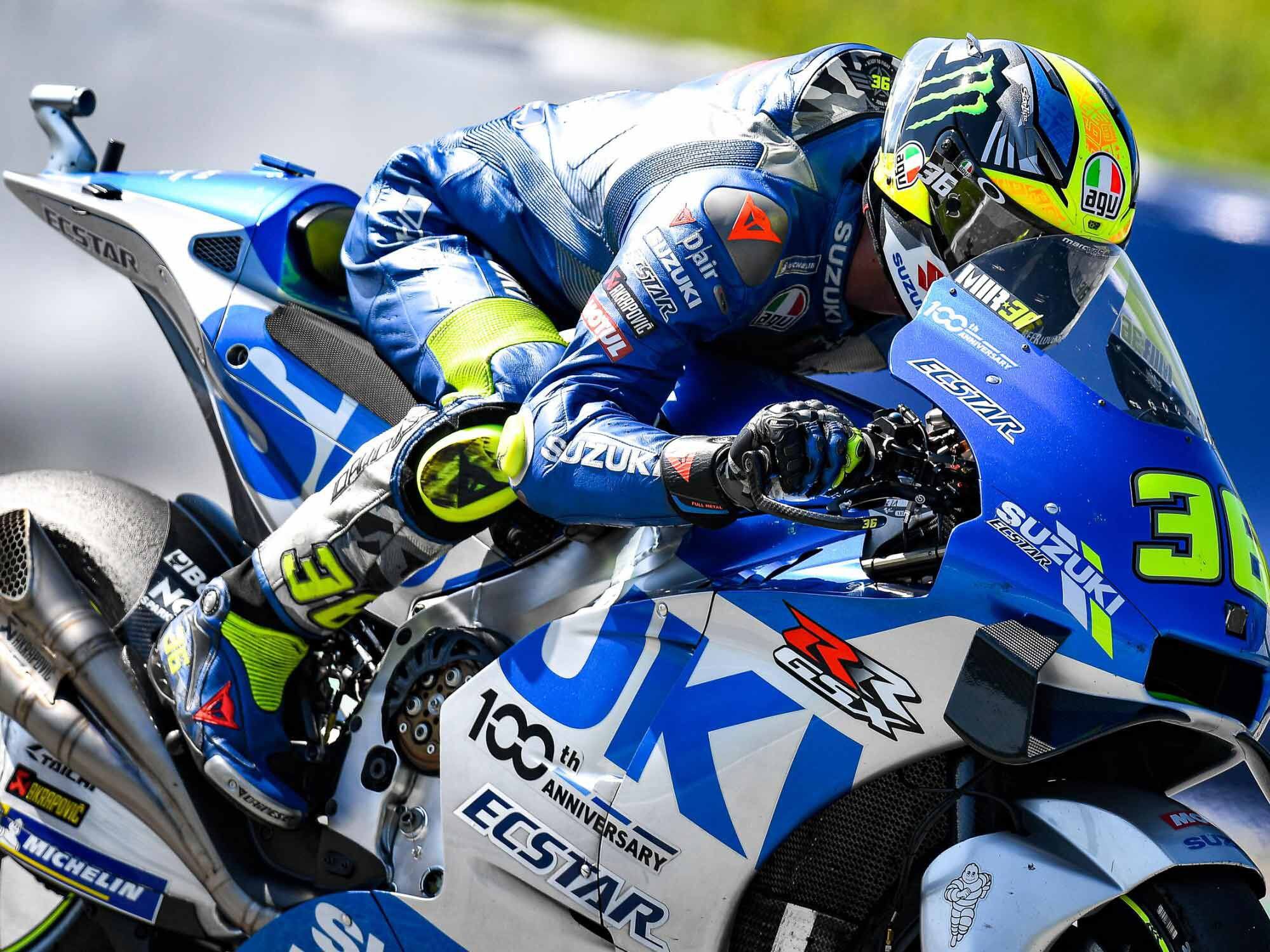
Mir says the COVID-19 pandemic was his No. 1 rival. (MotoGP /) Finally, you will be remembered for having won the title with the record of having won only one GP (so far), but also for that unbelievable pass on Rossi at Misano.
At that moment I didn’t think about overtaking Valentino. For me it was just another rider between myself and the podium. Only afterward when I watched the race at home, I realized that Valentino won his first title in 1997, the year I was born. Impressive.
-
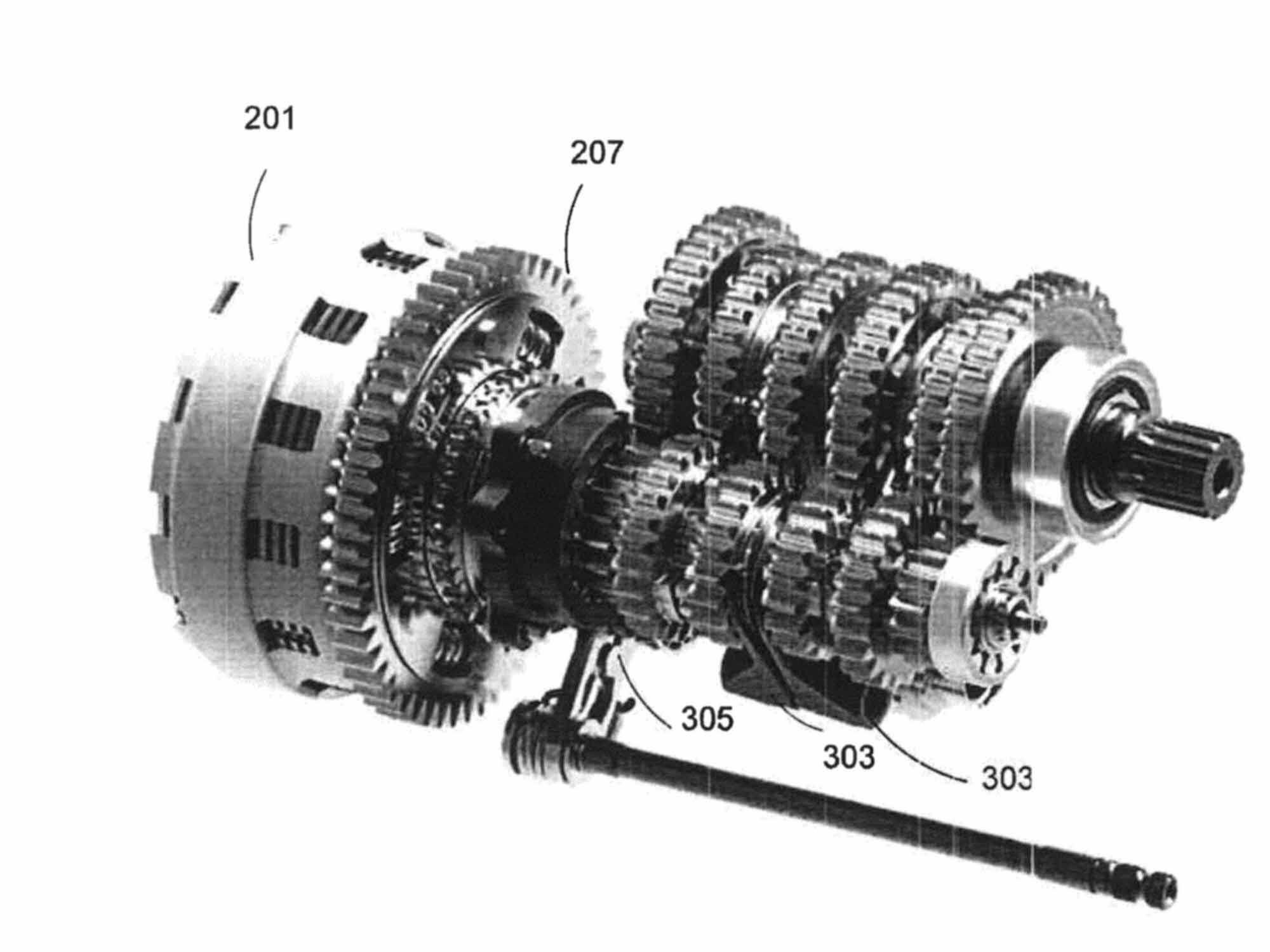
Ducati has developed a simple seamless-shift gearbox for use on streetbikes. (Ducati /) When MotoGP’s rulemakers decided to make the switch from two-stroke to four-stroke 20 years ago, they hoped the result would be bikes that were more relevant to production models. The sheer amount of GP-derived innovation that’s reached showrooms since then must have surpassed their wildest dreams. Traction control, quickshifters, inertial measurement units, aerodynamic winglets, and 200-hp-plus engines have all come to the street directly from MotoGP. Ducati, the manufacturer in the technological vanguard, wasn’t even involved in GP racing until after the four-stroke switchover. Now the same firm is working on bringing another MotoGP technology from the racing series to the street in the form of a seamless-shift transmission.
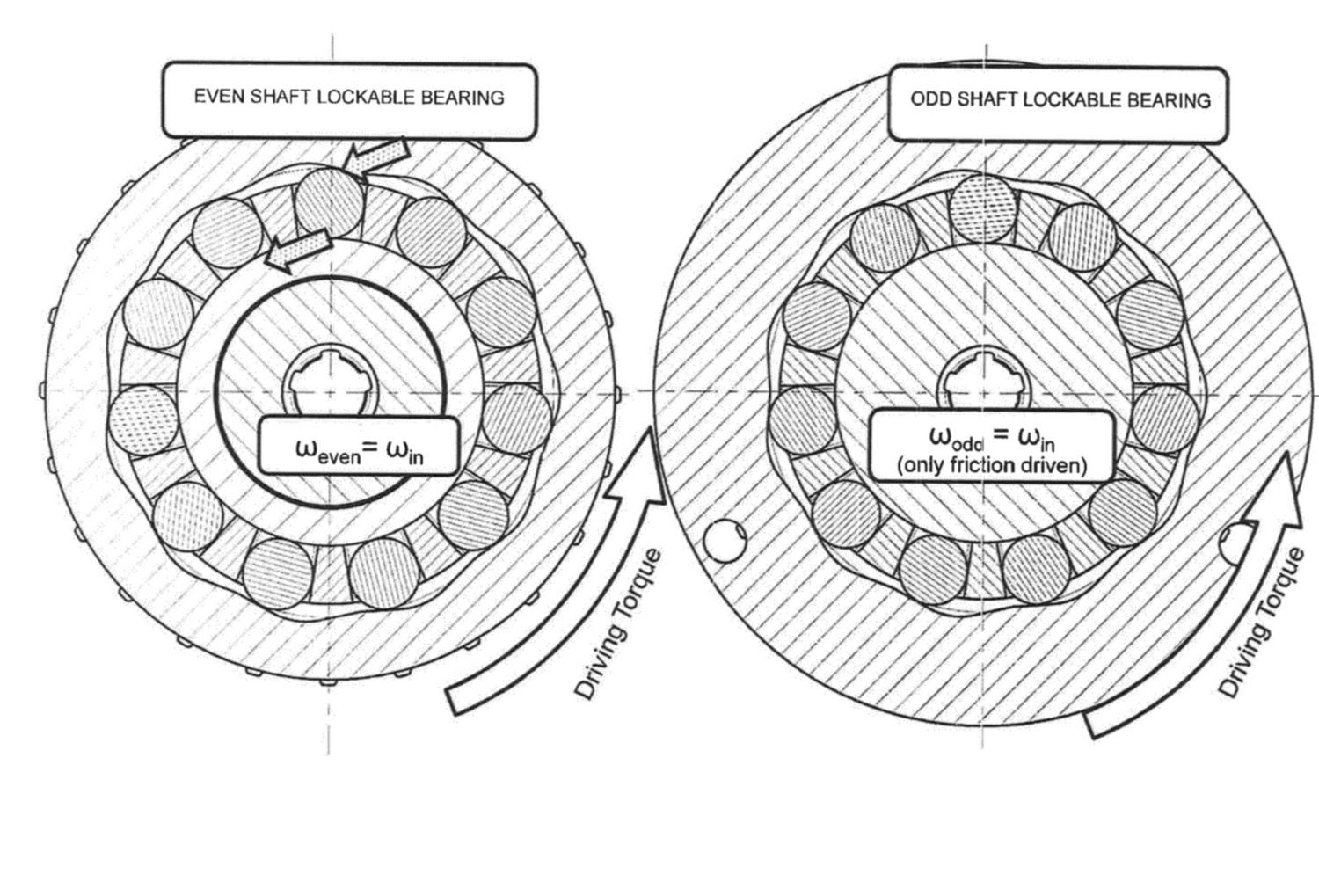
The system works like Honda’s DCT, but uses a clever combination of lockable roller bearings rather than twin clutches. (Ducati /) MotoGP actually resisted the introduction of seamless gearboxes, which allow riders to change gears up or down without even a momentary lapse in the transmission of torque to the rear wheel. The series banned dual-clutch transmissions like Honda’s DCT before anyone even tried to introduce one, but the result was a development race to create alternative systems that could achieve seamless shifting with just one clutch. Honda got there first with a gearbox so expensive and so secret it had its own security man in the GP paddock. But rivals have caught up; now every bike on the grid has some sort of seamless-shift transmission.
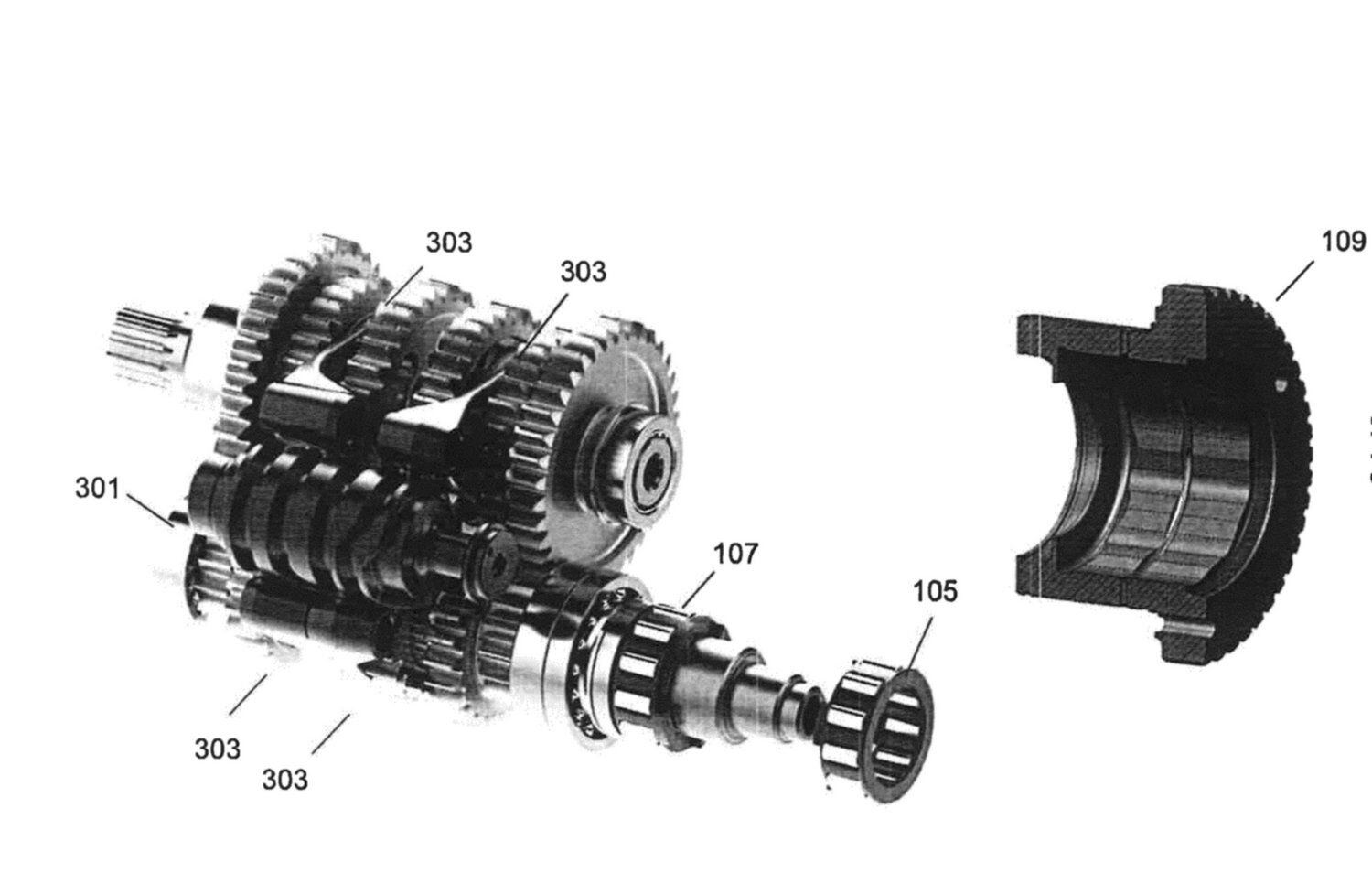
Ducati’s system uses a single clutch on an input hub that acts on two lockable bearings, one on each shaft. (Ducati /) Thus far, the high cost of MotoGP seamless-shift boxes has prevented implementation of the systems to road bikes. Sure, Honda’s dual-clutch transmission has been around for a decade on the VFR1200, NC750, and now the Africa Twin, but it’s a relatively heavy setup with semi-automatic operation, more suited to touring convenience than high-performance riding.
Now Ducati has developed a seamless shift box that’s cheaper and simpler, with a conventional foot-operated control and the ability to simply swap cogs with no need to disengage the clutch or interrupt the power delivery. The new box, seen here in photos from Ducati’s own patent application, works very much like Honda’s DCT, but replaces the twin clutches of Honda’s system with a clever system of lockable roller bearings.
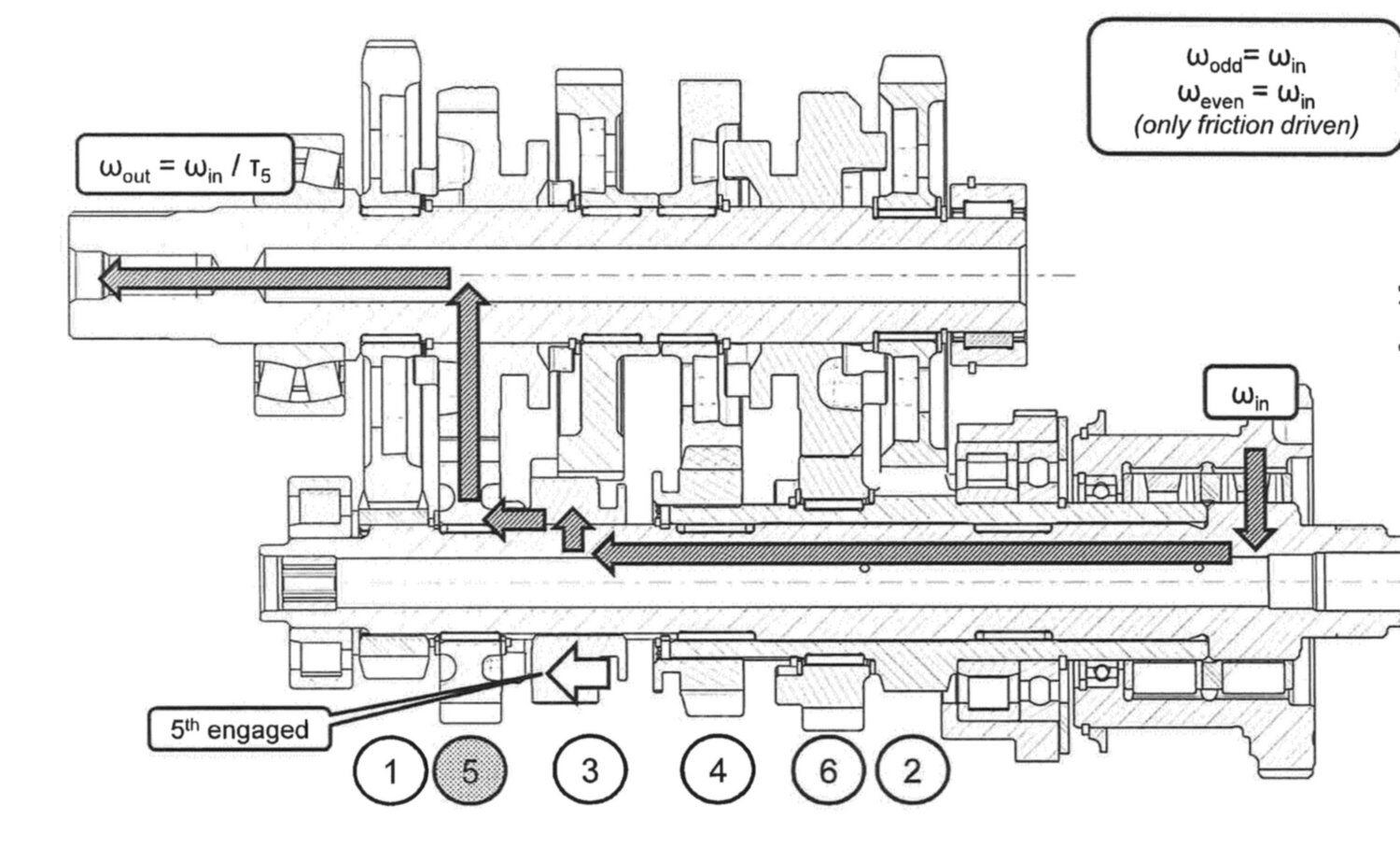
The input shaft has two parts, with first, third, and fifth gears on the farthest end from the clutch. (Ducati /) As with the DCT box, Ducati uses an input shaft split into two parts. The odd-numbered gears—first, third, fifth—are on the end farthest from the clutch, while the even-numbered (second, fourth, and sixth) are fitted to a sleeve that fits over the end near the clutch. However, where Honda’s DCT has a separate computer-controlled clutch for each half of the input shaft, Ducati’s system uses a single clutch, mounted on an input hub and acting on two lockable bearings, one for each shaft.
DCT allows two gears to be engaged simultaneously, with computer-controlled operation to decide which ratio you’ll want next and to modulate the pressure on the two clutches during shifts. Ducati’s system, in contrast, is all-mechanical, with a conventionally operated clutch that’s only used when coming to a halt.
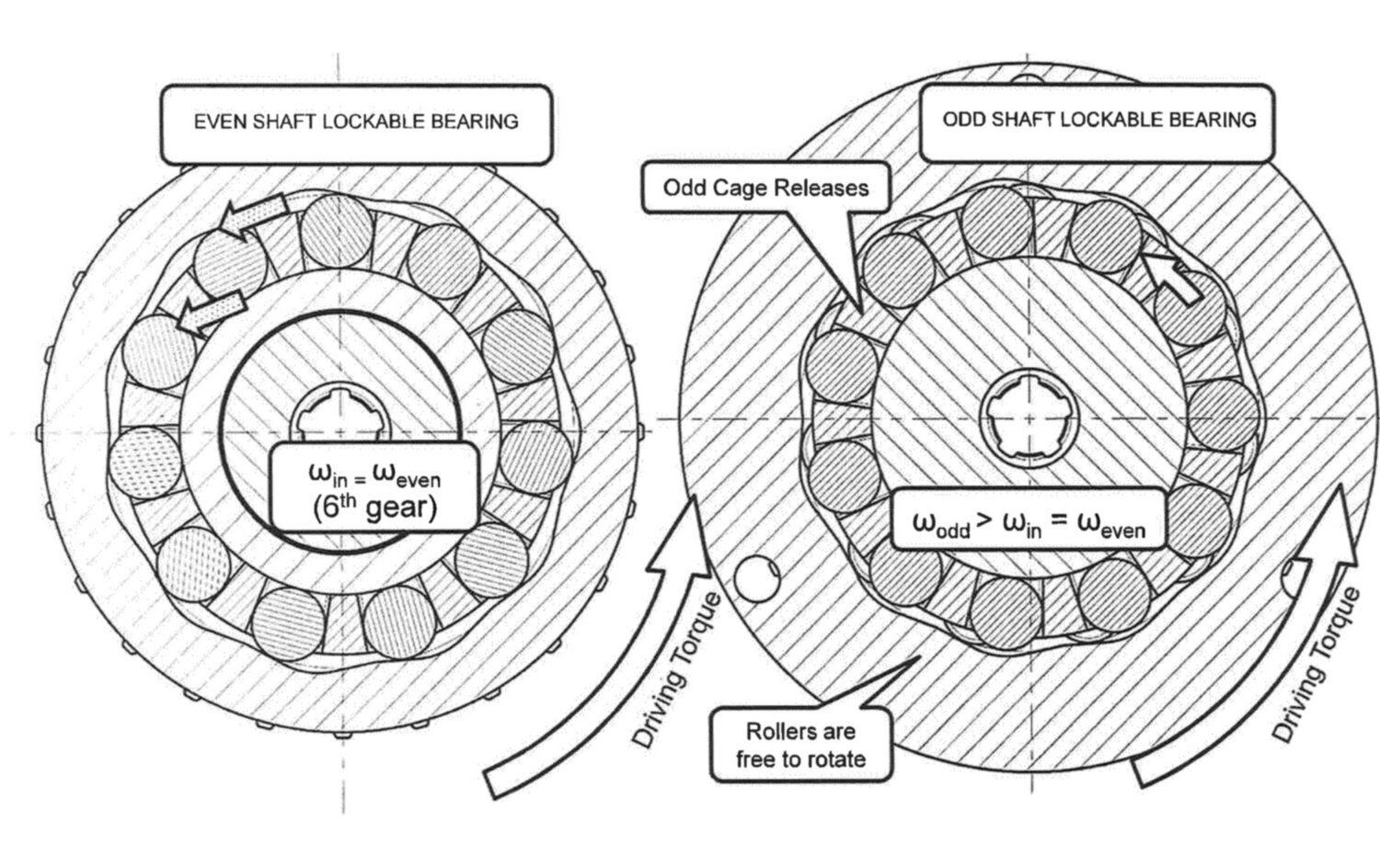
Pressure is applied to one bearing to lock its rollers to the input shaft while the other runs free, thus transferring drive from one to the other. (Ducati /) As with the Honda DCT system, Ducati’s box engages two gears at the same time, but on the Ducati it’s only for a brief moment.
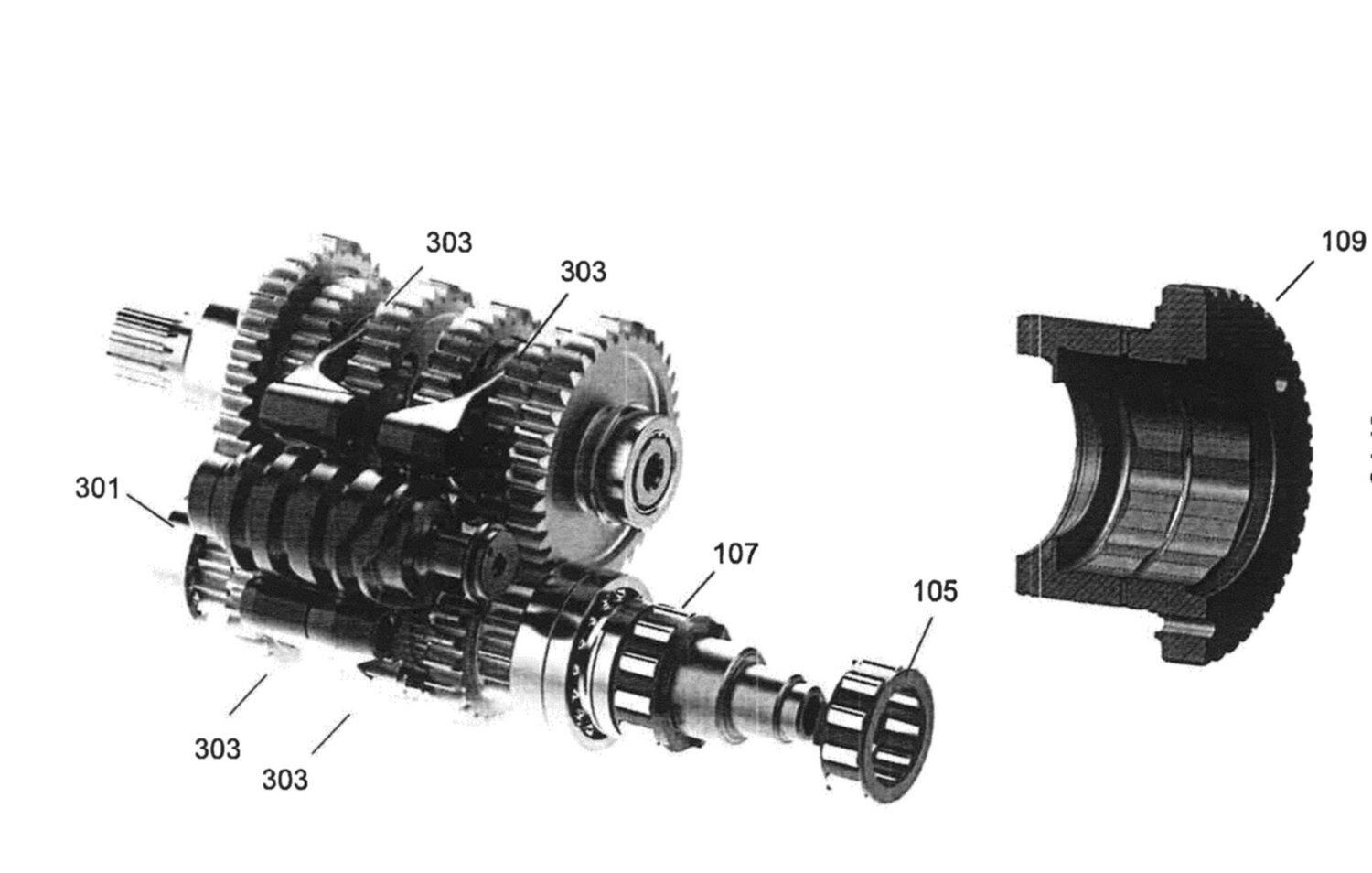
Because Ducati’s seamless gearbox idea could be integrated into traditional applications, mass production would be viable. (Ducati /) A conventional selector drum acts on fairly normal shift forks to engage the gears, but the drum is configured to put a slight delay in disengaging the previous gear when the next is selected. That’s where the lockable bearings in the input hub come into play; during the fraction of a second when both ratios are selected, drive transfers from one bearing to the other. The shape of the input hub’s inner surface applies pressure to one bearing or the other, locking its rollers against the input shaft while releasing the other’s rollers so it runs free. It’s a clever system, and significantly, it’s not dissimilar to a conventional gearbox. This makes mass production relatively affordable.
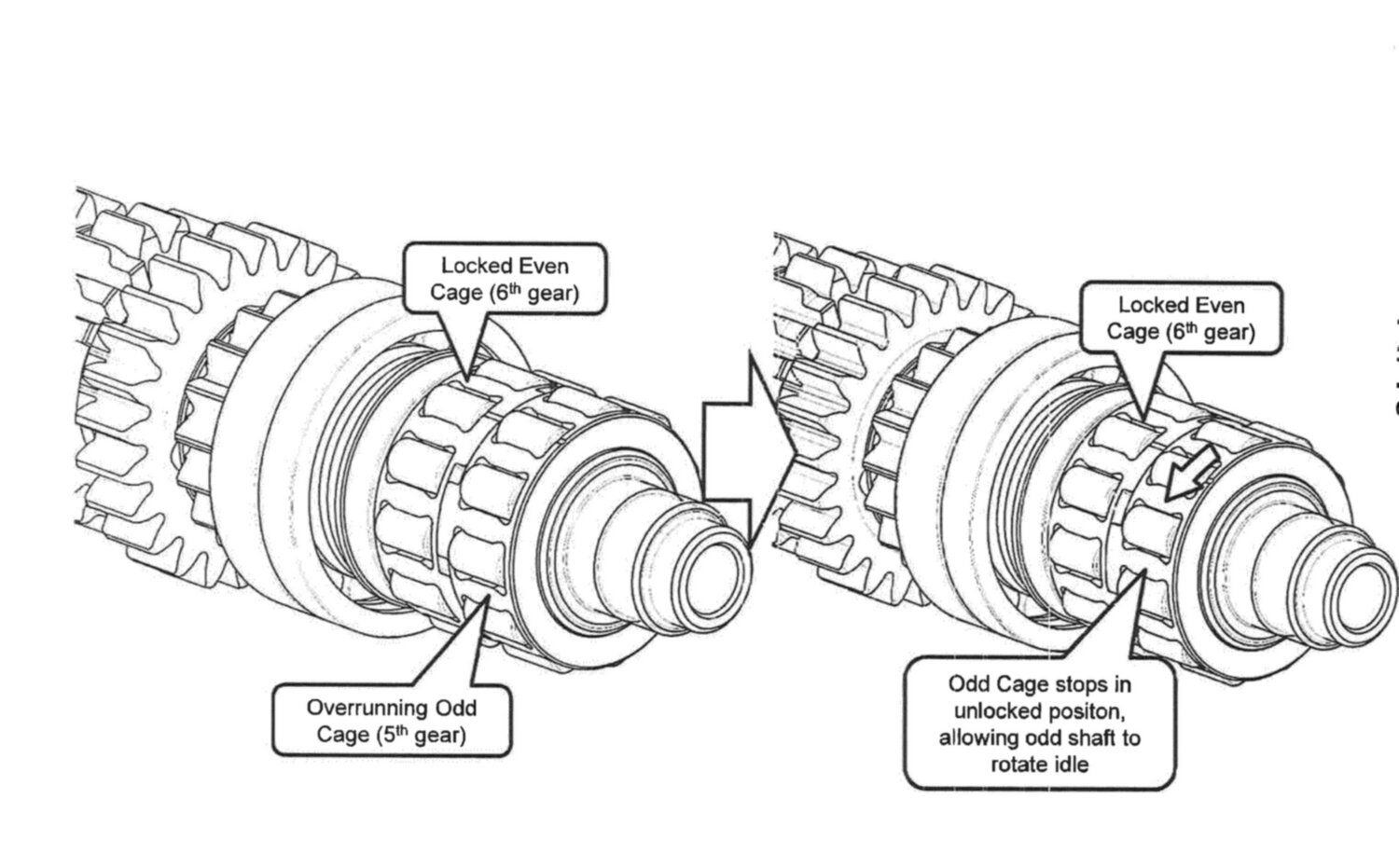
The mechanical simplicity of Ducati’s system also makes further development and eventual production more likely. (Ducati /) According to Ducati’s own patent, the idea means “it is possible to realize a seamless gearbox mechanism integrated into a traditional gearbox, suitable both for mass production and racing.” The fact that the patent includes photographs of the box’s internals shows that this isn’t just a wild idea; it’s really been built and tested, so a production version may not be far away.
-
Damon Motors is making a big splash in the electric motorcycle world today with the announcement of two new models – the HyperSport HX and HyperSport SE, now available for pre-order – both centered around the company’s proprietary HyperDrive battery/motor/controller unit which comprises the central component of the motorcycle’s frame. However, while that in itself is newsworthy, Damon is further making waves with its cloud-based 360-degree CoPilot safety system and the subscription service it’s providing with the backing of FreedomRoad Financial, meaning you don’t have to worry about owning a piece of equipment that’s obsolete by the time you get home.
We understand if you’re naturally suspicious of electric motorcycle companies. Plenty have come and gone, many of them making big claims about what their machines can do. Some have even shown great promise with lots of potential, only to see funding dry up and the doors close. To date, there seems to be only three major players with any sort of staying power: Zero, Energica, and Harley-Davidson.
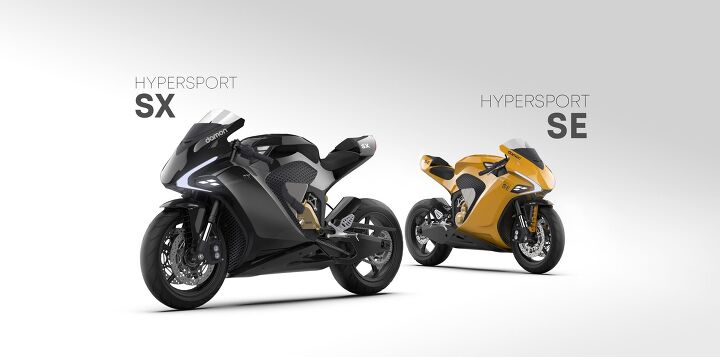
The HyperSport SX and HyperSport SE will be Damon’s initial offerings, but unlike other brands that unveil their flagship model first, the SX and SE – and their lower price tags – represent the base models of the HyperSport range.
That said, when asked, Damon founder and CEO Jay Giraud said he expects to start delivering models by approximately 2022. Maybe earlier. Since we can’t predict the future, let’s assume this is all true, because if so, this is a lot to digest and could be groundbreaking. So, let’s break it down one-by-one.
HyperSport and HyperDrive
Damon’s first two models, the HyperSport SX and HyperSport SE, are sport-styled motorcycles offering a trio of technologies as yet seen in motorcycling – or at least not to this level. The first is the Shift system. This has nothing to do with changing gears, obviously, since the Hypersports don’t have transmissions. Instead, the Shift system changes the position of the bars and pegs (via servo motors, we assume) higher or lower to suit the riding conditions. All at the push of a button. With the bars low and the pegs high you can tackle a curvy road, or flip it the other way and you can have a (relatively) comfortable commute to the office – assuming you’re still going to one these days.
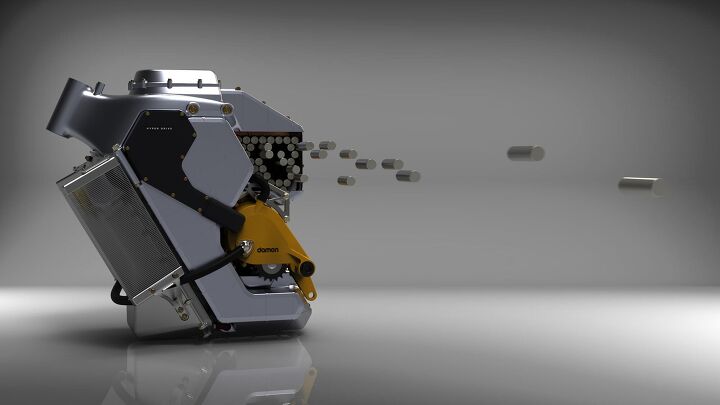
This illustration of the HyperDrive central platform shows how this structure comprises the primary “frame” of the motorcycle. At the front you have the headstock the forks attach to. If you look carefully, you can see the swingarm pivot, and in the middle you have the modular battery, motor, and inverter. Those flying cylinders represent the modularity of the battery pack for higher or lower capacity.
The next two are integrated into Damon’s CoPilot warning system. Using radar, cameras, and sensors embedded within the motorcycle, all Damon motorcycles are scanning and monitoring the road in full 360-degree view, watching out for any potential hazard. Once one is detected, the rider is alerted via lights, vibrations in the handlebar, or a display in the dash. In the event of an evasive maneuver (or a crash), the bike will capture the event details and transmit it to the cloud, where machine learning and AI can study the circumstances and refine its protocols so other Damons on the road can recognize threats faster and alert the rider sooner.
As for the HyperSports themselves, the underpinnings of all Damon motorcycles will be what it calls the HyperDrive. As mentioned before, since the HyperSports are monocoque chassis, HyperDrive is the name given to the central structural component that makes up the “frame” and embodies the liquid-cooled battery, 16,000 rpm motor (rated at over 200 hp and 200 nm of torque), 6.6 kW integrated charger, and proprietary 150+kW inverter. Even the swingarm pivot is part of the structure as well.
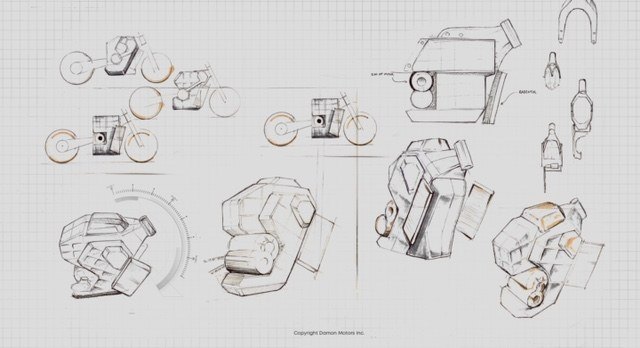
These drawings show the evolution of the HyperDrive, along with its central placement within the motorcycle.
As far as the battery goes, its modular design allows Damon to add or subtract cells to achieve capacities ranging from 11 kWh, 15 kWh, and 20 kWh. The energy-dense pack comes in at over 200Wh/kg, which rivals those used by the 800-lb giant in the EV space – Tesla. Naturally, range estimates will vary widely depending on battery capacity and the rider’s right wrist, but Damon says the HyperSport SE can achieve 100 miles on a charge, and a top speed of 120 mph. The SX version gets slightly more of both; 150 miles and 155 mph top speed. Thankfully, all Damons will be capable of charging at Level 1, Level 2, and DC fast charge stations.
Beyond the electronic components, other details about the SE and SX are a little sparse. Damon hasn’t revealed which brake or suspension components will be used, though studying the photos floating around the Damon website shows what appears to be a Yamaha YZF-R1 swingarm and likely an R1 front end as well. It’s doubtful these components will make it to final production, however. (UPDATE: Damon representatives tell us the swingarm will be a proprietary design and the images on the website are old.)
Pricing and subscription
Apart from range anxiety, price is always the sticking point when it comes to electric motorcycles. With the HyperSport SE and SX, however, and their price tags of $16,995 and $19,995, respectively (before state and federal incentives), the pricing doesn’t seem outrageous and falls relatively in line with others on the market.
What’s particularly interesting is the subscription service with FreedomRoad Financial. “It’s like a cell phone,” says Giraud, or a lease in automotive terms. With 24-, 36-, or 48-month plans, you can ride a Hypersport for the duration of the term without worrying about obsolescence, then trade it in for a new one when you’re done. Clearly, there are certain exceptions and conditions, especially in the case of a crash, but the premise seems promising. Even if Damon and FreedomRoad haven’t yet fleshed out all the details.
On paper anyway, the HyperSport models have us very intrigued. And it goes without saying that we can’t wait to throw a leg over one when the time comes. For now anyway, we’ll have to settle with the information we have. Interested parties can go to the Damon website to place a $100 refundable reservation.
Damon’s complete press release is below.
Damon Unveils HyperDrive Multi-Variant Powertrain; Releases Two New Electric HyperSport Models
Damon Motors today released details of HyperDrive, the world’s first 100 percent electric, multi-variant powertrain platform that redefines motorcycle performance, safety and design. As a platform for future Damon motorcycles, HyperDrive is a monocoque-constructed, high-voltage powertrain that a wide range of models and submodels can be built upon.
To showcase the HyperDrive platform, Damon has announced the release of two new motorcycle models for pre-order: HyperSport SX and HyperSport SE, each with HyperDrive at their core. Configured with 15kWh, the HyperSport SX delivers more than 150 miles range and 150 horsepower from its HyperDrive, while the HyperSport SE with 11kWh boasts over 100 miles range and 108 horsepower.
In partnership with FreedomRoad Financial, Damon has also announced a revolutionary subscription plan offering for all HyperSport models. Customers can choose from 24, 36 and 48-month subscription plans with a guaranteed residual value, (conditions apply, with normal wear-and-tear) providing customers the freedom to exchange their HyperSport for updated models at the end of the term. As hardware gets updated, customers can always expect next-generation technology without the hassle and trade-in losses that occur with legacy dealerships and brands.
“As we at Damon continue to reinvent two-wheel mobility, HyperDrive lies at the heart of our innovation,” said Jay Giraud, founder & CEO at Damon Motors. “HyperDrive serves as the nucleus of our creations and will allow us to further evolve our technology and continue to introduce the world’s most exciting and groundbreaking electric motorcycles.”
“Damon continues to electrify the entire motorcycle industry with unprecedented features and next-generation technology that sets it apart from the competition,” said Rob Enderle, principal analyst at Enderle Group. “The Damon team has set a new standard in modern motorcycling with its ongoing commitment to maximizing all aspects of its motorcycles from the ground-up to deliver an unparalleled riding experience.”
HyperDrive is optimized for maximum performance, design and safety.
Performance
- 450 Nominal Volts – HyperDrive is the first-of-its-kind, all-electric powertrain designed as a platform to usher in the future of motorcycling.
- High-Energy Pack – Liquid-cooled and thermally managed high-energy pack enables a multitude of battery capacities for various future motorcycle models and supports the HyperSport SE with 100 miles range, SX with 150 miles range, and HS and Premier with 200 miles range.
- Track-Ready Performance – Using industry-leading cells delivering over 200 Wh/kg pack level density, all HyperSport models can deliver track-ready performance with a >3C continuous discharge to the ultra-dense, direct-oil-cooled, 6-phase internal permanent magnet (IPM) motor.
- Lightweight Motor – Spinning at a peak 16,000 rpm and capable of delivering over 200 hp and 200 nm of torque, HyperDrive’s motor weighs in at just 48 lbs.
- 6.6 kW Integrated Charger – Developed in-house, HyperSport can charge at ubiquitous level 1 and level 2 public charging stations found around the world and is also capable of 25 kW DC fast charging in under 45 min. It can also be charged at home on 110V outlets.
- Proprietary 150+kW Inverter – Allows Damon to control traction, engine braking and performance like never before with proprietary algorithms and a unique safety-focused architecture.
Design – Battery as a structural element
Damon’s HyperDrive includes the most energy-dense pack in transportation at over 200Wh/kg, but that has not stopped Damon from pursuing every opportunity to increase range and performance.- Designed for Performance – Damon has rigorously focused on optimizing HyperDrive’s final form factor, which plays a crucial role in the HyperSport’s overall performance. The company’s focus on aerodynamic design, using extensive wind tunnel testing to reduce drag, enables Damon to deliver more speed, acceleration and range than its competitors.
- Slim Design – To achieve the slipperiest profile possible, the pack’s total cell count, cell orientation and layout, heat dissipation materials, optimization of liquid-cooling performance, and material selection are all engineered to create the slimmest possible battery pack, without compromising energy density or output.
- Dual Purpose – To further reduce weight, HyperDrive is engineered to act as a structural component of the motorcycle itself. The battery enclosures not only optimize weight distribution for high-speed stability and handling, but also act as the motorcycle’s load-bearing frame. This saves both weight and cost, and further reduces bulk, compared to conventional framed motorcycles.
“Motorcyclists love to see motorcycles as visual diagrams of how they work,” said Dom Kwong, CTO at Damon Motors. “We aimed to emphasize this in a modern electric powertrain for the first time. The structural aspects of HyperDrive celebrate the optimization of mechanical design and performance as its central design expression.”
Safety
As well-meaning as they are, no amount of awareness campaigns, compulsory riding lights, or neon vests have significantly reduced motorcycle accidents. Damon believes the only way to bring about a paradigm shift in motorcycle safety is through the use of disruptive technology.
- CoPilot Advanced Warning System – Like a modern fighter jet, Damon’s 360-degree CoPilot system uses embedded radar, cameras and other sensors to track the speed, direction and velocity of dozens of objects at a time. Using an onboard neural net, it anticipates a threat to warn the rider who is then alerted with LED’s for blind-spot warnings, vibrating handlebar grips for forward-collision warnings, and displays rearward threats with a digital rear-view mirror fed by the motorcycle’s embedded, wide-angle rear-facing camera.
- Machine Learning – Every time a rider responds to a threat warning by way of swerving or braking, the onboard system captures and tags the incident details in 360º. It then transmits data to Damon’s cloud over its embedded wireless connection, so that the system can learn to detect more threats faster over time.
“We’re on a mission to radically improve motorcycle safety,” said Jeff Sand, design director at Damon Motors. “Our core values permeate the vehicle’s design and the systems in them. From passive thermal propagation resistance in our battery packs, to redundancy in critical drive systems, to our novel CoPilot 360º collision warning system, our aim is to invent the future of motorcycle safety and performance.”
The HyperSport Family
Models SE SX HS Premier HP 108 150 >200 >200 Torque >200 >200 >200 >200 Top Speed 120 mph 155 mph 200 mph 200 mph Range per Charge 100 miles 150 miles 200 miles 200 miles Onboard Charge Rate 6.6 kW and DC 19.2 kW
6.6 kW and DC 19.2 kW 6.6 kW and DC 19.2 kW 6.6 kW and DC 19.2 kW CoPilot Included Included Included Included Shift Included Included Included Included 4G connectivity + data Included Included Included Included Over-the-air software updates Included Included Included Included Brakes To be announced To be announced To be announced Brembo Suspension To be announced To be announced To be announced Öhlins Swingarm type Two-sided Two-sided Two-sided Single-sided Est. MSRP (before state and federal incentives) $16,995 USD $19,995 $24,995 $39,995 Subscription Plans Pricing to be released on damon.com Pricing to be released on damon.com Pricing to be released on damon.com Pricing to be released on damon.com 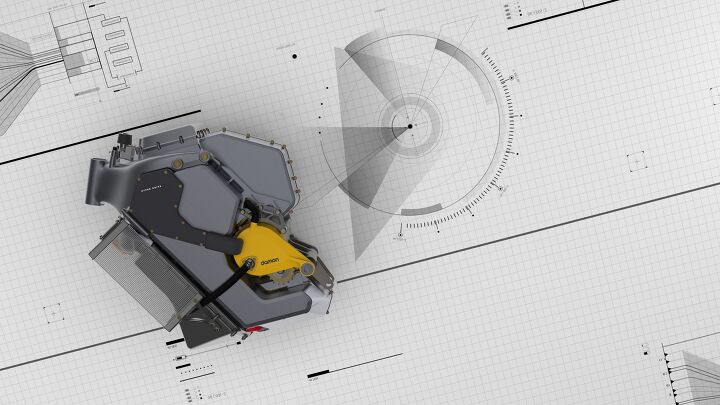
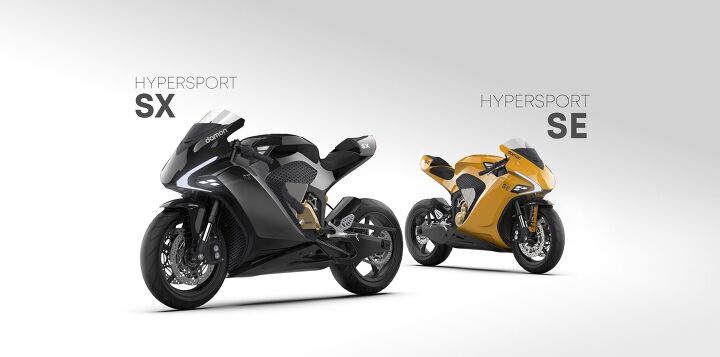
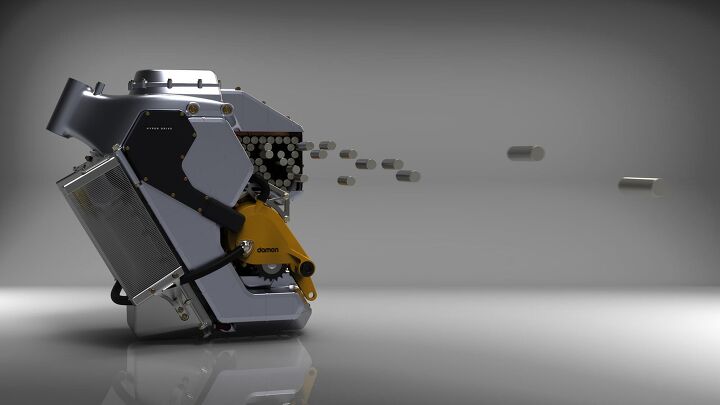
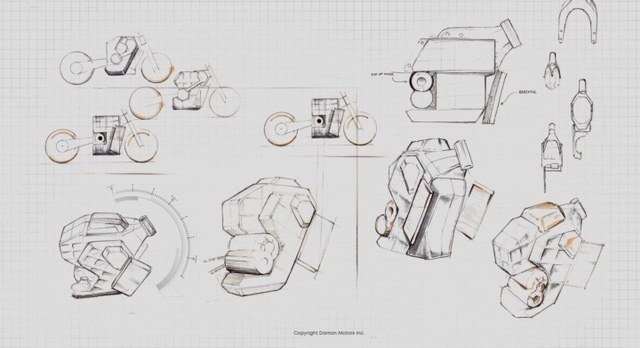
The post Damon Motors Is Completely Changing The Way We Look At Electric Motorcycles appeared first on Motorcycle.com.
http://feeds.feedburner.com/~r/Motorcyclefeed/~4/SYqjofcyT8c -
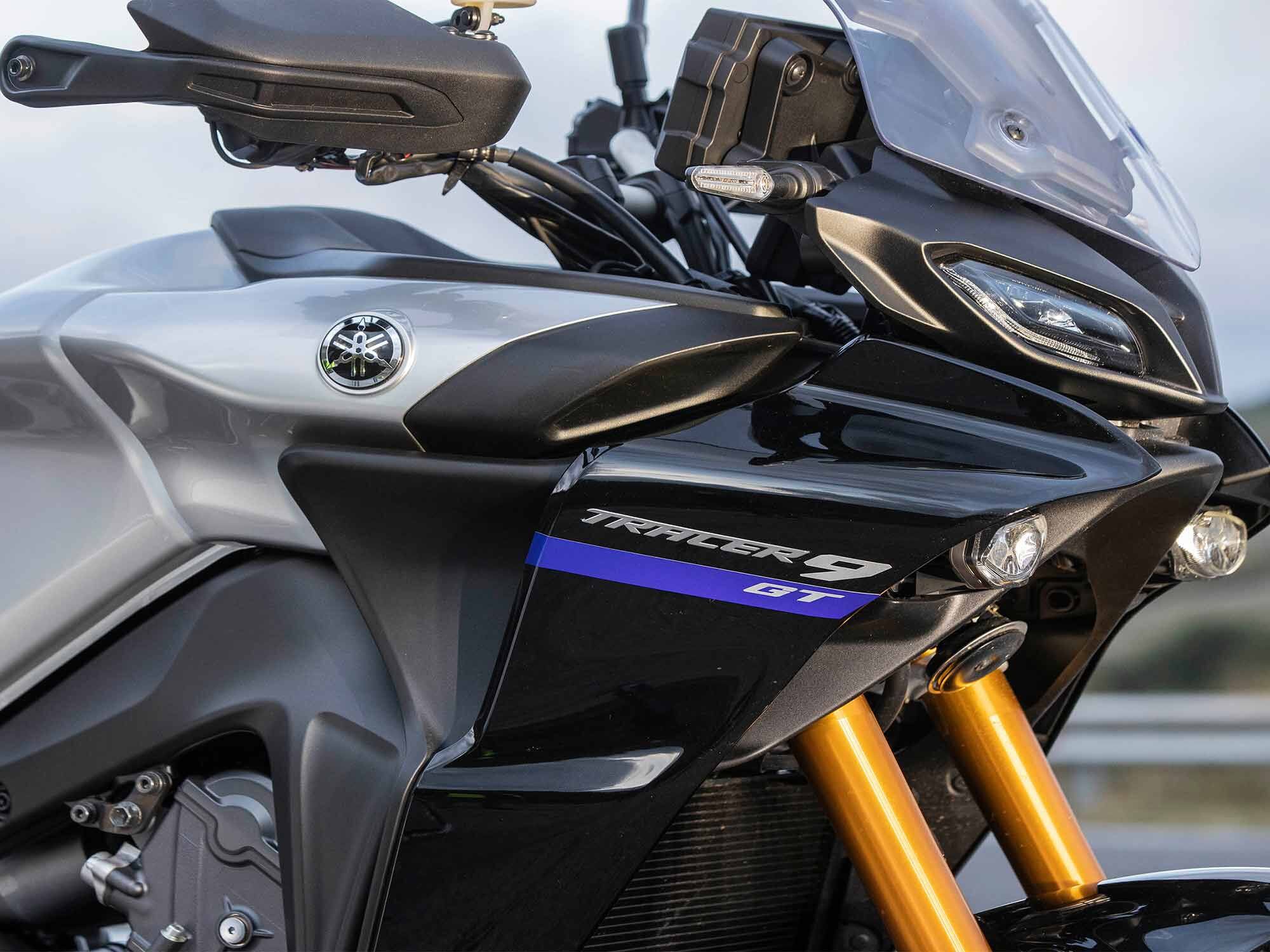
The 2021 Yamaha Tracer 9 GT. There’s no room for zeros here. (Yamaha /) After announcing the MT-09′s massive redesign, we figured it would be a model year or so before Yamaha’s three-cylinder Tracer 900 sport-tourer received associated updates. But the Iwata factory left us little time to speculate or daydream—sort of the opposite approach it took with the Ténéré 700 (zing!). For 2021, Yamaha is introducing the all-new Tracer 9 GT, featuring new bodywork, engine, chassis, adjustable ergonomics, hard luggage, and up-to-date features like semi-active suspension and a six-axis IMU.
While the outgoing Tracer 900 GT had an MSRP of $12,999, the new model, with all its bells and whistles, has an MSRP of $14,899. This still makes it considerably less expensive than bikes like the Kawasaki Versys 1000 LT and the Ducati Multistrada 950 S. If that price tag seems steep, read on. The new 9 has a ton of up-spec features.
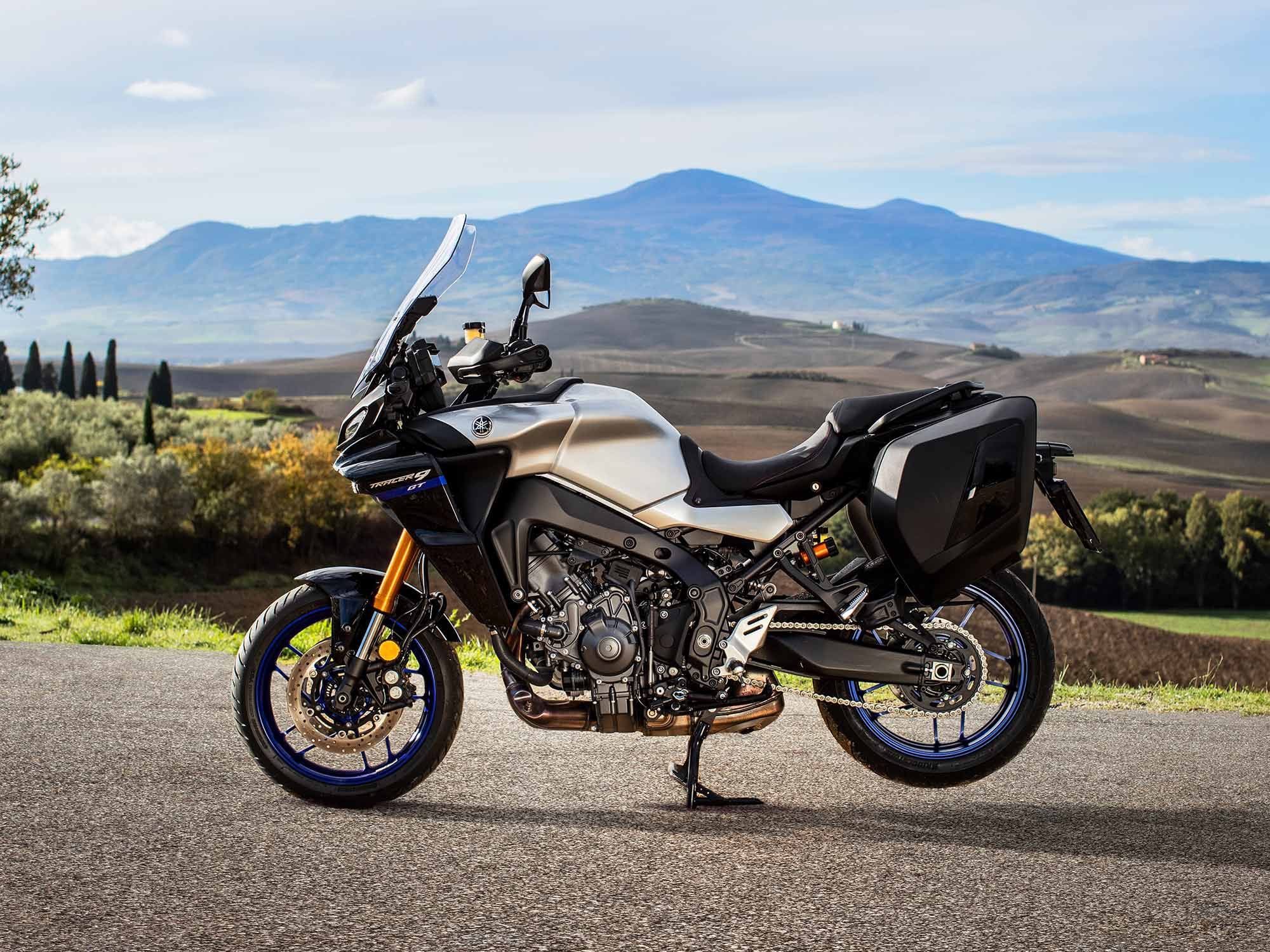
Yamaha claims the Tracer 9 GT achieves 49 mpg. (Yamaha /) The Tracer 9 GT does away with the zeroes in its name (might we expect a Tracer 7 to make its way stateside in the future, Yamaha?) and inherits the new 890cc three-cylinder engine from the brand-new MT-09 and MT-09 SP. The engine has new pistons, crankshaft, camshafts, con-rods, and crankcase. It also has a new fuel delivery system for improved combustion efficiency, a new intake system, a slip-assist clutch, and revised transmission gear ratios.
Yamaha says the all-new cast aluminum frame has thin-section casting of only 1.7mm, compared to the 3.5mm (at the thinnest section) of the outgoing model. It also has a new aluminum swingarm and spin-forged aluminum wheels. Like the MT-09, the Tracer gets a Nissin radial master cylinder and cornering ABS offering two levels of intervention. Up front there are twin 298mm discs; a 245mm disc brings up the rear. The claimed wet weight of 485 pounds is 11 pounds heavier than the outgoing model, but includes 0.2 gallon additional fuel capacity (total 5 gallons, up from 4.8). Given the added tech, a bit of extra heft is excusable.
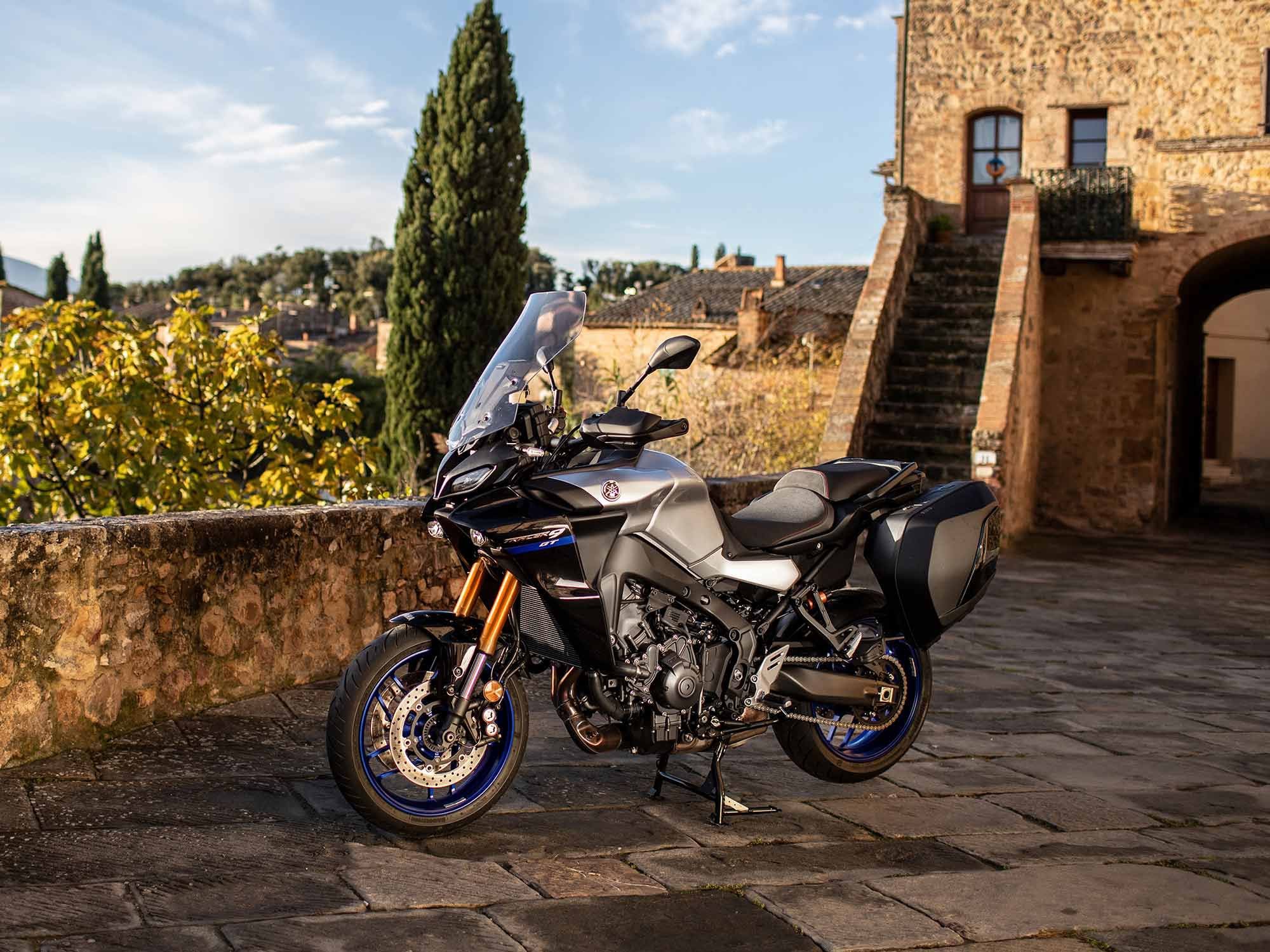
Cornering lights activate when speed is above 3 mph and lean angle is greater than seven degrees. Brightness increases with additional lean angle. (Yamaha /) Chief among the new technology suite is a six-axis IMU managing traction control, slide control, wheelie control, cornering ABS, and the KYB semi-active suspension. The system, dubbed KYB Actimatic Damper System (KADS), optimizes suspension setting in next-to-real time. The suspension can be set in two modes, A-1 (sport) and A-2 (comfort), to accommodate rider preferences and road conditions. The system controls rebound and compression damping in the front fork and rebound damping in the rear.
The Tracer features the same YZF-R1-derived ride-by-wire system as the new MT-09, using a magnetic throttle position sensor. Yamaha’s drive modes (or “D-modes”) vary throttle response to suit rider needs. For 2021, Yamaha increased the number of modes from three to four for greater flexibility. Heated grips, full LED lighting, cruise control, and an up/down quickshifter are standard.
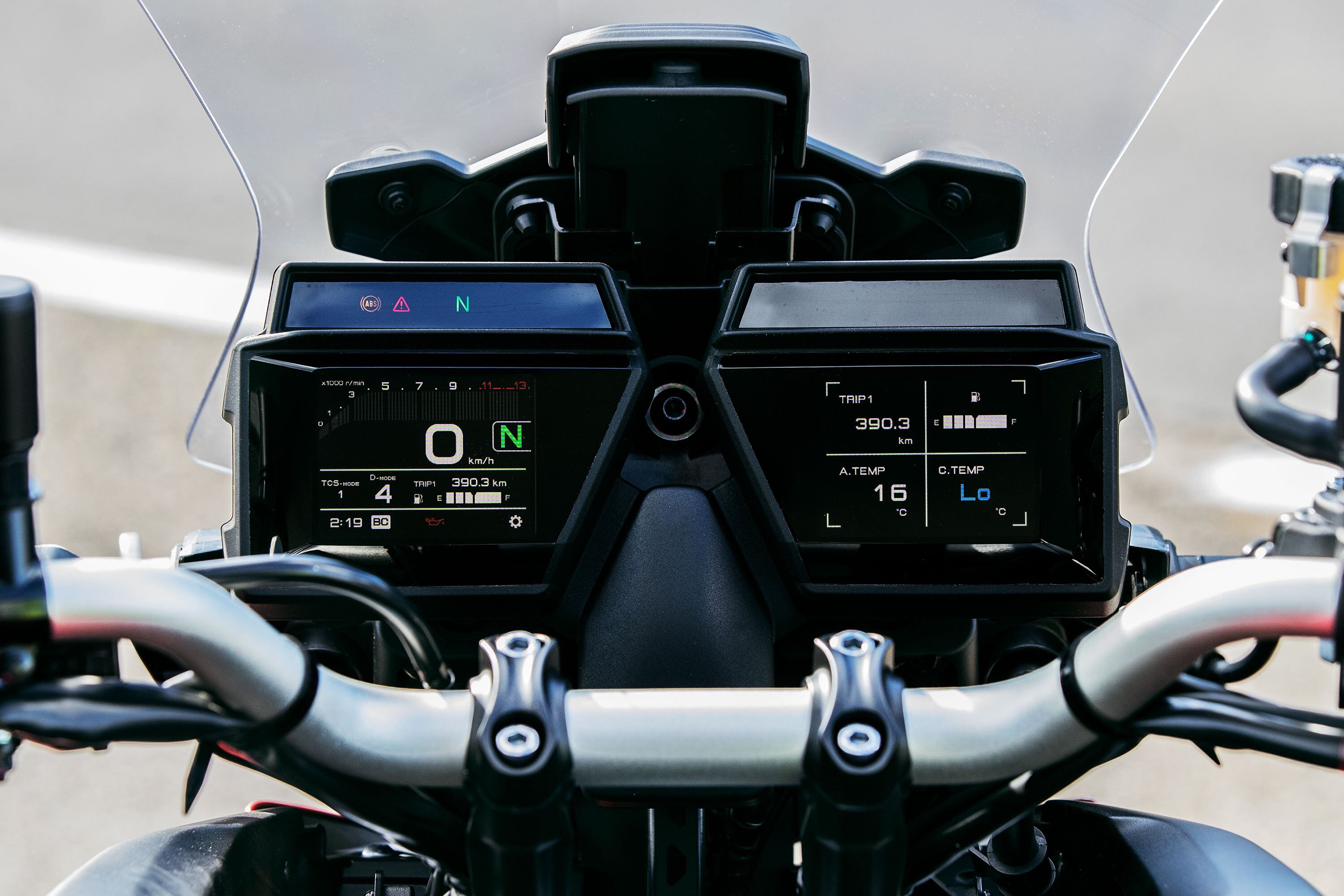
New dual TFT dash. (Yamaha/) While other manufacturers tie rider-aid settings to preset ride modes, Yamaha continues to offer adjustability in a slightly different manner. There are no ride modes, but as previously outlined, riders can choose between four throttle response settings (those D-modes), two levels of ABS intervention, and two suspension settings. Traction control, slide control, and wheelie control can also be adjusted and/or disabled.
Curiously, the Tracer 9 has two 3.5-inch TFT displays. We found some information displayed on the outgoing model’s unit to be a little difficult to read at a glance, so it will be interesting to see if the dual screens address the problem.
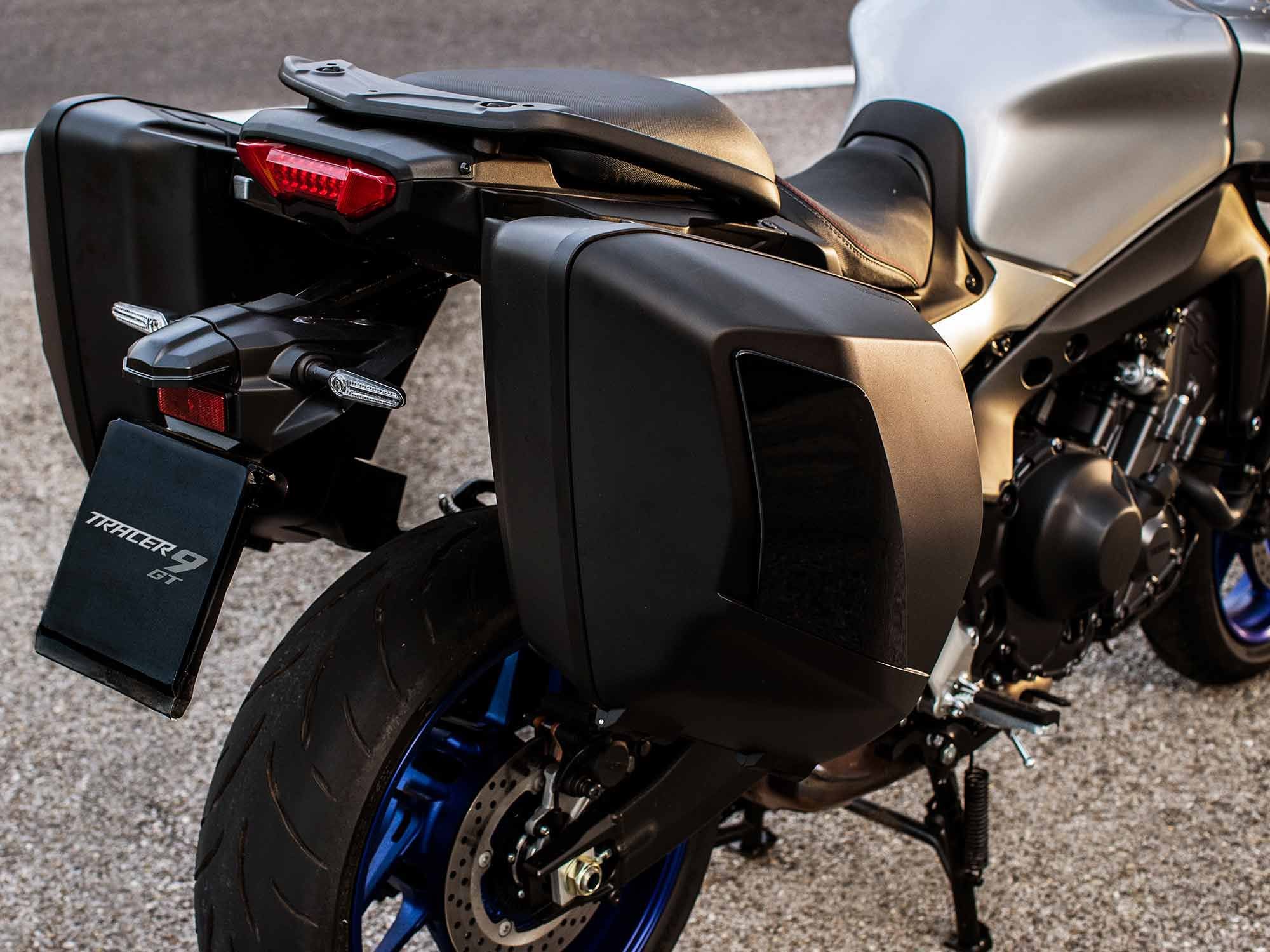
The side cases on the Tracer 900 GT were on the small side, but Yamaha claims the new bags will each hold a full-face helmet. (Yamaha /) Yamaha has also baked in some nice ergonomic adjustability. The large windscreen can be adjusted across ten 5mm increments. The handlebar clamps can be adjusted to move the bars 9mm forward and 4mm higher. Footpeg mounts can be raised 14mm higher as well as 4mm rearward. The two-position seat can be raised from 31.9 inches to 32.5 inches.
The Tracer 9 GT comes equipped with hard luggage. Yamaha claims that each side case can fit a full-face helmet, which will make owners of the current Tracer 900 GT envious.
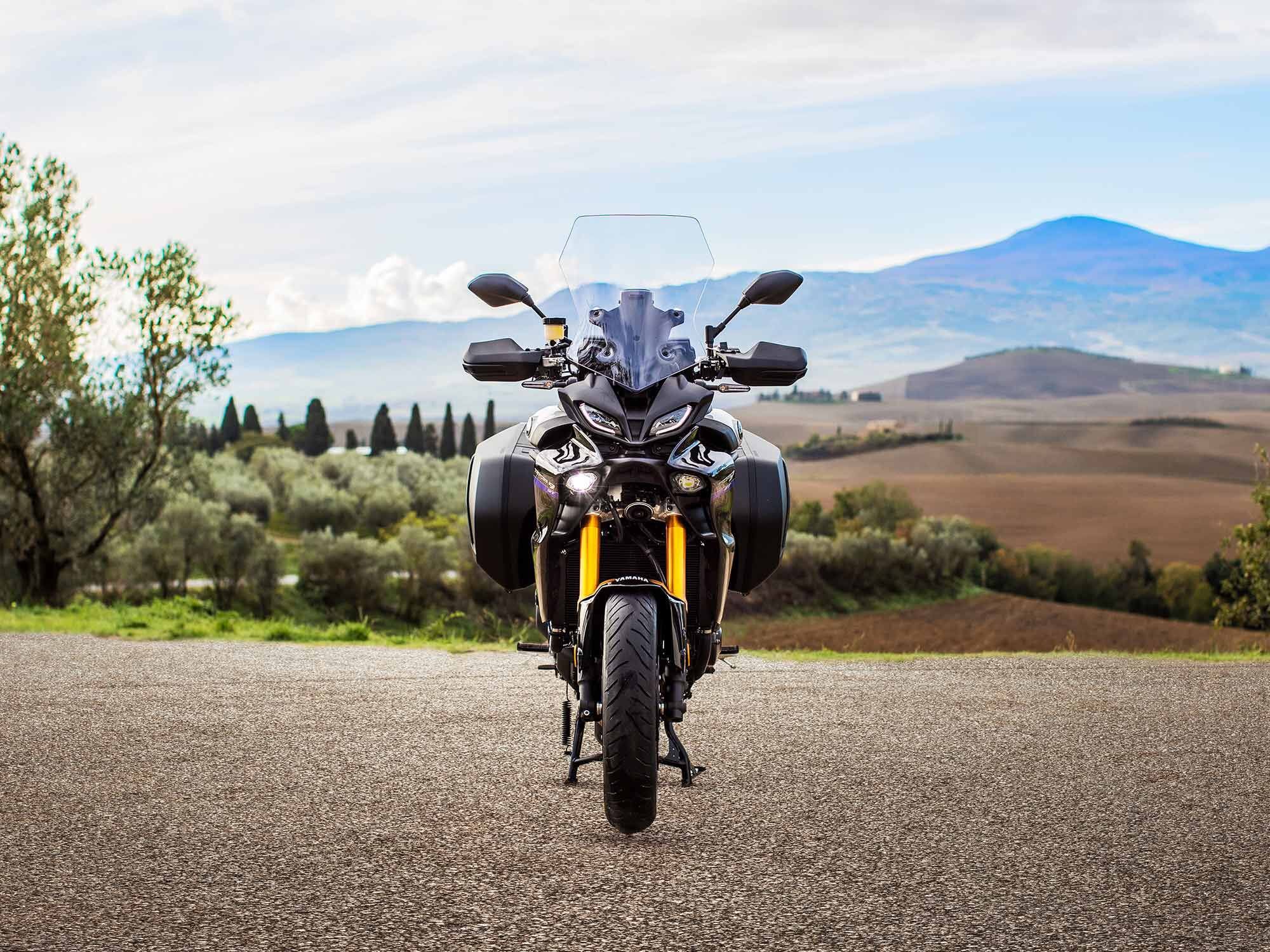
New design definitely reads Yamaha. And check out that tall windscreen. (Yamaha /) The Tracer 9 GT occupies an important niche for riders who like the sit-up ergos of ADV bikes, but want a pure streetbike with 17-inch wheels. One doesn’t have to go all-in on the ADV life of dual sport lids, Klim gear, and skid plates to enjoy the ergonomic benefits popularized by the off-road set.
There will be no base-model Tracer 9 for 2021. Expect the Tracer 9 GT to make its way to US dealerships in March.
-
There are a dizzying array of options when it comes to dirtbike tires. From tread patterns, to compounds, to the brands themselves, it’s difficult to decipher what is the best tire. That’s mostly because deciding on the best tire requires a lot of input from the rider themselves. What kind of dirtbike are you riding? What kind of terrain are you riding on? Are you looking for longevity or for the most traction possible just to get through a hard enduro race? These are just a handful of the questions you need to answer for yourself before embarking into the deluge of different off-road tire choices.
In an attempt to add some sort of clarity to the situation, here we’ve listed some of the top performers from a number of major tire manufacturers that skew toward the “hard” end of the spectrum.
Table of Contents
Shinko 505 and 505 Cheater
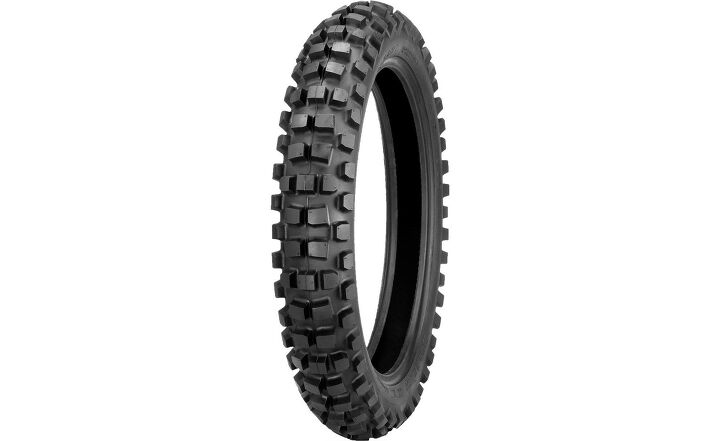
The 504/505/523 series tires are meant to work well in hard terrain – think of the rocky and/or hardpack terrain found in the western U.S. Shinko offers a vast variety of tires that range from dual-sport DOT-rated knobbies, to flat-track, and full-blown hard enduro compounds. The 505 series is a great choice for hard terrain, and the 505 Hybrid Cheater rear tire, which is available for 18 and 19-inch wheels, is built with a normal moto-style carcass and tread pattern but is made from a softer gummier rubber more akin to a trials tire. This compound gives excellent grip on hard rocky surfaces, but it will be prone to wearing out quicker than the standard 505 compound.
Sedona MX907HP
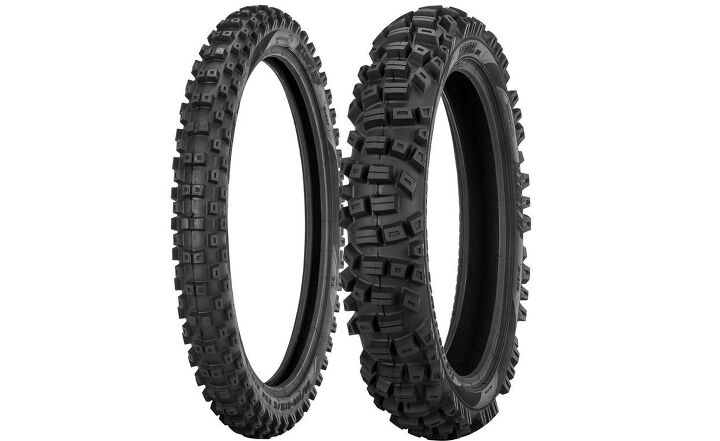
The MX907HP from Sedona is a beefy tire with a stout carcass made for hardpack terrain. Sedona says, “Its cross-patch tread design provides a larger contact patch that maximizes both in-line and cornering traction.” The siped and dimpled knobs should provide greater traction on hard surfaces and the 4-ply construction should aid with impact absorption and puncture-resistance, the downside to that is an increase in overall weight. This tire is available in 80/100-21 front sizes and a number of 18 and 19-inch rears.
Kenda Parker DT
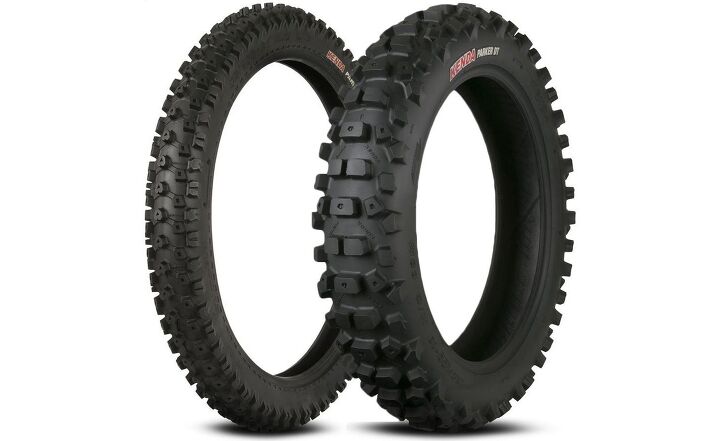
The Parker DT is a popular choice from Kenda thanks to its long-lasting wear characteristics and robust 6-ply construction. The Parker DT shares the tread pattern of its predecessor, the Carlsbad, but went up in plies for better tear resistance. Kenda says they came to this decision after rigorous testing in Baja. These tires can be run one way for “intermediate” terrain and the other for “hard” terrain making this a versatile option depending where you ride. Users report excellent performance and wear making this a favorite among off-road riders.
Dunlop MX53
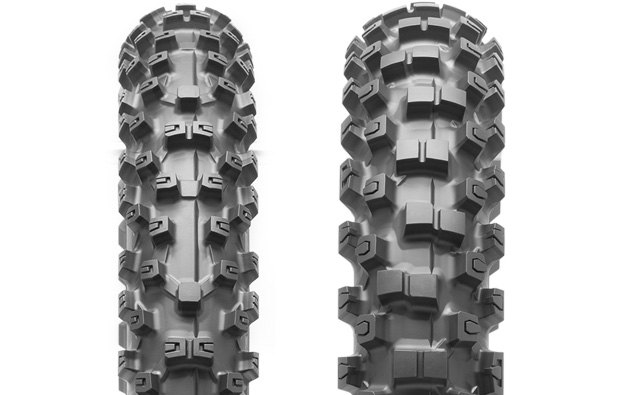
Possibly one of the best known brands in dirtbike rubber, Dunlop has been outfitting entire race series with knobbies for years. The Geomax MX53 is the company’s latest iteration of its competition tire. This tire is available in a wide variety of sizes to fit everything from 10-inch kids bikes, to proper 21 and 18 or 19 inch big bike wheels. The MX line has been known to use a stiff sidewall which provides excellent cornering stability in motocross race situations. Being involved in racing so heavily, Dunlop has also put a time in research and development while gaining tons of data to continue advancing their product. The Dunlop MX line offers great tires for racing, trail riding, and nearly everything in between. The only issue we’ve had in the past with Dunlop tires is longevity hasn’t been on par with other brands.
Pirelli Scorpion XC Mid-Hard
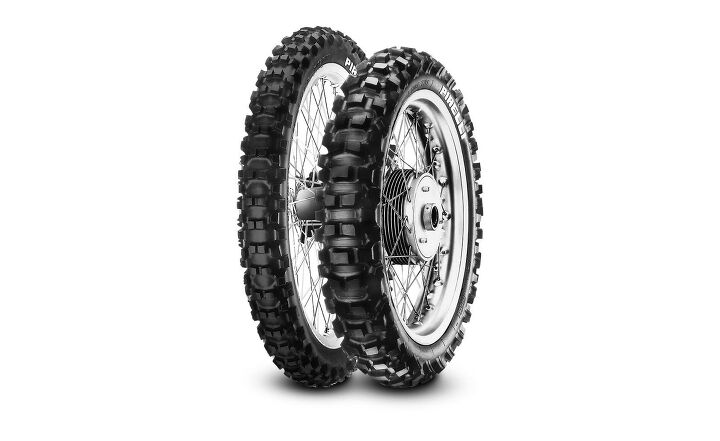
The Pirelli Scorpion XC is a great mid-hard option with a tread pattern said to be derived from motocross and adapted for cross country riding and racing. Only available in 21/18-inch wheel combos, the Scorpion XC is built to handle tough off-road terrain with a robust carcass and thick rear tire blocks, as well as a special compound said to aid in longevity and wear. While the tires do wear quite well without slicing or chunking, they don’t last as long as some might like.
Bridgestone Battlecross X40
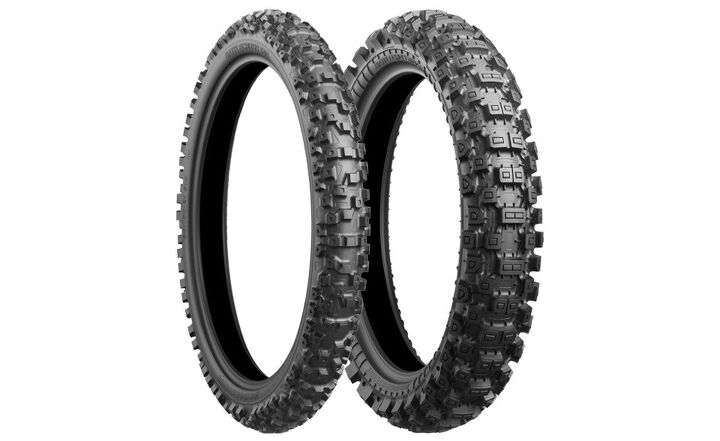
The Bridgestone Battlecross X40 has become a favorite here at MO and with others in our riding circles. The tires offer an exceptionally long life with excellent grip throughout. Designed for rocky hard terrain, the X40 excels with great sidewall compliance and puncture resistance. A fair amount of research has gone into the tread pattern and layout as well. If you find yourself riding a multitude of terrain off-road or even mixing it up with dual-sport use, the X40 will be up to just about any task.
Maxxis Maxxcross SI
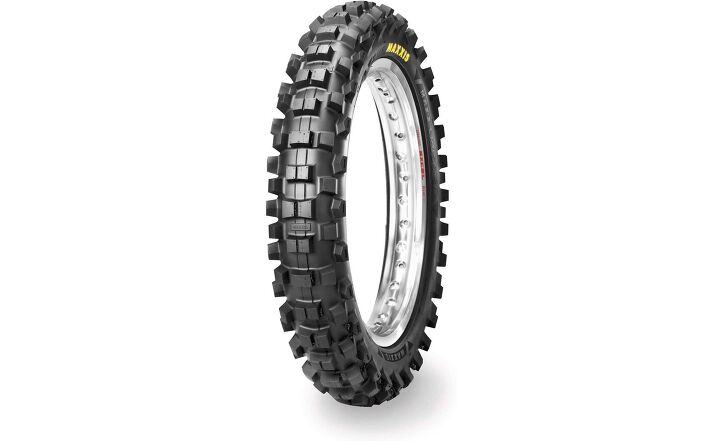
Maxxis has built a reputation for itself in the world of off-road racing by offering exceptional performance and specialized tire offerings for specific uses and terrain. The Maxxcross SI is the company’s soft/intermediate tire for GNCC and WORCS type riding and is said to be perfect for intermediate, loamy, or muddy terrain. This tire has received praise from many users with the only caveat mentioned typically being the lack of longevity compared to some other brands, but often enough, and particularly when racing, the Maxxcross SI is lauded with praise.
GoldenTyre GT333
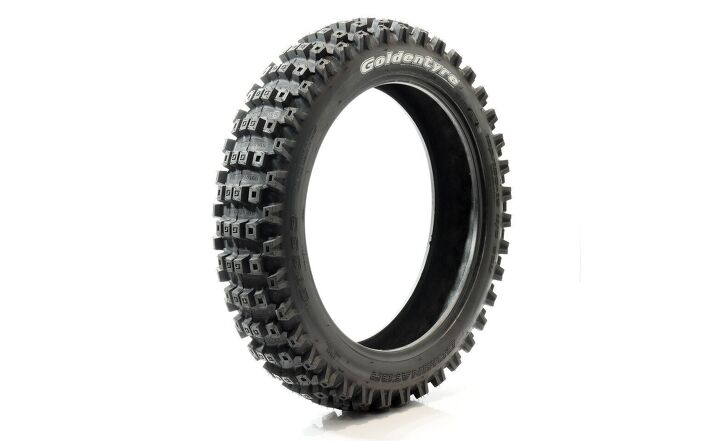
GoldenTyre specializes in enduro and hard enduro tires and has outfitted and developed their line with the best in the world providing feedback. Many professional enduro teams from major manufacturers like KTM have used these tires exclusively for enduro championships, which should be a testament to the performance one can expect from the Italian brand. The GT333 rear tire uses a stiff sidewall with a softer crown to help the tire wrap around rocks and other obstacles to gain maximum traction. This intermediate tire has knobs spaced appropriately for maximum contact and self-cleaning capabilities.
Mitas TERRA FORCE-EF Super
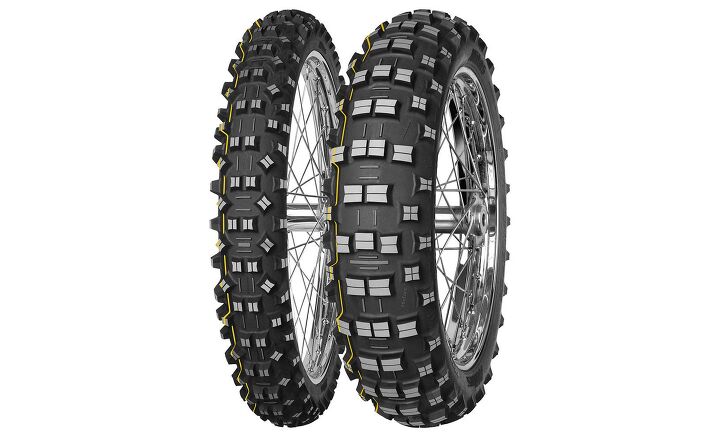
Unveiled at the Erzberg Rodeo event in Austria in 2019, the Mitas Terra Force EF Super, marked with a yellow stripe, features a fibrous, durable, long-lasting rubber compound that ensures outstanding grip and very low abrasion even on hard terrain. It resists tearing and cutting and is suited to a wide range of terrains, from soft and intermediate to rocky. Tread pattern knobs are designed to meet specific Fédération Internationale de Motocyclisme (FIM) regulations. With its release at one of the world’s most challenging enduro competitions, it’s clear that Mitas felt its new offering was more than willing and capable to tackle the Iron Giant.
MOTOZ Tractionator Enduro S/T
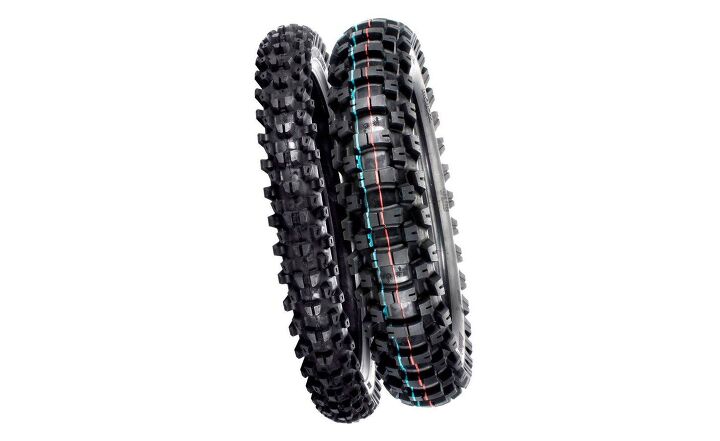
MOTOZ has garnered a reputation for its adventure tires in the U.S. and the long life they provide under such heavy loads that modern ADV bikes can produce. With this success, the Australian brand has continued to expand its offering in North America to include enduro focused tires such as the Tractionator Enduro S/T. S/T meaning soft-terrain, this tire is designed to maximize traction in mud, loam, and sand with its aggressive tread pattern while also providing excellent wear life. The tire can be run either way with icons on the tire suggesting one way for mud, and the other for sand and loam. The Tractionator Enduro S/T is available in 21/18 and 19-inch combinations.
Michelin Enduro
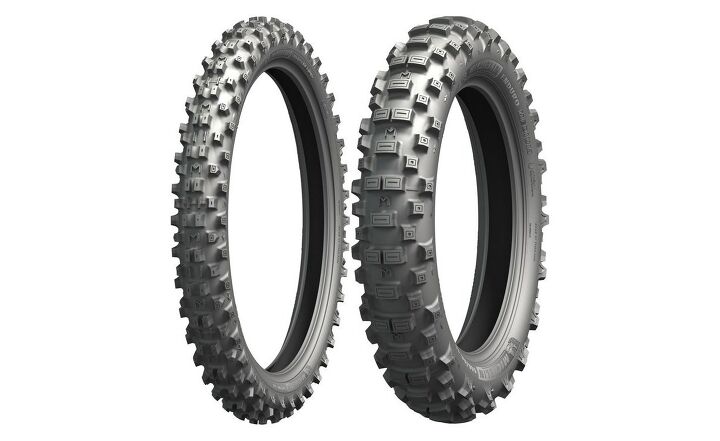
With Michelin sponsoring one of the greatest enduro champions of all time, Graham Jarvis, it should be safe to assume the company can make a pretty great off-road tire, right? The Michelin Enduro Medium was created at the compound level to excel across a variety of terrain. In both wet and dry conditions, the Enduro provides excellent traction. The Enduro Medium is available in 21 and 18-inch wheel sizes.
We are committed to finding, researching, and recommending the best products. We earn commissions from purchases you make using the retail links in our product reviews and other articles. Learn more about how this works.
Become a Motorcycle.com insider. Get the latest motorcycle news first by subscribing to our newsletter here.
The post Best Dirtbike Tires appeared first on Motorcycle.com.
http://feeds.feedburner.com/~r/Motorcyclefeed/~4/-_pJ3bvI1ZM -
After 21 years, Yamaha has announced the venerable YZF-R6 will be discontinued after the 2020 model year. This coming on the news today of the V Star 250, Bolt R-Spec, XSR700 and XSR900, Super Ténéré ES, FJR1300ES, Star Venture, and XMAX all continuing on for 2021 with what basically amounts to, as we say in the moto-journo biz – Bold New Graphics (BNG).
However, the shock announcement of the R6 coming to an end may not be such a shock after all considering looming Euro5 regulations and the languishing state of sportbike sales, especially in the 600cc supersport category. It appears as though Yamaha brass didn’t see it worthwhile to update and/or upgrade the Euro4 R6 in order to meet the more stringent Euro5 requirements.
Such a move is not entirely new, as Honda went through a similar phase already, discontinuing the CBR600RR for much of the world circa 2017 (although remaining stock is still being sold in North America) primarily due to emissions regulations. And even though Honda has released an updated CBR600RR, it will only be sold in Japan and Australia and still doesn’t meet Euro5 regulations anyway.
Ever since its introduction in 1999, the YZF-R6 has been a formidable force in supersport racing, even winning for the first time in only the second race of the 1999 World Supersport season. Since then, the R6 has racked up more wins and championships around the globe than we can count – so should racers and race teams be worried about the R6’s discontinuation?
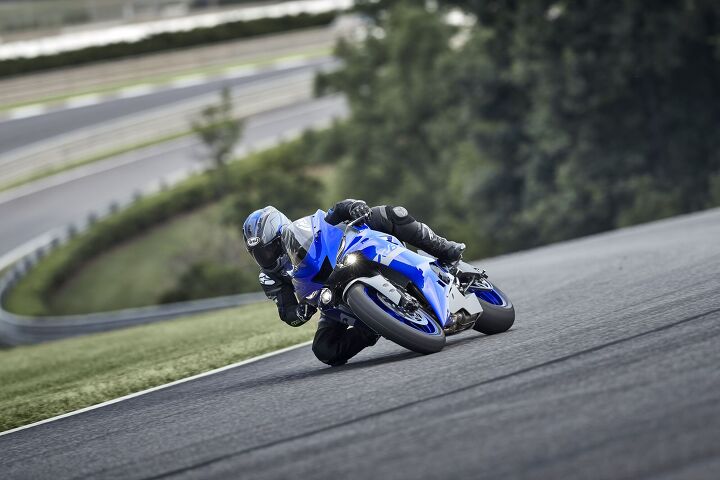
Yamaha’s now calling this the 2021 R6 Race. What’s the difference between this and the 2020 R6? Nothing as far as we can tell.
Not exactly. Nevermind the fact that used R6s are a dime a dozen, Yamaha is respecting the bike’s racing heritage and will still be making new versions going forward. Now the bike we know as the R6 will be called the Yamaha R6 Race – a non-homologated, track-only motorcycle Yamaha will be happy to sell you – as long as you’re in Europe. Here in the US, you can expect dealers to slash prices on R6s until the inventory is gone. Even still, Yamaha’s literature was unclear on whether the R6 Race will ostensibly be the current R6, complete with lights, mirrors, and turn indicators, even if none of those things are necessary for a track-only vehicle.
Sweetening the pot for European customers anyway, opt for Yamaha’s R6 GYTR kit and you’ll get all the usual bits one would do to their R6 to get it truly track-worthy, including:
- GYTR race cowling set
- Akrapovic full race system
- GYTR ECU set
- GYTR wire harness set
- GYTR on/off switch
- GYTR Interface cable
- GYTR AIS plug set
- GYTR ABS emulator
- GYTR keyless fuel cap
- GYTR seat cushion
- Stainless steel brake line set for front and rear
- Front brake lever guard
- GYTR fully adjustable race rear set with optional reverse shifting kit
- Rear sprocket guard (shark fin)
- Sprocket drive 14T fits 520 chain conversion
- Rear sprocket, 45 fits 520 chain conversion
- Sprocket nut set for 520 conversion
- DID gold race chain 520 conversion
- Rear paddock stand hooks
- Paddock stand
What’s more, additional GYTR and Öhlins bits are still available if the above isn’t enough.
VMAX And Others Also Discontinued
There’s another legendary Yamaha name approaching its final curtain call. The outlandish Yamaha VMAX, first introduced as the V-Max in 1985 before getting a big overhaul in 2009 that made it so bombastic its name changed to ALL CAPS, is finally seeing the end of the line.
Arguably the original power cruiser, the VMAX’s anime-like styling was an eye-turner in 1985, and its 1197cc V4 engine – and later the 1679cc redesigned version – was revered for its ability to rip your arms off. Though it never came with a turbo, the original V-Max came with a feature called V-Boost that imitates turbo boost by opening butterfly valves at high rpm to send a rush of fresh air to the combustion chambers.
It’s surprising that from its start in 1985 until 2008 the V-Max was essentially the same motorcycle. The 2009 VMAX makeover was clearly long overdue, and though it was thoroughly modernized, there was no denying its status as a VMAX. The inspiration was the same, but everything about the VMAX was bigger – the engine, the bodywork, everything.
Like the R6 though, the VMAX simply didn’t make sense for Yamaha to update to meet Euro5. So, away it goes, marking the end of a very legendary lineage. In fact, the VMAX wasn’t Euro4 compliant either and was only sold in North America for the last few years. This truly is the end of the road.
Other Yamaha models getting the axe for 2021 include the WR250R – “probably the most performance-focused model out of the plated 250 class,” says a mildly dejected Ryan Adams, and the urban-friendly SMAX scooter. The full press release is below.
Yamaha Announces Remaining Line of 2021 Street Motorcycles
Yamaha Motor Corporation, USA, today announced several 2021 Sport Heritage, Adventure Touring, Sport Touring, Transcontinental Touring and scooter models to join the recently released full line of Hyper Naked MT motorcycles.
From riding around town to long-distance touring, the Super Ténéré ES, FJR1300ES, Star Venture and XMAX scooter will continue their reign of Yamaha’s legendary performance. Returning to the 2021 motorcycle lineup, the Sport Heritage bikes including the Bolt R-Spec, V Star 250, XSR700 and XSR900 return with a mix of old-school classic looks and modern technological features.
2021 V Star 250
The light and nimble 2021 V Star 250 is the only V-Twin in its class. Coupled with a seat that is just 27 inches from the pavement, the V Star 250 is the perfect choice for riders who want fun in a small package.
The 2021 V Star 250 will be available in Raven for an MSRP of $4,499 and will be available at authorized Yamaha dealers beginning in December.
2021 Bolt R-Spec
With its electronic fuel injection and Transistor Controlled Ignition (TCI), the 2021 Bolt R-Spec delivers class-leading performance. The compact, stable chassis and the unique Bolt persona round out the Bolt R-Spec’s urban performance and style.
The 2021 Bolt R-Spec will be available in Raven for an MSRP of $8,499 and will be available at authorized Yamaha dealers beginning in December.
2021 XSR700 and XSR900
With timeless neo-retro style and performance-driven technology, the 2021 XSR700 and XSR900 are modern classics. The XSR700’s standout style and compact twin-cylinder engine not only give the bike unique power characteristics but a unique look while the XSR900 blends world-class engineering, a thrilling triple-cylinder engine and cutting-edge electronics with retro-influenced bodywork for a nostalgic yet modern ride.
The 2021 XSR700 will be available in Radical White/Rapid Red for an MSRP of $8,499 and the 2021 XSR900 will also be available in Radical White/Rapid Red for an MSRP of $9,499. Both models will begin arriving at authorized Yamaha dealers in December.
2021 Super Ténéré ES
Rugged, durable and built for superior long-distance adventure touring, the 2021 Super Ténéré ES is made for exploring beyond the pavement. With its exceptionally compact 1199cc engine and electronically adjusted suspension, the Super Ténéré ES’s features are designed for riding across town or for riding across the continent.
The 2021 Super Ténéré ES will be available in Matte Raven Black for an MSRP of $16,299 and will be available at authorized Yamaha dealers beginning in December.
2021 FJR1300ES
The 2021 FJR1300ES puts the “sport” in Supersport touring. The 1298cc, DOHC, 16 valve, liquid-cooled inline four-cylinder engine delivers superb, smooth-running power and torque for unequaled muscular acceleration across the rpm range.
The 2021 FJR1300ES will be available in Liquid Graphite for an MSRP of $17,999 and will be available at authorized Yamaha dealers beginning in January 2021.
2021 Star Venture
The “top-of-the-line” transcontinental tourer, the 2021 Star Venture features a high torque, 1854cc V-Twin engine. Combined with cutting-edge comfort- and technology-focused rider aides, the Star Venture features GPS navigation, SiriusXM®, additional speakers and Yamaha’s exclusive Dual Zone audio control as well as standard LED fog lights, additional onboard storage and a security alarm.
The 2021 Star Venture will be available in Intensity White or Impact Blue for an MSRP of $26,999. The Venture will be available at authorized Yamaha dealers beginning in December.
2021 XMAX
The 2021 XMAX is the ultimate sport scooter with its fuel efficient and performance-proven engine, convenience and technology and the luxurious, comfortable yet practical features.
The 2021 XMAX will be available in Matte Midnight Blue for an MSRP of $5,699 and will begin arriving at authorized Yamaha dealers in April 2021.
With deep consideration of evolving global market trends and regulations that limit production volumes on certain models, the following Yamaha models will be discontinued after model year 2020: YZF-R6, VMAX, WR250R and SMAX.
Yamaha understands the iconic history of these models. Regarding the future, Yamaha is continuously looking at new ideas and concepts to support and expand the market, as well as enhance our customers’ experiences.
Consumers can contact their local Yamaha dealer on the remaining model year 2020 availability of these discontinued models.
To learn more about these models, as well as Yamaha’s complete lineup of 2021 motorcycles, visit https://www.
yamahamotorsports.com/ motorcycle. 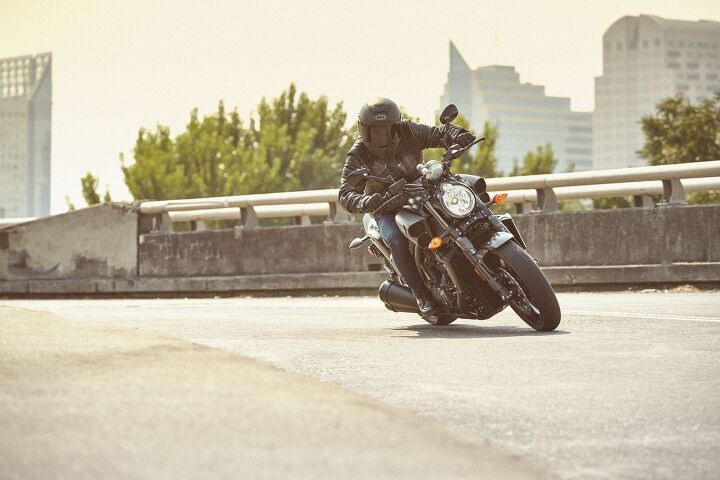
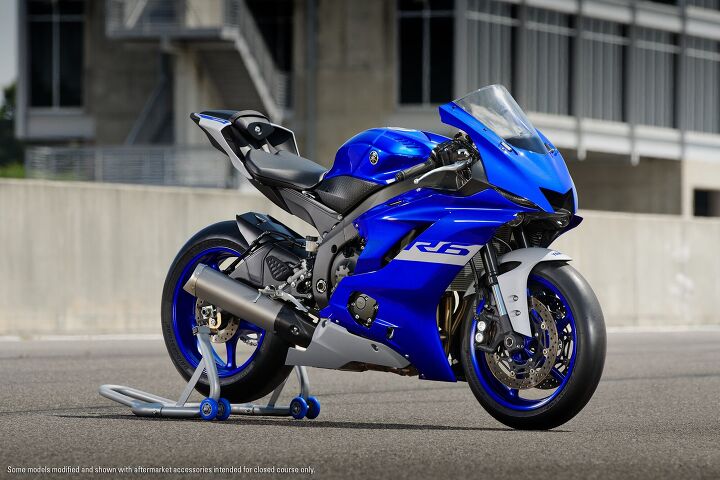
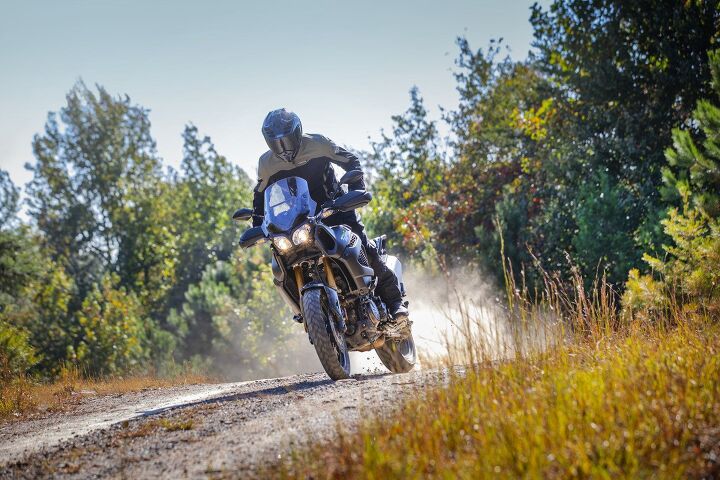
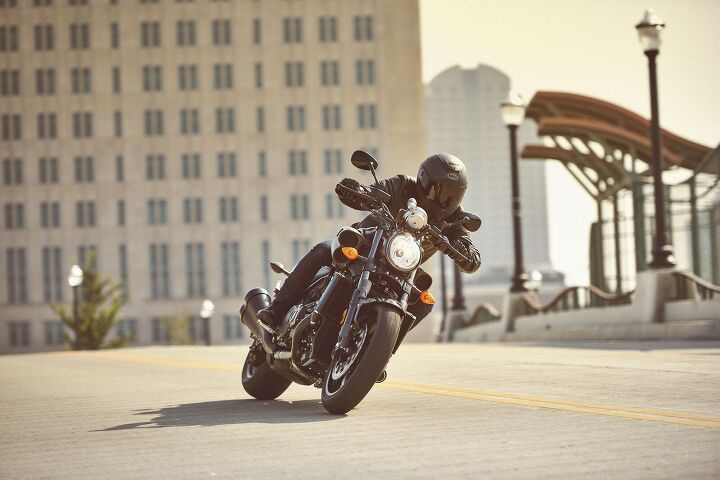
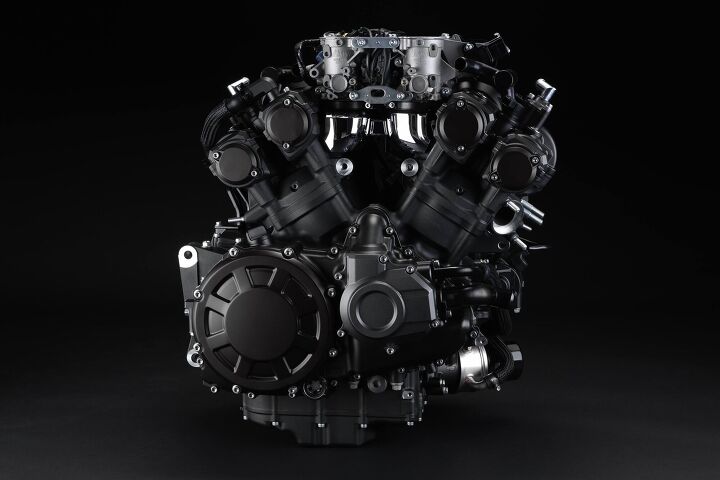
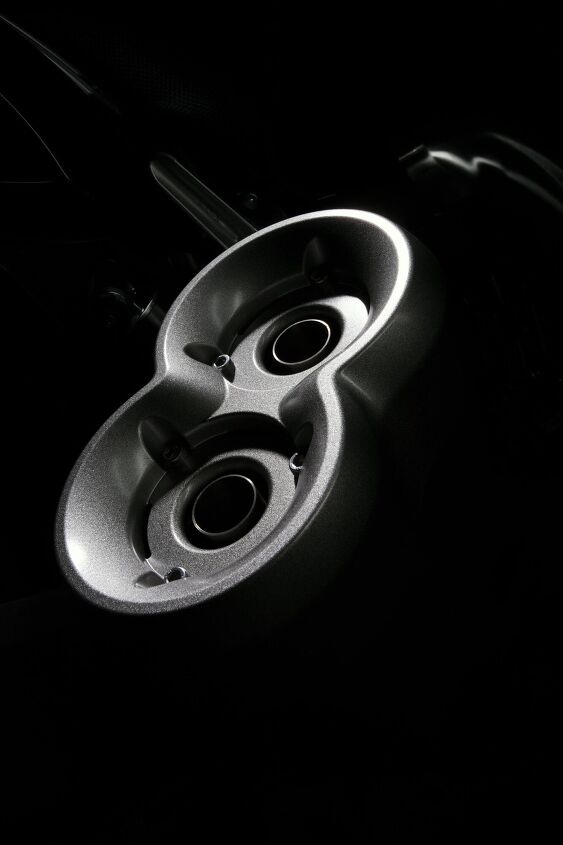
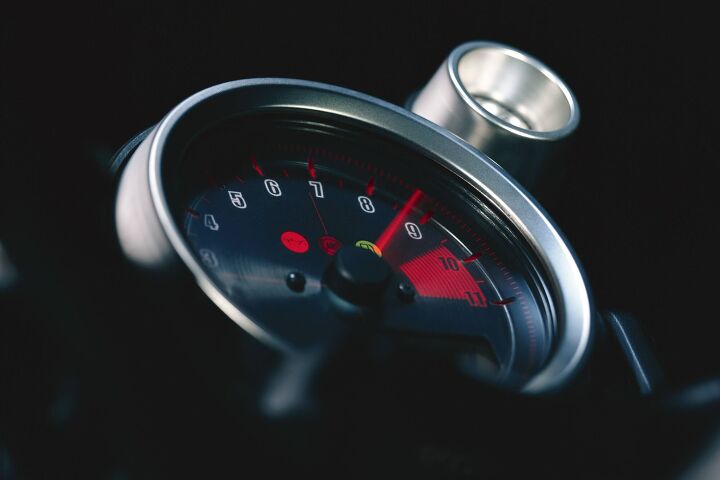
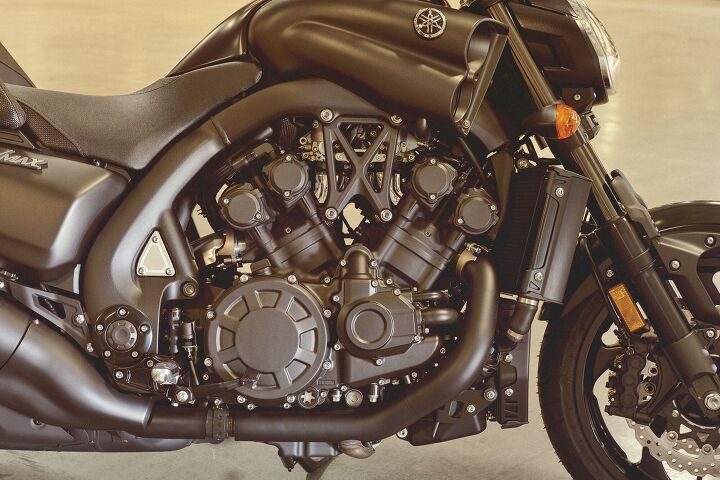
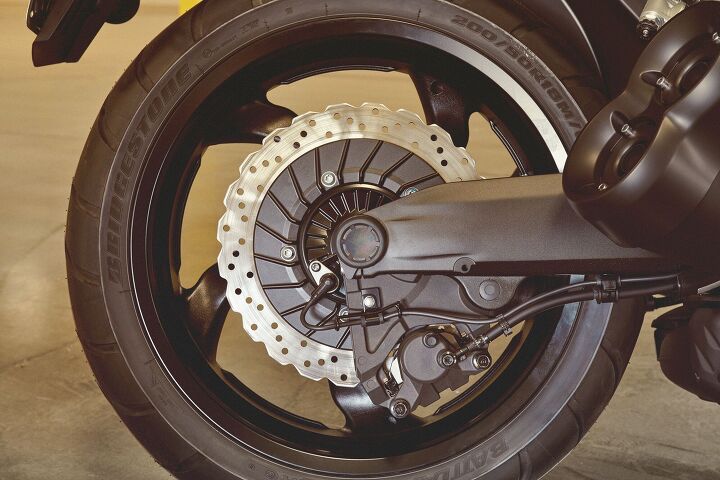
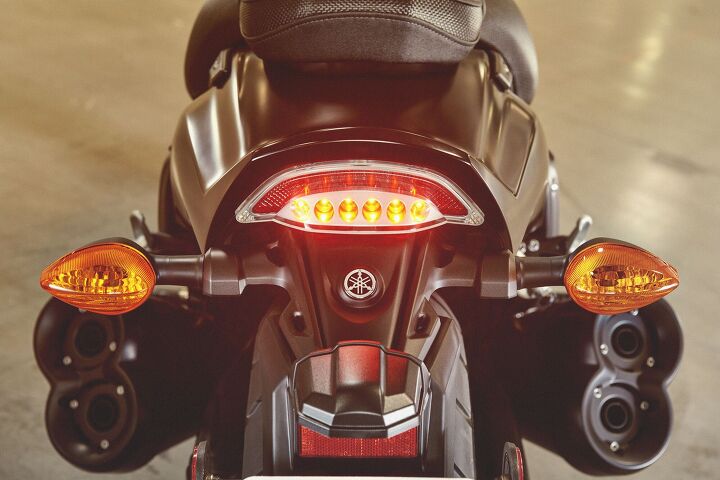
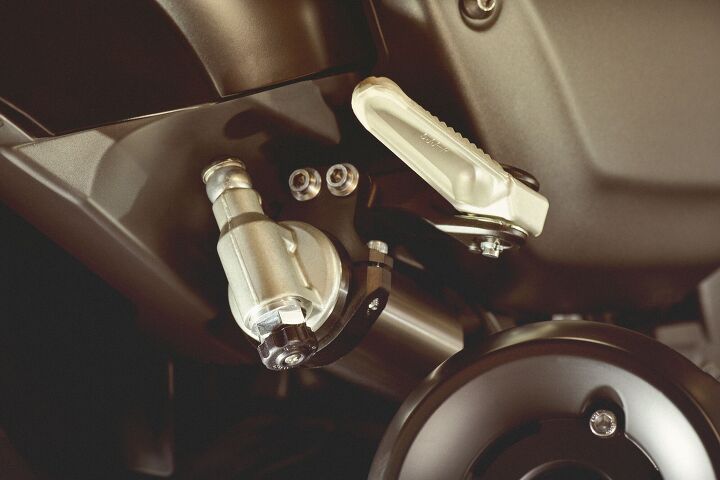
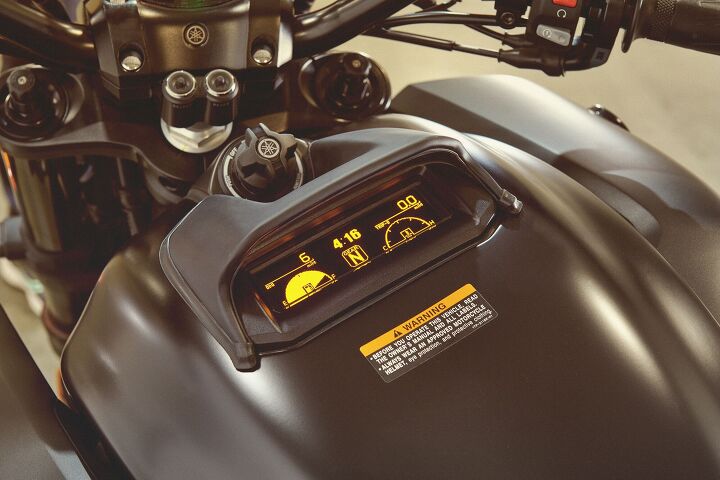
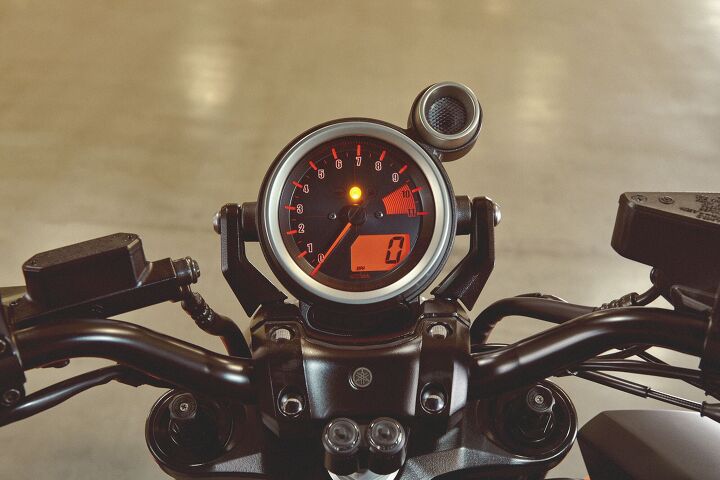
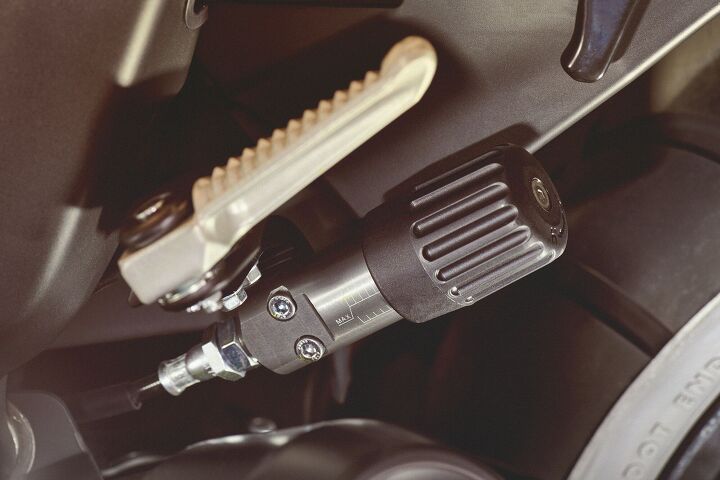
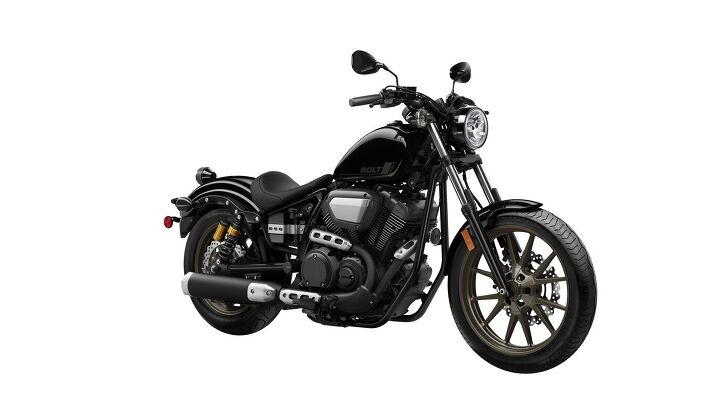
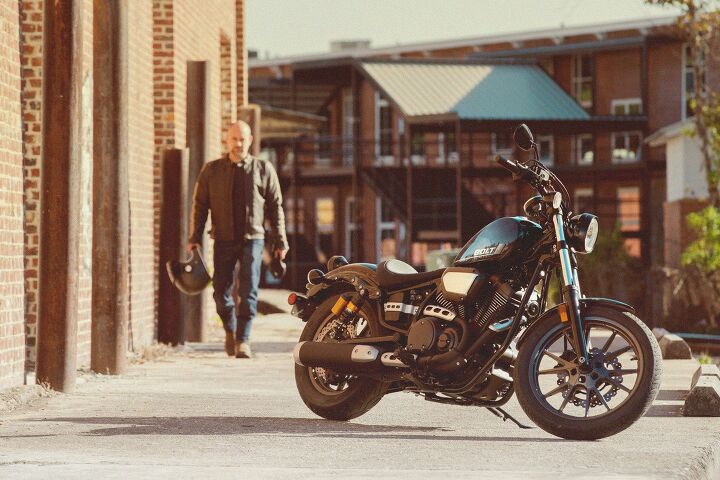
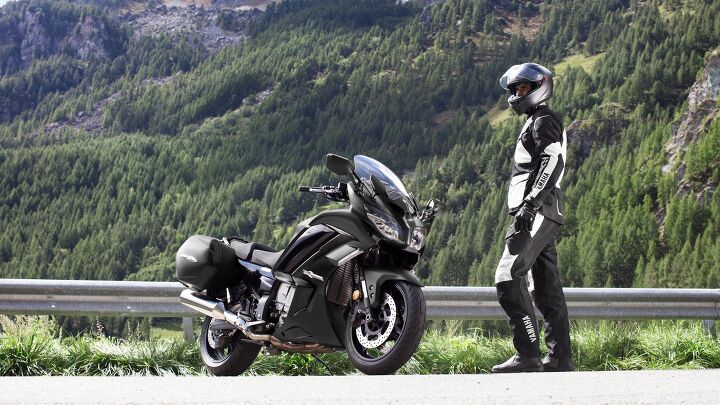
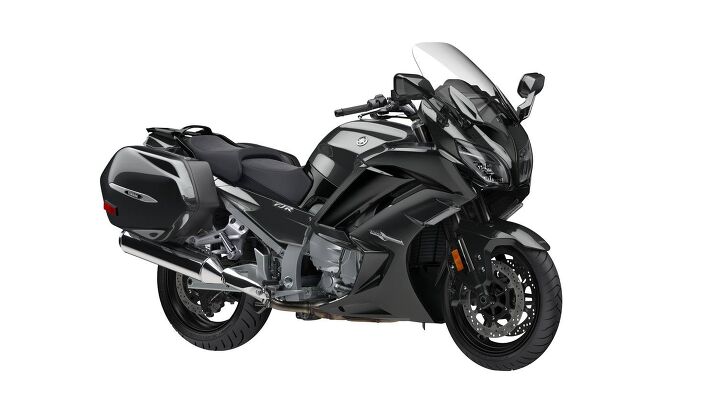
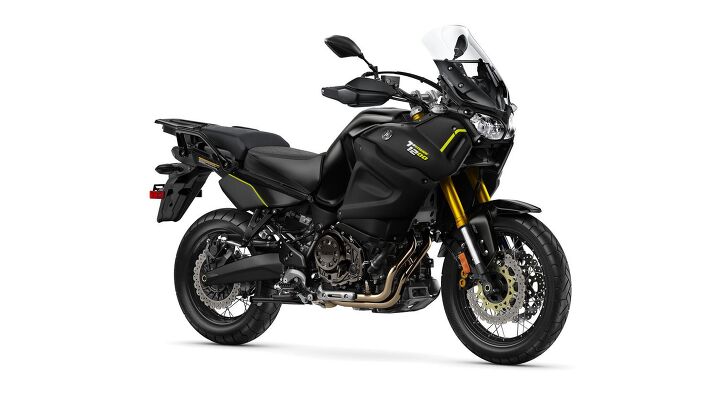
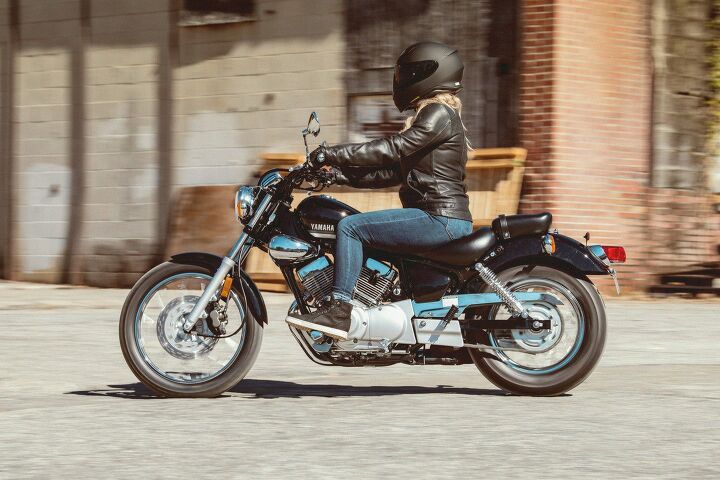
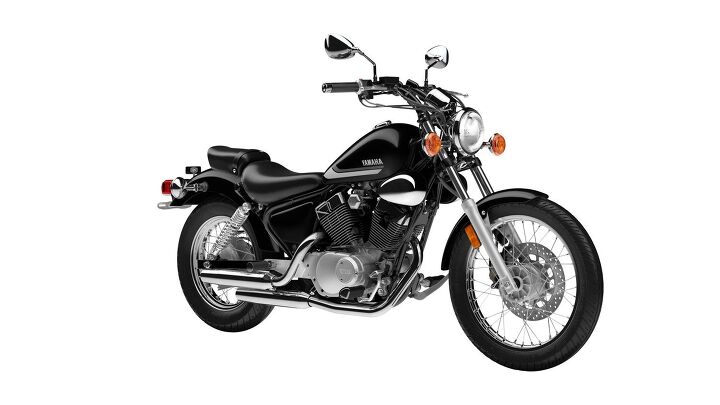
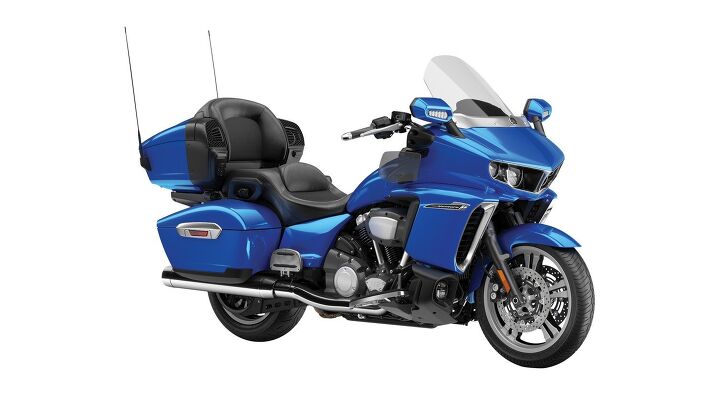
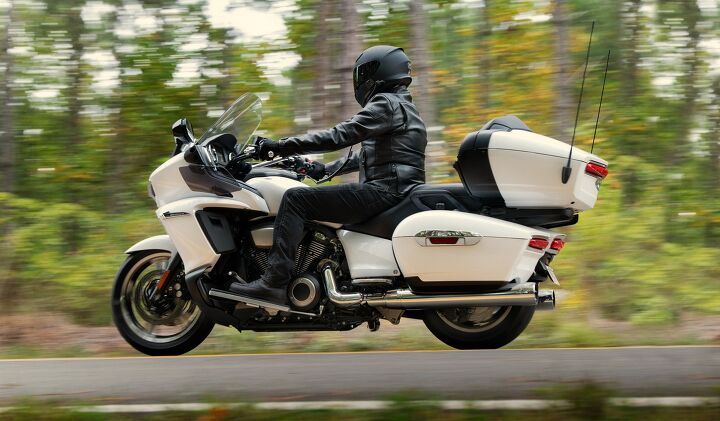
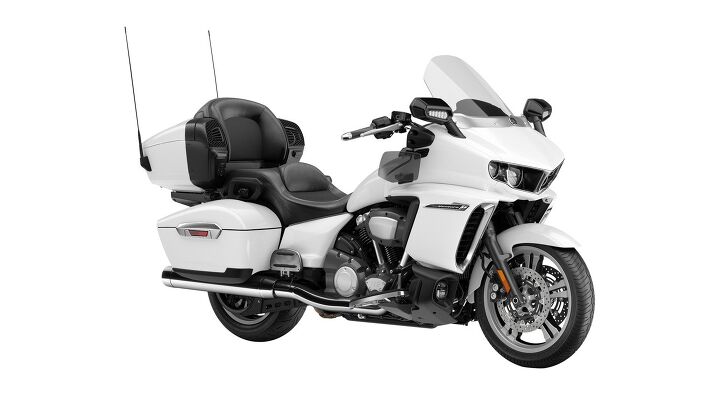
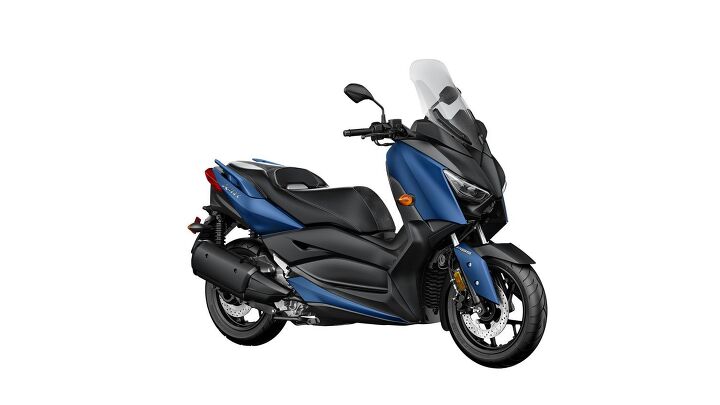
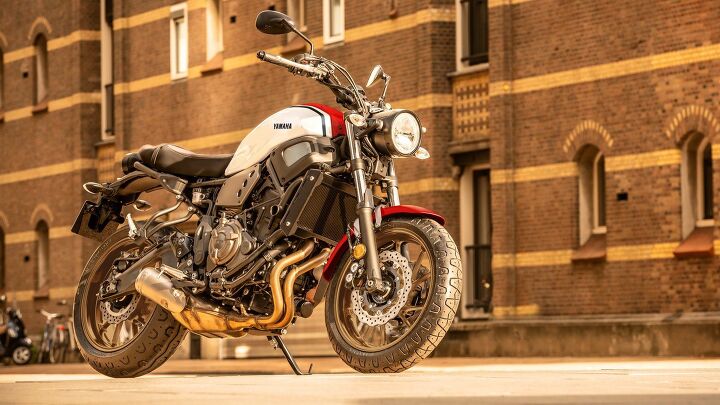
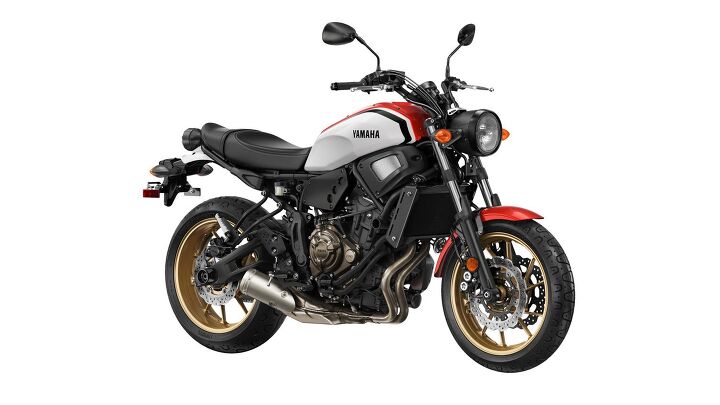
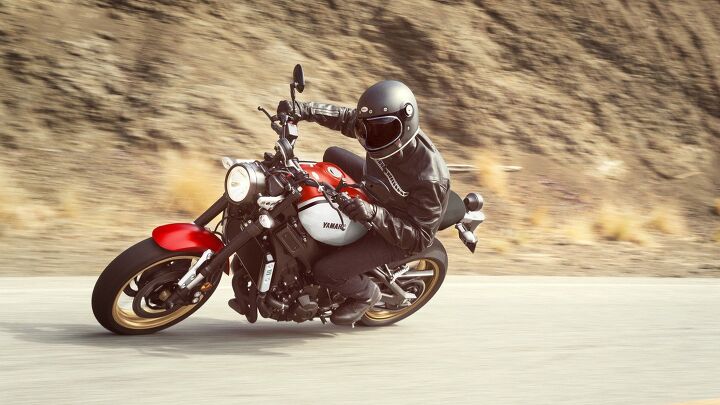
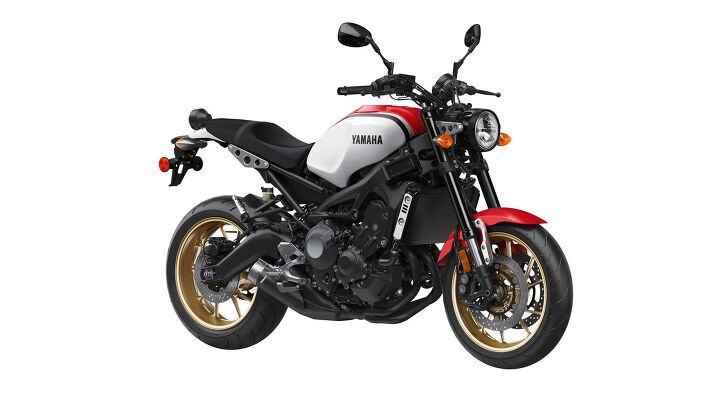
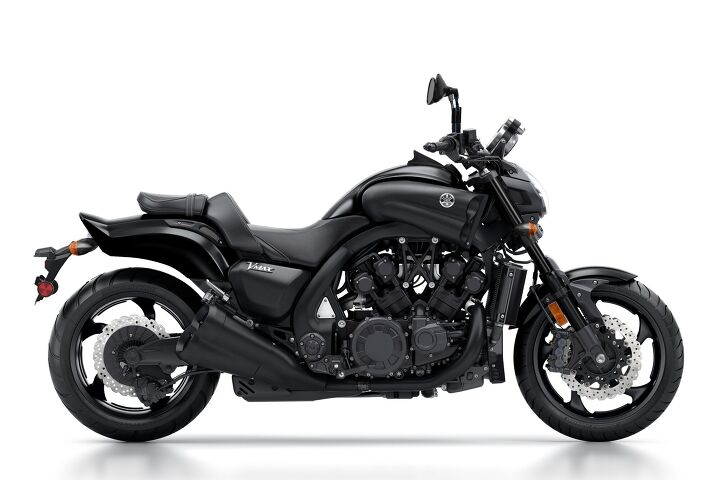
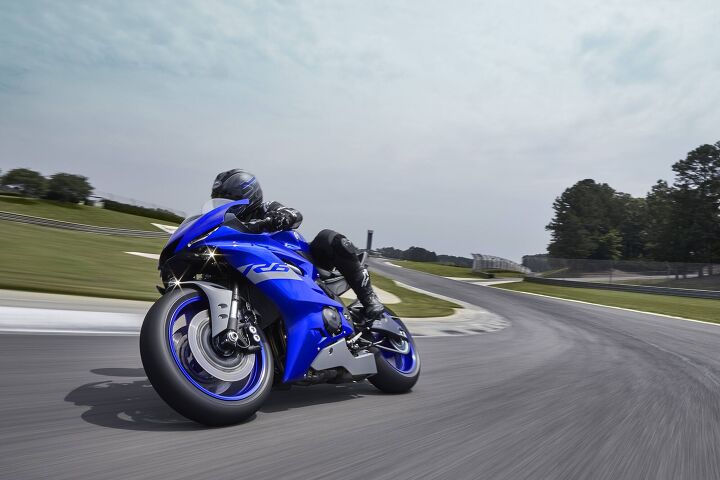
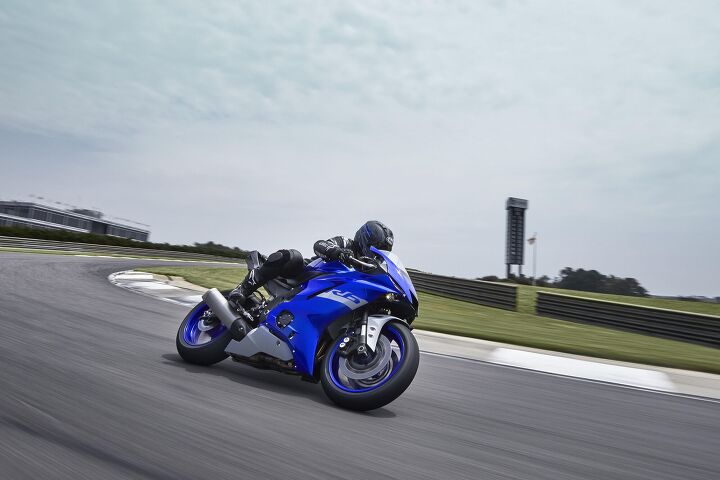
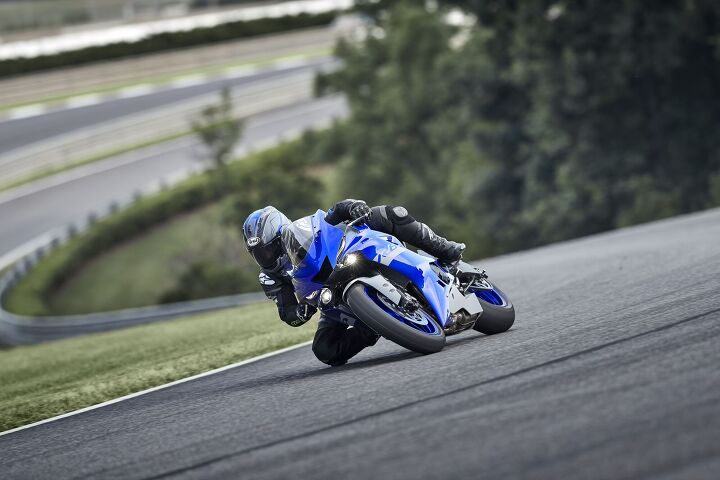
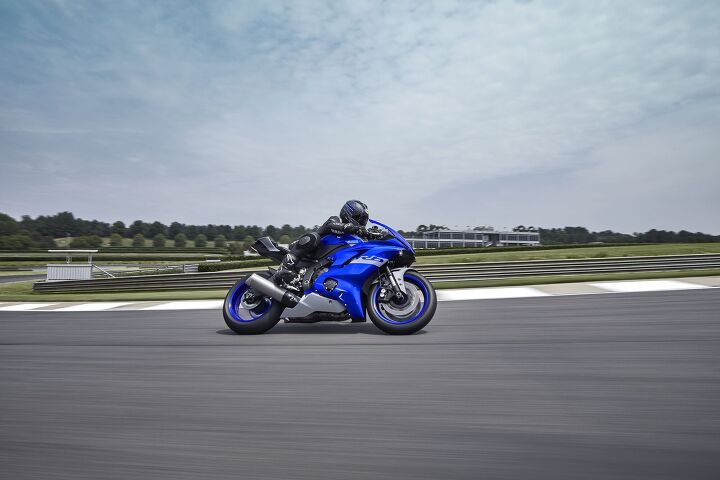
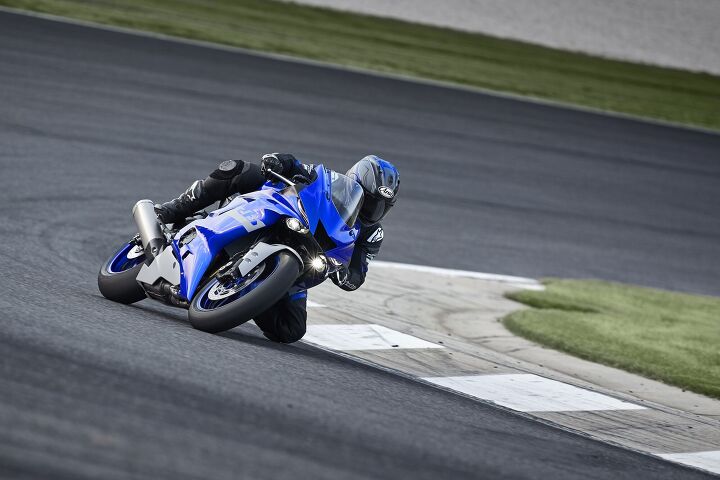
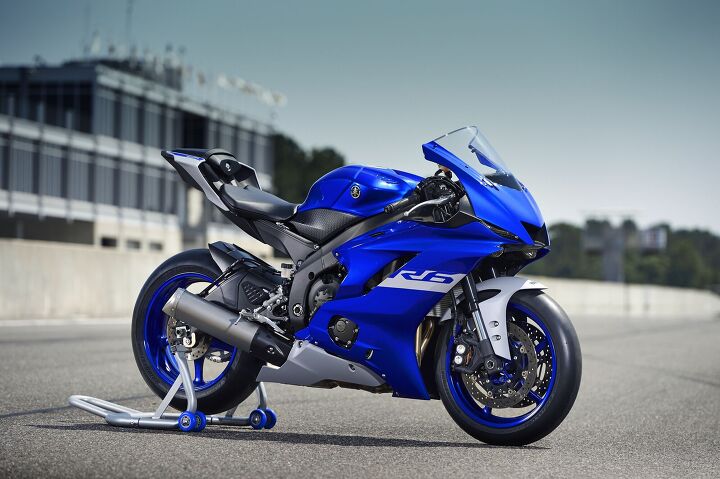
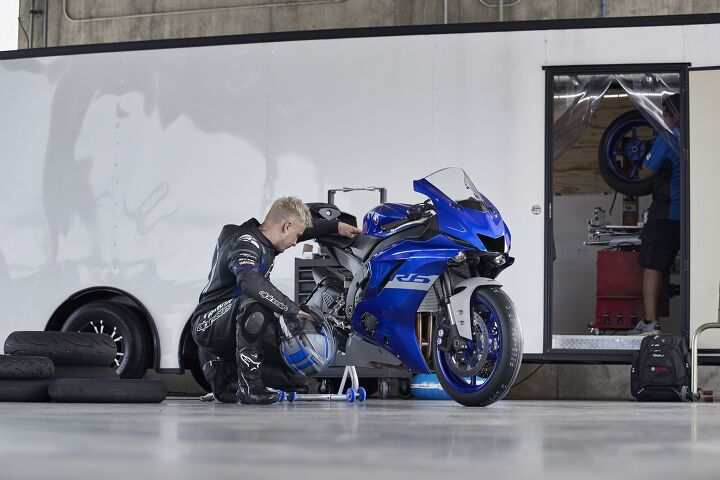
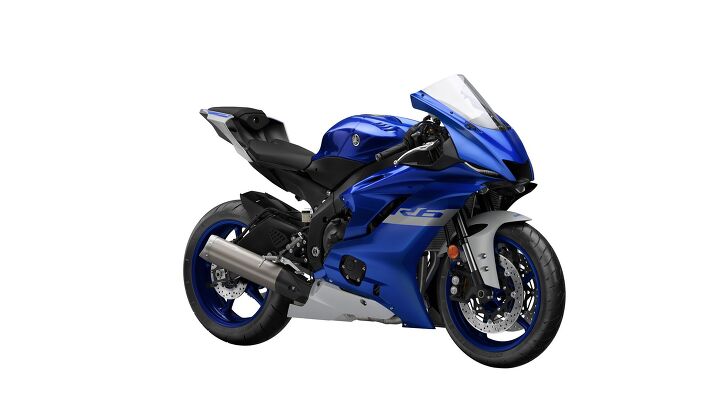
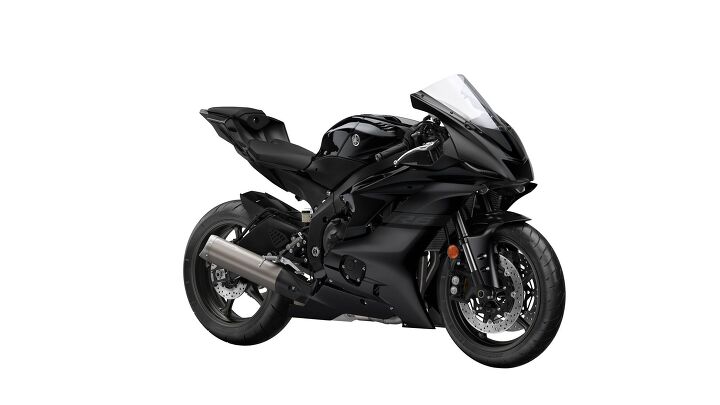
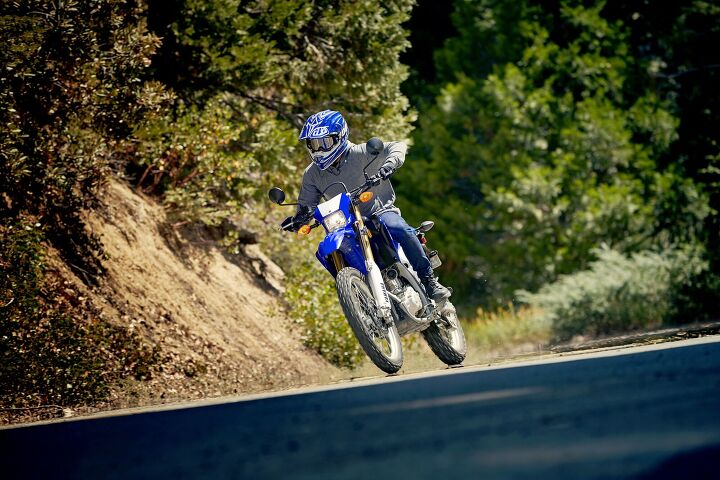
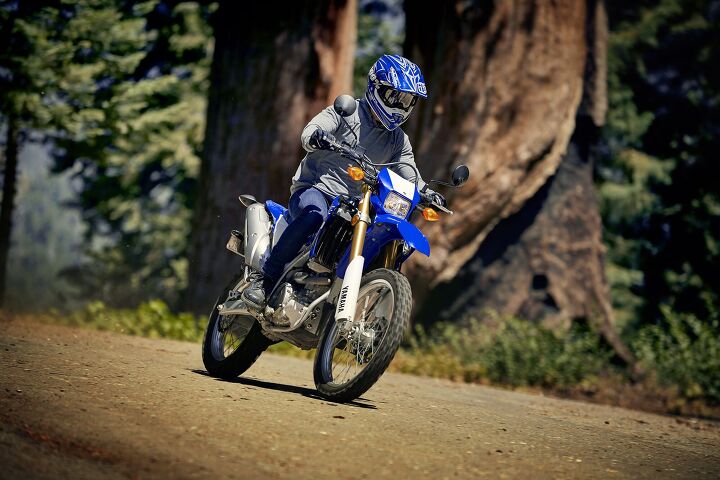
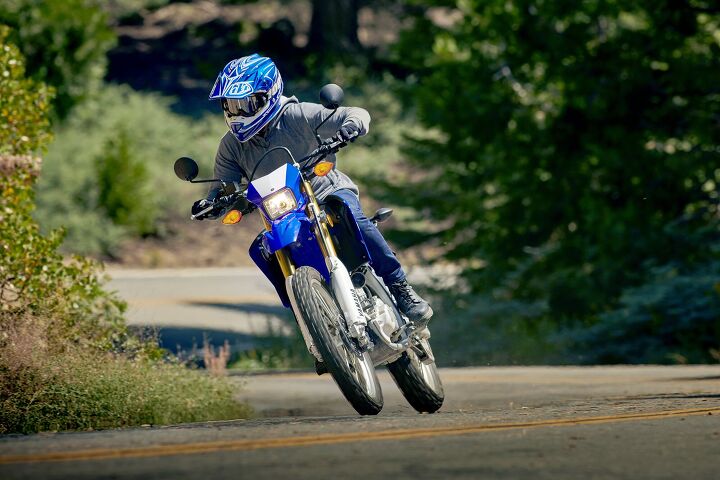
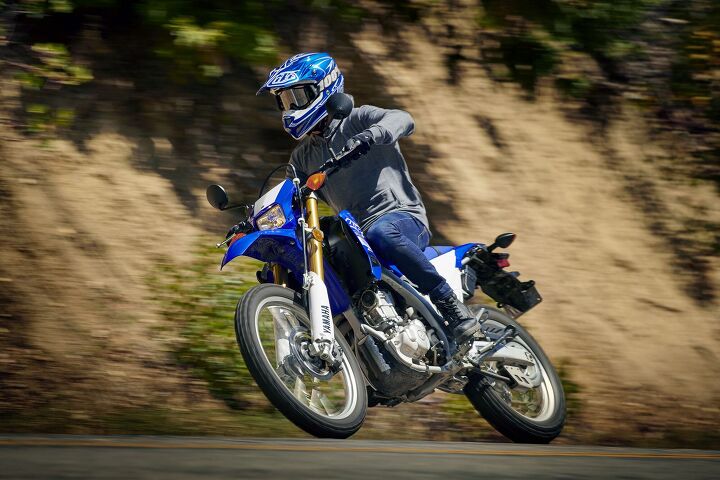
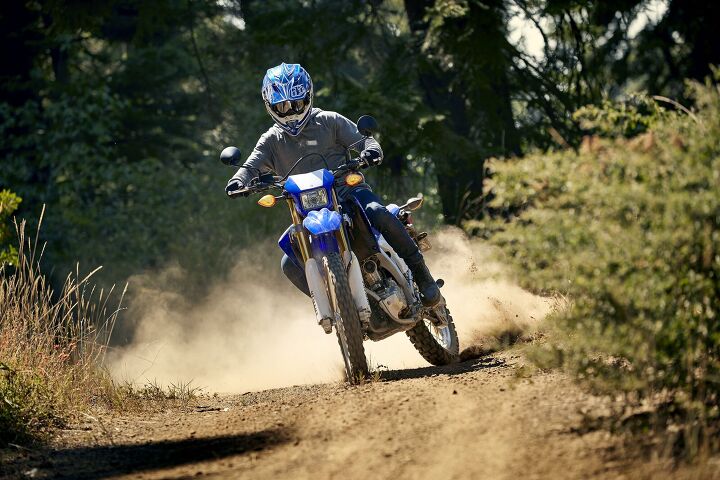
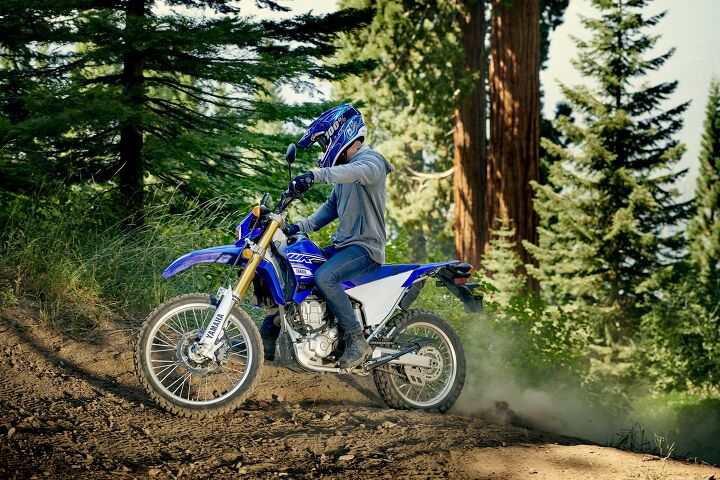
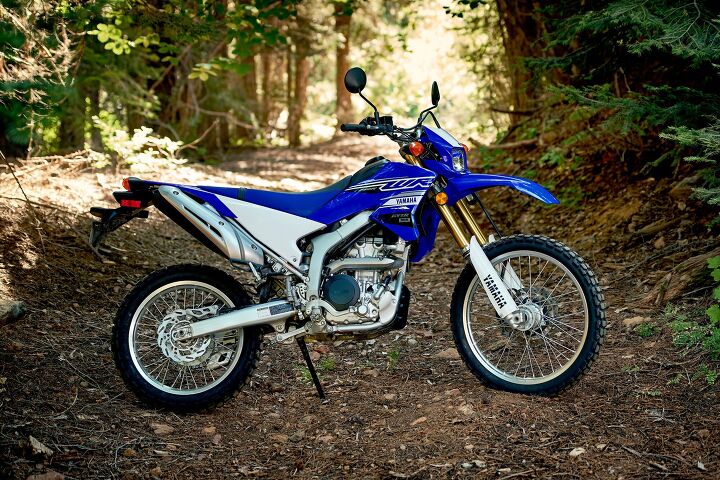
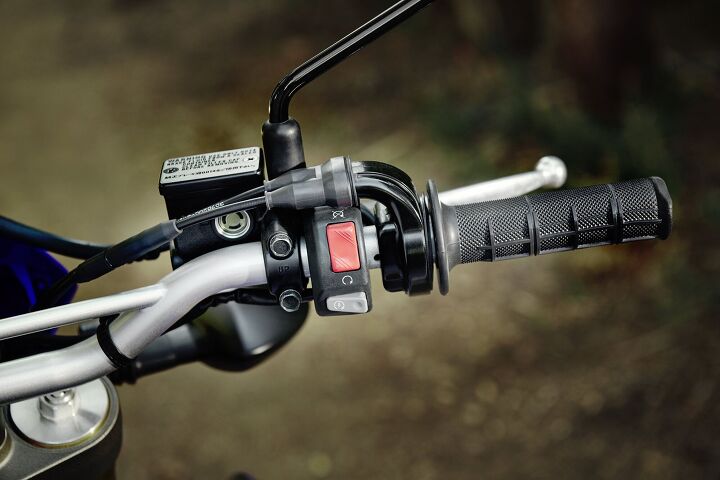
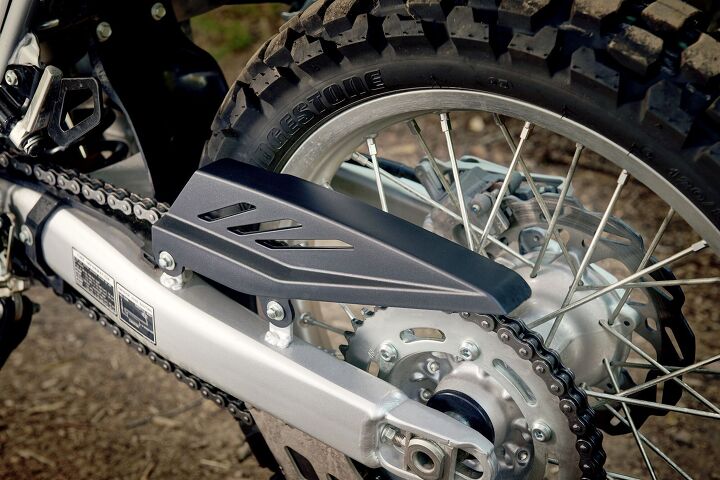
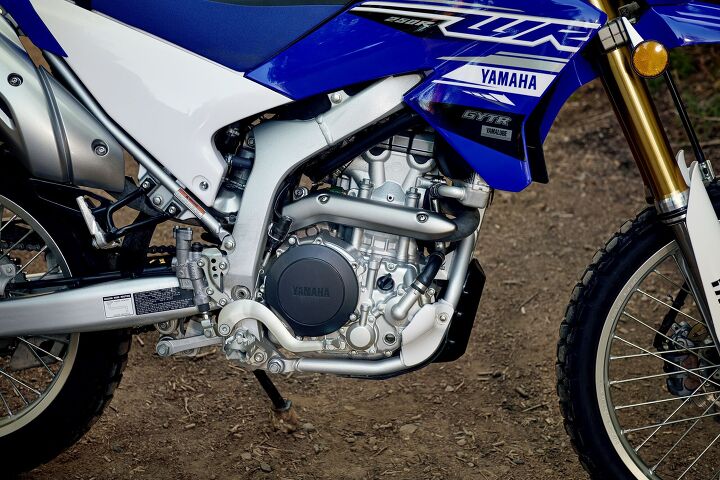
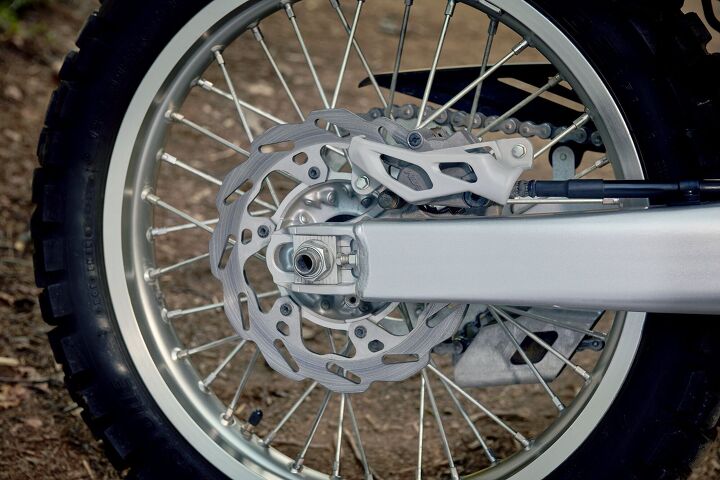
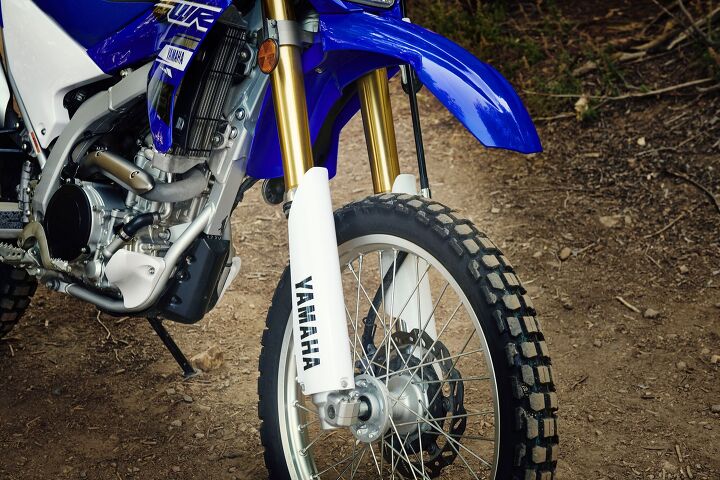
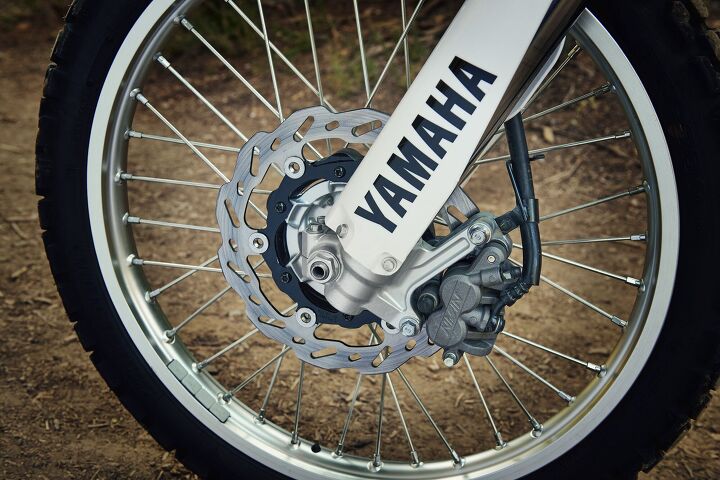
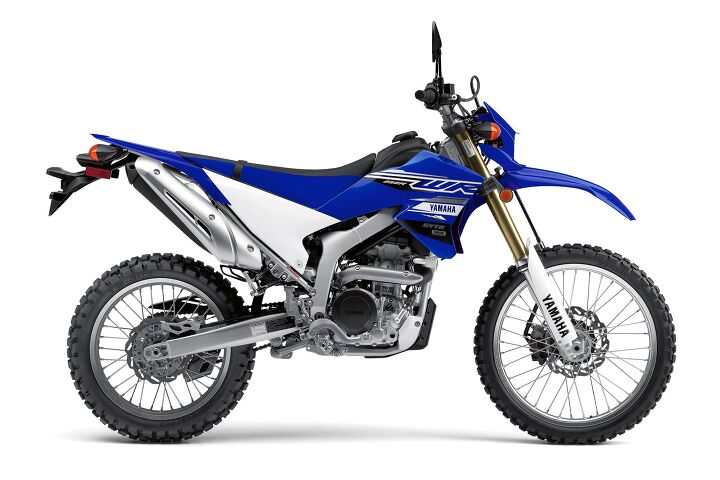
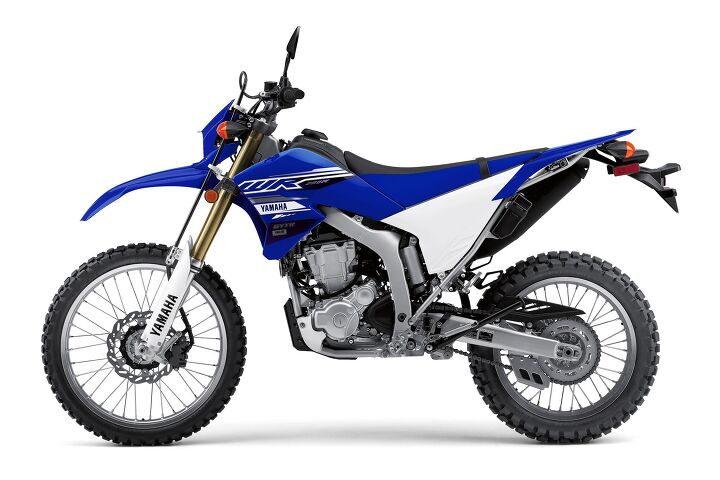
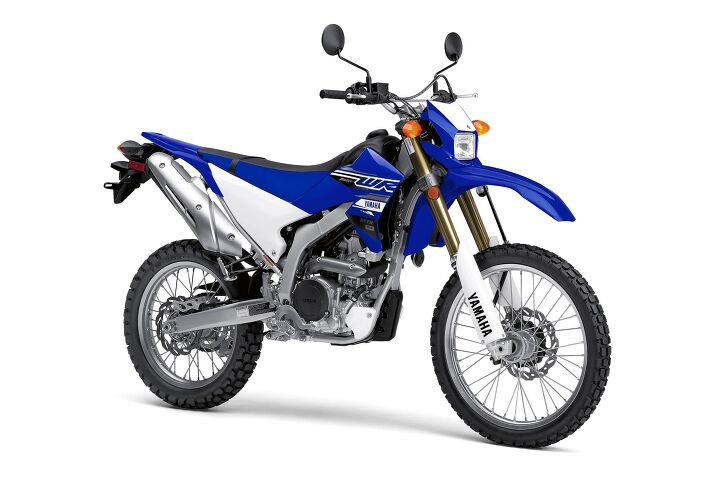
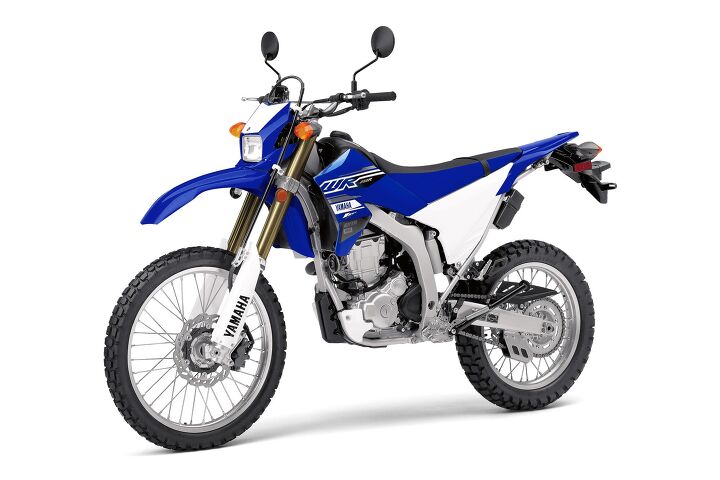
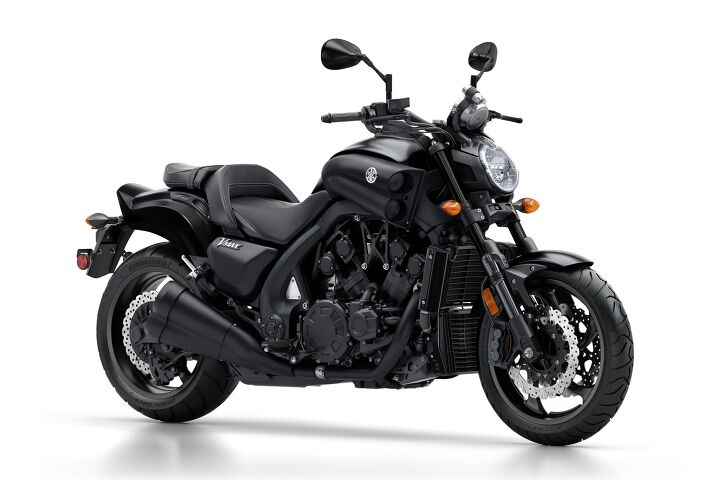
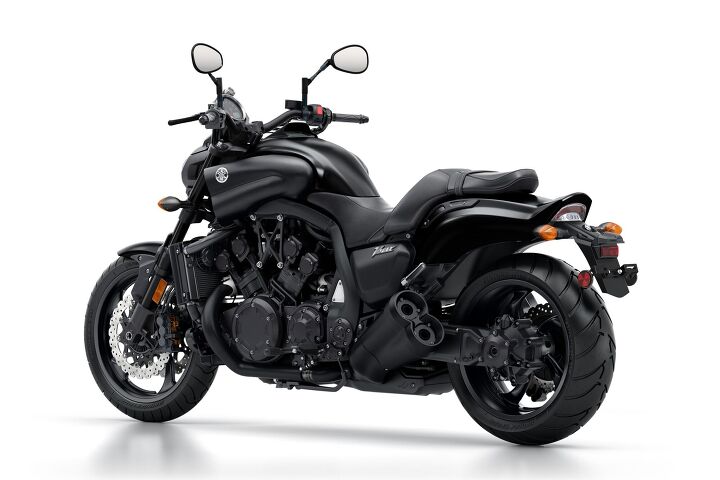
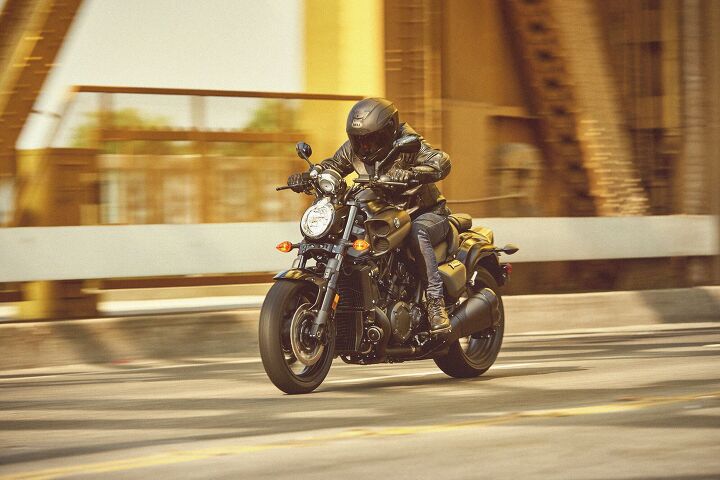
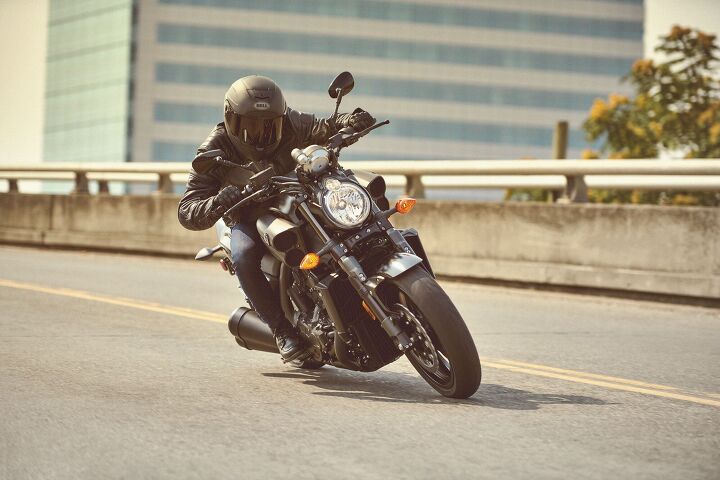
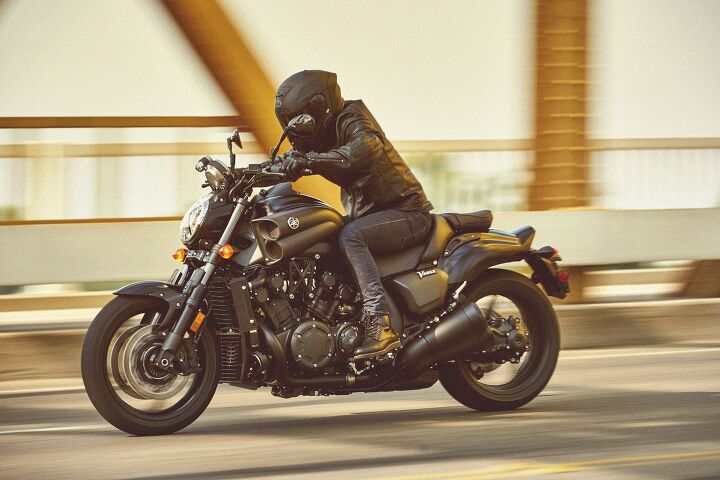
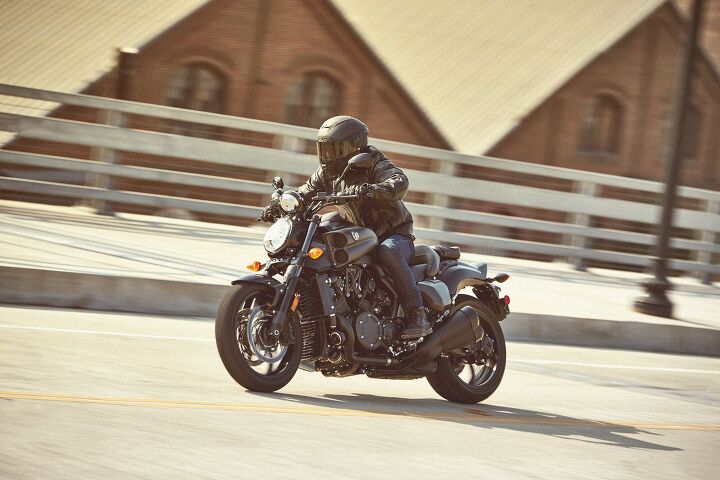
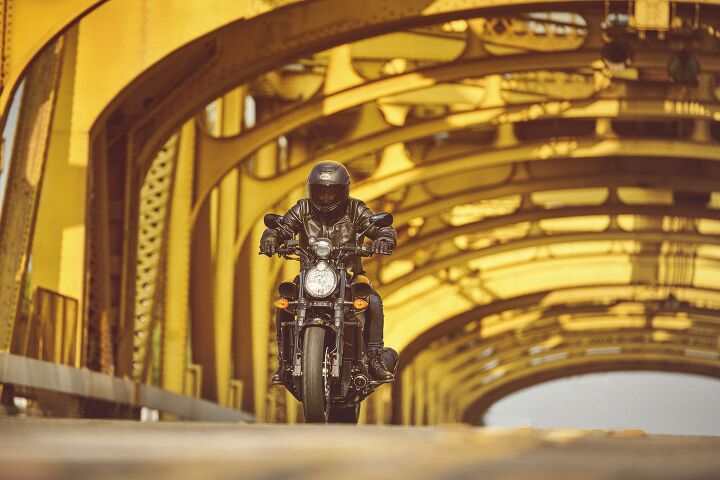
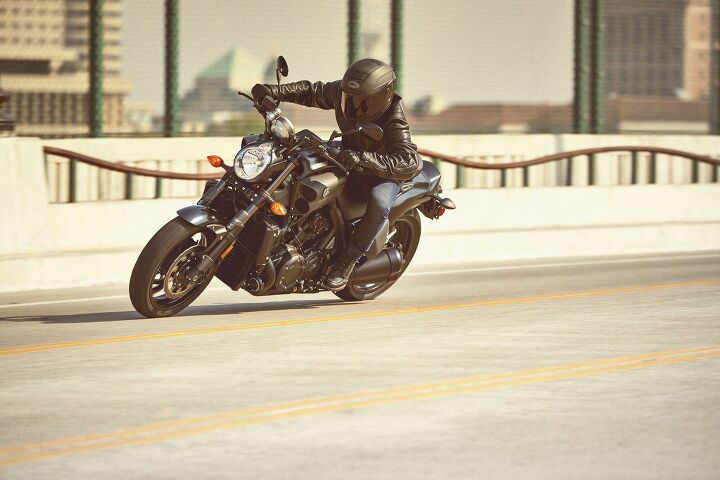
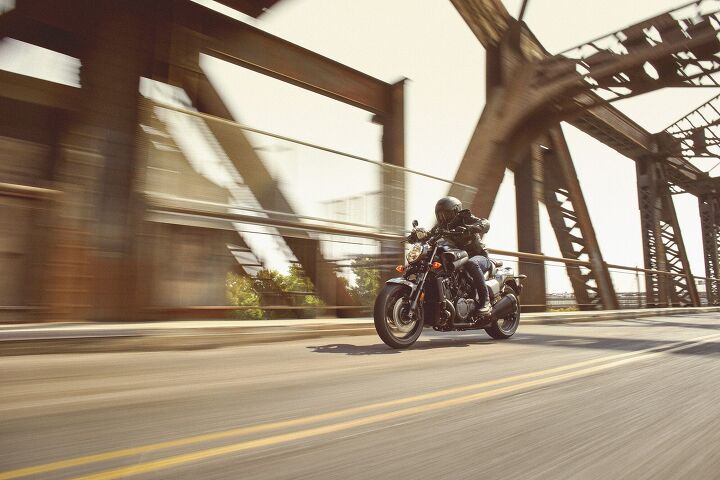
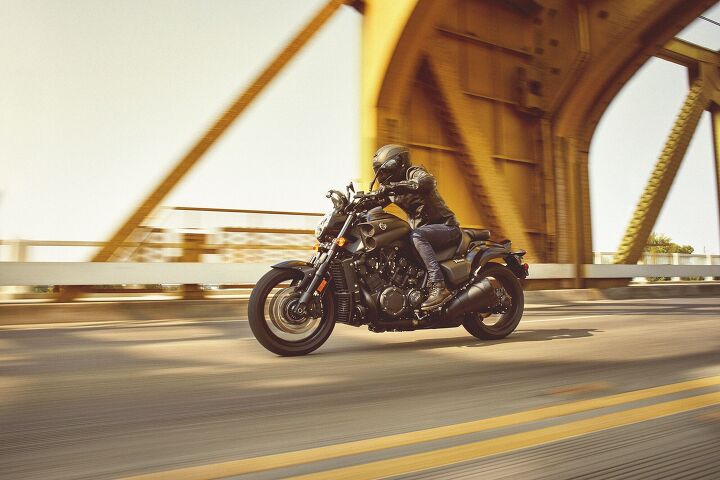
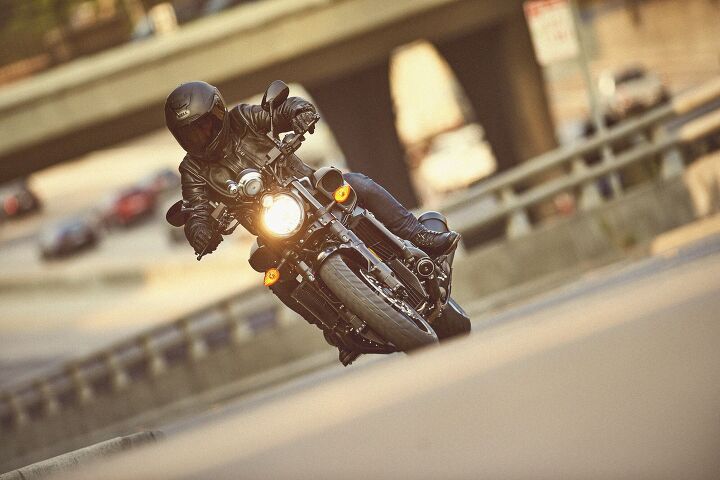
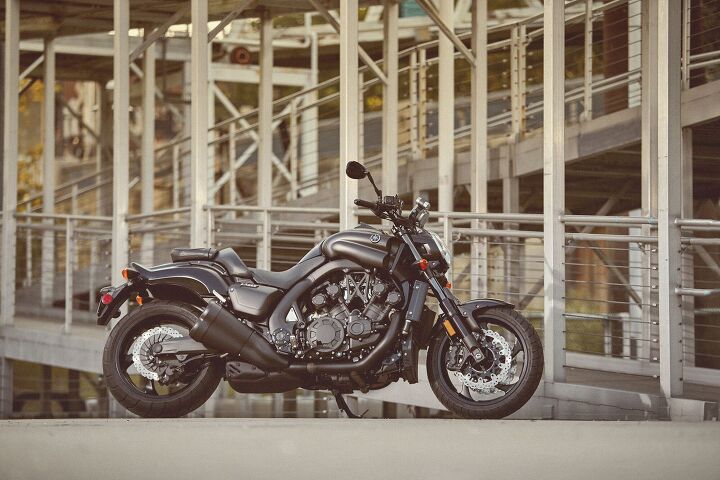
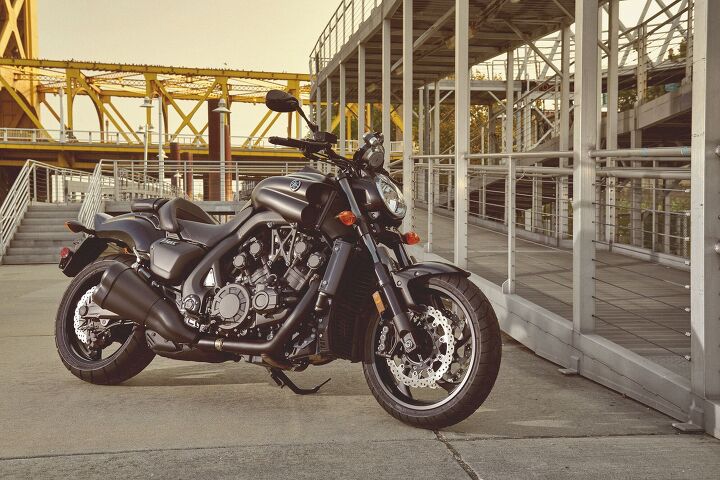
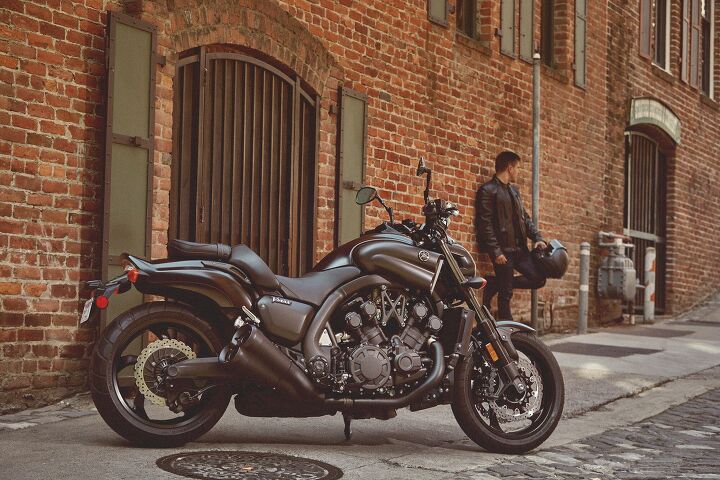
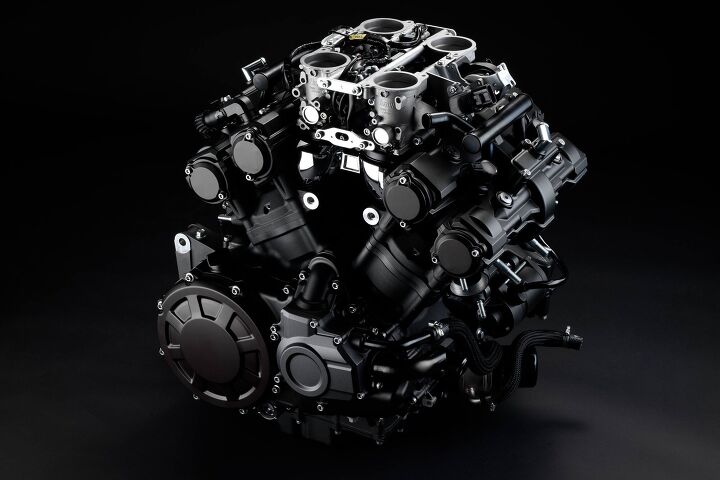
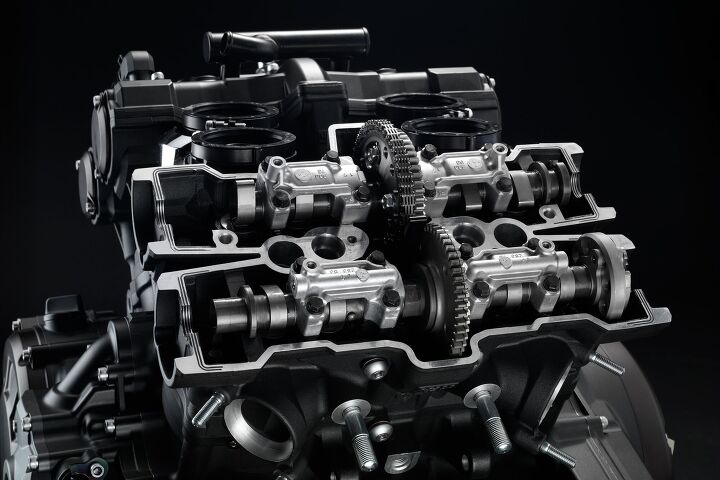
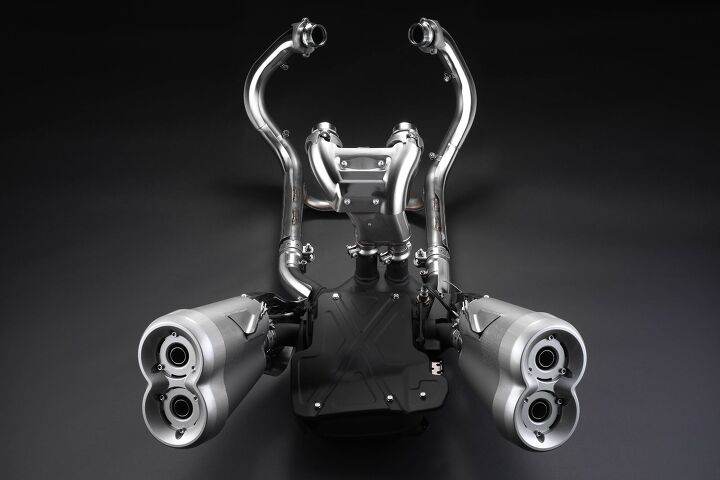
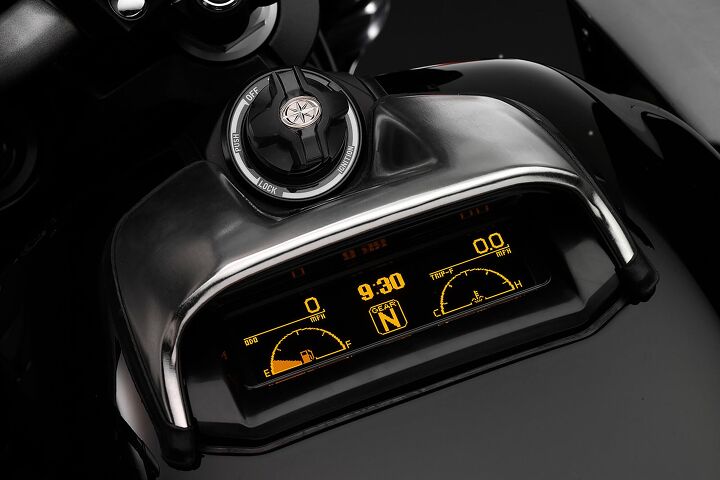
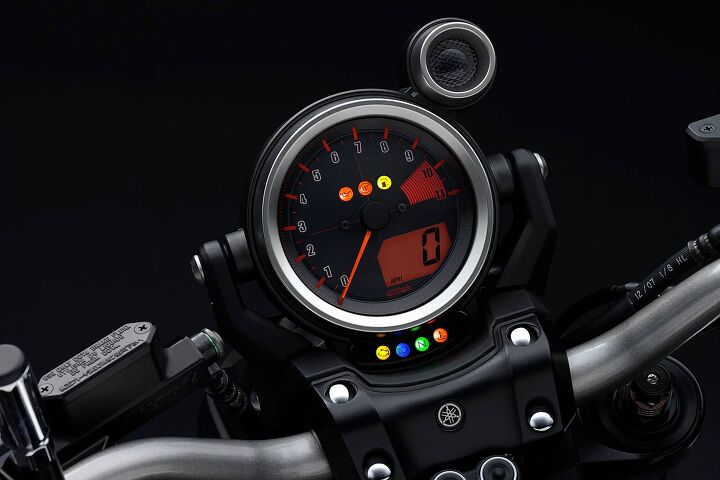
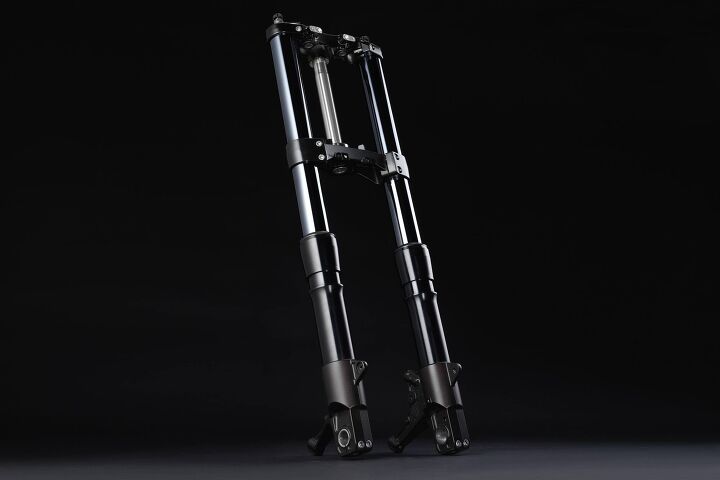
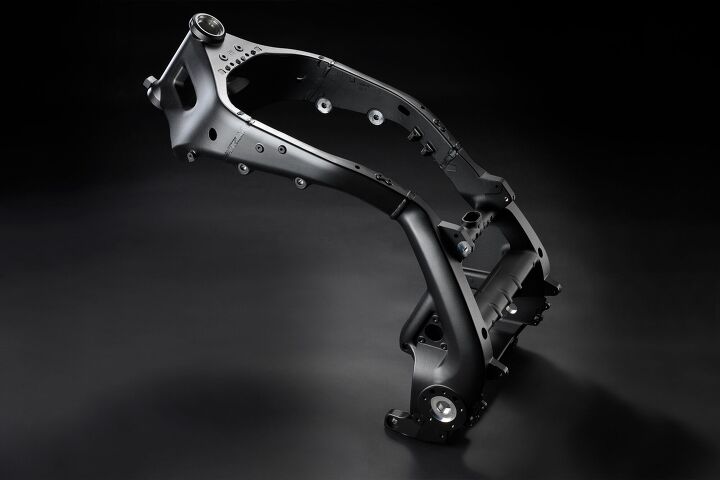
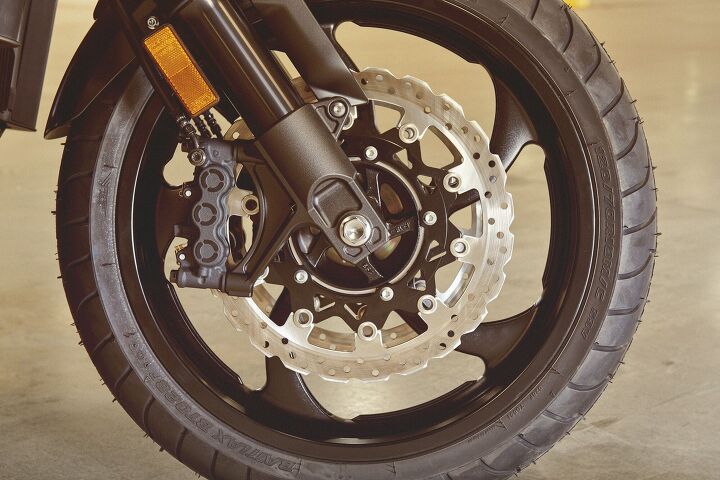
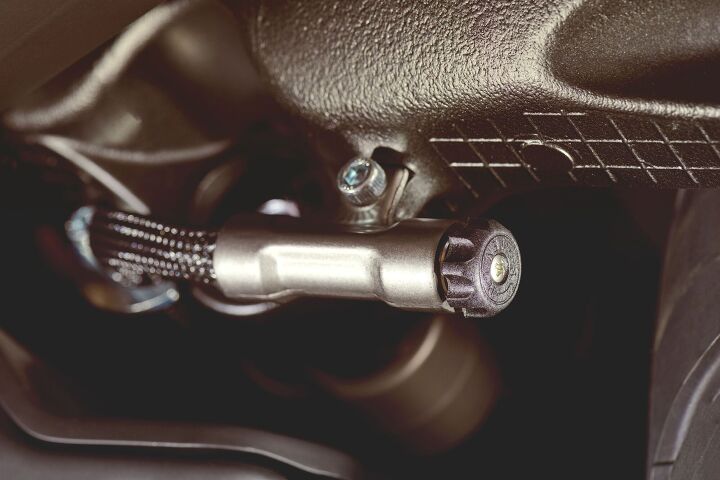
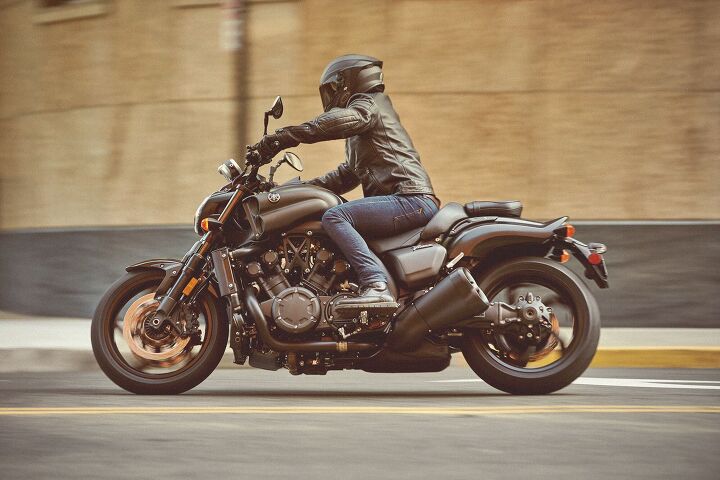
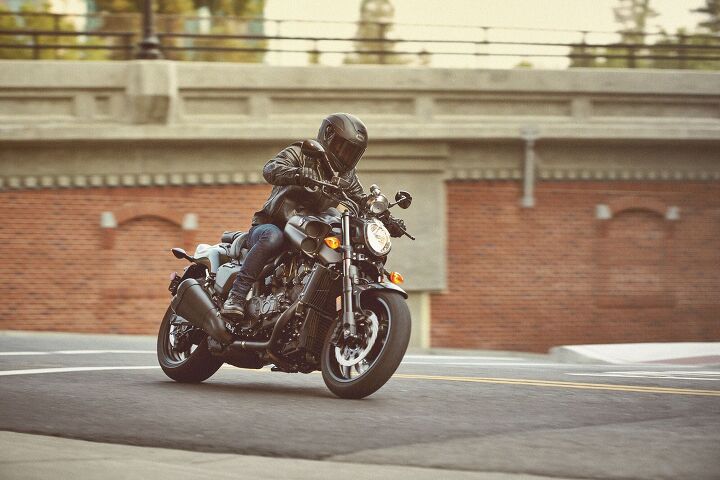
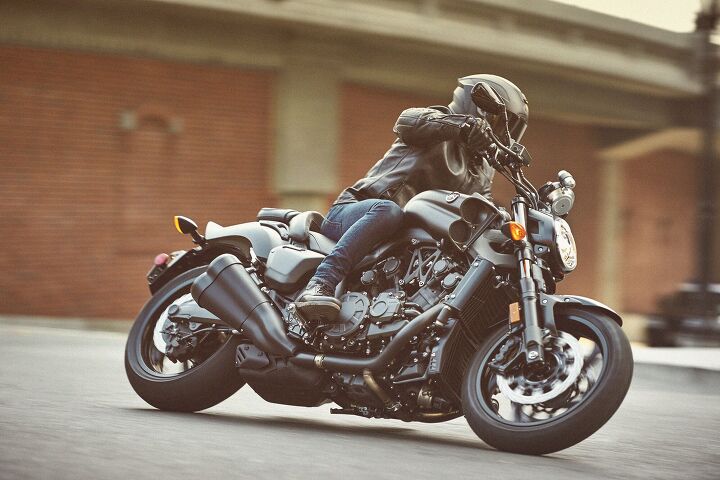
The post Yamaha Is Discontinuing The R6 and VMAX After 2020 appeared first on Motorcycle.com.
http://feeds.feedburner.com/~r/Motorcyclefeed/~4/grd6_xvEbF8

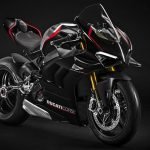
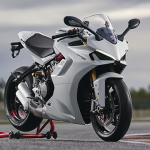
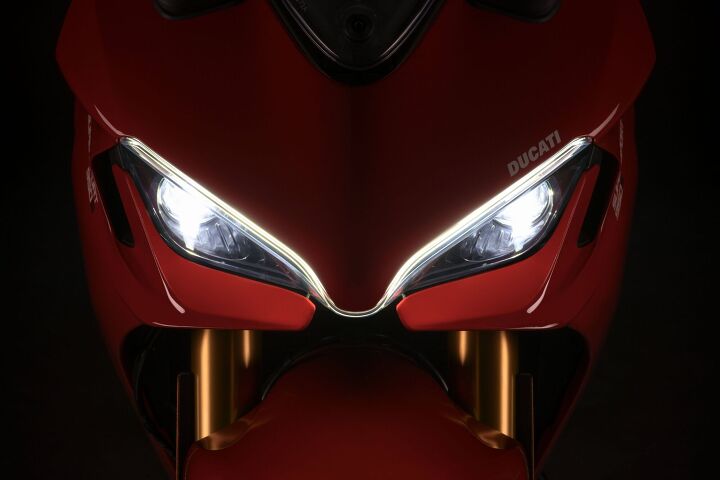
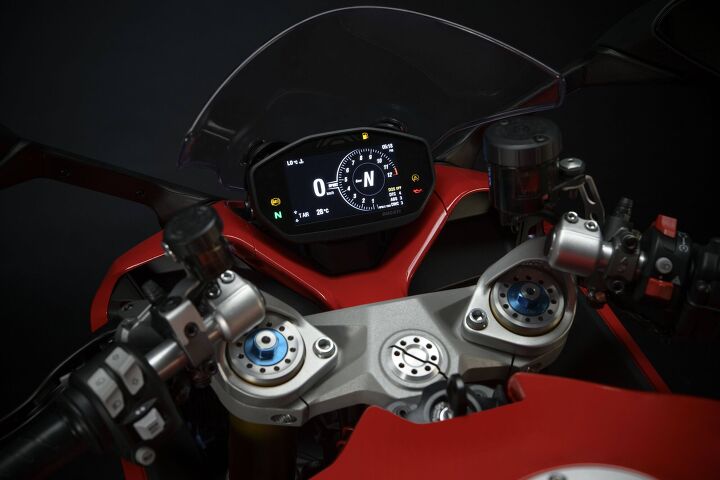
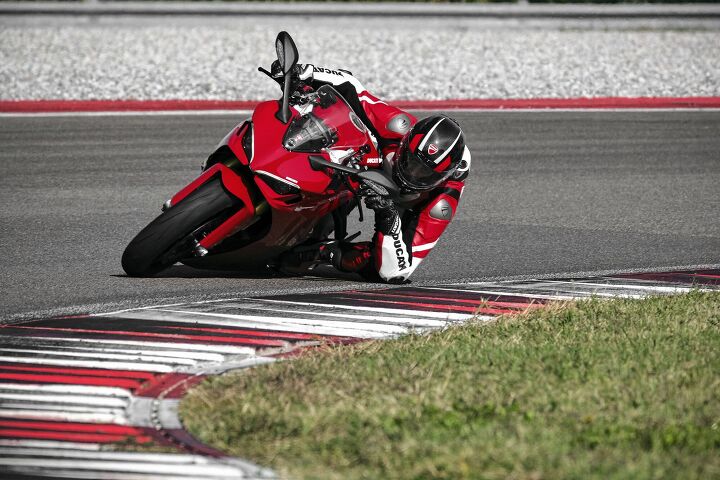
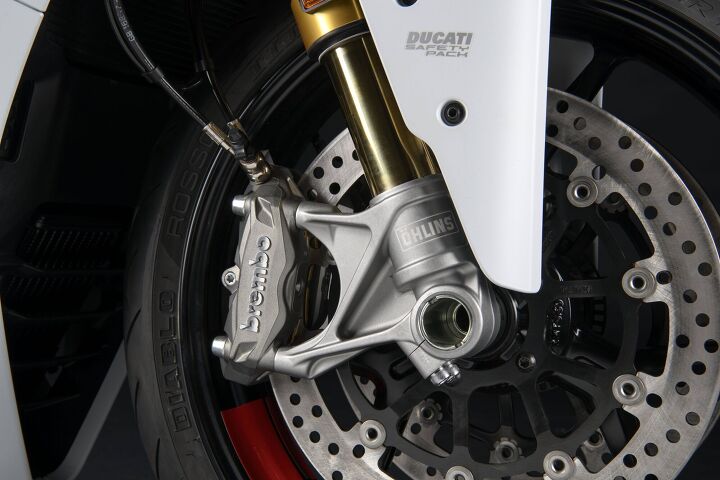
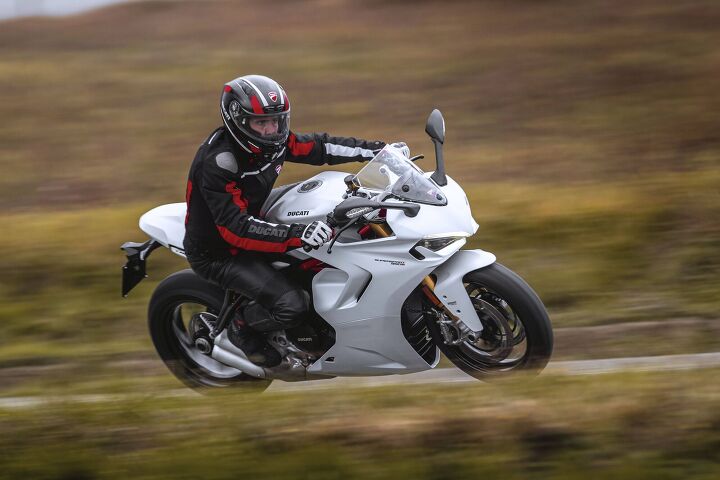
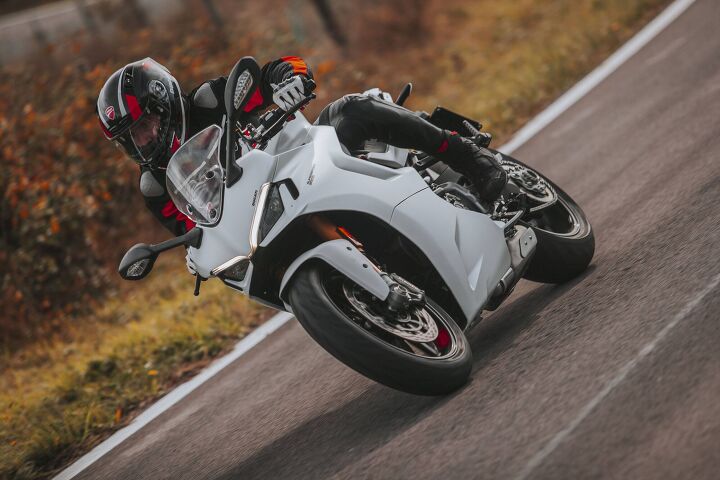
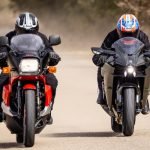
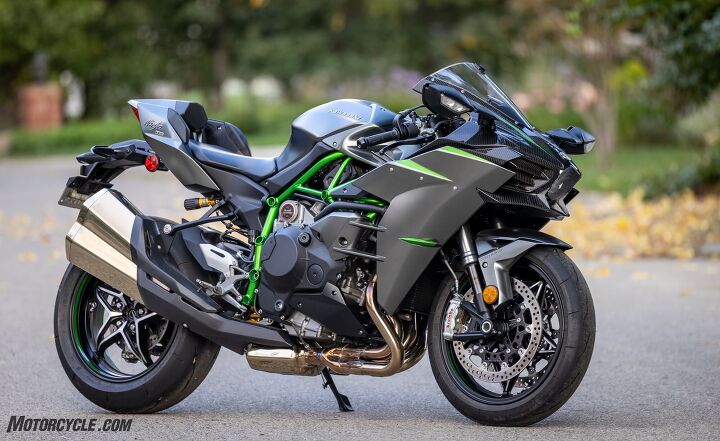
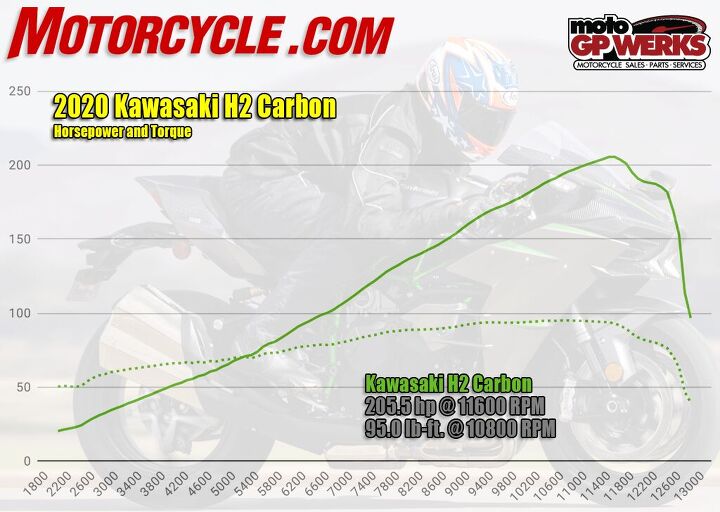
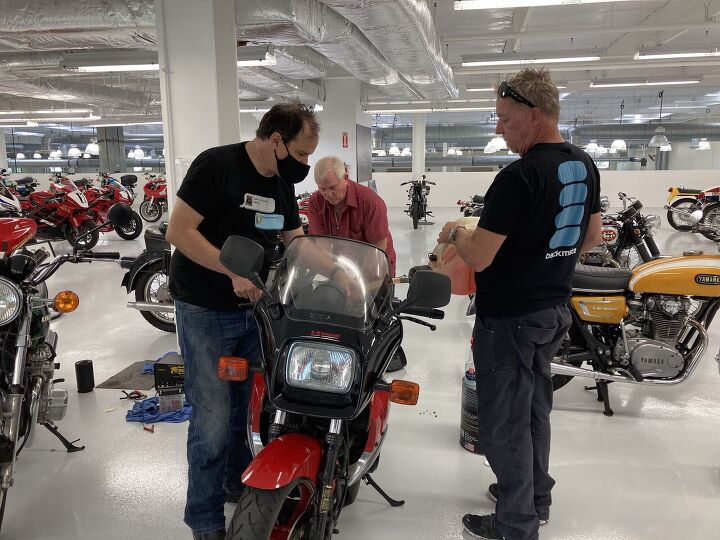
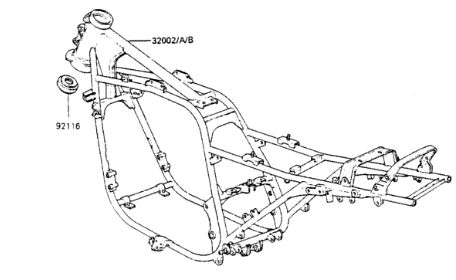
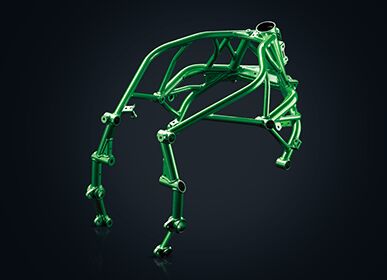
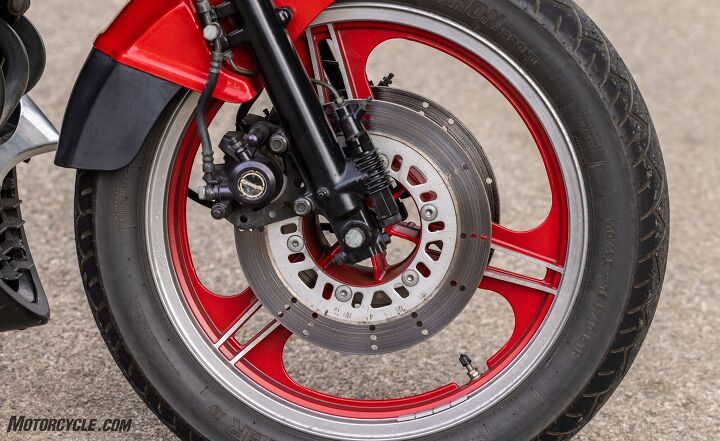
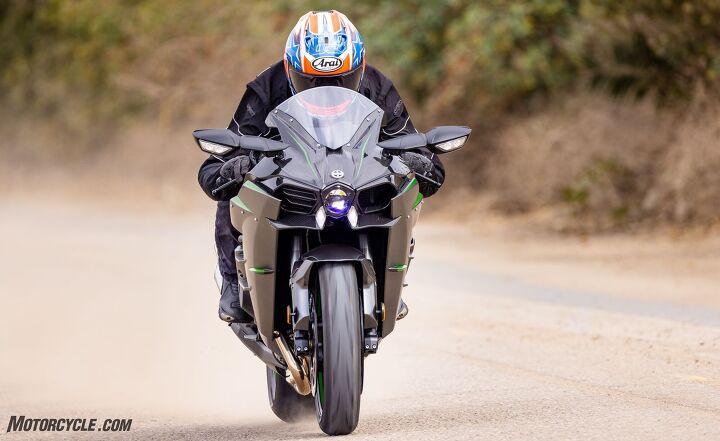
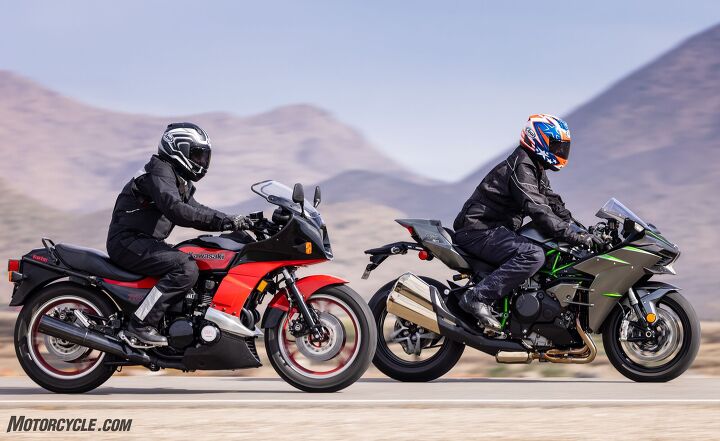
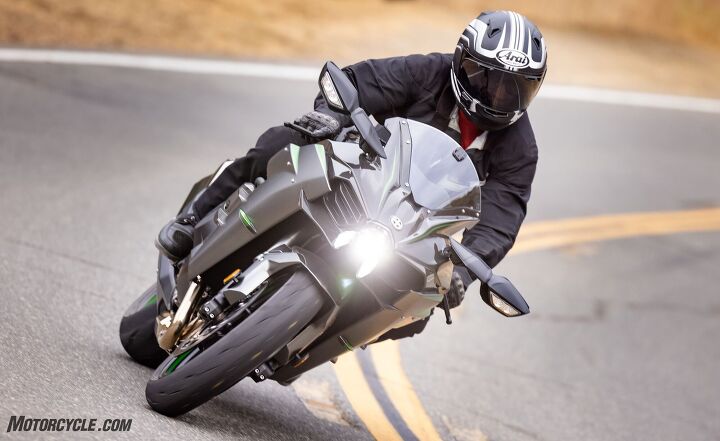
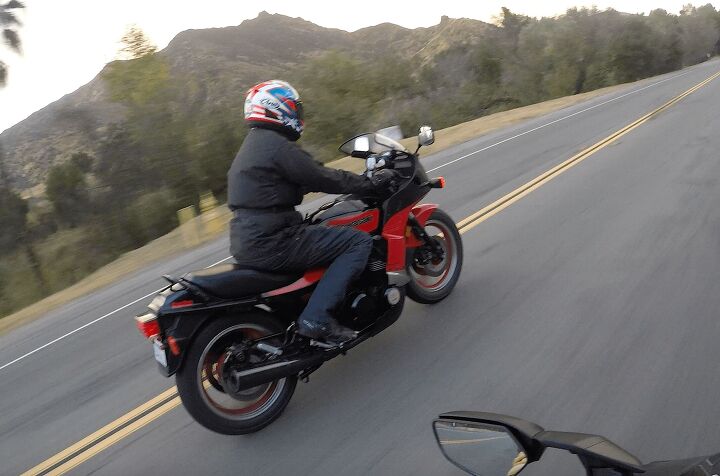
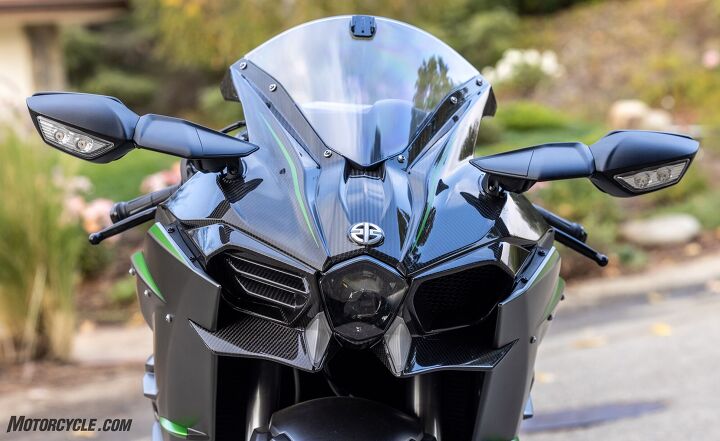
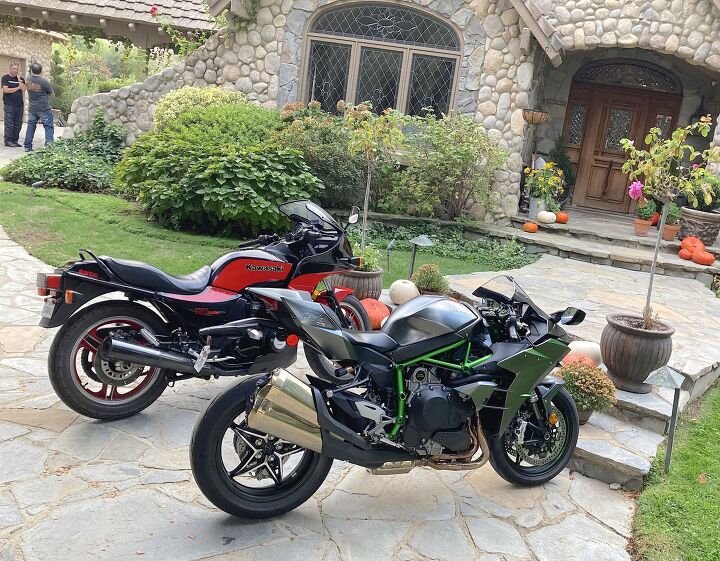
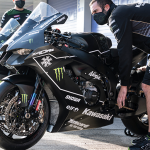
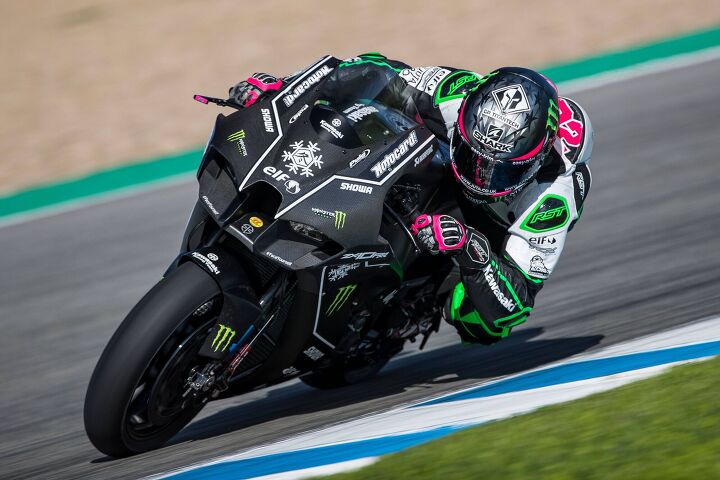
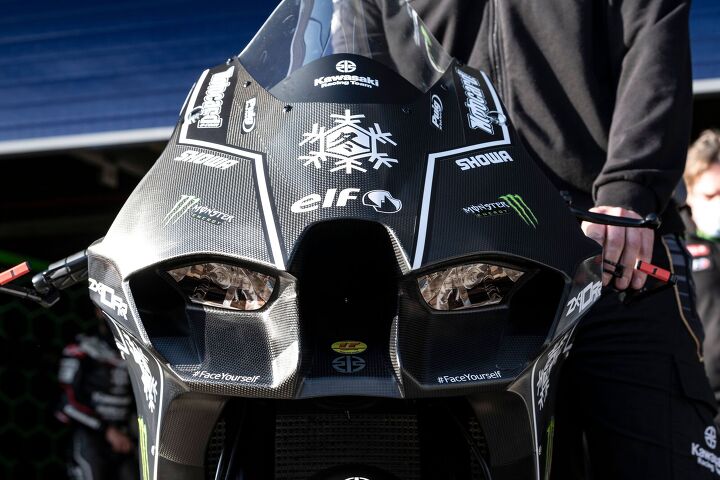
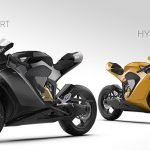


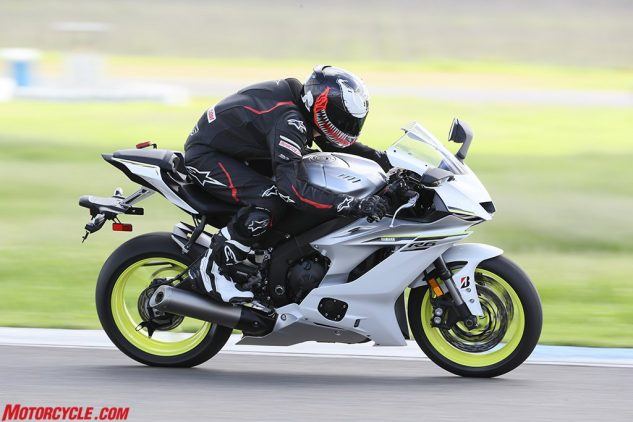
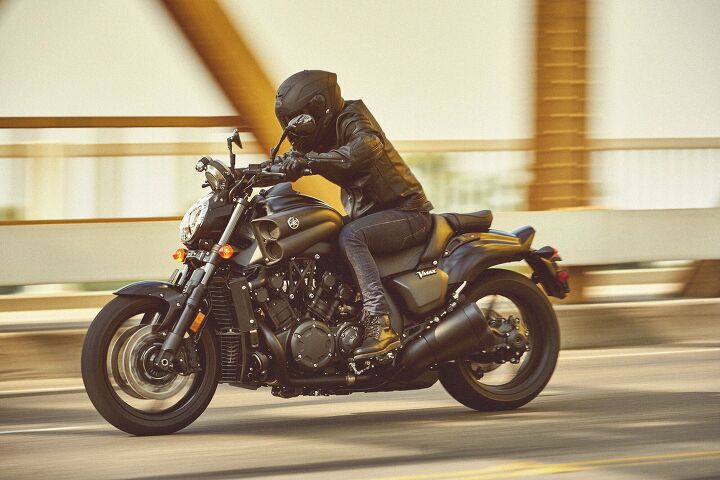
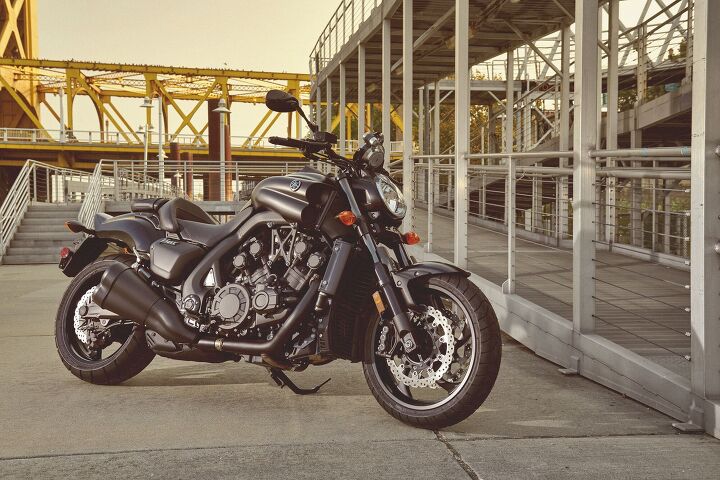
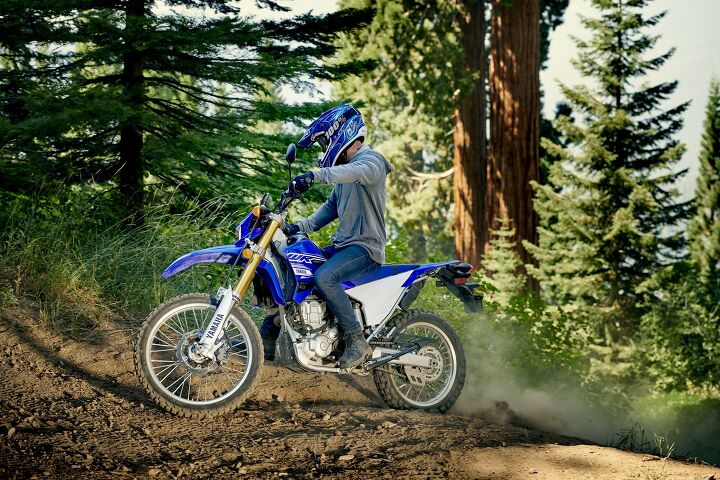
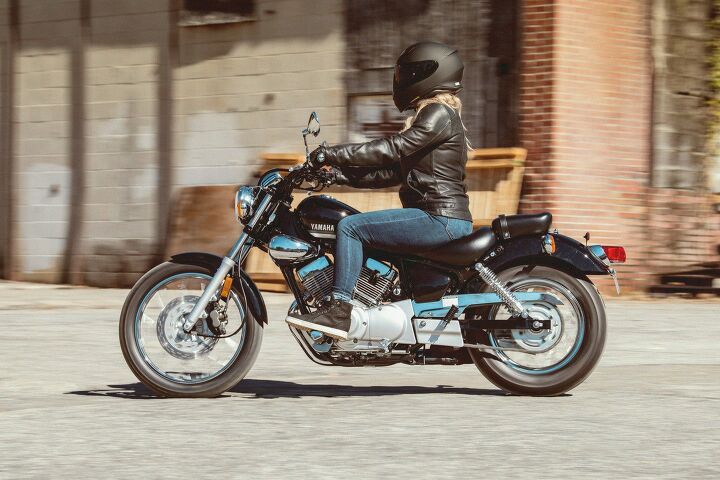
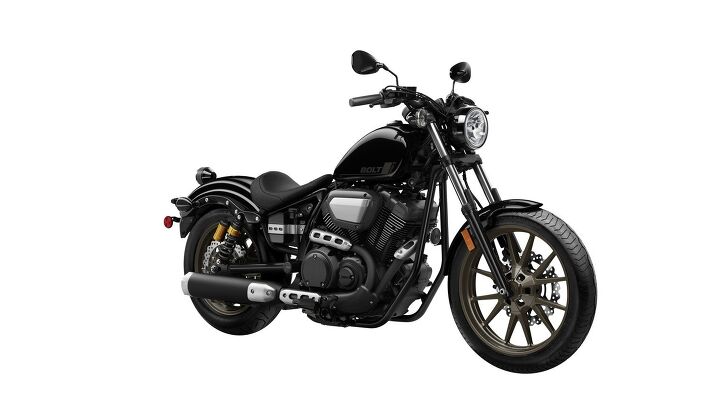

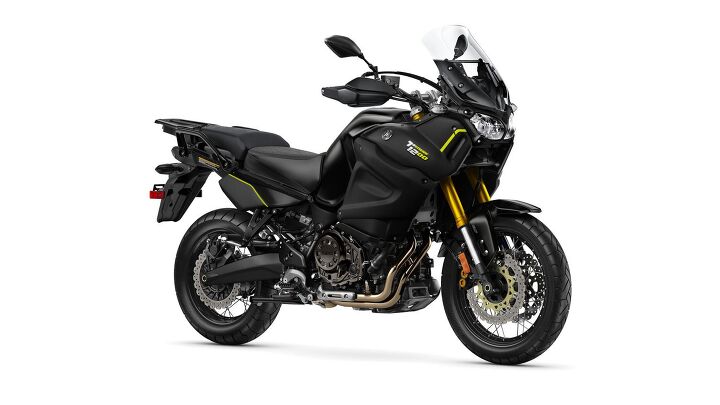
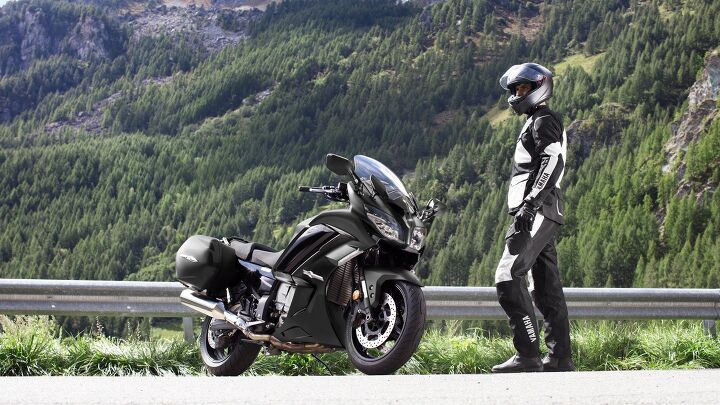
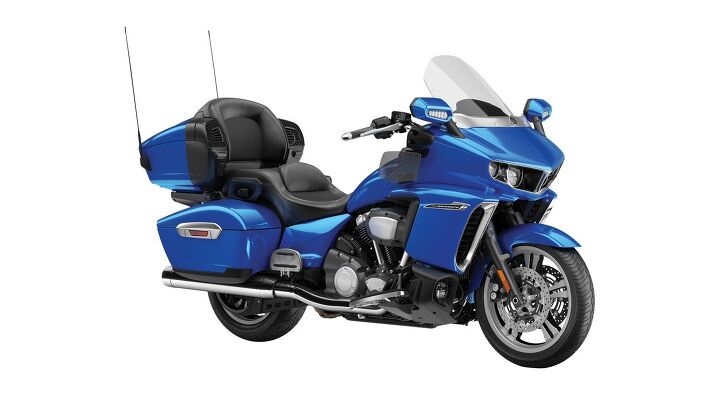
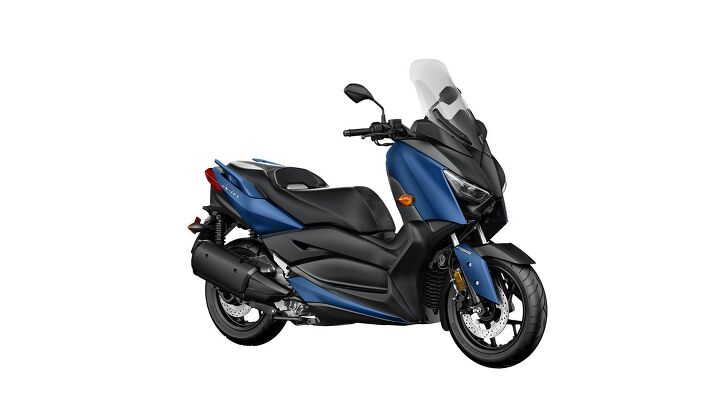
2021 BMW G 310 R First Look
in Motorbike news
Posted
BMW’s littlest “Dynamic Roadster” is a hoot; now the 34-horsepower thumper is even hootier and Euro-5 compliant, along with a bunch of other upgrades including an electromotive throttle controller and automatic idle speed increase, a new slip/assist clutch, new LED headlight and LED flashing turn indicators, adjustable brake and clutch levers, and a “softly reimagined” design in two attractive base colors with graphics options.
2021 BMW G 310 GS First Look
BMW Press Release:
Munich. With its powerful, dynamic single cylinder, the appearance in 2015 of the BMW G 310 R opened up the world of BMW Motorrad’s Dynamic Roadster for the capacity segment under 500 ccm. Quick and agile in the city, confident and powerful on the open road – as a result, the lively, purposeful Dynamic Roadster delighted many customers all over the world, especially newcomers. In order to sustain this going forward, BMW Motorrad has made the BMW G 310 R fit for the future and afforded it a range of enhancements.
Single-cylinder engine according to EU-5 homologation with automatic idle boost, electromotive throttle controller and
self-boosting anti-hopping clutch.
The heart of the new BMW G 310 R is still the reliable 313 ccm liquid-cooled single-cylinder engine with four valves, two overhead camshafts and electronic fuel injection. The cylinder inclination to the rear and the cylinder head rotated by 180 degrees with intake at the front and exhaust at the rear remain the design characteristics. This arrangement follows the logic of optimal combustion air ducting and results in a particularly compact vehicle architecture. With an output of 25 kW (34 HP) at 9 500 rpm and a maximum torque of 28 Nm at 7 500 rpm, the single-cylinder engine of the new BMW G 310 R is the ideal partner for dynamic Roadster pleasure, including in the current EU 5 homologation.
For use in the new BMW G 310 R, the engine has been equipped with a so-called “electronic throttle grip” (electromotive throttle controller) and now offers an even more sensitive throttle response. Automatic idle speed increase when starting also prevents a possible sudden stalling of the engine. The self-boosting anti-hopping clutch is also new. It reduces engine drag torque and provides a significant increase in driving safety – particularly during braking manoeuvres involving simultaneous downshifting. It also offers significantly reduced operating forces at the clutch lever.
New LED headlight and LED flashing turn indicators – seeing and being seen optimally.
Whereas the BMW G 310 R was already equipped with brake lights in LED technology, the new BMW G 310 R now has a full-LED headlight for even better visibility at night and LED flashing turn indicators for increased visibility in traffic. The new LED headlight ensures particularly bright and homogeneous illumination of the road. The three light functions high beam, low beam and – depending on the country – daytime driving light can be conveniently operated using the left handlebar controls.
Hand lever adjustable in four stages for brake and clutch.
Both, the clutch lever and the handbrake lever are now adjustable in four stages. It thus now provides ergonomic benefits – particularly for people with small hands. Stage 3 of the brake lever adjustment corresponds to the grip width until now. In the 1st position the brake lever is 6 mm closer to the handlebar.
Softly reimagined design with two attractive base colours and the exclusive “Sport” style option.
Dynamics and agility are also reflected in the design of the new BMW G 310 R. Here the visual similarity to sporty family members like the BMW S 1000 R is unmistakeable. This is also reflected in the colour scheme of the Dynamic Roadster. What all three colour options of the BMW G 310 R have in common are the engine housing covers for the alternator, clutch and coolant pump as well as footrest plate and rear grab handle, now painted in Titanium Grey Metallic.
Besides the base colour, Cosmic Black, and accentuated masculine touch, another base colour option, Polar White, is now available, which together with blue painted accents represents the traditional BMW corporate colours in a fresh, dynamic way. In Sport style with the base colour, Limestone Metallic, eye-catching red “R” graphic on the fairing side panels and red frame and wheels, the new BMW G 310 R confidently reveals its sporty side.
The post 2021 BMW G 310 R First Look appeared first on Motorcycle.com.
http://feeds.feedburner.com/~r/Motorcyclefeed/~4/BDz_4f6CIfUView the full article